- United Kingdom
- Ethiopia Travel
- Ethiopia Guide
- Ultimate Travel Guide


Ethiopia Travel Guide
Ethiopia is an emerging tourist destination. To make the most of your time in the country, it's important to understand what to expect, and how to best prepare for your journey across this beautiful, but unpredictable country.
Taking a break, Community Trekking in Tigray.
Omo Valley Traditional Dance.
The view on the approach walk to Blue Nile Falls
Buffalo Herd in Gambella National Park.
Sankaber campsite in the Simien Mountains
Imet Gogo is a stunning viewpoint in the Simiens.
Taking a break to admire the view.
An armed scout must accompany you in the Simiens.
Lalibela market days
Body paint of the Omo Valley.
Breakfast at Mequat Mariam, Community Trekking.
The rainbow mist of the Blue Nile Falls
Karo Tribe in the Omo Valley.
Contents of our guide
- Major travel regions of Ethiopia
Map of Ethiopia
- Best travel routes in Ethiopia
- Where to start your journey
- Our top landmarks and places to visit
Things to do in Ethiopia
Places to visit in ethiopia.
- How long to spend in Ethiopia
- Accommodation options in Ethiopia
When to visit Ethiopia
Costs of travelling to ethiopia.
- Guiding options in Ethiopia
Safety in Ethiopia
- Types of tours to Ethiopia
At the end, we have an FAQ section . This includes questions about:
- Visas, money, photos & video, daily expenditures, what to bring, mobile & communications, vaccinations, Ethiopian cuisine, guidance on tipping, dress code
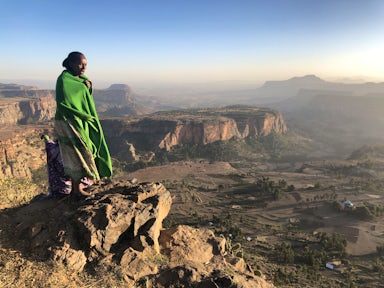
Major Travel Regions of Ethiopia
There are 4 major travel regions in Ethiopia:
- The Northern Circuit
- The Rift Valley
- The Omo Valley
- The Dankil Depression
Beyond these easy-to-define regions, there are a number of other popular travel destinations, these include the Bale Mountains National Park , Harar , Gambella National Park , and the Gheralta Mountains (which are sometimes included in the northern circuit).
We've broken down the major travel regions further on our Map of Ethiopia page .
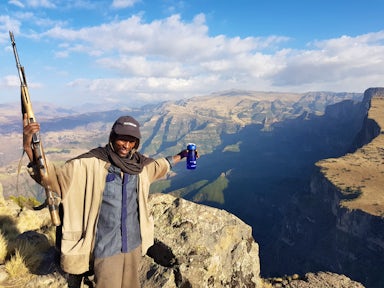
Best routes to take in Ethiopia
Which route you take around the country will depend entirely on:
- How much time you have available
- What your budget is
- Which destinations are most important to you
Typical Routes in Northern Ethiopia
A typical route is a 12-day northern circuit , which starts in Addis Ababa and loops clockwise around northern Ethiopia, finishing back in Addis.
The major destinations on the northern circuit are: Bahir Dar , Gonder , Simien Mountains , Axum , Lalibela , and the Gheralta Mountains .
Additional destinations you can include on a northern circuit include the Danakil Depression , community trekking , and Harar .
Typical Routes in Southern Ethiopia
The main destinations in the south of Ethiopia are the Bale Mountains National Park , the Rift Valley , and the Omo Valley . Which route you take will depend on which of these destinations, or which combinations of these destinations, you plan to visit.
It should be noted that travelling in the south of Ethiopia is much harder than travelling in the north. The infrastructure in the south is much less developed, and the access routes are fewer and less well maintained.
How to plan a trip
Given the diversity of experiences available in Ethiopia, the distances between destinations, and the difficulty of travelling using public transport, it's worth taking the time to understand your options so you end up with the best possible itinerary for you.
We've spent years travelling around Ethiopia, have partnerships with the very best local guides, drivers, and tour operators, and have helped hundreds of travellers explore this incredible country . Get in touch with us to start your journey.

Brilliant says
Ethiopia is wonderful, chaotic, and incredibly beautiful. However, it is an emerging tourist destination, and everyone on the ground is still learning. It is important to pack a sense of humour in unpredictable Ethiopia!
Where do I start? Where do I fly into?
Unless you are doing overland travel and coming in from a neighbouring country, you will arrive via international flight into Bole International Airport in the capital city, Addis Ababa .
Most international flights are overnight and arrive in the early morning in Addis (typically 6-7am). From here, you will clear immigration, collect your visa (more on that below) and head out to meet your driver in the car park .
Note that drivers are not allowed inside the airport terminal, so you will have to go outside to meet them. This can be a tricky affair , but airport staff are always on hand to help you and if you've booked with us, you will have key contacts who you can call if you need help.
Most people spend the first day in Addis, using the morning to relax and freshen up after the overnight flight, and then heading out to explore some of the city in the afternoon.
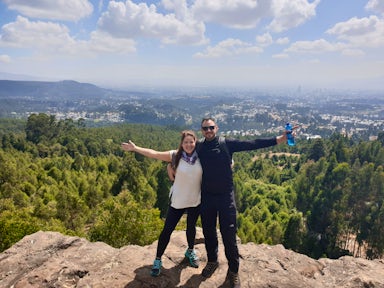
Landmarks in Ethiopia
What are the must-see places in ethiopia.
We've compiled a list of some of our all-time favourite places, landmarks, lodges, wildlife, and restaurants in Ethiopia. Of course, we couldn't include everything, but if you're planning a trip, here are some amazing places you should consider visiting.
In the north
- Church of Saint George , Lalibela
- Ras Dashen , Simien Mountains
- Limalimo Lodge , Simien Mountains
- Fasil Ghebbi , Gonder
- Lake Tana and the Blue Nile Falls , Bahir Dar
- Gelada Monkeys , Simien Mountains
- Erta Ale and Dallol , Danakil Depression
- Abuna Yemata Guh , Gheralta Mountains
- Ben Abeba Restaurant , Lalibela
- Korkor Lodge , Gheralta Mountains
- Obelisk of Axum , Axum
- Hyena Man , Harar
In the South
- Ethiopian Wolf , Bale Mountains
- Bale Mountain Lodge , Bale Mountains
- Tribes of the Omo Valley , Omo Valley

Whether it's trekking in the mountains, exploring the volcanic landscapes, seeing the wildlife, or soaking up the culture and history of this country, there is no shortage of incredible experiences on offer in Ethiopia.
Any page we write can only scratch the surface of the wealth of opportunities in Ethiopia, but to give you an introduction into what's on offer, and hopefully inspire your next adventure, you can check out our guide to the top 10 things to do in Ethiopia .
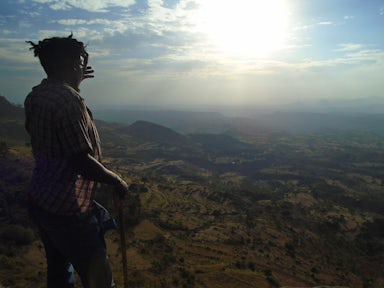
Admiring the view en route to Erar, Community Trekking.
A land of infinite variety, there's something for everyone in Ethiopia. Whether you're an adventurer, a honeymooner, a family looking for a break, a solo traveller, or a group of friends looking for a once-in-a-lifetime holiday, Ethiopia will surprise, delight, and inspire.
Here's our rundown on the best places to visit in Ethiopia.
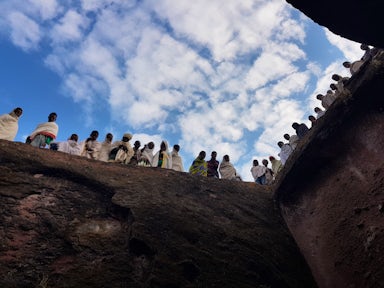
How long to spend in Ethiopia?
A typical trip to the north of Ethiopia is 10-12 days . In that time, you can visit many of the towns and national parks in the north. 10 days is the minimum time required if you want to explore all the destinations on the northern circuit.
With 12-15 days, you can also include the Danakil Depression and community trekking (our personal favourite thing to do in the country).
If you want to include the north and south, you will need around two weeks , although this depends on how many destinations you visit in the north. You will need at minimum of 4 days to explore the Omo Valley .
At Brilliant, most of what we do is build tailor-made trips , and we very rarely run the same trip twice. So no matter your budget, interests, or appetite for adventure, we can help create an itinerary that's perfect for you.
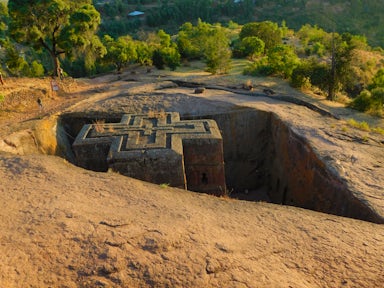
Accommodation Options in Ethiopia
Accommodation options in Ethiopia can fall short of international expectations (you can read more about this on our expectations guide here ).
However, there are an increasing number of excellent lodges , and the major destinations have enough options to keep most travellers happy.
We've written a guide on accommodation options in Ethiopia , as well as the best lodges in Ethiopia and the luxury options available .
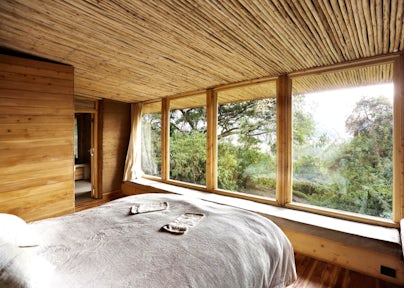
Cosy, cabin-esque rooms at Limalimo Lodge
The best time to visit Ethiopia is between October and March . The country experiences a rainy season from June to September , although travelling during these months is still possible.
We've written an entire guide on when to visit Ethiopia .

A short walk takes you to the top of the falls
The cost of your trip to Ethiopia will depend on 4 key factors:
- The length of your trip
- Your group size (solo travel is significantly more expensive)
- The accommodation preferences
- Whether you use local guides or professional guides
For more information, check out our guide explaining the travel costs in Ethiopia .
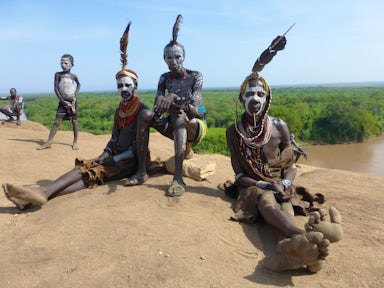
Guiding in Ethiopia
There are two options for guiding in Ethiopia. The first is to use local guides in each of the regions you visit. Local guides are usually very friendly, and well-versed in the local myths and legends , but often do not have the same expertise when it comes to the facts and historical accuracy the destinations.
For some, this is part of the joy of travelling around a region, but others it can be a frustration.
If you opt for local guides, you will have different guides in each of the regions you visit. For example, once you arrive in Addis, you will be picked up at the airport by a local driver and taken to your hotel. A local guide will then meet you at the hotel and take you on a city tour of the capital. Once it's time to continue your journey, for example if you're heading up to Bahir Dar, a driver will take you to the airport in Addis and another driver will pick you up from the airport in Bahir Dar. Here, you will be met by another local guide who will look after you in Bahir Dar, and so on!
Our expectations guide talks more about what you can expect from local guides in Ethiopia.
If you'd prefer a little more continuity, or if you value guides with high levels of accurate knowledge , you can opt for a professional escort guide to travel with you around the country. These guides have excellent English and usually have formal training in tourism.
A professional escort guide does of course add to the trip cost, but it can be well worth it for some travellers.
Ethiopia is, generally, a very safe country to travel around.
Addis Ababa is one of the safest African cities, and as long as you exercise common sense, it is unlikely you will have any problems with safety while travelling in Ethiopia.
We've written a guide on safety in Ethiopia if you want to learn more.
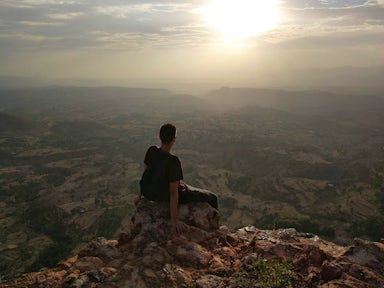
Types of Tours to Ethiopia
With so many options for incredible tours in Ethiopia , it can be hard to know where to start, and how to plan the perfect adventure. Fortunately, our specialists have decades of experience in East Africa and know Ethiopia extraordinarily well, so get in touch with us to start your journey.
There are many ways to slice and dice itineraries to Ethiopia, but to help get you started, here are some of the trips possible here:
- Adventure Tours
- Cultural Tours
- Wildlife Tours
- Luxury Tours
- Coffee Tours
- Safaris in Ethiopia
- Private Tours
- Tailor-made Tours
Of course, these aren't mutually exclusive, and a single itinerary could be considered a blend of all the above!

Ethiopia Travel FAQs
How do i get a visa for travel to ethiopia.
All foreign nationals require a visa to enter Ethiopia. Fortunately, the process is very straightforward. You have two options for securing a visa, you can pay online in advance through the online evisa service , or you can obtain a visa on arrival at Bole International Airport.
If you use the online service, you will still collect your visa at the airport on arrival but you can skip the payment queue (which is welcome after a long overnight flight!) If you are paying on arrival, note that you cannot pay in Ethiopia
n Birr or card payment. You will need to pay in cash in either GBP, USD, or EUR. The price for a visa is around 50 USD for a standard 30 day visa. To secure a visa, your passport will need to be valid for at least the next 6 months from the point of arrival in Ethiopia.
If you need to extend your visa, you can do this at the Immigration Headquarters on Churchill Avenue in Addis. For multiple entry visas, or if you are visiting on business, you need to contact the Ethiopian embassy in your home country, as these cannot be obtained online or on arrival.
Can I bring foreign currency to Ethiopia?
It is fine to bring in foreign currency, but if you are carrying more than 3000 USD equivalent, you will need to declare this. Generally there is no reason to bring huge wads of cash with you, as there are ATMs all over Addis and in all the major towns in the north and south. You are only allowed to import or export a maximum of 200 Ethiopian Birr.
Am I allowed to bring my professional camera to Ethiopia?
Ethiopia is very photogenic, so you’ll want to bring a good camera with you to take the best snaps of your adventure. If you are planning on bringing a professional camera, you will need a permit. We can help you arrange this. There are no clear guidelines indicating which kinds of camera require permits, and handheld cameras are usually never questioned, but as a general rule - the bigger the camera, the more likely you’ll need a permit.
How much money should I bring?
The local currency is Ethiopian Birr. In many of the built up cities, you can pay by card but you should not rely on this. If you’re going anywhere remotely out of cities, you should have cash to hand. Even in Addis Ababa, many establishments won’t accept card payments, or internet connectivity issues could mean they can’t accept it at the time.
ATMs can be found in most built up areas, so you don’t need to bring lots of cash with you into the country. It’s also now wise to walk around with huge sums of money withdrawn from Addis to last for your whole trip, so the best thing to do is plan ahead based on where you are going and for how long. Your guides can help you with this, but withdrawals are typically limited to 4000 Birr (~120 USD) anyway so you will need to top up throughout your trip.
Note: your guides won’t mind being tipped in a foreign currency, so consider this when determining birr withdrawal amounts.
How much will I spend on daily expenditures?
We advise carrying enough small notes (10 birr notes are very handy) for small payments and tipping. If you’re travelling to the Omo Valley, you’ll need enough 5 or 10 birr notes to pay for photographs. Daily expenditure will depend on personal preferences and requirements, and of course what is included in your tour with us. 500-800 birr (20-30 USD) per day is a good ball park to help you budget, and this will cover lunches, dinners, drinks and small personal spending. It does not include breakfast, excursions, entrance fees etc. which will typically be included in your tour price.
What should I bring when travelling to Ethiopia?
Much of Ethiopia is highland, which means temperatures are much milder than many countries in East Africa. Addis Ababa itself sits above 2000 metres, so you’ll be acclimatising the moment you step off the plane!
Given the diversity of climate from region to region in Ethiopia, you need to pack for the full spectrum of weather conditions (depending on where you are going, of course). In the Danakil Depression, temperatures will be approaching 40°C, whereas in the heights of the Simien Mountains at night, temperatures can fall to below freezing.
In general, daytime temperatures will range from 15°C to 25°C - so pack light clothes with a jacket/coat for the evenings.
Most hotels offer a laundry service, so you don’t need to bring too much! Remember, Ethiopians are conservative dressers so please respect this and dress to cover at least your knees and shoulders. Our trekking in the Simien Mountains page contains a full kit list for hiking in Ethiopia.
Will I get mobile data in Ethiopia? Can I get a local SIM?
The internet in Ethiopia is intermittent, and internet outages are frequent (either voluntarily during protests/civil unrest or involuntarily due to infrastructure).
Most hotels in built up areas will offer internet which is generally reliable. Ethiopia has just one telecom provider, the state-owned Ethio Telecom. The mobile data coverage is surprisingly good.
You will need to purchase a SIM card on arrival in Addis, and unfortunately it is not a simple process! Your guide will help you organise this, but essentially you will need to get a SIM card cut for your phone and they’ll take your passport details and a photo in the shop. It costs around 50 Birr (~2 USD). There are mobile data bundles available, depending on how much data you plan to use.
What vaccinations do I need? Are there any medical pre-requisites?
It is important that you consult your GB or travel health nurse before visiting Ethiopia. Which vaccinations you will require, and specific advice pertaining to your safety while in the country will depend on your medical history and current health.
Thanks to Ethiopia’s high altitude, malaria is absent in much of the country. Most areas above 2000 metres are reportedly malaria free. That said, we still recommend taking anti-malarials as the disease is still present in low lying areas of the country.
A Yellow Fever vaccination certificate used to be required, but is no longer required at the time of writing, but it might be if you are coming from a country where the disease is present.
A cholera vaccination is required if you have a visited a cholera infected area within 6 days of arriving in Ethiopia.
It’s a good idea to bring a simple first aid kit with you, and you must bring any medicines you require with you, as local pharmacies have limited stocks. It’s extremely important that you take our comprehensive travel insurance when visiting Ethiopia.
What is the food like in Ethiopia?
The mainstay for Ethiopian cuisines is injera topped with all sorts of sauces, meats (vegetarian options available as well), and spices. You will usually be eating with your hands when eating injera, and you should take care to only eat with your right hand. Placing food in your mouth with your left hand is considered rude.
You’ll also likely encounter a gursha, a tradition in Ethiopia where your host will feed you a piece of the meal - this should always be accepted! Ethiopian food is great, but if it’s your first time in the country and you are spending a number of weeks here, you should strike a balance between local cuisine and international foods that you are more accustomed to. We speak from experience...
You can learn more on Ethiopian cuisine page .
Is there a general dress code for travelling in Ethiopia?
Ethiopians are conservative dressers, so you should take care to respect this and dress accordingly. Clothing should cover the knees and shoulders. Of course, allowances are made in certain parts of the country (e.g. the Danakil Depression) where the searing heat demands shorts!
What guidance on tipping?
Tipping is vitally important in Ethiopia and is somewhat of a cultural expectation. While tipping is hugely appreciated by the local staff and we recommend tipping generously where you can, it can be difficult social terrain. We hope the below advice can help you avoid any awkward/uncomfortable situations.
The social awkwardness is often worse regarding the amount of the tip rather than whether or not to tip at all (as most travellers will provide some amount of tip). One approach that we have found works well is to decide beforehand how much you want to tip, then take out and fold up the notes and place them firmly in your guide/drivers hands, thank them for their help/services and then move on.
You don't want to be in a position where you are being watched as you take out notes one by one deciding when to stop. As a general guide, we recommend tipping 10 USD per day for guides, and 5 USD per day for drivers/support staff (drivers, cooks etc.).
People do often tip much higher than this but it comes down to your budget, so our suggestion would be to start at 10 USD/day and go up/down from there depending on the quality of service and your budget. It can be tricky but it's important to feel like you're tipping what you feel is deserved whilst sticking to your budget!
Responsible tourism is woven into the values of Brilliant Ethiopia. It’s impossible to separate what we do from why we do it. We don’t just want to reduce the negative impacts of tourism on the country, but we want to actively increase the positive impacts that tourism can have on the local communities and businesses. As a traveller and guest in this incredible country, it is your responsibility to take the time to understand that nuances of the Ethiopian way of life, and to respect their customs and traditions.
Ready to Explore Ethiopia?
Historic north and luxury lodges.
Experience Ethiopia's northern circuit in style. Explore the incredible highland scenery, visit ancient monuments, discover unique cultural traditions, and break up your journey at luxury lodges set amongst incredible backdrops.…
Historic North Circuit
Explore the Simien Mountains from a luxury lodge perched high in the escarpment, discover the architectural remains of ancient civilisations, and watch the sun set over the sandstone cliffs of Tigray. The Historic North Circuit is a flagship itinerary in…
Historic North Circuit and Community Trekking
Fusing history, culture, landscapes and wildlife along a perfectly paced circuit, this trip is a synthesis of the very best experiences on offer in Ethiopia’s northern highlands. Explorations of the ancient cities Axum, Gondar, Bahir Dar and Lalibela are broken…
Historic Towns of Ethiopia
Every city in Ethiopia has a story to tell. In under 10 days, discover some of Ethiopia's most important towns, each different from the last in so many ways.…
Community Trekking in Ethiopia
Our community trekking routes are among our favourite experiences in Ethiopia. Offering a unique insight into rural Ethiopia through trails off-the-beaten-track, we're yet to find anyone who isn't blown away by the beauty of the rolling hills of Lalibela, the…
Simien Mountains and Northern History
This trip packs in a myriad of history, culture and some of the best scenery in Africa. Explore the palaces of Gondar, the world-famous rock-hewn churches in Lalibela, and the sweeping plateaus of the Simien Mountains. Leave enough time either…
Highlights of the North and South
The classic northern trail extends south into the Omo Valley, passing through the Rift Valley Lakes and highland peaks of the Bale Mountains. A once in a lifetime adventure combining the very best that Ethiopia has to offer.…
Northern Highlights
This classic route is perfect if you're looking for an introduction to Ethiopia, but don't have a lot of time. The focus is on the historic cities, monuments, and culture of northern Ethiopia, with plenty of wildlife and vistas along…
Bale Mountains Safari
Hike across electric landscapes of thick forests, Afro-alpine moorland, peaks and plateaus, and jungle thickets. An extraordinary outdoor adventure, with high altitude hikes unlocking staggering viewpoints, beautiful clearings, and endemic wildlife. At night, the sky is ablaze with starlight in…
Peaks and Plateaus of Ethiopia
Community trekking in Wollo and Tigray and hiking through the Simien Mountains National Park highlight the staggering natural beauty of Ethiopia. Tours of the ancient cities of Bahir Dar, Lalibela, Gondar and Axum play supporting roles.…
Community Trekking and the Danakil Depression
A true adventure across the northernmost reaches of Ethiopia. Experience community trekking on the plateaus of Tigray, where horizons stretch for miles, distant mountain peaks morph into hazy silhouettes lit by the evening sun, and pockets of light and shadow…
2 Day Simien Trek
An introduction to the Simien Mountains, this 2 day trek takes you to some of the major viewpoints of the primary escarpment, with one night spent camping at the beautiful Gich campsite.…
3 Day Simien Trek
This 3 day Simien Trek is the perfect introduction to the national park. Enough time to hike to all the major viewpoints, see the wildlife, and enjoy the beauty of these highlands.…
4 Day Simien Trek
This 4 day trek in the Simien Mountains starts and ends in Gondar. Hike from camp to camp, across the sweeping plateaus and down into the valleys.…
6 Day Simien Trek
6 days trekking in the Simien Mountains, across the vast plateaus and down into the valleys to discover some of the most exciting regions of the park. A proper wilderness escape.…
Camping in the Simien Mountains
The classic 3-night camping circuit in the Simien Mountains. This trip is usually included as part of a wider itinerary in the country.…
Classic Simiens Safari
The Simien Mountains are one of Ethiopia’s most stunning destinations. With its diverse flora and fauna, immense views and extraordinary geography, it’s an exceptional place that can be enjoyed by hardy trekkers and afternoon strollers alike. A couple of nights…
Trekking in the Simien Mountains
Discover the beauty of the Simien Mountains with this one week trekking adventure. Our Brilliant local guides know all the hidden gems to get the most out of your time on the 'Roof of Africa'. Easy to incorporate into a…
Explore the Roof of Africa
Experience the breathtaking Simien Mountains National Park on this in-depth tour of the ‘Roof of Africa’. Trek to peaks breaching 4,000 meters, experience the panoramic vistas, cross the rivers that flow into the lowlands and get up close with endemic…
Cultural and Natural South
Combining the best that Ethiopia has to offer south of Addis Ababa, this two-week odyssey takes you to the farthest corners of the Omo Valley, through the verdant forests of the Bale Mountains, and across the lakes of the Great…
Christmas in Lalibela
Ethiopian Christmas in Lalibela is one of the most memorable experiences anywhere in Africa. Thousands of pilgrims, draped in white gowns, gather around the 13th century rock-hewn churches for an evening of celebration, reflection, and reverence.…
Rift Valley Road Trip
Great for wildlife and hiking enthusiasts, this 4-day adventure into the Bale Mountains works great as a standalone itinerary, or as and add-on to a wider tour of the south.…
Rift Valley and Bale Mountains
Meander through the stunning Rift Valley Lakes, staying at boutique lakeside lodges as you make your way towards the Bale Mountains National Park.…
Birds of the Rift Valley and Southern Highlands
Discover the extraordinary bird life in Ethiopia that includes dozens of endemic species. Explore the national parks, rift valley lakes, and highland peaks and valleys that make Ethiopia a world-class birding destination. Boutique and eco lodges place you in the…
Two Days in the Danakil Depression
Join a group of like-minded explorers and drive into the Danakil Depression in convoy. One of the most geologically fascinating destinations on the planet, the Danakil Depression is renowned as the hottest place on Earth. Discover the kaleidoscopic landscape of…
Volcanic Explorer
The Danakil Depression is one of the hottest, lowest, and driest places on the planet. In the northernmost pocket of Ethiopia, it is home to salt lakes, lava lakes, volcanoes and neon acid springs. The remoteness of the Danakil combined…
Danakil Day Trip
For those wanting just a brief introduction to the alien landscape of the Danakil Depression, it is possible to take a day trip from the base town of Mekele. Be prepared for a lot of time in a…
Discover Lalibela
Any trip to northern Ethiopia is incomplete without a visit to Lalibela. Its rock-hewn churches, stunning landscapes, and amazing restaurants make it a must-see in the country. To this day, Lalibela remains the living, beating heart of spiritual…
Danakil Depression and Gheralta Mountains
Journey north and discover the alien landscapes of Dallol, the bubbling lava lakes of Erta Ale, and watch the sun go down over Lake Afrera. Combine this with a visit to the rock churches of Gheralta.…
Omo Valley Adventure
Immerse yourself in the traditions and culture of the Lower Omo Valley. Meet some of the 88 tribes in the region and discover their way of life. The Omo has been a cultural crossroads for millennia, and our expert local…
Ready to plan your Ethiopia adventure?
We'll spend some time listening to your aspirations, then discuss the kind of experience that might suit you.
Next we'll discuss the options, shortlist the best trips for you and present you our impartial recommendations.
We'll place a 24 hour hold on your preferred option - without obligation - whilst we talk through the details.
Whatever your budget, group size, length of stay, preferred activity or appetite for adventure, we can help.
This website uses cookies to ensure you get the best experience on our website. Privacy policy
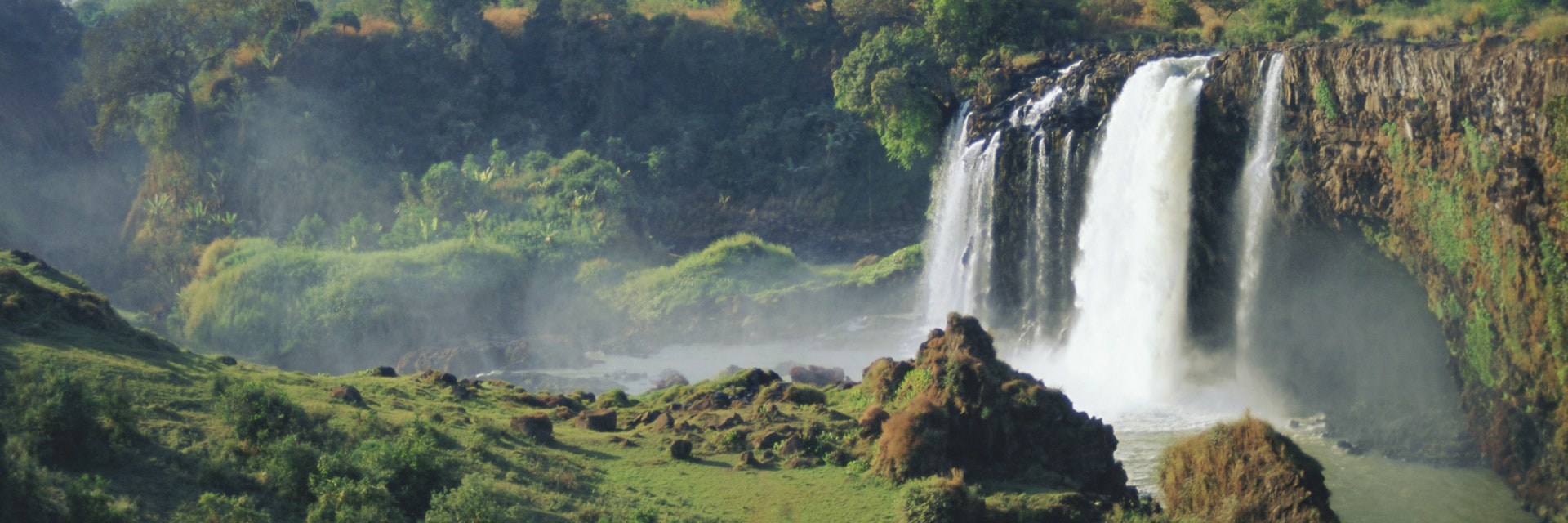
Getty Images/Robert Harding World Imagery
Ethiopia is like nowhere else on the planet, a beautiful country blessed with a peerless history, fabulous wildlife and some of Africa's most soulful peoples.
Attractions
Must-see attractions.
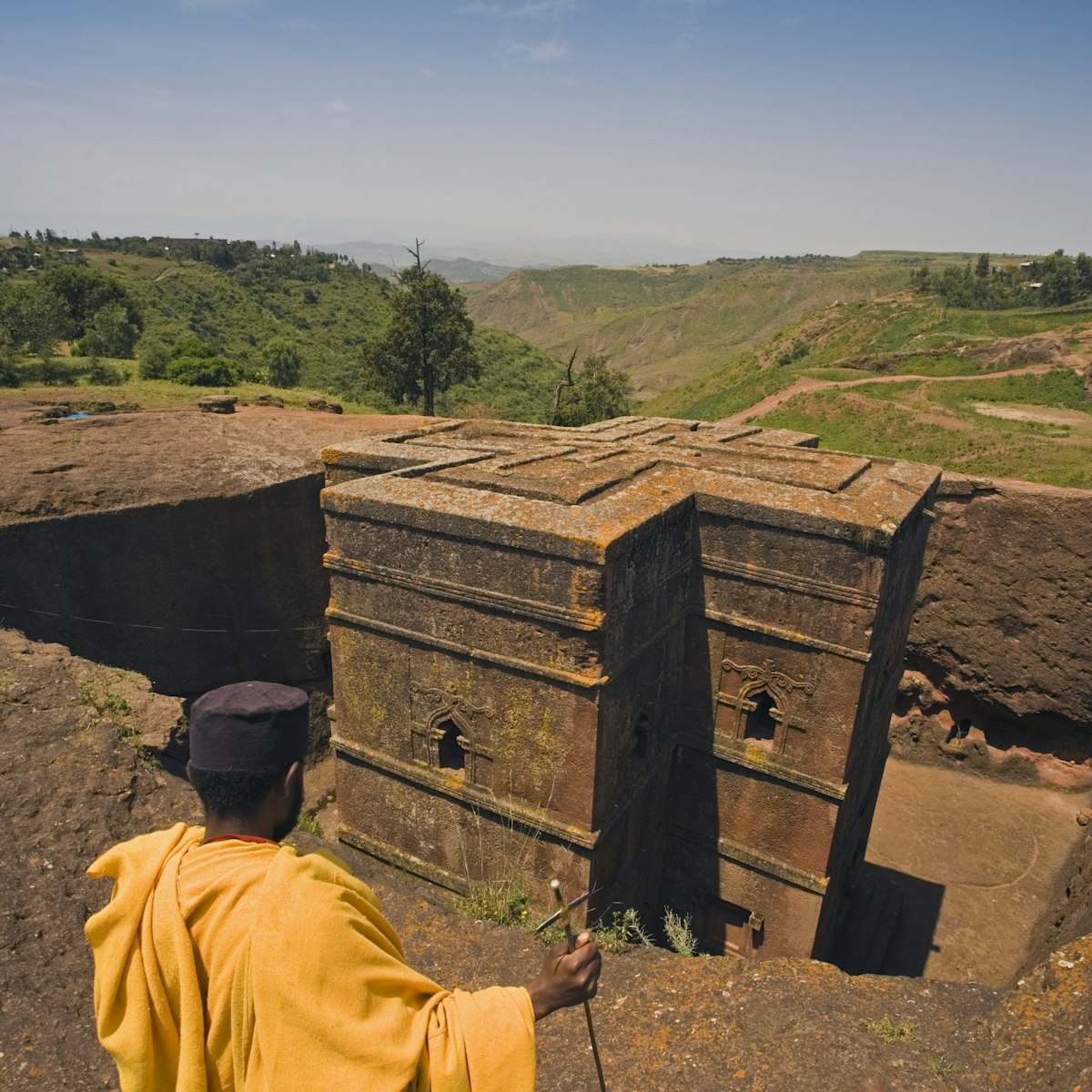
Bet Giyorgis
When you think of Lalibela, you're thinking of Bet Giyorgis. Resting off on its own, St George’s Church is Lalibela’s masterpiece. Representing the apogee…
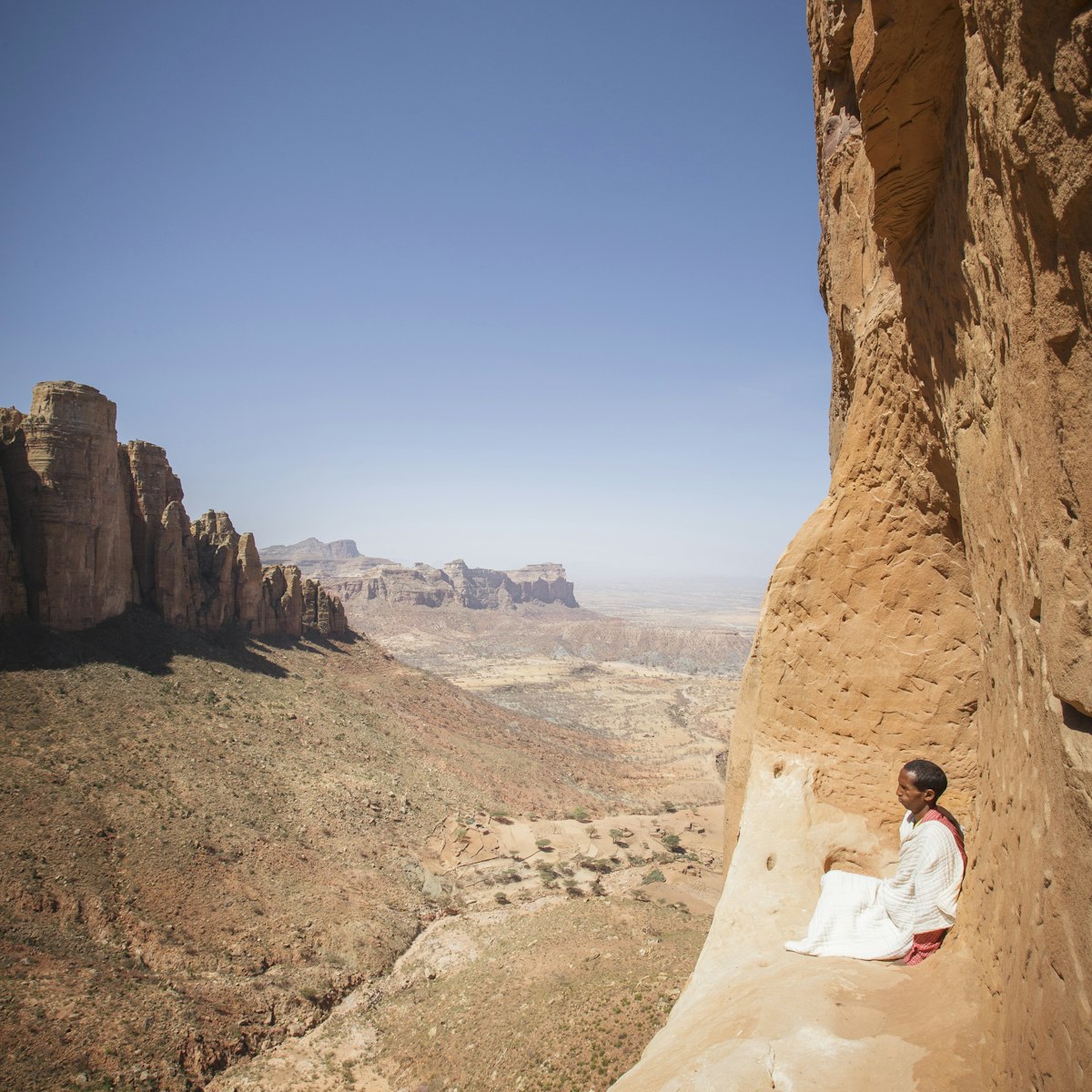
Abuna Yemata Guh
Rock-hewn Churches of Tigray
There's nowhere on earth quite like Abuna Yemata Guh. Although less impressive architecturally than most, the church is spectacularly sited within a cliff…

Simien Mountains National Park
Northern Ethiopia
No matter how you look at it, the Unesco World Heritage–listed Simien Mountains National Park is one of Africa’s most beautiful ranges. This massive…
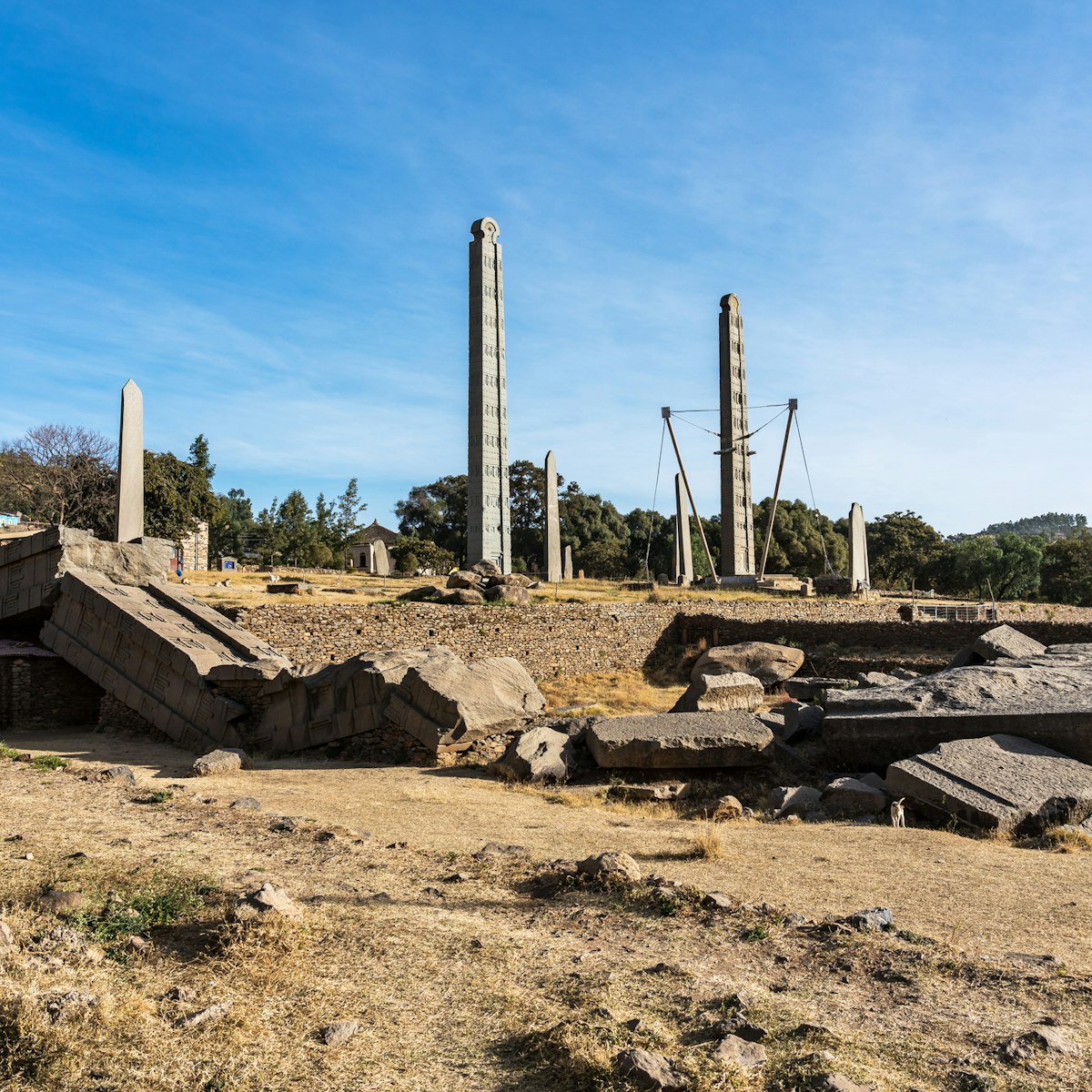
Northern Stelae Field
Despite the dizzying grandeur of the numerous rock needles reaching for the stars, it’s what’s under your feet here that’s most important. Amazingly,…
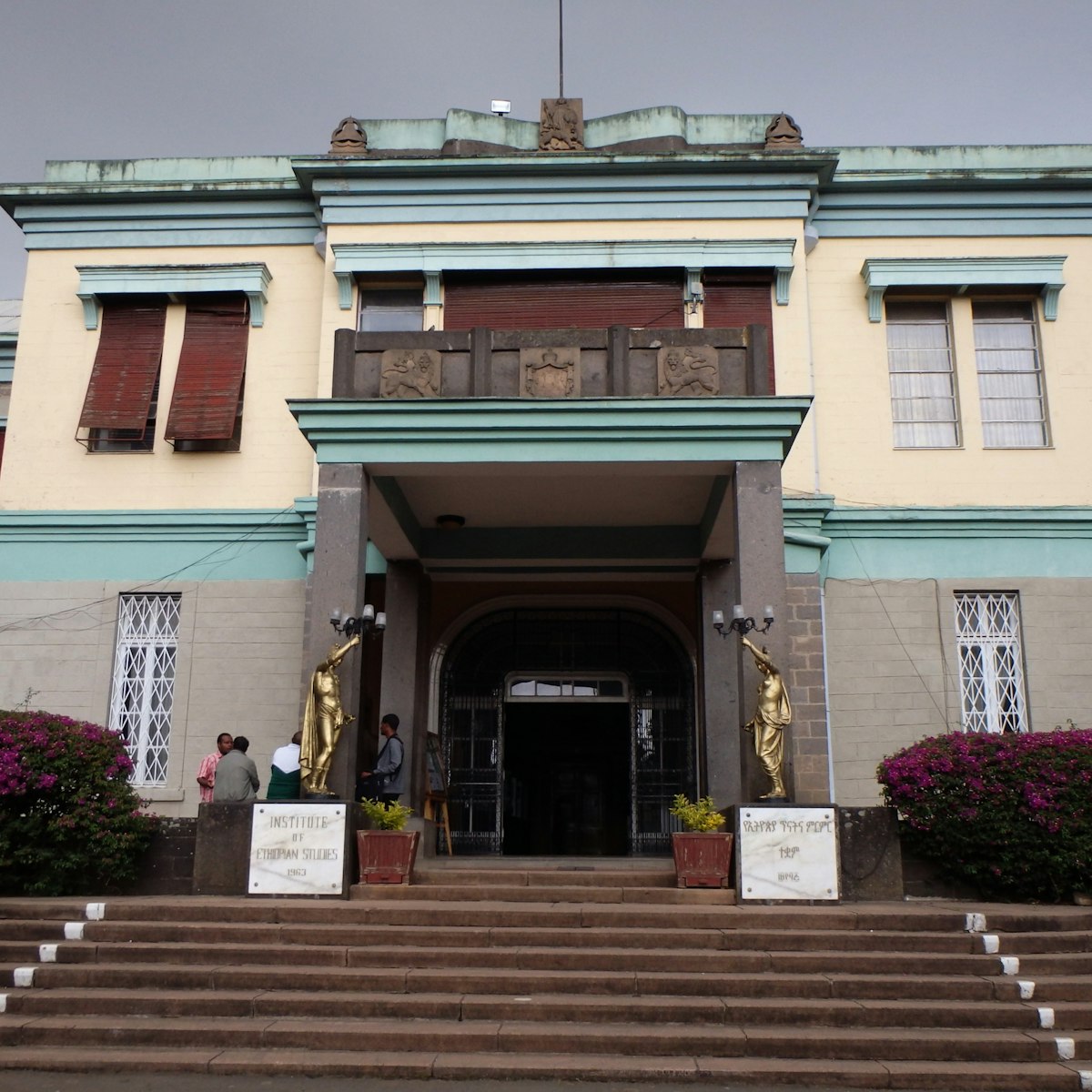
Ethnological Museum
Addis Ababa
Set within Haile Selassie’s former palace, and surrounded by the beautiful gardens and fountains of the university’s main campus, is the enthralling…
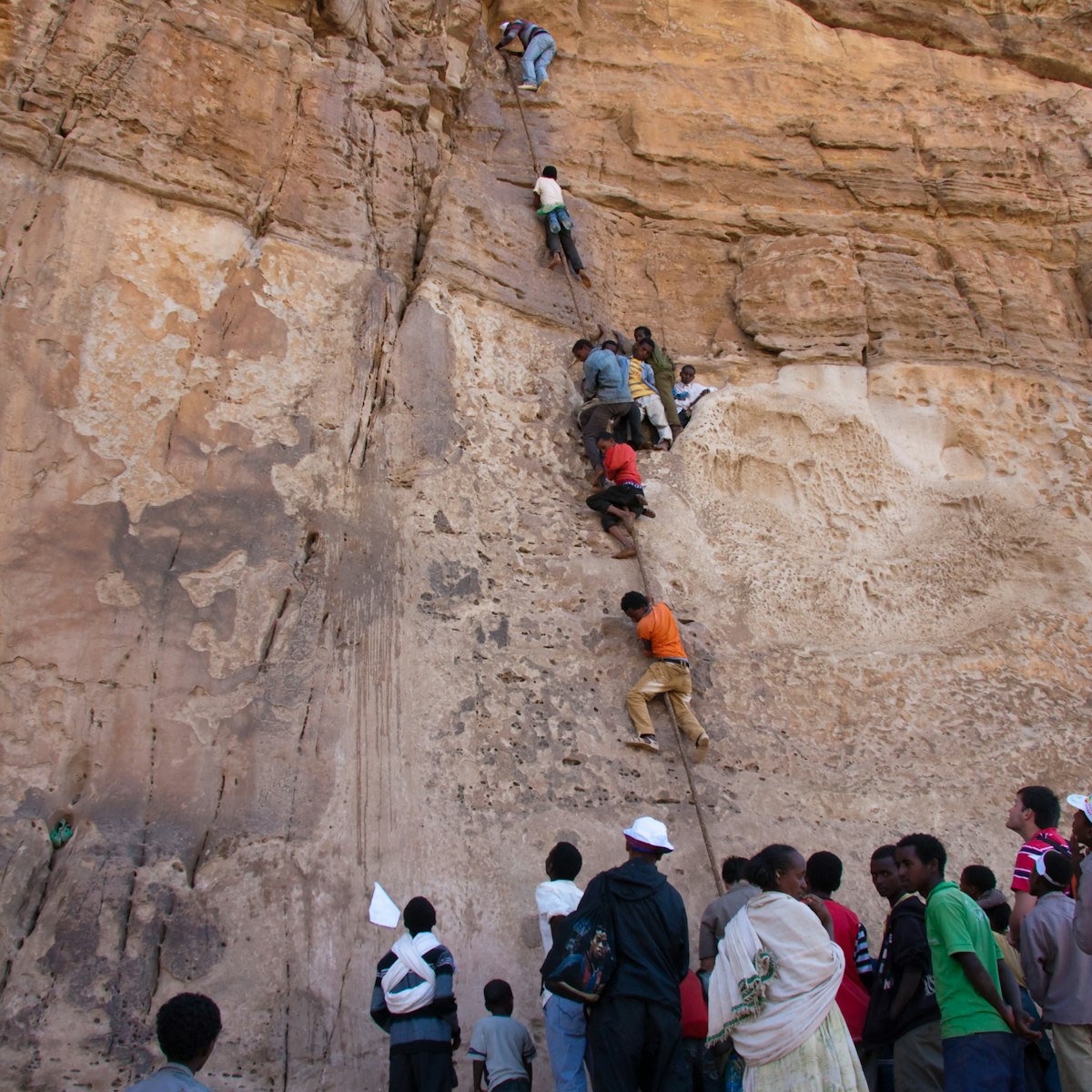
Debre Damo is one of Ethiopia's most important monasteries and is thought to date back to Aksumite times and the 6th-century reign of King Gebre Meskel…
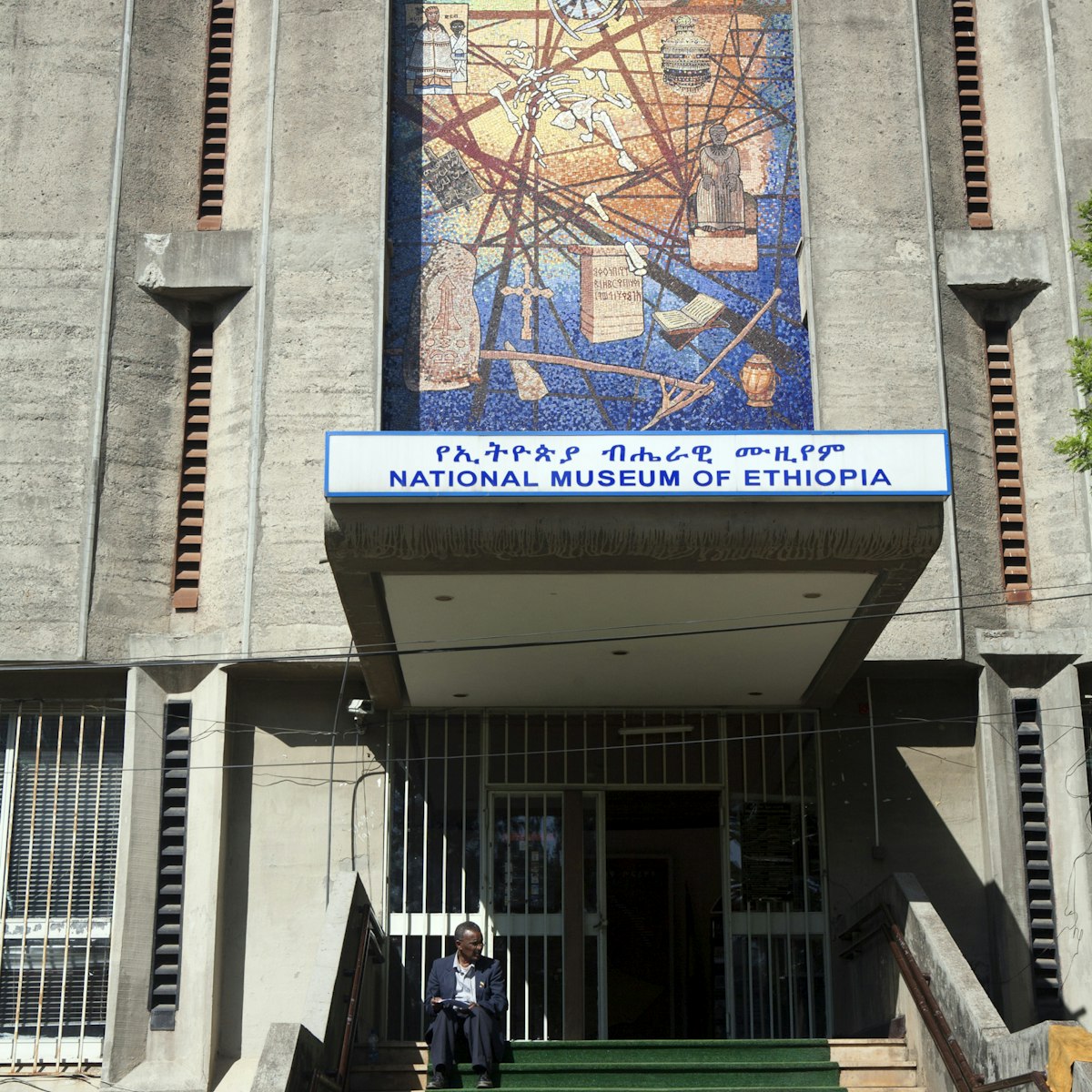
National Museum
The collection on show at the National Museum is ranked among the most important in sub-Saharan Africa, but sadly many of its exhibits are poorly labelled…
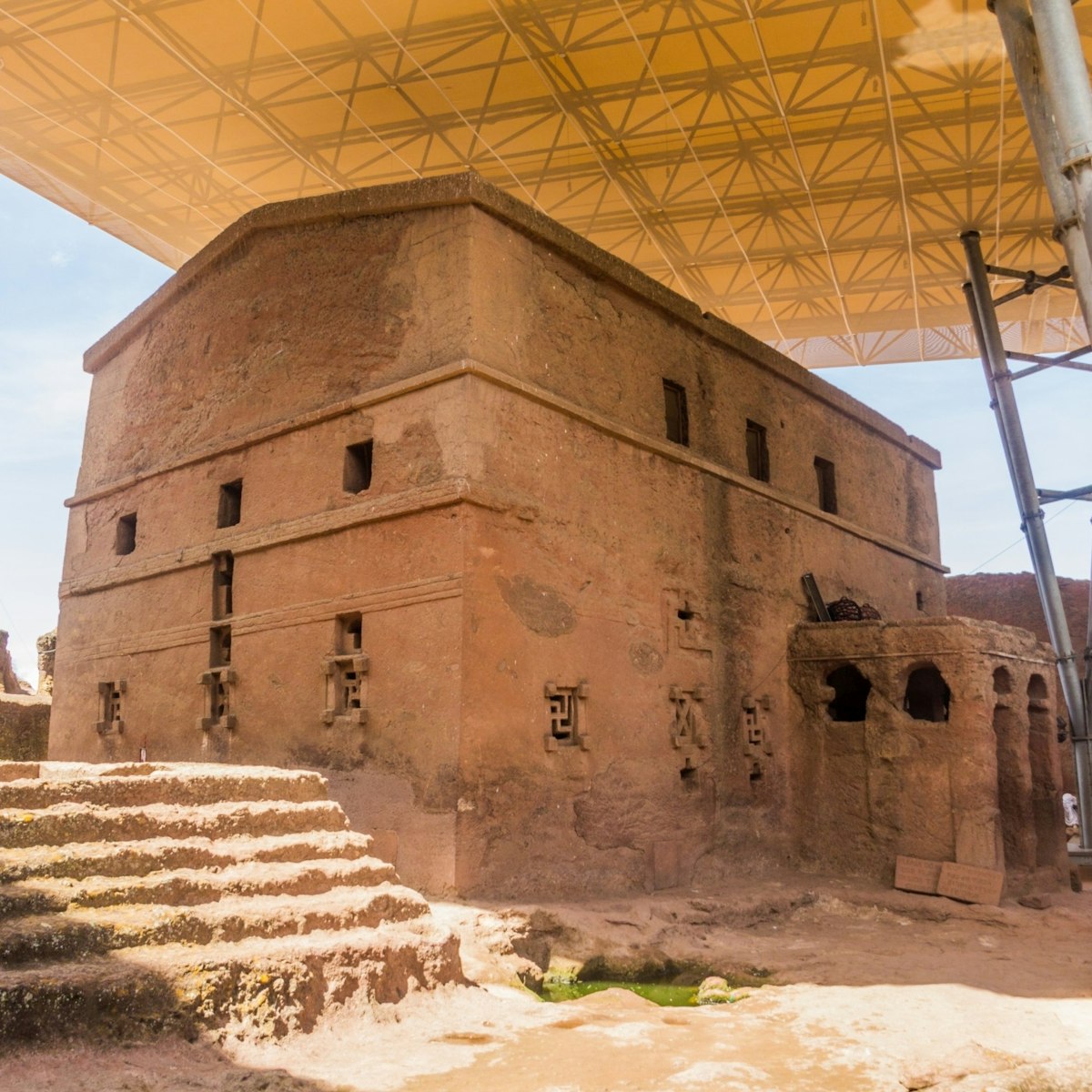
Connected to Bet Medhane Alem by a tunnel is a large courtyard containing three churches. The first, Bet Maryam, is small, yet designed and decorated to…
Latest stories from Ethiopia
Filter by interest:
- All Interests
- Adventure Travel
- Art & Culture
- Beaches, Coasts & Islands
- Food & Drink
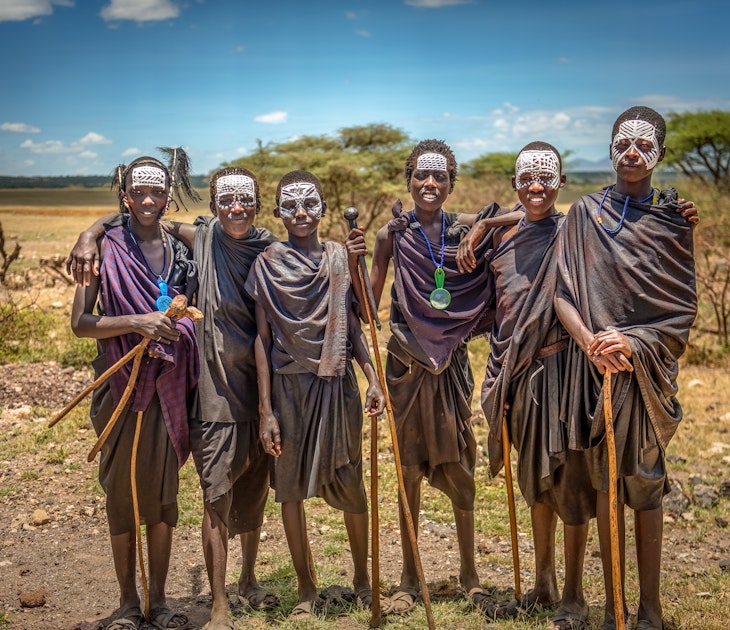
Digital Nomad
Aug 4, 2020 • 4 min read
Frontline nurse and photographer, Cohan Zarnoch, shares images she took of tribespeople on her travels in Tanzania, Ethiopia, Namibia and Morocco.
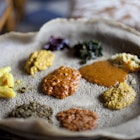
Apr 30, 2020 • 2 min read

Jan 23, 2017 • 5 min read
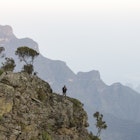
Sep 22, 2016 • 4 min read
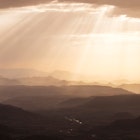
Nov 6, 2014 • 9 min read
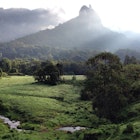
Sep 9, 2014 • 5 min read
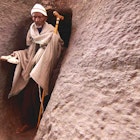
May 3, 2013 • 4 min read
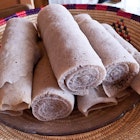
Jun 27, 2012 • 5 min read
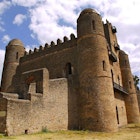
May 30, 2012 • 3 min read
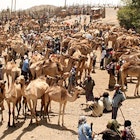
Nov 23, 2009 • 2 min read
in partnership with getyourguide
Book popular activities in Ethiopia
Purchase our award-winning guidebooks.
Get to the heart of Ethiopia with one of our in-depth, award-winning guidebooks, covering maps, itineraries, and expert guidance.
Ethiopia and beyond
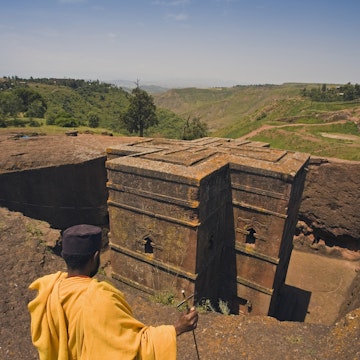
Travel to Ethiopia: Everything you need to know
By Joan Torres 30 Comments Last updated on April 25, 2024
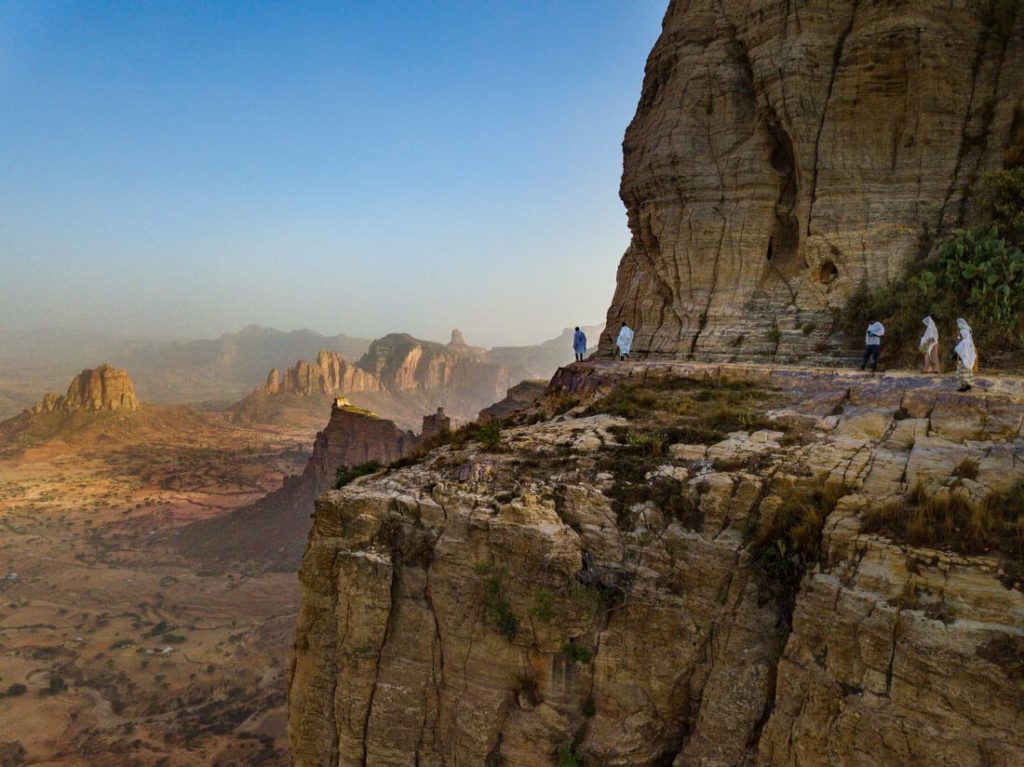
From visiting the most epic Christian sites to meeting ancient tribes with animistic beliefs, and from roaming around the thickest jungle to crossing the most inhospitable desert; traveling in Ethiopia is the most diverse African experience and this travel guide contains everything you need to know about it
I seriously thought that Ethiopia was a touristic, well-known country in the West but, when I came back from my trip, I was surprised to find out that many people had absolutely no clue about it, like they didn’t even know about its geographical location.
The truth is that traveling can be extremely subjective and, while Ethiopia may be a relatively touristic country as per Against the Compass standards – meaning that this is one of the most visited countries I talk about in this blog – compared to other average destinations, it is a real off the beaten track destination.
Little is known about this African country and, when people ask me what it is like to travel in Ethiopia, I always begin the conversation with the following:
The main reason to visit Ethiopia is that it is an exceptionally diverse experience.
On the one hand, the cultural diversity is huge. In Ethiopia alone, you have 80 distinct ethnic groups who speak more than 80 languages and practice different religions, from different branches of Christianity to Islam and animistic beliefs.
On the other hand, this is a historically rich country and the one with the most impressive historical and archeological sites in sub-Saharan Africa, once the capital of the Aksumite Empire – one of the most powerful ancient empires in the continent that ruled for more than 800 years – and home to endless jaw-dropping millennial rock-hewn churches and European-like medieval castles.
Furthermore, contrary to any Western cliché, Ethiopia is also a land of natural contrasts, composed of fertile tropical forests in the south and vast flat deserts in the east, the Danakil Depression being home to lava pools and the hottest settlement in the world. In the north, Lake Tana is the source of the Blue Nile and Simien Mountains is one of the very few places in Africa with regular snowfall, the highest peak being at 4500m.
And by the way, the scenery in Ethiopia is unconditionally hair-raising, a real blessing to your eyeballs.
And if that wasn’t enough, Ethiopia was recently rebranded the Land of Origins by the Ministry of Tourism because these lands are the origin of humankind – where the oldest hominid was found – the first place to ever produce coffee and they practice one of the rawest and most ancient ways of Christianity.
Trust me, after traveling to so many countries, I am rarely impressed but still, Ethiopia definitely wowed me.
This guide contains everything you need to know to travel to Ethiopia (literally, everything), from how to get a visa to getting in, top experiences, cultural facts, budget and loads of personal travel tips.
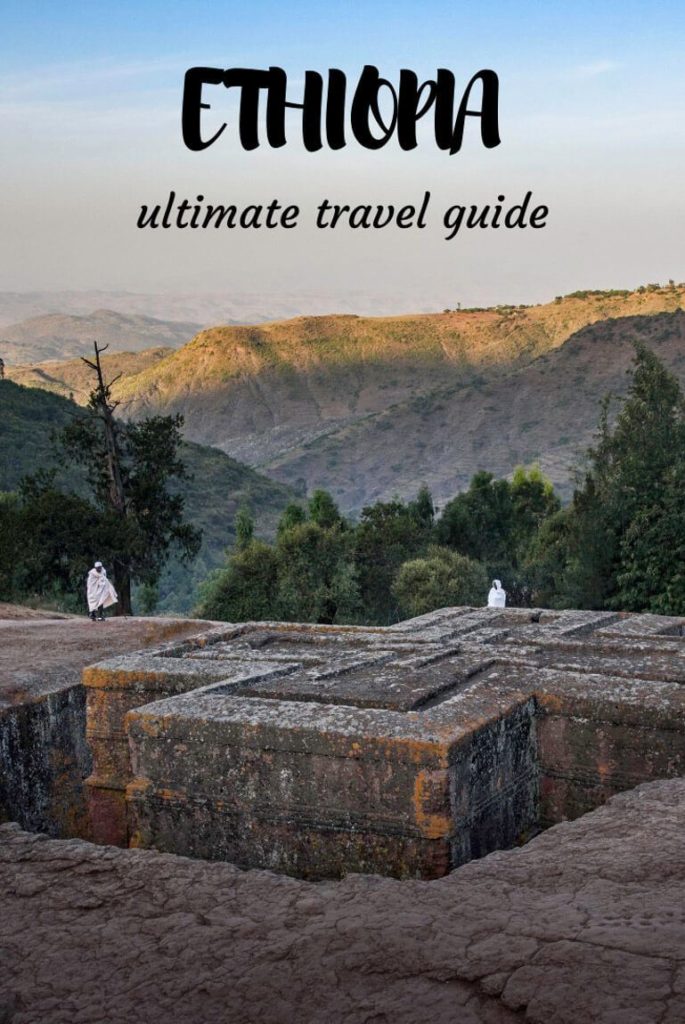
In this Ethiopia travel guide you will find:
Table of Contents
- Overlanding
- Best time to visit
- Travel insurance
- Top experiences
- Books on Ethiopia
- Cultural facts
- The country
- People & Language
- Money, budget & costs
- Is it safe?
- Solo female travel
- Moving around
- Where to stay
our recommended travel insurance for Ethiopia
With its Backpacker plan, IATI Insurance is the best insurance for any kind of adventurous destination, like Ethiopia.
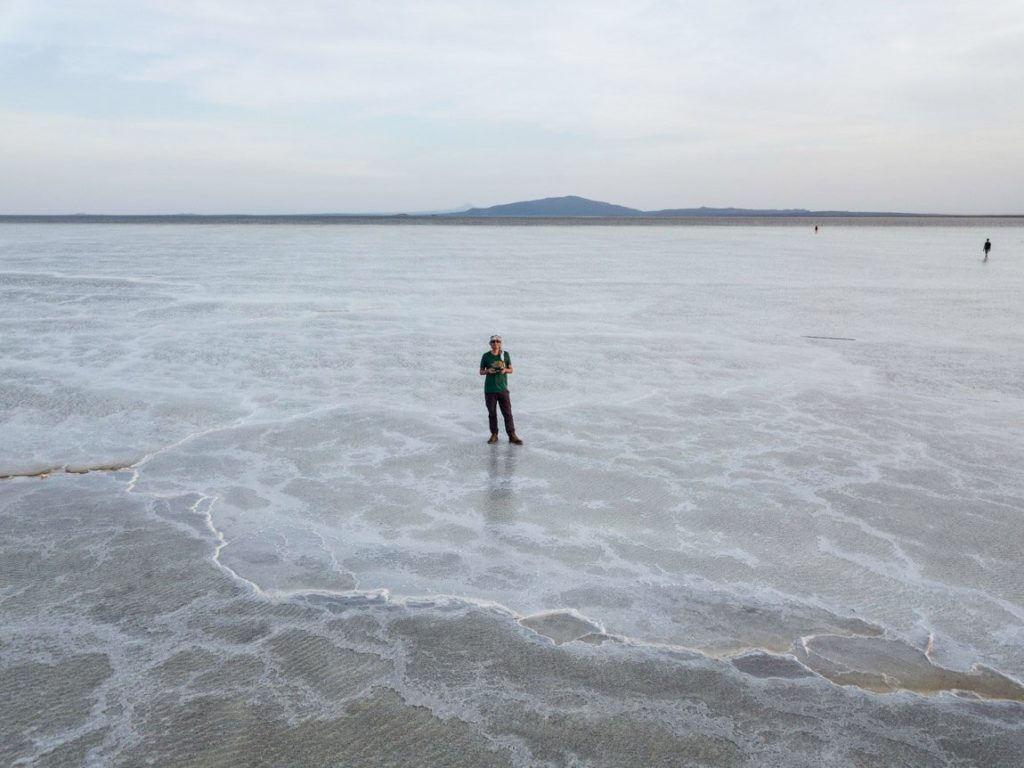
🪪 How to get a visa for Ethiopia
How to get an e-visa for ethiopia.
Everybody needs a visa for Ethiopia but today, pretty much any nationality can get a tourist e-visa.
And you can easily apply through the official website .
Make sure you do it through the above URL because there are many non-official websites which, even though they do issue valid visas, charge much more money.
Typically, there are 2 types of tourist e-visa:
- 30-day visa, which costs 82USD
- 90-day visa, which costs 102USD
And it takes up to 3 days to process. Mine took less than 24 hours.
It’s a very easy process which has absolutely no secret and very little requirements.
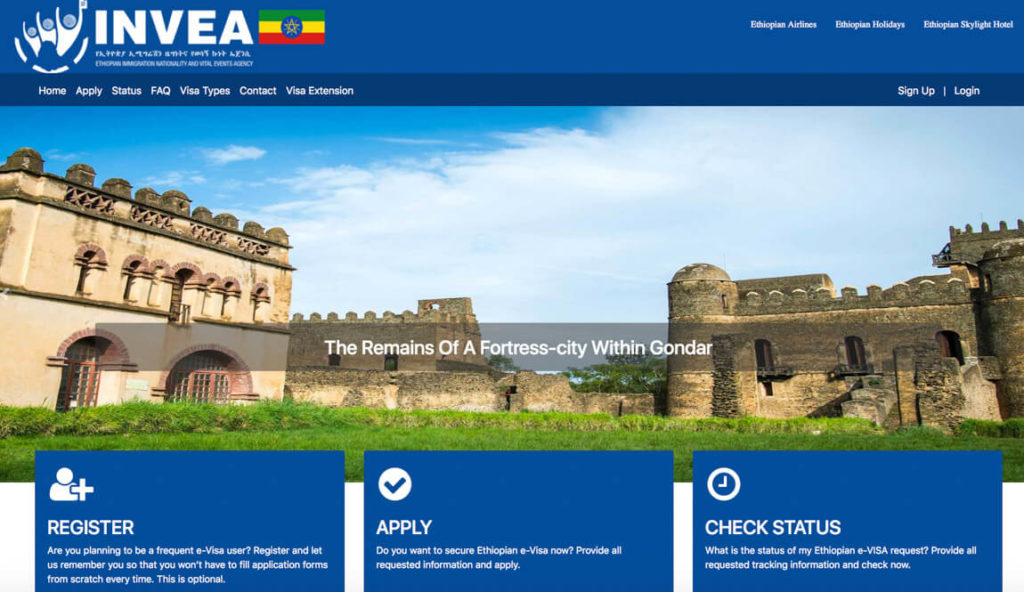
Is the Ethiopian e-visa valid at land borders?
Officially, the tourist e-visa is only valid for those entering via Bole International Airport in Addis Ababa .
My trip to Ethiopia was part of a 3-month journey through the Horn of Africa, traveling from Eritrea to Djibouti, Soma liland and then entering Ethiopia overland, so I intended to apply for it at the embassy in Djibouti.
However, once I got there, they told me that they had run out of visa stickers and that they would not receive more after a couple of weeks at least.
Then, I tried my luck in Hargeisa, the capital of Somaliland but, unfortunately they weren’t issuing visas anymore, so I was in a situation in which, according to the official information, the only thing I could do was booking a flight from Hargeisa to Addis Ababa, which kind of sucked.
However, I contacted a few travelers who said that in Africa, anything can happen and proof of that is that they managed to travel to Ethiopia overland with an e-visa, so I decided to try my luck as well and successfully managed to cross the border from Somaliland , no questions asked.
Visa on arrival for Ethiopia
If you don’t have time to apply for an e-visa because your flight to Addis Ababa is less than 3 days ahead, you can also get a VOA at Bole International Airport.
Otherwise, I don’t see any good reason why you should get a VOA instead of an e-visa.
How to apply for an Ethiopian tourist visa via embassy
The only reason for applying for your Ethiopia tourist visa at the embassy is because you are entering overland and don’t want to risk a potential denial because you are only in possession of an e-visa.
You can find Ethiopian embassies and consulates in many cities across Europe and North America. Just contact your nearest one to ask about the process, which tends to be very easy.
🛫 How to get to Ethiopia
How to travel to ethiopia by plane.
Bole International Airport in Addis Ababa is one of the most transited airports in the African continent.
I had actually been there twice even before visiting Ethiopia, as Addis Ababa is a common stop for many flights going to other African destinations and the Middle East .
The main airline operating in the country is Ethiopian Airlines , a modern company that flies all over the world , including to and from the American continent.
Moreover, there are many other international airlines that fly to Addis. I actually flew out of the country with Emirates.
Remember that, if you fly in with Ethiopian Airlines, you get a 50% discount on all domestic flights . Check the how to move around section of this post for more information.
How to travel to Ethiopia overland
Ethiopia shares a border with so many countries :
Traveling to Ethiopia from Sudan
Completely open to foreigners. There are regular minivans running from a Sudanese city named Qadarif to the border, and the border formalities are not very complicated.
Read my Sudan travel guide.
Traveling to Ethiopia from Djibouti
An easy border to cross from a bureaucratic point of view but difficult from a logistic point of view, as you need to cross the desert on a 4×4.
Moreover, an easier option would be taking the train that goes from Addis to Djibouti City, but it is a bit unreliable. For more information, check the moving around section.
Traveling to Ethiopia from Kenya
Crossing from the Kenyan town named Moyale should be a simple process.
Traveling to Ethiopia from South Sudan
Not possible. You would have to go through the jungle and go across the most dangerous part of South Sudan, so forget it. There are daily flights connecting both countries though.
Traveling to Ethiopia from Eritrea
This border is closed for foreigners and more often than not, also for locals. The only way of traveling between both countries is by flying in, from Asmara to Addis.
Read my Eritrea travel guide .
Traveling to Ethiopia from Somalia
The one I used. As you may know (or not), Somalia is divided into two regions, actual Somalia and Somaliland.
You can travel to Ethiopia from Somaliland, using the border near the city of Harar. It was very easy and quick to cross. There are normal roads and plenty of public transportation.
Read my Somaliland travel guide
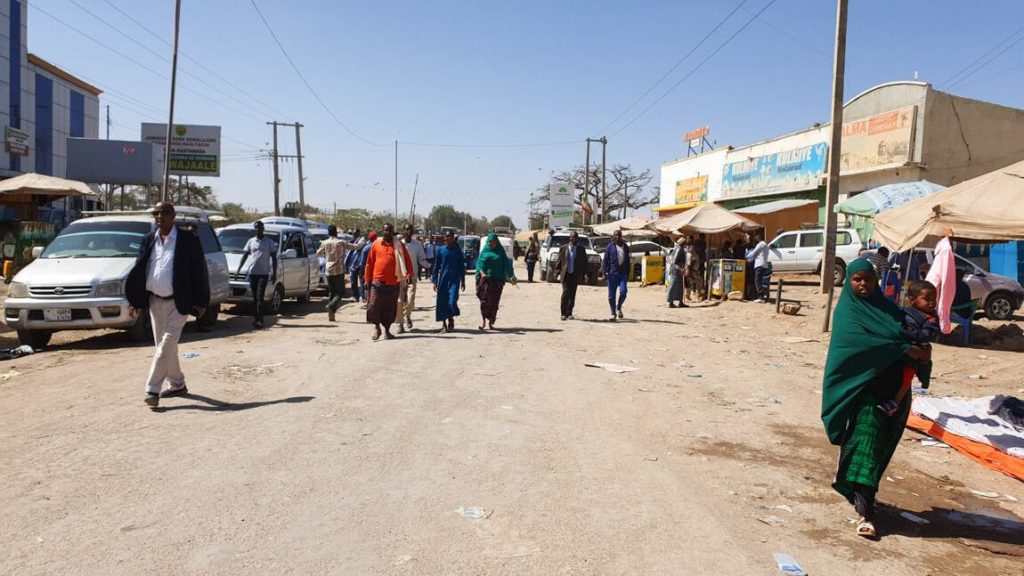
⛅ Best time to visit Ethiopia
Ethiopia is a big country composed of several geographical regions, each having a different optimal season to visit, so it’s a bit difficult to guess the ideal time to come.
Rainy season
Typically, most travelers avoid the rainy season running from mid-June to mid-September, especially because the northern highlands is where it rains the most, the region with the highest concentration of popular destinations, including Gonder, Axum, Tigray churches, Simien Mountains and Lalibela .
In the south, however, which includes the famous Omo Valley , the rainy season runs from March to June, and it’s highly advisable to avoid these months, for the simple reason that the remotest villages, which are only accessible along muddy roads, will be unreachable.
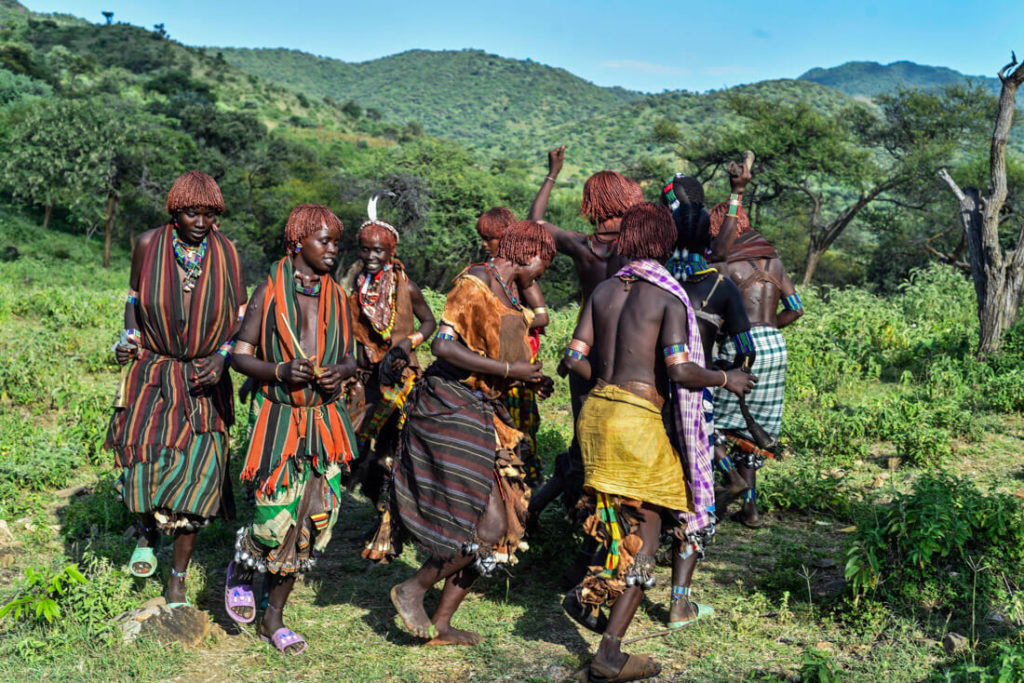
November to January is high season
The weather is ideal and, up to January, the landscapes are beautifully green still. Expect to find big crowds and high prices though.
February and March is a good time too
As the weather is pleasant and most crowds are gone but the main downside is that it is already dry season, so the northern landscapes won’t be as pretty. I visited Ethiopia from February 1st to mid-March.
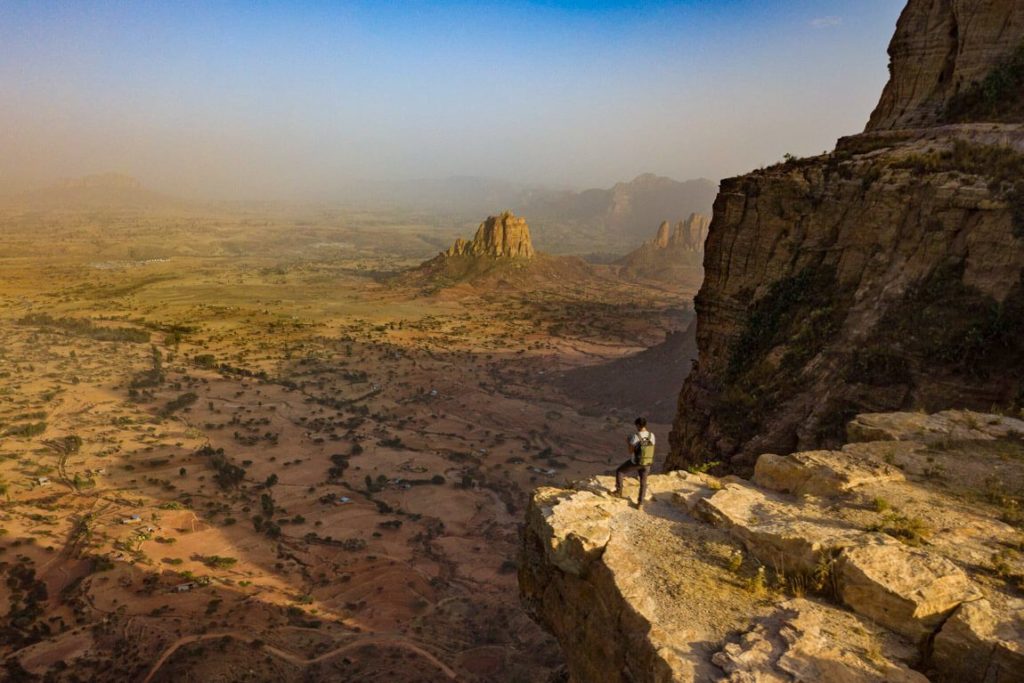
Therefore, in order to avoid the crowds and still get pretty landscapes, I believe that mid-September and October would be the best time to go backpacking in Ethiopia.
However, bear in mind that the Danakil Depression , one of the country’s highlights, is also one of the hottest places on Earth, and September and October’s heat will be unbearable; it is advised to visit here from mid-November to February.
And last, you may also want to organize your visit so you come during one of their most important cultural festivals :
- Genna – Ethiopian Christmas that takes places on January 7th
- Timkat – Ethiopia’s Orthodox Christian celebration that takes place on January 20th
- Meskel – Ethiopian religious holiday that takes places at the end of September
As you can see, telling you the right time is a bit tricky!

🚑 Travel insurance for Ethiopia
Ethiopia is an adventurous region, so make sure to choose a proper backpacking insurance with good adventure coverage. I recommend IATI Insurance .
- It covers the largest number of adventure activities, including trekking
- Covers both short-term trips and 1-year long trips.
- Covers senior citizens too.
- Readers of this blog get an exclusive 5% discount

🛖 Top experiences in your trip to Ethiopia
Trekking among tens of thousands of baboons.
A rugged, mountain range composed of insanely vertiginous cliffs and several peaks above 4000 meters and inhabited by, literally, thousands and thousands of an endemic species of baboon, trekking the Simien Mountains is one of the highlights of any trip to Ethiopia.
Read my experience trekking in the Simien Mountains of Ethiopia

Visiting the hottest (inhabited) place on Earth
Danakil is a vast depression popularly known for being one of the most inhospitable places on Earth, an arid, unwelcoming land filled with volcanoes and insane geological formations, colors and absolutely crazy landscapes, inhabited by a distinct ethnic group named Afar.
Read my experience visiting the Danakil Depression

Exploring ancient churches built over cliffs
Ethiopia was one of the first countries to adopt Christianity and its churches are not only some of the most ancient churches in the world, but they have been carved out from rocks located in the most unbelievable and vertiginous locations, and what is even more incredible is that they are still as functional as they used to be 1200 years ago.
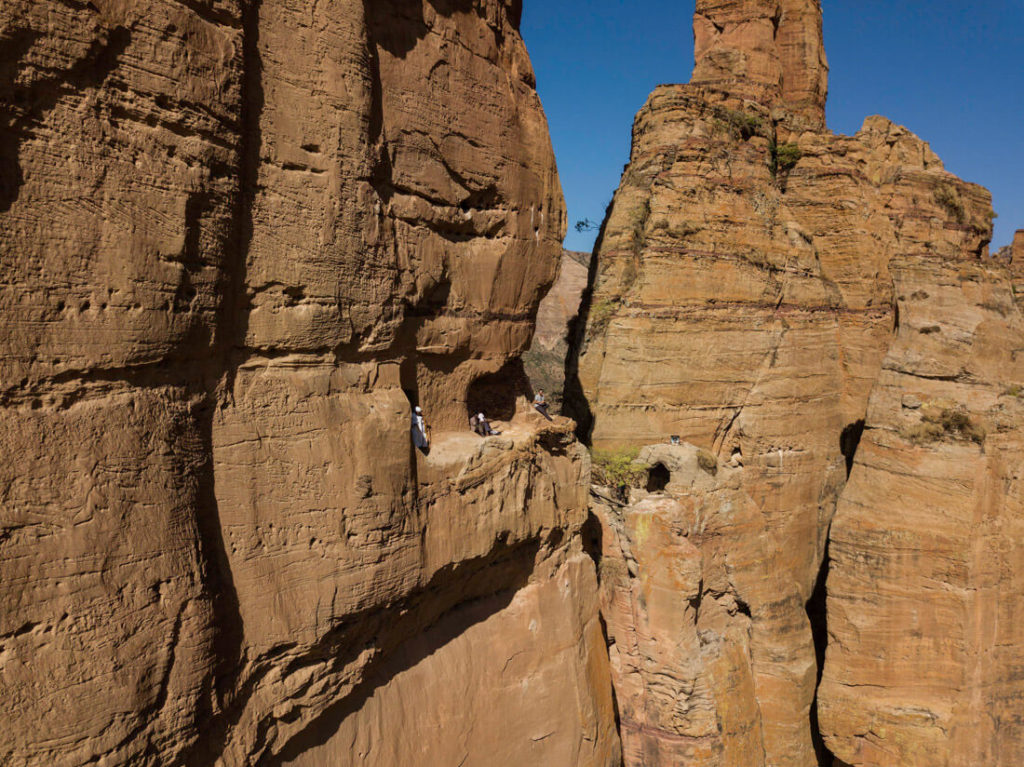
Feeding wild hyenas with your mouth
In the eastern city of Harar, there is a man who has dedicated every day of his life to feeding hyenas. Those hyenas aren’t domestic but they are free, live in the wild and everyday, at around 6-7pm, a bunch of them come nearby his house to get feed some fresh, raw meet. It is possible to assist the peculiar ceremony and feed them with your own mouth.

Assisting an actual bull-jumping ceremony
A traditional ceremony celebrated by the Hamar tribe (one of the many tribes in the Omo Valley) in which a young boy jumps naked over 10 bulls in order to prove that he is ready to be married.
Before the actual ceremony, there is a party in which people from all the nearby settlements gather to drink, dance and do some other cultural stuff.
Read my experience visiting the Omo Valley on a budget
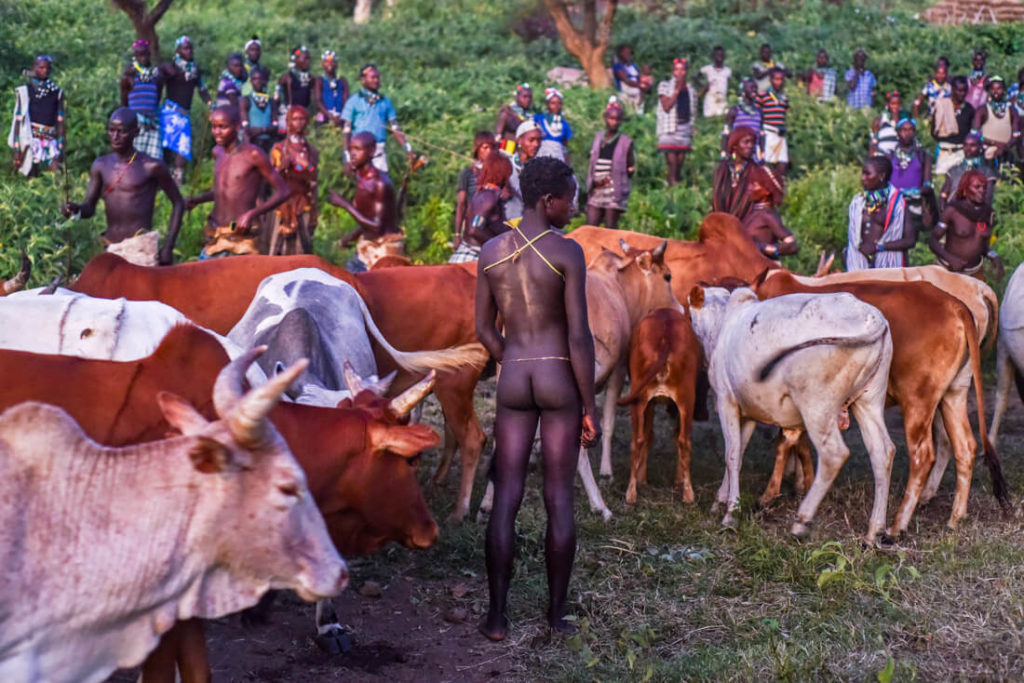
📚 Best books for planning your trip to Ethiopia
If you don’t have one yet, remember to get a Kindle for your journey, so you don’t have to carry along all your books! CLICK HERE TO GET YOURS
Ethiopia travel guide by Bradt
This is the Ethiopian Bible, definitely, the best book guide available for Ethiopia, and probably, the most complete book Bradt has ever written. A complete travel guide filled with endless insights, cultural facts and history. A must-have.
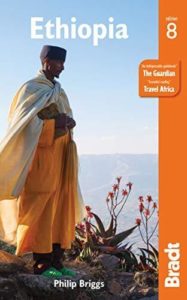
Ethiopia travel guide by Lonely Planet
It is not as complete as Bradt’s but it’s not that bad, it’s easier to read and they have a special chapter dedicated to the tiny, neighboring country of Djibouti.
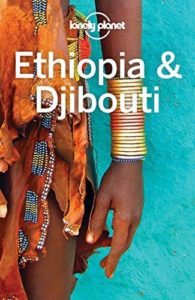
🕌 Facts about the country, the people and religion
10 facts about ethiopia as a country.
1 – The Federal Democratic Republic of Ethiopia – It is a landlocked country in the Horn of Africa, one of the largest countries in the continent and with a population of 108,000,000.
2 – The capital of Ethiopia – The capital is Addis Ababa, often referred as the political capital of Africa, as this is the African Union Headquarters and has a strong political and diplomatic influence in all the continent.
3 – It’s a very poor country as per Western Standards – Nearly 50% of their total GDP is based on agriculture, mainly coffee. It is however, one of the most powerful and influential countries in Africa. A curious fact is that I met many Somalis from Somaliland and Eritreans whose short-term objective was migrating to Ethiopia and getting an Ethiopian passport, which is apparently better than other African passports.
4 – It’s never been colonized – Italy tried to take it over twice, at the end of the 19th century and in 1936, but they were defeated so, along with Liberia, Ethiopia is the only African country which has never been colonized, one of the reasons why it is so unique and barely has any foreign influence.
5 – Ethiopia has close ties with Eritrea – Neighboring Eritrea is Ethiopia’s little brother, a country with practically the same culture. They have the same food, religion and share a big bunch of ethnic groups. The dominant ethnic group in Eritrea are the Tigrinya, which also turn out to be one of the most influential groups also in Ethiopia, inhabiting the Tigray region, the most touristic destination in Ethiopia. Moreover, they used to be the same country until 1991. For more information, read my Eritrea travel guide .
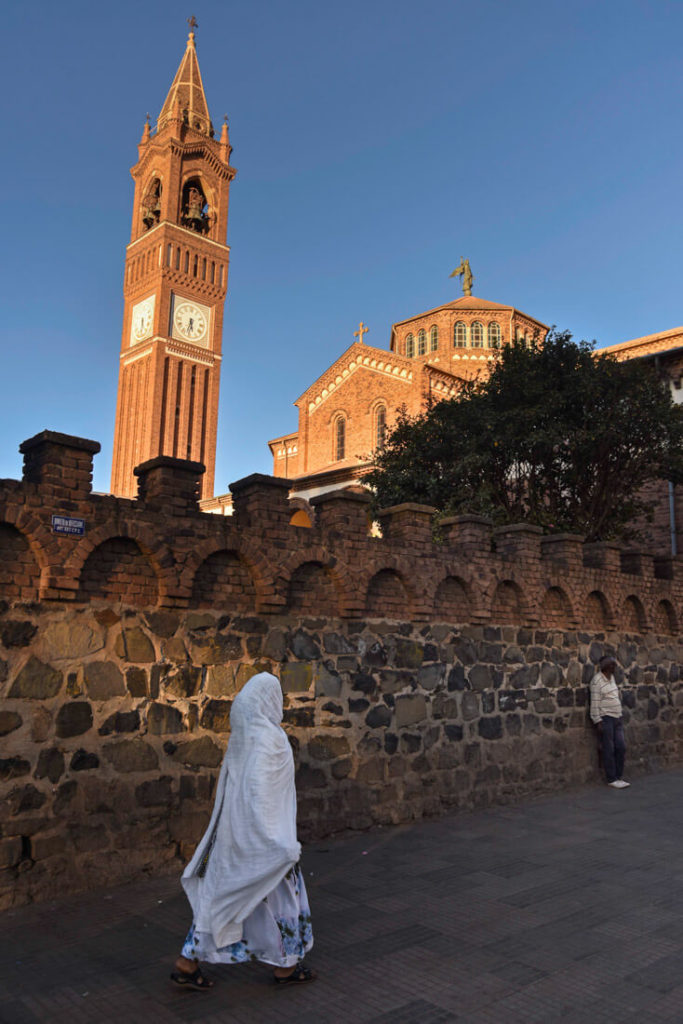
6 – They are 6 hours ahead of anyone – The funniest fact about Ethiopia is that their time is different than ours, but they are 6 hours ahead. This means that if someone from Ethiopia tells you to meet at 18h, you need to be there at 12h. Well-educated people from Addis Ababa will talk to you in rest-of-the-world-time, so will those in the countryside who are used to dealing with tourists. But the rest of the country will not and, more often than not, if you ask them: are you talking in Ethiopian time, or faranji time? they will not know what you are talking about. You are likely to meet many travelers who missed a certain bus because of this particular fact.
7 – Ethiopia is the origin of mankind – Lucy , the oldest and most complete hominid ever discovered, dating back from more than 3 million years ago, was found in Ethiopia, in the Afar Depression.
8 – Ethiopia is an ethnic Federal state – Given the ethnic complexity, in 1994, Ethiopia was divided into 9 separate autonomous regions, each one ruled by one of the largest and most influential ethnic groups.
9 – Ethiopia was once one of the most powerful Empires – The Aksumite Empire, whose center was in today’s Tigray region and Eritrea and which ruled from 80BC to 825AD, was one of the most important empires in the Ancient World, along with Rome, Persia, and China.
10 – This is former Abyssinia – A few hundred years after the fall of the Aksumite Empire, there was a man who claimed to be a direct descendent from the last Aksumite King and managed to establish a feudalist state that lasted until 1974, when the famous Emperor Haile Selassie was overthrown and modern Ethiopia started to develop.
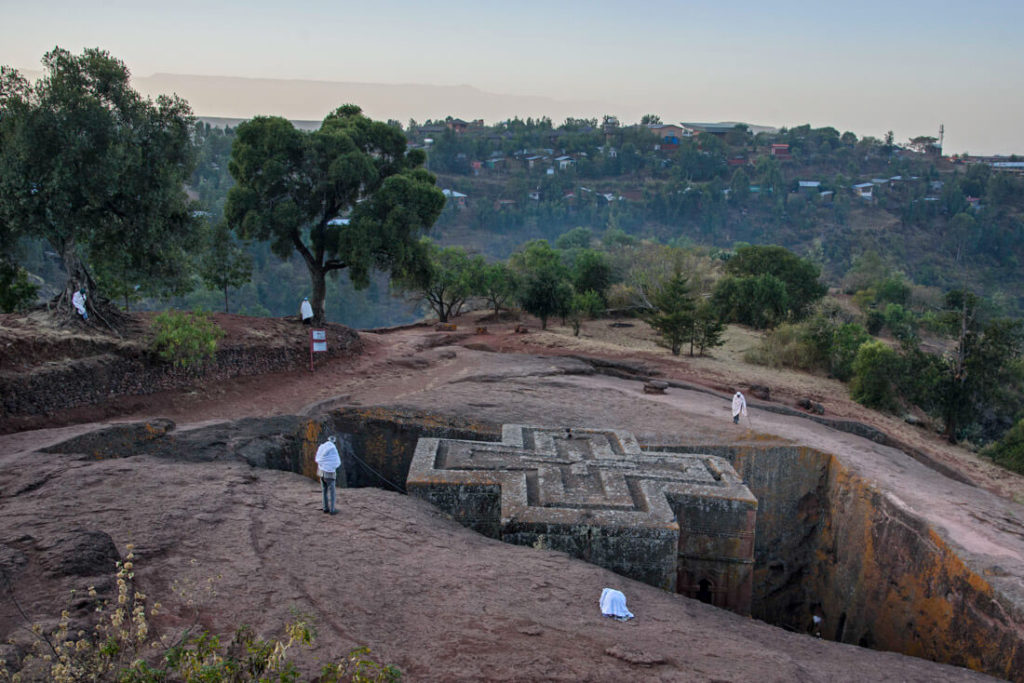
9 Facts about Ethiopians and their language
1 – There are two types of Ethiopian – On the one hand, you meet lovely, kind-hearted people who are always willing to help, or simply have a chat with you. And on the other hand, there are the people who try to rip you off continuously. During your Ethiopian trip, you will be meeting both types all the time and, by experience, you will be able to differentiate them easily.
(But most people are good 😉 )
Faranji , hey you, you you, faranji , you! Something I found extremely irritating (and most travelers do as well) is that, when you get into a new city or place, many people will start yelling: hey you, faranji, faranji, come here, come here! This also can happen with people you bump into in the street. In response, something very funny you can do is looking at them and say: hey you, habesha, habesha, come here, come here! Habesha means local , or Ethiopian , so you are basically telling them the same thing. Because they don’t expect such a reply from a faranji , in most occasions they will freeze, while others will laugh and probably shake your hand, turning an annoying person into a pleasant one.
2 – There are 80 distinct ethnic groups – The major groups being Oromo, Amhara, Tigray, Sidamo and Somali, which make up nearly 80% of the total population.

3 – The rest of the groups are minorities – And 45 of them live in a region named Southern Nations, Nationalities and People’s region, the vast majority being tribal people.

4 – Amharic is the official language – The lingua franca, the one used by the Government and the one used by the dominant ethnic group, the Amhara people, is Amharic.
5 – It comes from Ge’ez – Which is the language spoken in Ancient Axum and is still used today by the Ethiopian Orthodox Church.
6 – The alphabet is so cool – It’s called a syllable alphabet.
7 – But more than 80 languages are spoken – Or 70, depending on the source. Each ethnic group has a distinct language.
8 – And not everybody speaks Amharic – Especially in the tribal areas. It’s funny to think that, if certain tribal people from the south travel to Addis Ababa, they would feel more foreign and different than you do. You would certainly be more able to speak to the people than them.
9 – English is just OK – Not everybody speaks good English but in most towns, it is enough to get by.
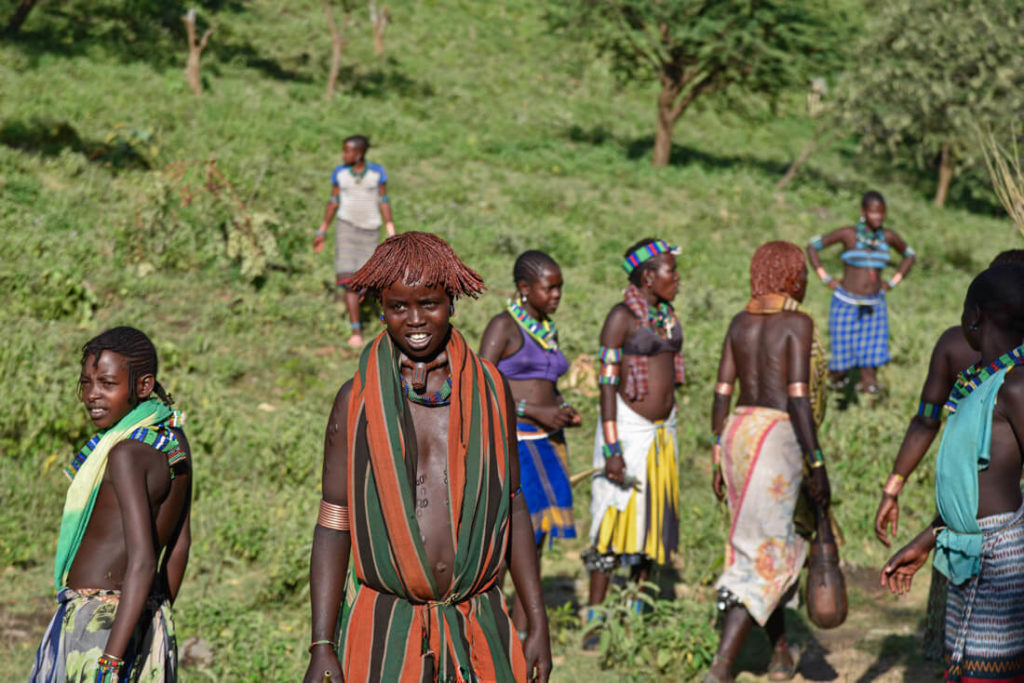
6 Facts about religion in Ethiopia
1 – Ethiopia was the second state to officially adopt Christianity – After Armenia, in 330AD.
2 – Many Ethiopians belong to the Ethiopian Orthodox Church – Around 44% of the total population.
3 – They have a very raw way of practicing Christianity – Scholars claim that Christianity evolved directly from Judaism but, while it kept evolving to other forms of Christianity such as Catholicism or Protestantism, the Ethiopian Orthodox Church didn’t, hence it is one of the earliest forms of Christianity that clearly has some Judaic influences.

4 – People in white robes – If you see locals in traditional white robes is because they went to Church on that day. On Sunday, you will see wearing them more than usual.
5 – There are Catholics and Protestants too – Around 20%, and they mainly live in the south.
6 – Muslims make up one third of the total population – Differently to what most travelers who have already been to Ethiopia believe, more than 30% of Ethiopians are Muslim, and many foreign people don’t notice them because they inhabit regions that don’t receive many tourists, Ethiopian Somalia for example.
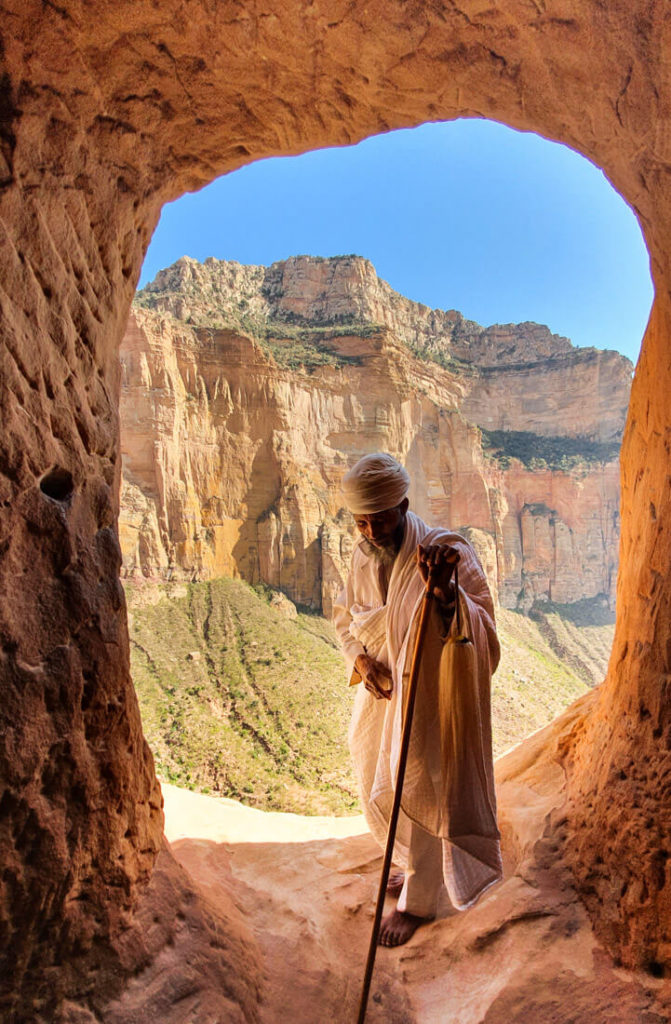
🍲 Ethiopian food and drinks
I have a love and hate relationship with the food in Ethiopia.
On the one hand, traditional food is healthy, mainly composed of stewed vegetables and a protein bread named injera .
On the other hand, despite the unbelievable geographical and cultural diversity, there isn’t much food variety across the country.
Anyways, injera is the cornerstone of any Ethiopian meal, a flat bread made from a local grain named tef . It is sour and has a peculiar crêpe texture and, basically, an average Ethiopian eats injera 3 times a day.
Some travelers don’t like it at all. I did like it but after 6 weeks of traveling in Ethiopia, I got particularly sick of it.
Fasting days in Ethiopia Ethiopians are very religious and besides the 40 days of Lent, the Ethiopian Orthodox Church also recognizes every Wednesday and Friday as fasting days, meaning that most restaurants will only serve vegetarian dishes.
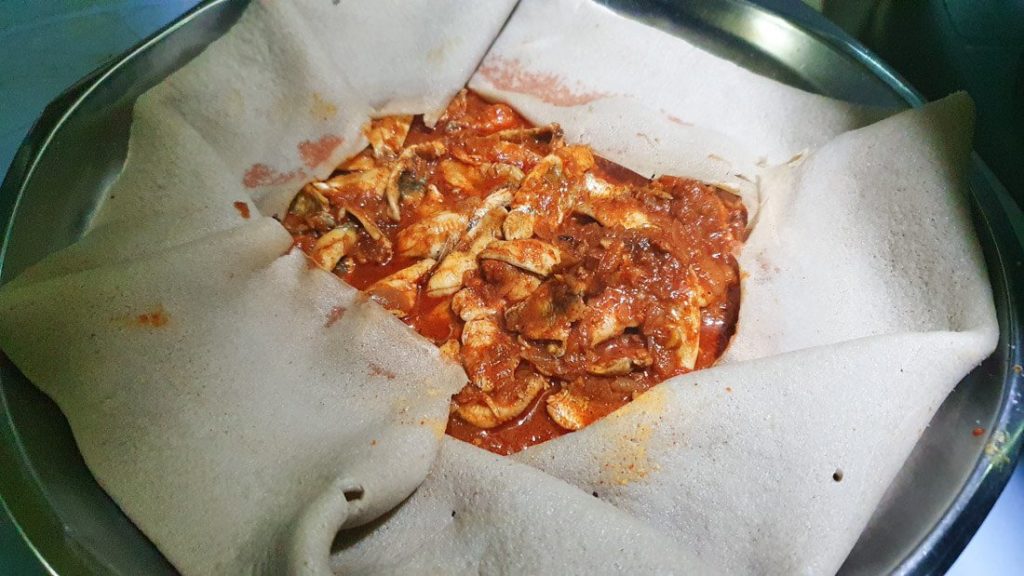
Most popular food in Ethiopia
This is the most available and traditional dish, consisting of different kinds of stewed vegetables and curries that vary from restaurant to restaurant, but typically being spinach, potatoes, carrots and lentils.
It is very cheap, usually less than a $1, and this is what most Ethiopians eat each and every day.
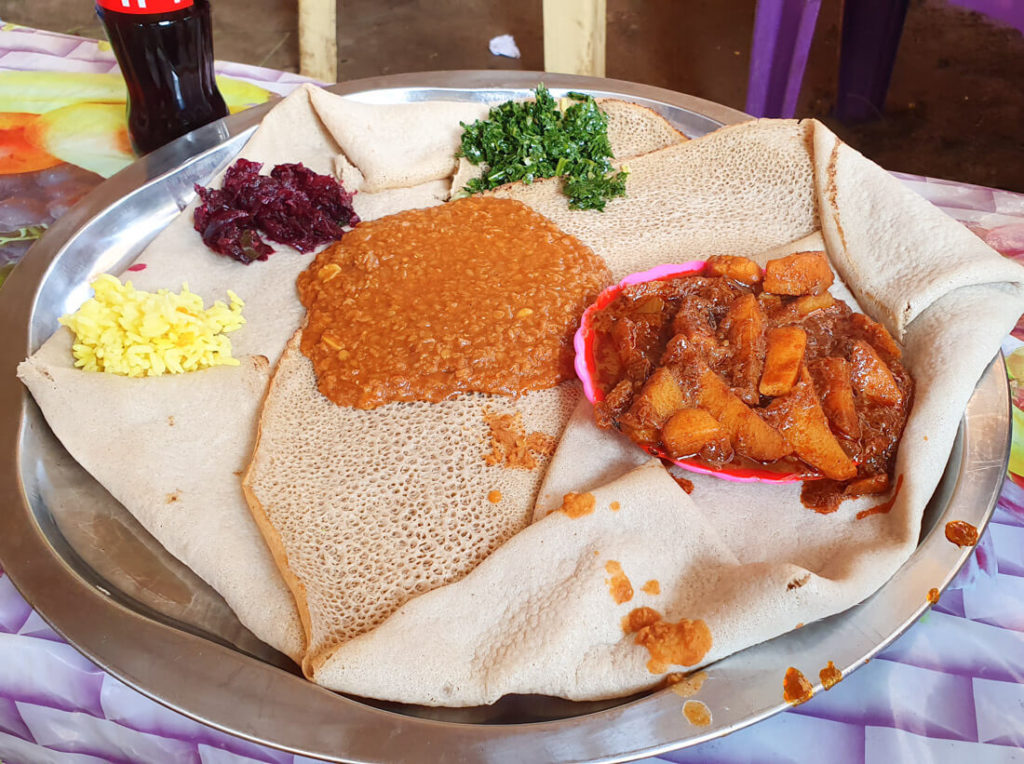
Also very traditional but not as available as beyanet because this is meat-based, usually goat or sheep, hence more expensive, and many Ethiopians can’t afford to eat meat every day.
Tibs is roasted meat with beriberi, a chilly powder sauce, served, of course, along with injera .
This was my favorite dish, the Ethiopian hummus, I would say. Shiro is chickpea paste mixed with onions, garlic and bean flour. Energetic, healthy and delicious.
Shiro Tegamino
Same as shiro wat but much, much thicker and what I liked about it is that, for some reason, it was always served with normal bread, instead of injera .
This was a pretty fancy dish, typically available in expensive restaurants and consisting of a chicken stew cooked in a complex gravy.
Kita fir fir
Kita fir fir is injera with spices and chilli and it’s typically eaten for breakfast. I didn’t like really like it because it’s 95% just injera .
By the way, for breakfast, besides kita fir fir and its different varieties, ful is also very easy to find, which is small beans in tomato sauce and garlic. In the south, you may get some really tasty avocado as well.
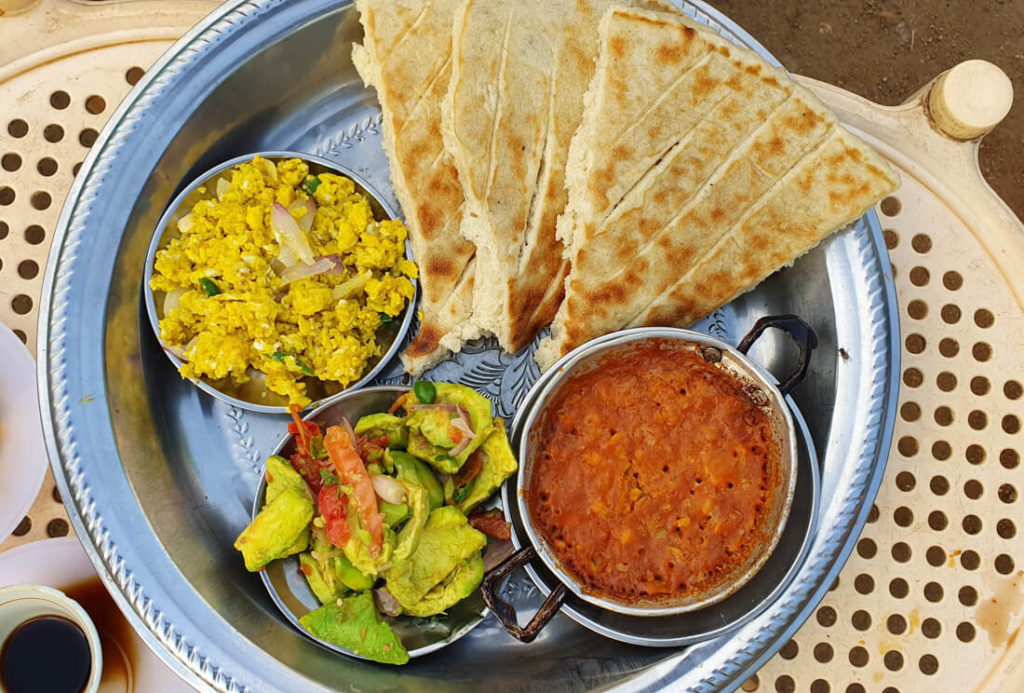
Western food in Ethiopia
Many restaurants will serve pasta, pizza and burgers but don’t expect much of it.
In Addis Ababa, however, you can find good international food. Expensive as per Ethiopian standards, but good.
Pizza with cheese, tuna, chocolate and strawberries One day in Mekele, we went to one of the fanciest restaurants in town, a Western-style café typically frequented by the upper Ethiopian class. I ordered a pizza, one that was called calazori, just because it had tuna in it but, to my surprise, they brought me kind of a crêpe covered with chocolate and strawberries. No, I didn’t order this, but I ordered a calazori pizza . He opened the crêpe, which was made of pizza bread, to show me that the actual pizza ingredients were inside. By default, I don’t like chocolate, but that mix was disgusting anyways, so I told her to just change it for a normal pizza without chocolate. Anyways, my point is that, outside of Addis Ababa, don’t have big expectations of Western food.
Beer in Ethiopia
Beer is a big deal in Ethiopia and they have a lot of brands.
The best part is that Ethiopian beer is so cheap, one bottle never costing more than 17 birr in local places, which is less than 50 cents.

Coffee in Ethiopia
Ethiopia is coffee’s birthplace and, today, it is a very important part of their economy and exports.
Traditional style coffee is called buna and pretty much on any corner all around the country, you will see a lady preparing it in a clay pot named a jebena , and serving it in small cups. It’s good, and so cheap, around 5 birr (like 15 cents), but they may charge you double in touristic areas.
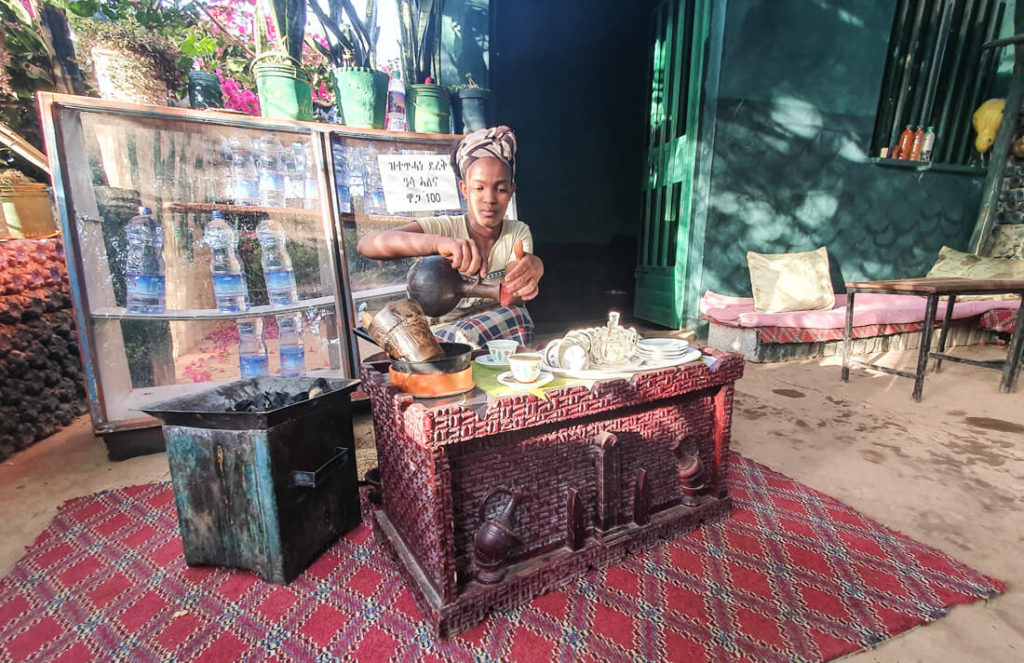
💻 Internet and connectivity in Ethiopia
Wi-Fi is really, really bad all over the country.
Even when hotel owners try to sell you the beautiful idea that their hotel prices include Wi-Fi and breakfast, just assume that most likely, Wi-Fi won’t work and, if it does, it’s terribly slow.
If you want to connect to the internet, you must get a SIM Card and telecommunications in Ethiopia is a monopoly controlled by Ethio Telecom .
Their mobile internet isn’t the fastest ever but it’s decent and if, like me, you have to work online while on the road, it’s good enough for creating a hotspot and do regular browsing.
It wasn’t very expensive but it wasn’t cheap at all as per Ethiopian standards.
Get a VPN for traveling in Ethiopia
You should always use a VPN when you travel, especially when you connect to public Wi-Fi networks.
Your connection will be much safer.
Moreover, you will be able to access content which is typically censored in Ethiopia.
I recommend ExpressVPN – Extremely easy to use, fast and cheap.
If you want to learn more about VPN, check: Why you need a VPN for traveling .
💰 Backpacking in Ethiopia: need to know about money, budget & costs
In Ethiopia, they use the Ethiopian Birr (ETB) and, approximately:
1 USD = 53 ETB
Something I remember is that Ethiopian bank notes are some of the dirtiest I have ever seen, to the extent that when I got back home and finally touched some clean ones, it was a real reverse cultural shock.
Always have some hand sanitizer handy with you. In fact, in Ethiopia I got a small eye infection and I suspect it was because of rubbing my eye after touching some of those notes.
Black market rate in Ethiopia
In Ethiopia, there is a black market rate, which can be sometimes double the bank rate .
This means that, at the bank, if the exchange rate is 53, in the black market you can get it for up to 100, but only in Addis Ababa.
That’s why, in order to take advantage of this rate, it is recommended to come to Ethiopia with all your money in cash.
There is black market all over the country but in Addis Ababa you will get the best rate, especially near Meskel Square.
Just ask around where can you exchange your foreign currency.
However, bear in mind that, at first, they will tell you a very shitty rate, so remember to bargain.
ATMs in Ethiopia
In big cities, you can find ATMs, no problem, and they always accepted my foreign credit card. Sometimes they run out of cash though.
Nonetheless, remember that when withdrawing money, you will always get the bank rate.
Faranji and habesha price
In Ethiopia, there is a dual pricing, like I had never seen before: faranji and habesha .
Faranji means foreigner and habesha local .
In restaurants for example, food and drinks in the English menu may cost up to 3 times the habesha price and, if you believe you can grab the local menu and point out any meal marked with the original price, then you are wrong because they will always charge you the faranji price.
Moving around by local bus is also very frustrating because you know they will charge you double, or triple if they can, and negotiating is always a pain because you need to get angry, or even yelling at them, something they don’t usually expect.
I found this extremely frustrating and one of the worst things about traveling in Ethiopia.
And if you think, however, that this is how things work in their culture, I think you are wrong because I talked about this subject with many Ethiopians and they also agreed that it isn’t the right way to treat foreign tourists.
I can understand they charge double in touristic places but why do you have to pay a faranji price if you take the local bus or eat in a local restaurant?
Independent travel in Ethiopia. How much does it cost?
Traveling in Ethiopia on a backpacking budget is cheap and below is a list of the price of the most typical things.
How much does food & drink cost in Ethiopia?
Please note that, in very touristic areas such as Lalibela, paying these amounts can be very challenging but those are the prices assuming you pay the local price, so take it as a base reference.
- Vegetarian local meal like beyanet or shiro : 30 to 50 birr
- Non-vegetarian local meal like tibs : 50-70 birr
- Meal in a nice restaurant: main dishes from 100 birr
- Beer: 15-20 birr
- 1kg of pretty much any fruit (mango, avocado, etc): 30 birr
- Local coffee (buna): 5 birr
- Coffee (machiato, espresso): 15 birr
- 2l mineral water plastic bottle: 15 birr
How much does accommodation cost in Ethiopia?
- Local hotels (creepy ones): 100 birr
- Nice, decent accommodation: 300-600 birr
- Mid-range hotels: from 700 birr
How much does transportation cost in Ethiopia?
- Short local bus ride: 20 to 40 birr
- Long distance bus ticket (Addis Ababa to Gonder): 300 birr
- Domestic flight: $50-$100 one-way
- Local shared taxi (Lalibela to Mekele): 600 birr (This will highly depend on your negotiations skills. For example, two tourists who were traveling in the same car paid 1500 birr).
How much does a tour cost in Ethiopia?
- Danakil Depression 2-day tour: $250
- Omo Valley: $100-$150 a day
- Simien Mountains 3-day trek: $170
- Entrance fee to Lalibela: $50
Average daily budget for backpacking in Ethiopia (independent travel)
Assuming you don’t take any domestic flights and travel by local bus, the minimum a budget backpacker will spend is:
$35-40 a day
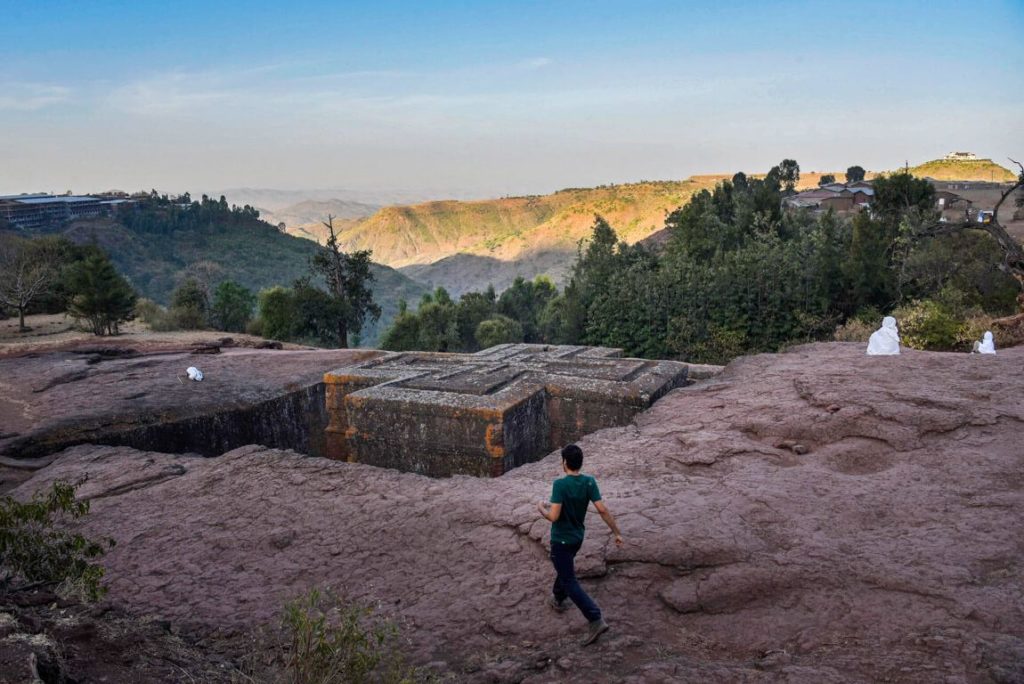
⚠️ Is it safe to travel to Ethiopia?
That’s a complicated question.
Overall, I feel Ethiopia is a safe country to visit, but let’s go by parts.
The conflict with the Tigray
The Tigray war was a conflict between the Ethiopian Federal Government and the Tigray People’s Liberation, which lasted from November 2020 to November 2022, causing thousands of casualties and displaced people.
The war isolated completely the whole region of Tigray in the north, home to highlights like Axum, Mekele ( Danakil getaway ) and hundreds of rock-hewn churches.
Today, the war is over and the Tigray region is once again accessible.
Pickpocketing is real
Not bluffing, if you are not careful, you are likely to be pickpocketed in Ethiopia.
I have only been pickpocketed in two countries: in Mexico, and in Ethiopia.
Actually, in Ethiopia it happened to me twice, in 2 different areas of Tigray region. On one occasion they stole my brand-new GoPro, and on the second time they took my wallet with my credit card in it.
This can happen anywhere but in here chances are way higher, so be careful of your belongings.
I strongly recommend you get a money belt ! CLICK HERE TO LEARN MORE!

By the way, in big cities, especially in Addis Ababa, never walk alone at night. Your physical integrity is unlikely to be threatened but there is a high chance of being mugged.
Terrorism in Ethiopia
According to the FCO, the Ethiopian travel advice is that you should avoid the Somali province and the area or Gambella, which borders a conflict area of South Sudan.
There is an existing terrorism threat in Ethiopia but it is limited to the Ethiopian Somalia region, the province that borders Somalia.
Since I traveled to Ethiopia from Somaliland by land, I did cross that region and you could really feel the tension and threat I am talking about.
The security measures were insane. Every X km, there was a police checkpoint in which everybody from the bus had to get off and the police would check every single bag, one by one. It was very annoying.
Outside of Ethiopian Somalia, however, I never had or saw any issue.
Danakil Depression
You may have heard that Danakil Depression comes with its own issues and for that, I recommend you read my travel guide .

💃 Solo female travel in Ethiopia
Here’s the deal.
I traveled in Ethiopia as a solo man, so I can’t really speak for women, but I’ll just give you a small summary of what some kick-ass female travelers told me.
Most women said that Ethiopia was safe but the level of verbal harassment was insane, to the extent that some claim they’ll never go back to Ethiopia.
Many local men believe Western girls are easy and you may have to deal with occasional sex offers and creepy compliments. In fact, I was once with a girl from London and witnessed how a very disgusting man would just stare at her and do some creepy movements with his tongue.
Despite being predominantly a Christian country, Ethiopia is a conservative, patriarchal society in which men tend to be sexist.
Nevertheless, all women said that harassment was always verbal and, other than that, they had great fun in Ethiopia.
If you are female traveler who has been to Ethiopia and wants to write a guest post for Against the Compass, please get in touch.
Here you can see more solo female travel articles .

🛺 Transportation tips: how to travel around Ethiopia
Ethiopia is a big country and as such, moving around can prove challenging. Here are some travel tips:
Traveling around Ethiopia by coach (long-distance bus)
From Addis Ababa, you can always take a long distance bus to major destinations such as Arba Minch, Harar, Gonder or Meskel. Most buses are quite comfortable, some more than others; it doesn’t depend on the company but on the type of bus.
Selam for example, good reputable company.
Buses leave from Meskel Square and typically, they all leave at 4am, which is very annoying but given the long distances, it does make sense.
Book your tickets one or two days before. Unfortunately, you can’t book them online but you need to go to Meskel Square itself, where all company stalls are.
There is a way of booking them over the phone, but it’s a real headache.
Basically, you need to call the bus company and tell them which coach you want to take. They will give you a bank account number in which you need to deposit the respective amount. For that, you need to go to the bank but, when I got there, it was so crowded and such a mess that I thought it would be easier to take a taxi to the square.
Ethiopia travel tip: At Meskel Square, you will be approached by local men who claim they work for a specific bus company, saying they can take you to the respective office. Well, they don’t actually work for the company but they want to get a tip for helping you book your ticket, so just ignore them.
Traveling around Ethiopia by local bus
If you are backpacking in Ethiopia on a budget, you will take the local bus.
Taking the local bus in Ethiopia isn’t very different from other developing countries, but just bear in mind that distances here are huge. I personally got really tired and decided not to take any during the last 2 weeks of my trip.
Moreover, you will always have to battle to get a decent price, which will never be great because they always end up saying that you have to pay extra for the luggage, which is completely bullshit.
In the end, they always win.
Traveling around Ethiopia by plane
If you are not on backpacking on a budget, I recommend you take a few domestic flights.
From Addis, there are direct flights connecting any major touristic city, including Lalibela, Gonder, Axum, Harar and even the Omo Valley .
There are direct flights between secondary cities too but maybe not everyday and, worst case scenario, you will have to make quick layover in Addis.
Traveling around Ethiopia by air will save you a lot of time and energy.
All flight are operated by Ethiopian Airlines, a modern, reliable company, and any one-way flight ticket averages $100.
One of the best travel tips for Ethiopia is that, If you fly in with Ethiopian Airlines, you get a 50% discount in all domestic flights and, if you only have a few weeks to travel in Ethiopia, you may want to get 1 or 2 at least. However, I didn’t fly in with Ethiopian Airlines but, when I booked my domestic flight via their website, there was a tick box which you could mark claiming you actually did fly with them, so the discount was applied anyways. At the check-in counter, no questions were asked. Nonetheless, I just checked their website, and the tick box is gone (it comes and goes) so in that case, if you still want to get your discount, most people book their tickets directly at the Ethiopian Airlines office, which you can find everywhere.
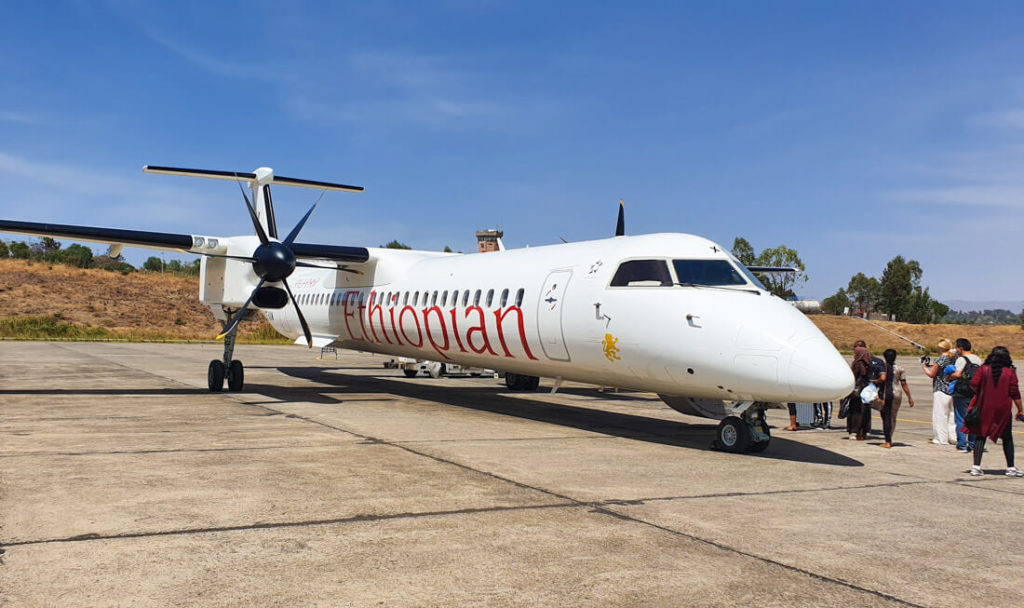
Traveling around Ethiopia by train
There is one train line connecting Addis Ababa with Djibouti country via Dire Dawa (the closest big city to Harar). It runs every other day, one day towards Addis Ababa and one day towards Djibouti.
A one-way ticket from Dire Dawa to Addis Ababa costs 600 birr (price for foreigners).
The train has been built by the Chinese and it’s funny that, at every station, you see Chinese people telling Ethiopian employees what to do.
Traveling by train is always great but I will never catch the Ethiopian train again, for the following reasons:
- It’s very unreliable. We stopped for around 3 hours due to a bus breakdown. Also, the day I was supposed to catch it, the train never arrived because of another breakdown, so had to wait for one additional day.
- The train station is very far away from the city. Good luck negotiating the price of a taxi ride. When I arrived in Addis, they wanted to charge me 500 birr, and I ended up paying 300.
- Very long queues for getting in and out, as the authorities check each and every bag and, since they don’t have x-ray machines, they basically make everyone empty their bags.
- The train itself isn’t very comfortable, plus they don’t sell any food, only sodas.
- It’s an extremely busy train with loads of kids roaming around.
🏨 Accommodation: where to stay in Ethiopia
Ethiopia is well-sorted for hotels, some of them being very good value for money options.
You can check them all on booking.com .
Most hotels owners will ask you to pay in USD but, as I told you in the money section, better to exchange those USD in the black market, get 20% extra, and then pay your hotel in birr.
Creepy hotels – When I was passing through a city, I had to stay on 1 or 2 occasions in one of those creepy hotels which are OK for 6 hours and cost less than 4USD. They are all over the country
Backpacking Hostels – You can find some in Addis Ababa and also in cities like Gonder.
Guest Houses, nicer hotels – Decent accommodation costs from 400 to 600 birr for a double room, and you can find them everywhere, all over the country.
Mid-range hotels – There is also a wide range of relatively good hotels, all of them starting at 900 birr or so.
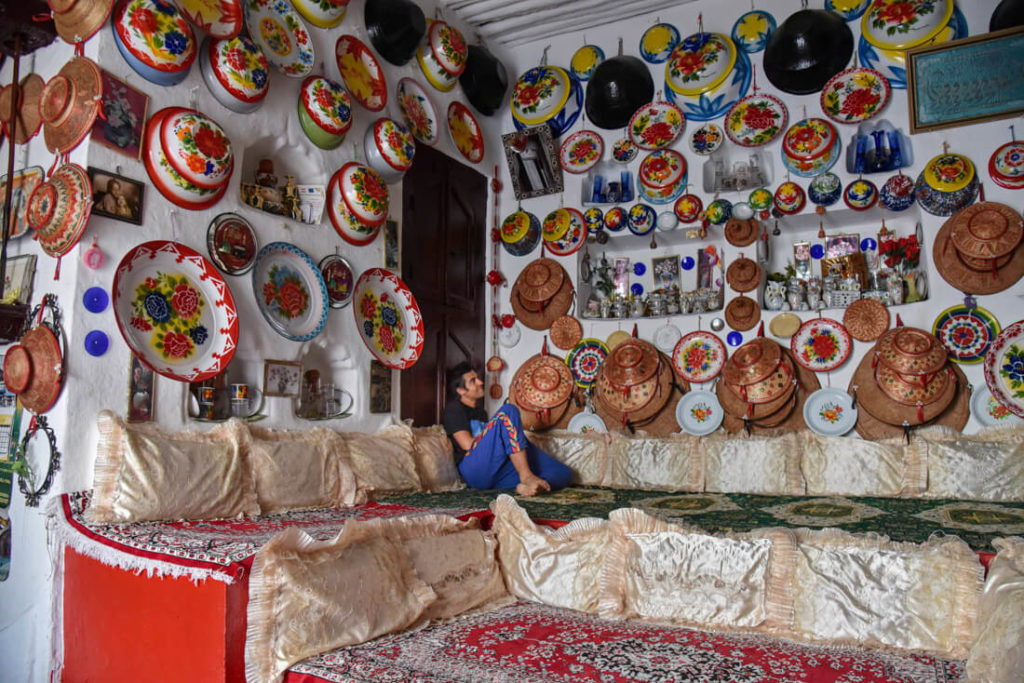
❗ More resources for traveling in Ethiopia
📢 In my Travel Resources Page you can find the list of all the sites and services I use to book hotels, tours, travel insurance and more.
Useful websites for more Ethiopia travel tips
All Addis Around – For everything related to events, restaurants and bars in the capital.
Migrationology – For anything related to Ethiopian food.
All guides and articles for traveling in Ethiopia destination
- Omo Valley Travel Guide
- A City Guide to Lalibela
- Danakil Depression Travel Guide
- Trekking Guide in Simien Mountains
Travel guides to other countries in Africa
- Eritrea Travel Guide
- Somaliland Travel Guide
- Travel Guide to Sudan
- Travel Guide to Egypt
- Libya Travel Guide
- Mali Travel Guide
- Travel Guide to Mauritania
- Tunisia Travel Guide
This Ethiopia travel blog was a long one, a post in which I put so much effort, and time! I hope you find it useful and if you have any questions or suggestions, leave a comment in the ”comments” section.

30 comments
Hello! Thank you for all of this wonderfully detailed information! I have a few questions: Are toiletries easy to find? Things like shampoo, body soap, sunscreen, mosquito repellant, etc? Are over the counter medicines available? Like Ibuprofen, Pepto-Bismol, etc. What kind of converter for electronics should be used? Thank you in advance!
Hello Maree! Yes, toiletries are very easy to find. Outside of main cities, you may no be able to find international brands but they do have local brands. Counter medicines are available everywhere. About mosquito repellant, is better to bring it from your home country. In my experience in Africa, I have always found it expensive and not the best quality. For electronics, they use regular EU connector.
What was your experience, i intend to go there this december
I’ve travelled to Ethiopia six times or so over the last ten years. The first time I carefully brought along a crisp US20 dollar note for my visa on arrival. As more tourists have come, the price has risen, but it’s become even easier to get the visa. I really wouldn’t bother getting the Evisa as very often the queue for the Evisa is longer than the visa on arrival. And no need for pristine US dollars, they take pounds, euros and card as well.
Hello Joan,
Thanks for sharing your vast travel experience in Ethiopia. Would you know if there is any buses going from Lamu in Kenya, all the way to Lalibali? And if crossing that frontier is a hassle? The alternative is flying to Addis but with the layover there I think a bus would be faster. Any tips would be greatly appreciated.
I dont think there aren’t direct buses from Kenya to Lalibela. It’s just too remote.
Im interested in traveling to Lilabela but concerned about the current of civil war in Ethiopia. Is it safe for senior age Black Americans to visit? If so could you recommend a tour guy?
Hi there, as far as I know, Lalibela is still within the safe area, but the city is out of electricity and there are no tourists.
correction of email below
Speaking to my in laws who live in Addis, who have relatives in the North- NOT a good idea to be travelling as a tourist outside of AA.
so sorry to bother you but would you please elaborate a little? I am currently in addis ababa and i’ve asked around and have received conflicting answers. (I think also due to language barriers but) some say it is totally fine. Others say I’m crazy to go around.
Would love some first hand info from people who are currently here. Thank you in advance.
Hello, well not being in Addis right now it seems like you’re in a better place to find out:) The UK Foreign Office has got some very detailed advice on its website- says Lalibella is ok. I would read that carefully. And whatever you do, don’t go to Tigray. Good luck.
We will be near Ethiopia in late March 2023 and would love to visit Lalibela holy land churches for 3-4 days. Could you advise how to tour them if we fly from Addis Ababa? We are Black Americans and do not know the local language. Thank you.
hi, there’s a tourist office in Lalibela, in the center of the town, where you can buy the tickets
Actually one and half day is enough to visit all the 11 rock cut churches. You could visit some county side churches combining hike to the highlander farmer village where you see their way of life, even take part in their daily activities… Lalibela based tour agent “Highland Eco trekking tours” is known for organizing authentic experience in the area
To Dr King: We went a couple years ago and used a guide named Alex Aregaw( +251 92 019 0138 on Whatsapp or [email protected] by email). He’s also on TripAdvisor: https://en.tripadvisor.com.hk/ShowUserReviews-g480193-d7033629-r793913298-Lalibela_Local_Tour-Lalibela_Amhara_Region.html he is the guy in the mask and white shawl in the first photo. His English is good and he’s very polite and nice to deal with. I occasionally keep touch with him on Instagram, and apparently a few tourists are trickling back now, and water and electricity are back, after they were destroyed when the TPLF invaded last Christmas.
For the author of the article: I’m amazed you got pickpocketed twice in Tigray! We spent like 15 days in various parts of Tigray and never encountered any crowds or groups of people, even in Axum and Mekele. We even had not been locking our car — I realized after we had been driving it for like 10 days that when closing the driver’s side door, it automatically unlocked the car — and no one ever stole the GoPro out of our windshield. But, I was always parking in hotel parking lots or I had been paying a local guy to watch the car if I parked in the street.
Thanks for your advice EG. Truly appreciate it. Peace
Hi, thanks for the useful information. How long do you suggest for a trip in Ethiopia ? I’m planning to cross the border from Sudan and after Ethiopia move on to the next bordering country. Regards, Suné from South Africa 🇿🇦
difficult to say! I spent there 6 weeks, the country is huge! but from crossing from north to south save at least 3 weeks for all the highlights!
Hello, This is very informative. What about getting sick from drinking the water or eating food, for someone who has not been there before? What precautions should one take?
I’d only drink mineral bottled water and be careful on where to eat meat
We just returned from Ethiopia. We travelled as a family with a 8 y.o. child. We’ve been in the Omo Valley with Lalo Tours. They gave the best price from the beginning. 400 USD for 2 days 2 nights everything included. It was the best part of Ethiopia trip. After this we went in Danakil with ETT after long negotiations we have obtained 900 USD for 3 days 2 nights tour. This part was very adventurous. 2 nights sleeping under the sky. You can have mosquitos, wind and dust. Beautiful and incredible sceneries. Don’t expect more than basic conditions for food and accommodation. You should come preprepared. After this it followed Lalibela where we had the best accommodation in all Ethiopia at Ben Abbeba local guide for 40 USD payable in in Birr.
Some tips and tricks:
1. Don’t use ATMs or official exchange offices. Come with USD in cash and change it in Addis on black market. We managed to change it for 99.5 for 1 USD (We heard about 110 for 1 USD). Go to Meskele sq pick up a restaurant and ask discreetly about changing money. Like this all the prices will drop to almost 50% for you.
2. In Addis specially look up for pickpocketing, snatching of the phone from hand, etc. We didn’t experience but we met people who did. So be very aware. We used money belt for USD transportation. For birr it is impossible because you will get a lot of birrs for your USD. Use a backpack.
3. In Addis use Ride app for ridesharing. Select pay in cash and you will have dirt cheap rides.
4. Everywhere it said that if you use international flight with Ethiopian Airlines you will have almost 50% discount for internal flight. Is nobody checking this. So, I believe if you tick on their website that you have am international ticket with them, it will work even if don’t have in reality. More than this if you want to be sure and you don’t have luggage you can make online check-in and you will not face any question from anyone. Another trick is that if you have international flight with them, once in Addis change your USD in birr on black market and after this go to Ethiopian Airlines Office and buy your domestic tickets with cash. Like this you will have the smallest prices.
5. Political situation. It can become quite instable sudden. During our stay in Amhara started some violent demonstrations, especially Gondar. In Lalibela was peaceful, but we didn’t have mobile internet, and, in some parts, we heard a lot of gun shots, the locals said that people buy weapons and test them… Keep an eye on BBC section for Ethiopia and western embassies. Local guides we will tend to minimize the danger, but it is there.
6. If travelling with children, be aware of the sanitation conditions. Ours got food poisoned and for 3 days it was a nightmare with continuously vomiting, diarrhea, high fever, fatigue In Addis we didn’t find any antidiarrheic medicine, just antibiotics that worked finally. We also faced another problem, that by our mistake, we had all the medications in the luggage and Ethiopian Airlines lost them for 10 days. So, travelling with small children can become difficult.
7. Erta Ale volcano activity. It is totally different from the lava lake that you can see it on YouTube. Now there are 2 small volcanic cones like 3-4m in diameter that spit lava. Guides said that the situation is changing each day. You can see the lava or if unlucky only smoke. Be prepared because the smoke can be quite irritating. A face musk can help but not too much. Especially with children in Dallol area you will fill incredibly hot. Drink plenty of water, otherwise there are chances to faint from heat. The guides and agencies are totally unprepared for something like this. You will not have somebody with you permanently to take care. You must handle it on your own.
I will be happy to answer to other questions if there are any. Safe travel for everybody!
Buf! this is one the best travel report/feedback we’ve ever got in ATC. Thanks a lot Vladimir!
I’ve just been researching the visa situation for Ethiopia, and came across your site. The fees are currently vastly different to what you have here ($82 for a 30 day visa, $202 for 90 days, extension $102 and $302 respectively). Your site is very interesting. I am planning an overland trip from Cairo to Cape Town early 2024. 😀
It seems they increased prices, thanks a lot for the update!
I’ll be a black American solo female traveler in 2024 to AA and this detailed info has me excited and informed instead of intimidated and uncomfortable. Fortunately, I currently live in Washington, DC in an Ethiopian community where these beautiful people are my neighbors and small business owners. Daily I interact with them, learn a word or two of Amharic, and eat their food (which I also have a love/hate relationship with ;)) Safe travels, everyone!
Have a lovely trip Chelsea!
You are out of date on. VISAS. Embassies no longer do them VOA no longer available unless you are from an AU country. So you must use e visa..where prices now 82 and 202 dollars…for 1/3 months.
thanks for the update!
You really are amazing. Thanks for the very interesting and comprehensive info. I have 2 friends who have just come back from travelling in Ethiopia and I am planning a trip there myself.
Leave a Comment Cancel reply
Your email address will not be published. Required fields are marked *
Notify me when new comments are added.
Join our Expeditions
From Syria to Iraq in Pakistan, Against the Compass is finally running expeditions to the most epic and off-the-beaten-track countries.
We have scheduled expeditions for every month of the year.
Latest posts
- Backpacking Venezuela Travel Guide (2024)
- How to travel to Afghanistan during Taliban rule (2024)
- How to visit Los Llanos in Venezuela
- How to visit Angel Falls and Canaima National Park
- Things to do in Haiti in a 1-week itinerary

Ethiopia Travel Guide
Your ultimate ethiopia travel guide, with tips, things to do, and best things to see in ethiopia. great for first-time and returning travelers..
Located in the Horn of Africa, Ethiopia is the second most populated country in Africa.
Other than the fact that this African country was never colonized by a European power (along with Liberia), Ethiopia is known for its rich culture, delicious coffee, unforgettable landscapes, and friendly people.
It is also the only African country that has its own alphabet (an alpha-syllabary) which consists of 209 symbols and 25 letter variants.
This Ethiopia travel guide will help you plan your next vacation.
Popular Guides
- Cycle Ethiopia
- Isolated Places
- Places to Visit in Africa
Our Highlight
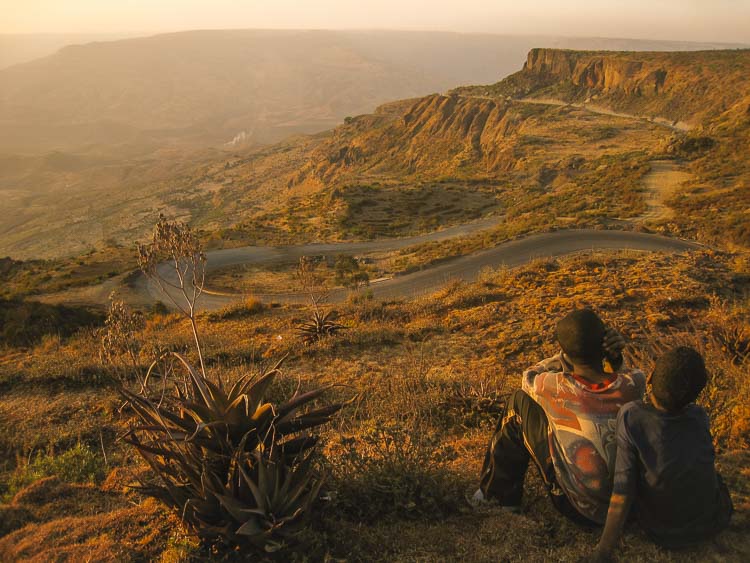
Table of contents
Table of Contents
Fast Facts about Ehtiopia
- Ethiopia power voltage is 220V 50Hz; Plug C, E, F & L
- Ethiopian currency is the Ethiopian birr and is around 20.8 ETB to 1 USD
- Proof of an onward or return ticket is frequently asked for upon arrival in Ethiopia.
- If you are planning to enter Ethiopia by land, you will need tourist visa in advance from your local Ethiopian Embassy.
- A yellow fever vaccination is not obligatory in order to enter Ethiopia, but if you have recently traveled to a country where it is present then you will need proof of immunization.
- Avoid travel to the border with Kenya, Somalia, Sudan, South Sudan and Eritrea due to lack of security and a threat of violence and kidnapping
- Several vaccinations are highly recommended including Yellow Fever, Typhoid, Hepatitis A, Hepatitis B and Meningitis.
- The water is not potable ; drink only bottled water.
- SIM Cards: If you are planning on staying in Ethiopia for longer than a week, bring a cellphone to confirm flights, book tickets, call taxis etc.
- Only select stores sell SIM cards but you can buy refill cards almost anywhere!
- SIM Cards : You can get a local sim card from Vodafone or Orange in Cairo. We suggest getting a SIM card at the airport when you arrive.
Things to See and Do in Ethiopia
- Erta Ale: Come see the most active volcano in Ethiopia. Famed for its persistent lava lake in the crater, it makes a great sight for those ready for the adventure up the volcano.
- Blue Nile Falls: One of the most popular places in Ethiopia,take a short hike through the countryside to see this magnificent waterfall. Standing at 138 feet, fans of nature will love this. You might get lucky and also see a rainbow.
- See where the Blue and White Nile Meet
- Lalibela Churches: Declared a UNESCO World Heritage Site, visit these historical 11 churches. Made from a single rock 900 years ago, these churches are a stunning sight, as well as culturally significant for members of the Ethiopian Orthodox Church.
- National Museum of Ethiopia: Learn more about Ethiopia by visiting this museum. Featuring exhibits, Ethiopian art, and fossils from extinct creatures, the museum also includes “Lucy”, a partial skeleton from a human who lived 3 million years ago.
- Simien Mountains National Park: Featuring rare Gelada baboons and Walia ibex, spend a day at this park. Activities include the Jinbar Waterfall, Ras Dashen (highest mountain in Ethiopia), and hiking through Mount Bwahit.
- Fasil Ghebbi: Head to Gondar to see these impressive ruins from a 17 th -century fortress city. Once home to Ethiopian emperor Fasilides, it is now a unique journey into the past.
Accommodation
Budget: You can find budget guest houses and hotels for 325-600 ETB per night. These places come with simple rooms, a lounge area, free breakfast and Wi-Fi, and a hotel restaurant and bar.
Mid-Range: You can find mid-range hotels for 1,175-1,825 ETB per night.Enjoy private rooms and suites with minibars and tea/coffee, a hotel restaurant and bar, a gym, an indoor or outdoor pool, room service, and airport shuttle.
High-End: You can find five-star hotels in the price range of 2,940- 8,250 ETB per night. Amenities include private suites with living rooms, free breakfast, multiple hotel restaurants, a cocktail bar, spa services, a gym, a swimming pool, and hot tub, and room service.
Spicy meat and vegetables are a staple of Ethiopian cuisine. At the same time, members of the Ethiopian Orthodox Church abstain from eating animal products every Wednesday and Friday, and so there are many vegetarian dishes/alternatives available as well.
The national dish is Doro Wat (spicy chicken stew). Other popular meals include Tibs (sautéed meat strips), Shiro be Kibbe (legume stew), and wat (stew made from meat, vegetables, spices, and clarified butter). You can also look for Injera, a sour flatbread that’s very popular.
There are sit-down restaurants where you can sample more of Ethiopia’s cuisine. In total, you can expect to pay 1030 ETB per day in major cities like Addis Ababa or 450 ETB for smaller cities.
The Best Ways to Get Around Ethiopia
Getting to ethiopia:.
Flights: Addis Ababa Bole International Airport, located 3.7 miles from the city center of Addis Ababa, is the main airport to fly into. You can check for the best flights to Ethiopia on Skyscanner .
Transportation:
Buses: Buses are a cheap way to get around. Minibuses are best for traveling throughout towns, though you can also take them to go between cities.
A trip on a minibus from Gondar to Bahir Dar, for example, will cost about 20 ETB. You can also look for luxury buses that are air-conditioned and travel between cities. Take a luxury bus from Addis Ababa to Bahir Dar for 340 ETB. Tickets for luxury buses should be booked at least a day in advance.
Taxis: You can find two types of taxis—shared and private.Shared taxis willfollow certain routes and include multiple passengers in a cab (similar to a bus), while private taxis do not have fixed destinations. It is best to negotiate the fare at the start of the trip and check around to make sure you are being given a fair price.
Car Rental: You can find car rentals that come with an experienced driver. Self-driving is not possible in Ethiopia due to the conditions of the roads. Prices start at 3,530 ETB per day.
Uber: No Uber, but there is ZayRide, a taxi app similar to Uber.
When to go To Ethiopia
The best time to visit Ethiopia is during the dry season of October through June. The dry season means there is less of a chance of rainfall, which makes it great for outdoor activities. It is also the period when nature is at its peak beauty, particularly in the highlands.
Where to Stay in Ethiopia
Best Western Plus Addis Ababa: When in Addis Ababa, stay at this popular hotel. Just a 20-minute ride from the National Museum of Ethiopia and Holy Trinity Cathedral, the hotel comes with free breakfast and Wi-Fi, room service, an indoor pool, a spa, a fitness center, and a hotel restaurant and bar.
Sora Lodge Lalibela : Come stay at this well-rated hotel in Lalibela and see great views of the Asheten Mariam Mountain. The Church of Saint George and Bete Maryam are both just 5-6 minutes away by car. If you prefer to stay indoors, the hotel includes three choices of rooms (standard, rock-hewn, and tukul rooms), free breakfast, a hotel restaurant and bar, room service, an airport shuttle, and laundry service.
Goha Hotel: Located 1.8 miles from Fasil Ghebbi and Fasilides Palace, this is a great place for seeing some top destinations or just for staying inside. With Goha Hotel being situated on a hill, you can see great views of Gondar from the hotel while enjoying the hotel restaurant that serves European cuisine, live entertainment, an outdoor pool, a café, a hotel bar, and sun loungers.
Check out our favorite booking platforms Booking.com , Tripadvisor and VRBO for the best deals on accommodation.
What to Pack for Ethiopia
Ethiopia is in the tropical zone lying between the Equator and the Tropic of Cancer.
It has three different climate zones according to elevation: tropical, subtropical and cool zone.
The dry season is from September through to March, which is the best time to travel to Ethiopia.
There are two rainy seasons, the belg (short rains) in April and May and the long rains from July through to the end of September.
- Waterproof bag – the bag has two functions, protecting your stuff from the rain and also from the dust, especially if you’re travelling to drier regions.
- Personal Safety products – Addis Ababa is a safe city with little violent crime but lots of petty theft. As Jill from Jack and Jill Travel explains, “I’d never experience so many attempts at pickpocketing in such a short amount of time before.” Some tips include being extremely careful when leaving/arriving by bus in Meskal Square while also avoiding the use a backpack with anything valuable in it in Merkato. Before leaving for your trip, make sure to pack some personal safety products , like money belts and locks, so that you can keep your valuables safe on your trip.
- Protection from the elements – pack sunscreen, sunglasses, a hat and bug-spray to prevent getting bitten by a mosquito (that might have malaria!).
- Avoid packing dark colored clothes – tsetse flies are drawn to dark colors, like blue and black clothing, and their bite can give you African Sleeping Sickness. Stick to light, neutral colors but avoid packing white clothes as they will get dirty and dusty pretty quickly.
- Footwear – Pack a pair of lightweight, durable and comfortable shoes that you don’t mind getting dirty!
- Layers – pack the basic tropical clothes and make sure to include long pants, long-sleeve tops and some warm clothes for those chilly nights.
See our packing tips: packing list for smart travel & How to Pack for a Safari
Ehtiopia Travel Guide: Best Booking Resources
Whenever we travel to we make sure to start with these companies. We have tried a lot of different ones over the years and all of these have consistently proven to be the best when it comes to offering great prices.
We have used every one of these personally and continue to do so.
- Booking.com : This is our go site to when comparing prices for accommodation. It usually has the cheapest prices, especially in Europe and we love their interface. Not to mention you get free cancellation and you are guaranteed the best price.
- Trip Advisor : What we like about Trip Advisor is that we can look at all the reviews and then book our accommodation. TripAdvisor is where we go when we want to compare prices with multiple accommodation providers.
- VRBO : is the main search engine we use when we are looking for a home or apartment rental. It can sometimes be cheaper than hotels and it is the best way to stay in areas that offer a more local feel.
- Hostelworld : With one of the largest databases of hostels in the world, Hostelworld is the go-to site when you are looking for budget accommodation.
- Skyscanner : This is the first place we check for flights. It consistently comes back with the cheapest and best options. It allows us to compare a lot of airlines to get the best price.
- Rome 2 Rio : If you want to see how to get somewhere by plane, train, bus, ferry or car Rome2Rio lays it all out for you as well as related costs.I love how they show it all to you on a Google Map and it works offline.
- Get Your Guide: For all your day trip and city guide needs, we use Get Your Guide. It has the world’s largest collection of things to do with more than 30,000 activities in 7500 destinations.
- World Nomads Insurance: When traveling to Italy you should always have travel insurance. We have found the best bang for your buck is by far World Nomads.
Ethiopia Travel Guide: Related Articles
To browse all our articles and guides about Ethiopia click here.
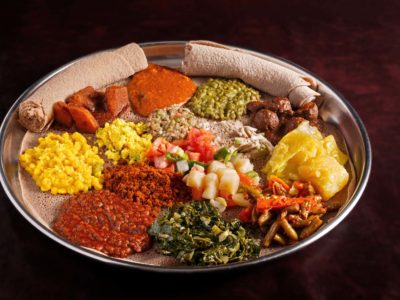
Best Ethiopian Food: 15 Ethiopian Dishes to Try at Home or Abroad
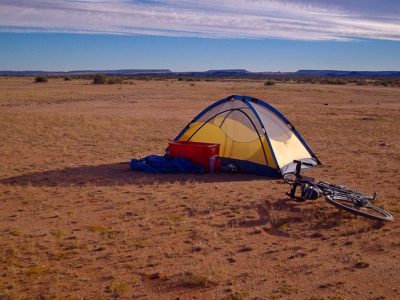
What it is like to Cycle in Ethiopia on the Tour d’Afrique

What You Need To Know Before You Travel To Ethiopia
This post may contain affiliate links. This means that for any qualifying purchase you make through one of my links, I may earn a small commission, at no cost to you. For more information, check out my disclosure .
There are a few things you should know before you travel to Ethiopia. This destination is like no other, and its sheer beauty will blow your mind. However, traveling there is by no means easy.
I wish I had better prepared for the trip and read a bit more about the challenges it presents. This would have made my life much easier—or at least I wouldn’t have been so frustrated when things went (repeatedly) wrong.
In this post, I will do my best to highlight all the things you need to know before you travel to Ethiopia. I hope that you’ll go there with plenty of information on what to expect about this destination and tips that will help you fully enjoy your trip.
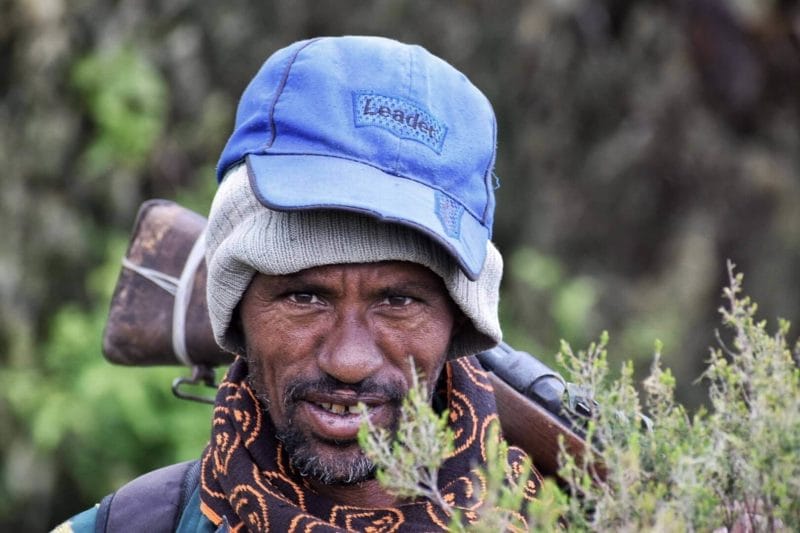
Table of Contents
37 Important Things To Know Before You Travel To Ethiopia
It’s more populated than you may think .
Most people who have yet to travel to Ethiopia have no idea how big the country is. Ask your friends and family to tell you how many people live in Ethiopia and they will shoot random numbers – 20 million! 12 million! – each of them wrong.
According to the World Bank , in 2018 more than 109 million people lived in Ethiopia. Ethiopia capital Addis Ababa counts more than 7 million, according to official data – though apparently the actual number is closer to 10 million. Dire Dawa, which is considered a small to mid size town, almost has half a million. Arba Minch counts more than 200000.
In other words, Ethiopia is a huge country and it is very highly populated, though there are some areas which are almost completely uninhabited due to the harsh climate conditions.
It borders with 6 countries
Land crossing is easier said than done in this continent, but just to give you an idea, Ethiopia borders with six more countries – Eritrea, Djibouti, Sudan, South Sudan, Kenya and Somalia.
GOOD TO KNOW: Keep in mind that the only viable border between Kenya and Ethiopia is a Moyale, which is hardly the safest place in Africa.
It’s where Lucy was found
Many people – including myself – only remember this once they travel to Ethiopia. This – and most specifically the Danakil – is thought to be the cradle of humankind. This is where the 3.5 million-year-old rests of Lucy, the famous hominid skeleton currently on display at the National Museum of Ethiopia in Addis Ababa, were found.
GOOD TO KNOW: Another cool museum to visit is the Ethnological Museum of Addis Ababa, which will take you through the country’s culture and history.
People are generally friendly
The first think you’ll notice when you travel to Ethiopia is how friendly people are. Locals are generally curious to know where you are from, what you are doing and whether you are enjoying the country.
They will take a chance to practice a little English with you whenever they can. They are very social – you’ll often spot them sitting in coffee shops enjoying coffee, or hanging out in the streets and square, chatting to friends.
More than anything else, Ethiopians love dancing – from the traditional dances you’ll have a chance to see at a “cultural restaurant” to the more informal ones at parties, don’t miss the opportunity to mingle with them and learn some moves (though I shall warn you, Ethiopians have the moves, and you won’t be able to replicate them!).
The only area where people appear to be less friendly is the Danakil region, home of the Afar region. Most Ethiopians accuse the Afar of being “crazy and unpredictable,” and impossible to work with.
I don’t like giving such extreme judgements, and my experience is too limited to express an informed opinion. Sure enough, the hardship and isolation in which they live doesn’t help establishing relationship with visitors.
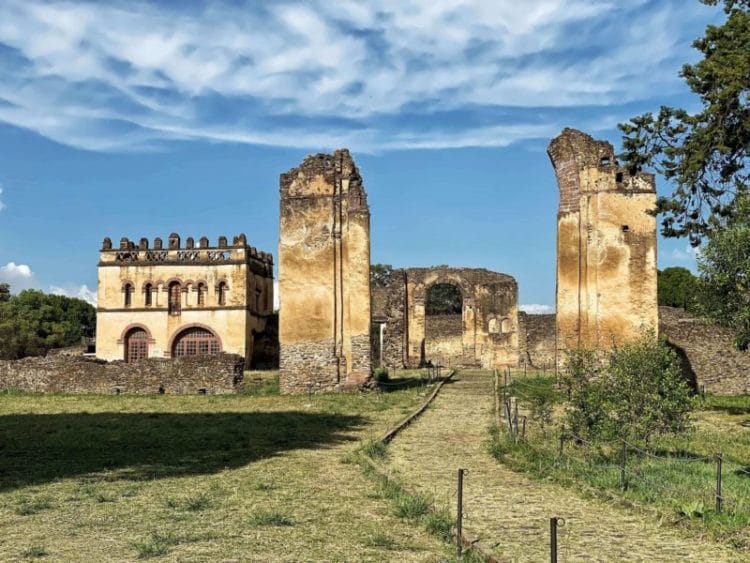
There are 9 UNESCO sites
You will quickly learn when you travel to Ethiopia that Ethiopia has more UNESCO sites than any other African country. The most famous one is the rock-hewn Churches of Lalibela (the one that comes to mind is usually Bete Giyorgis, the cross-shaped one), which really have to be included in your itinerary (they are a real must-see).
Another UNESCO World Heritage Site is the Fasil Ghebbi Castle in Gondar (among the only castles in East Africa). Others include the Simien Mountains and its National Park; the fortified historic town of Harar (Harar is thought to be the fourth holiest city of Islam), and Aksum, where the famous Ark of the Covenant is held.
The landscape is breathtaking
With highlands, lakes (I am thinking of the impressive Lake Tana, or Langano in the Rift Valley), high mountains, the Blue Nile and Blue Nile falls, a high volcanic plateau and a desert depression in Northern Ethiopia, this country has a variety of ecosystems and – with that – a variety of climates. You can rest assured that the landscape in this part of the world is absolutely heart-stopping.
When you visit Ethiopia, you are inevitably mesmerized by the views of places such as the Simien Mountains – especially Jinbar Waterfall. You will think that the region of Gheralta, home of the Tigray Churches, looks like the perfect set for a Western movie – this really is a must-visit.
Yet, it is Danakil, the region on the border with Eritrea, that will take your breath away with the Mars like landscape of Erta Ale Volcano and the vivid colors of Dallol.

Wildlife is unique
This is not the safari-kind of sub-saharan Africa you may be thinking of – you won’t be seeing cheetahs and leopards as you may in South Africa. Yet, travelling to Ethiopia can be incredibly rewarding in terms of wildlife.
The UNESCO-listed Simien Mountains National Park is home to the beautiful gelada baboons; the Awash National Park is inhabited by the East African oryx, warthogs, greater kudus and more. The Mole-Rats live in the Bale Mountains. You may also have a chance to spot the blue-winged goose.
Altitude sickness may hit you
One thing to keep in mind before you travel to Ethiopia is that most of the country is located at more than 1500 meters above sea level.
Chances are the first place you’ll visit is Addis Ababa, which is at around 2350 meters above sea level (the highest peak in the metropolitan area is Entoto Hill – simply referred to as Entoto – which goes above 3200 meters!), so you may experience some (or all of the symptoms) of altitude sickness. You may be short of breath and dizzy; you may get a headache; and even insomnia.
Make sure to factor in enough time to get adjusted to the altitude. Things that help in dealing with altitude sickness symptoms are: a diet of easy to digest carbs; drinking lots of water; avoiding alcohol.
As well as heat exhaustion
Heat exhaustion is as much of an issue for people who visit Ethiopia as is altitude sickness. The Danakil Depression, which is often part of the itinerary when you travel to Ethiopia, is where you’ll visit Erta Ale Volcano, Lake Giulietti and Dallol. This is known as the hottest place on earth , with an average temperature of 34 degrees Celsius and peaks that regularly go well over 40 and even 45 degrees.
It’s important that you are prepared for such harsh conditions. Here are some very basic tips:
- Drink plenty of water – two liters per day as a minimum
- Carry some electrolyte powder that you can dissolve in water for cases of extreme dehydration. You can get it here .
- Wear light cotton long pants and t-shirt, better if long sleeved so as to avoid getting sunburnt
- Wear a hat or a bandana on your head to protect from the sun
- Minimize the amount of time you spend outside
- Don’t go to the Danakil if you are a high-risk traveler (for example, if you have a heart condition).
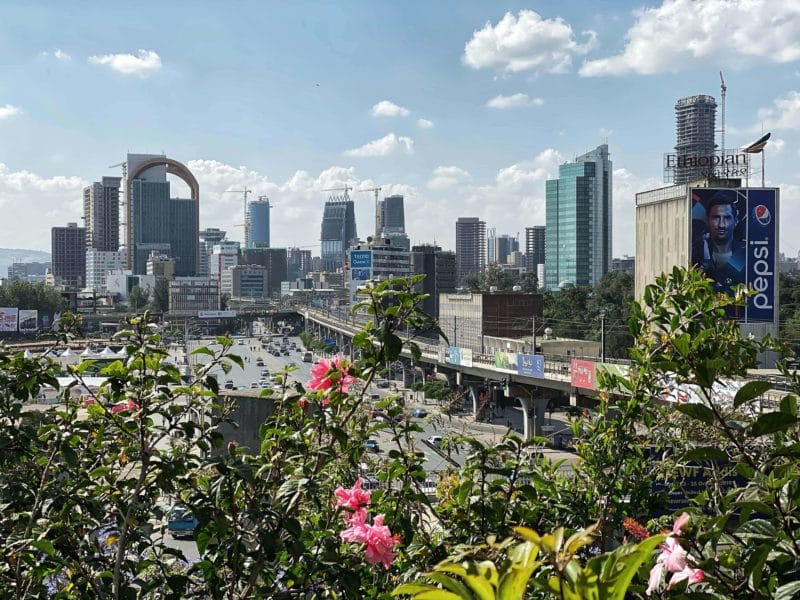
Cities are chaotic
Cities in Ethiopia are mayhem and I recommend visiting just a couple when you travel to Ethiopia. Addis Ababa is a nightmare to get around, with the most congested traffic you can imagine – I think I have seen worse only in large Indian cities such as New Delhi.
Getting from the center of town ie Meskel to the Merkato (the large market) or the Holy Trinity Cathedral is a full ordeal, even if the distance is short. Other smaller cities may not have as much traffic, but they are chaotic nonetheless.
Just picture construction and road works everywhere; improvised markets sprouting at every corner; cars, tuk tuks, buses, trucks, bikes, horse pulled carriages, donkeys, goats and cows all trying to dodge the streets and the potholes, and you may get an idea of what to expect. It’s fun to observe, in a way!
The official language is Amharic
There are around 80 different languages spoken in Ethiopia, which include the official ones and the languages spoken by indigenous communities around the country.
Amharic is the official language of Ethiopia. You may want to try to learn a couple of words, but the fact that it has its own alphabet makes it extremely hard. The other main language spoken in Ethiopia is Oromo. The Afar, one of the ethnic groups who live on the border with Eritrea, have their own language.
Though English is widely and well spoken in Addis Ababa and in the most touristy areas such as Lalibela or Gondar, when you go beyond Addis Ababa you’ll find that in other parts of the country people – even those working in the tourist industry – speak little or no English. Just be extra patient, as most people really do their best to understand you and to talk to you!
Ethiopia is on its own time system
This is a little complicated, really, and it can make visiting Ethiopia challenging at times.
The Ethiopian calendar is currently seven years behind the Gregorian one which is the one we commonly used – so they are currently in 2012. In fact, according to the Ge’ez calendar which is the one used in Ethiopia, there are 13 months in a year, 12 of which have 30 days. The 13th month has five or six days, depending on whether it is a leap year or not.
The good news is that you won’t really have to work out which day of the week it is, because working in the tourism industry normally refer to the Gregorian calendar when dealing with tourists. Yet, it is interesting to note how, when filling in the date for tickets to attraction, they indicate a different month and year!
You need a visa to enter
You will need a tourist visa to travel to Ethiopia. You can get it on arrival, and some people argue that the line to get the visa is just as long as the line that people who had previously arranged it. I actually think it is better to get the visa online – the line when I got to Addis Ababa airport were insanely long, whereas I had to wait no more than 5 minutes.
Make sure to enquire with the site of the Ethiopian Embassy in your country to check what documents are necessary to visit Ethiopia. Once you have your documents ready, you can obtain e-visas here .
GOOD TO KNOW: Make sure to check that your vaccinations are all in order before traveling to the country and take your sanitary passport with you – you need to show proof of yellow fever vaccination when entering.
And you are better off with a good travel insurance
You really, truly, definitely don’t want to take any chances when you visit Ethiopia: don’t forget to buy travel insurance before your trip. Get yours here .
Check out my post Why You Need A Good Travel Insurance.
Make sure to also check local media, the site of your Embassy or any travel advisory for up-to-date information on safety in the country when you travel to Ethiopia.
Keep in mind that these – especially the U.S. Embassy – tend to give a rather dramatic picture of what’s happening in the country, often calling civil unrest what is nothing more than a peaceful demonstration and calling off any non-essential travel.
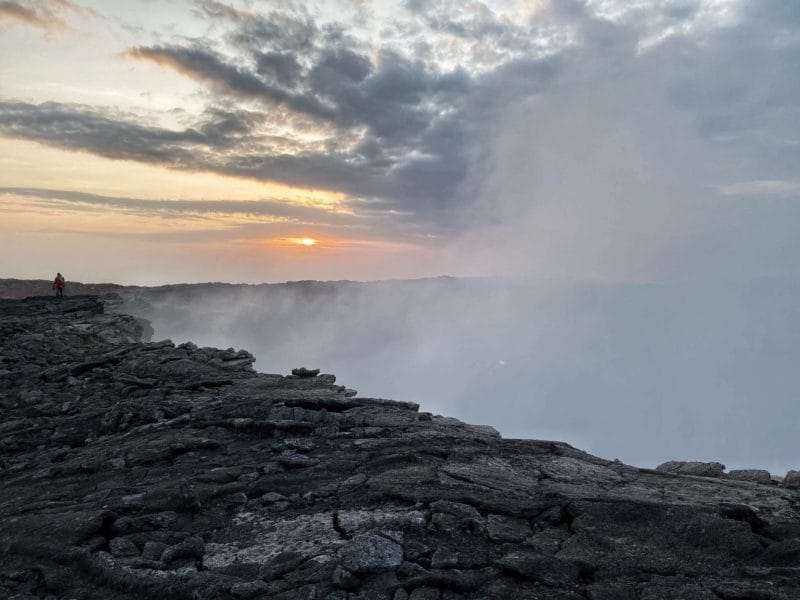
Internet is hardly a thing
Trying to get online when you visit Ethiopia is frustrating at best. The best internet is in Addis Ababa, and even there it is sparse.
While all hotels and guest houses have wifi for their guests, and wifi is available for free at all airports, this really works on and off and you will – at most – be able to get on Whatsapp or Messenger (though you won’t be able to send photos or videos to family and friends and to download voice messages).
Facebook takes forever to upload, and Instagram too. You may be able to download emails – but attachments are hard to open.
If you want to bypass the government blocks you may want to invest in a VPN – there are several apps you can download directly on your phone. You may want to do this before you visit Ethiopia though!
Between the slow internet and the fact that the Ethiopian government regularly shuts down social media you may as well want to give up entirely and enjoy your trip without having to worry about getting online. Warn your family and friends that you won’t be getting online much and set up an out of office reply for your email and deal with it later, once you get home.
You may be able to get a local SIM – but not at the airport
I generally advise to get a local SIM card to stay connected when traveling – it usually is easy to get at airport kiosks. However, you won’t be able to find a ETC (Ethiopian Telecommunications Corp) at Bole International Airport, which means you’ll have to find an ETC shop in town and get in the forever line to get your card.
Apparently you can also get a SIM card at the shop located on the ground floor of Hilton Hotel (about 10 minutes drive from Meskel Square) and there is virtually no line. Or else, you can decide to go on a digital detox when you visit Ethiopia.
Hostels aren’t common
You won’t find many hostels when in Ethiopia – these are simply uncommon there. There is no real hostel in Lalibela. There is Gondar Backpackers in Gondar, which is actually a really nice place, and where you will be able to use the kitchen and do your laundry.
Other than that, your best budget friendly choice will be local guesthouses, which are usually quite basic – you get a room with ensuite bathroom and internet for around $15 to $20 USD, usually including breakfast. Most of them will give you the chance to wash your clothes too.
If you decide to book a hotel room via Booking.com (which is where most local hotels are advertised) make sure that you are assigned the room you have booked and paid for – hotels will often try to place you in a smaller, less expensive room than the one you have paid and it will take a bit of back and forth communication with the receptionist to get what you want.
Make sure to download the Booking app on your phone (and to take screenshots of your booking) and be prepared to show your reservation until you get the room you have reserved.
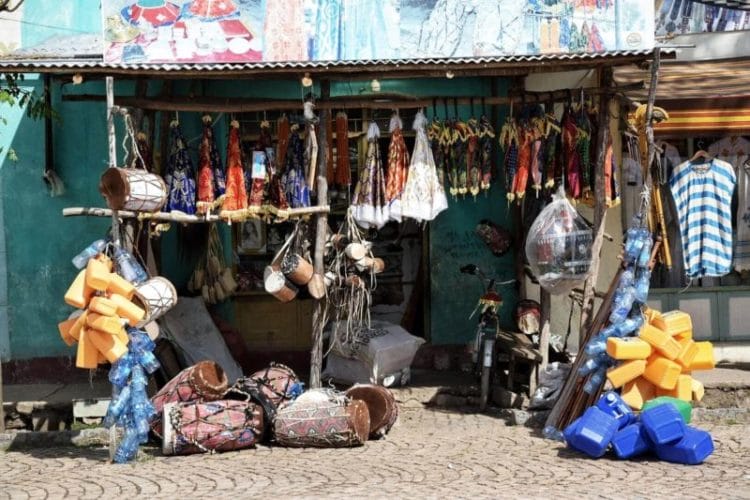
Tuk tuks are the most budget friendly way to go around
Public transport isn’t much of a thing in Ethiopia, at least not for foreigners. There are shared / public taxis (minivans) and contract taxis, which are just regular taxis.
However, the best way to go from one place to another in any city when you visit Ethiopia is a tuk tuk, locally known as bajaj. Make sure to call them that when looking for one, and by all means haggle the price!
GOOD TO KNOW: My friend and I managed to score a tuk-tuk for a full day tour of Gondar for around 600 Ethiopian birr – that didn’t include entrances to the various attractions.
Domestic flights are cheap
You will quickly realize when you visit that Ethiopia is a huge country but ground transportation tends to be a bit lacking. Long distance buses exist, but they aren’t frequent, and you may be forced to pay for an expensive private transfer to get from one place to the other.
The best alternative to cover long distances are domestic flights, which can be quite inexpensive especially if you flew on Ethiopian Airlines to get to Ethiopia. You will have to use your international flight reservation code to access the best deals for domestic flights.
Keep in mind that Ethiopian Airlines has a thing for changing the flight schedule, and may even reschedule you to fly on a different date than that you had originally booked. You may want to book your flights via a travel agent that can deal with the schedule changes and reschedule your flights for you.
GOOD TO KNOW: Addis Ababa, Lalibela, Gondar, Aksum, Mekele and Bahir Dar, which are likely going to be in your itinerary, are all served by airports.
You have to go through security twice at the airport
This is something that I can’t really explain, and that for some reason exhausts me. Upon getting close to the airport, you’ll find a road block where they military will ask you to show your passport. Before getting inside the terminal, you will have to show your passport again. Then, you’ll have to go through security – shoes off and all.
After checking in, you’ll have to wait in the main lobby until your flight is called and then you’ll have to go through security again.
Withdrawing cash is easy
Cash is king in Ethiopia, and you will need it to pay anything – from small fees to enter a museum, to restaurant bills and even tours. Credit cards aren’t easily accepted – even when they tell you they are! You can exchange foreign currency at the airport as soon as you arrive (the exchange rate is the same you’ll get in town, but it’s much easier to get it done there).
Alternatively, you can withdraw cash easily at the many ATMs that can be found in any city. If you are planning to tour the Danakil, make sure to withdraw cash before as you won’t find any ATM in the desert!
GOOD TO KNOW: The local currency is the Ethiopian Birr, but US Dollars are widely (though unofficially) accepted in hotels and travel agencies.
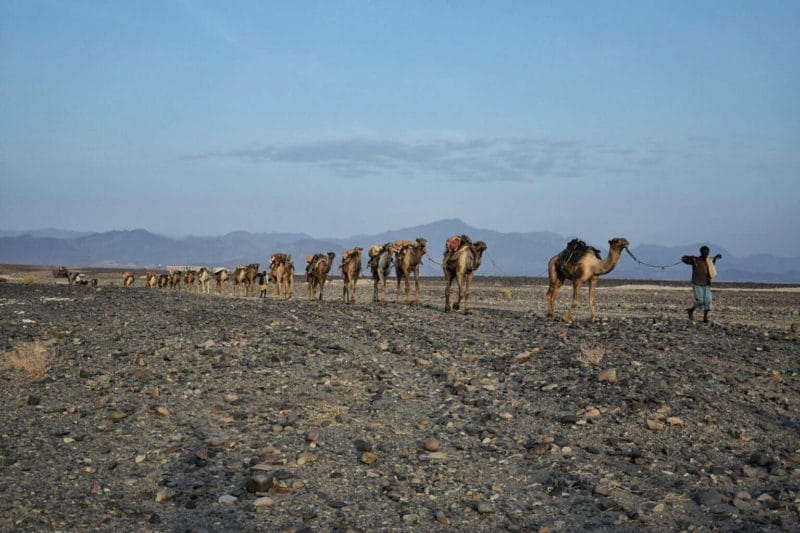
Guided tours are (unfortunately) necessary
Though guided tours aren’t necessary to visit places such as Lalibela, Gondar and Aksum (also known as Axum and home of the Aksumite obelisk), there is no way around it in other cases: whether you want to hike the Simien Mountains, visit the Tigray Churches, wonder around the Omo Valley and its National Park or the Danakil Depression in Northern Ethiopia is in your travel plans, you will have to join a guided tour.
I have always said that guided tours are a good thing – you get a guide, you get everything arranged for you, and the prices are usually convenient for what you get.
But when you travel to Ethiopia, this isn’t necessarily the case. A guide quoted my friend and me the equivalent of a whopping $170 USD for a full-day guided tour Axum! Keep in mind that’s not even what you pay for a complete tour of Rome!
So whether you are about to sign up for a day trip or for multi days tour, make sure you know what to expect.
Tour companies tend to charge random fees – so you’ll see people taking part in the exact same tour, each one of them having paid a different amount.
Paying more doesn’t necessarily mean getting a better service. More often than not you’ll experience accommodation which is between poor and unacceptable, with mattresses that would be better thrown in the garbage. Food is barely eatable. And the hygienic conditions of the places where you stop for meals are dire if not disgusting altogether.
And let me not talk about the guides and drivers. The average ratio is one guide for a group of 25 tourists – not nearly enough in places such as the Danakil where the conditions are very harsh and the guide should be keeping a close eye to the tourists, to keep them safe.
On occasions, you’ll have guides that speak no English at all, and that have no experience in guiding. I had this occur on my tour of the Tigray Churches and when I reported this to the tour operator they literally shrugged the information off and said the guide had been recently hired and would be fired.
Everything shuts for lunch
This reminds me of how Italy used to be when I was growing up! All museums and tourist attractions shut for at least one hour during lunch break, so you may as well embrace it and go for lunch as well.
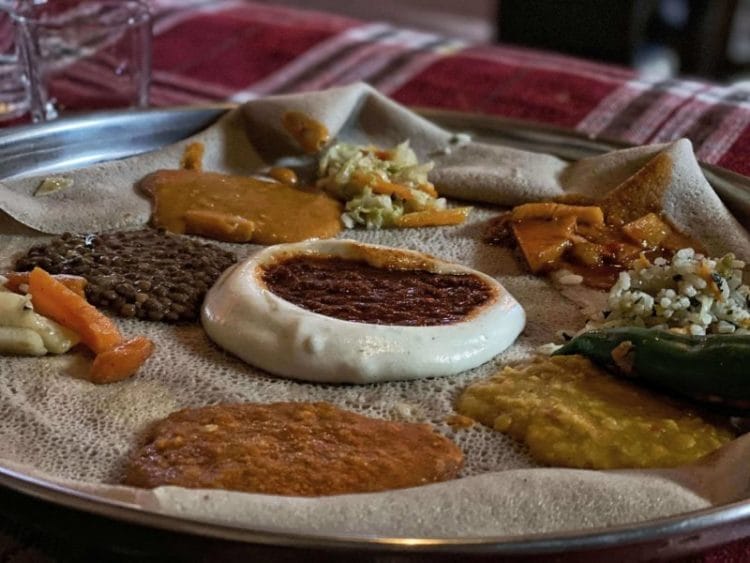
Injera is the main staple of Ethiopian diet
Whether you like Ethiopian food or not is purely a matter of personal taste. I found it to be quite repetitive, but other people I traveled with loved it.
The main staple of Ethiopian diet is injera, a pancake-like very sour and thin bread made of teff flour which is layered with various dishes and which is used to scoop up food – unless you ask for it, you won’t generally be given forks to eat.
The nicest dish is shiro tegamino – a very thick, spicy chickpea paste. Injera firfir, on the other hand, is nothing more than injera layered with scrambled and even more sour injera.
GOOD TO KNOW: Western-style food is available pretty much anywhere in Ethiopia. Thanks to the Italian influence, pasta and pizza are easily found on the menu. Keep in mind they don’t nearly resemble the pasta you’d have in Italy, but they’ll do!
Vegans have it easy
The one remarkable thing about Ethiopian food is that it is incredibly vegan friendly. Ethiopians are Christian copts and they observe a diet of fasting on Wednesdays and Fridays, whereby they avoid eating any sort of animal product. Sit at any restaurant and ask for “fasting food” to make sure you are served only vegan food.
Coffee is delicious
One thing that is always, consistently good in Ethiopia is coffee. This is the coffee capital of Africa and you will have many a chance to observe a coffee ceremony. Walking around cities small or large you will smell coffee being roasted.
A cup of freshly brewed coffee will awaken your senses. For the best coffee, head to Tomoca in Addis Ababa. I honestly don’t think I have ever tried anything so good. Trust me, I drink lots of coffee – and if you visit this country, you’ll end up doing the same.
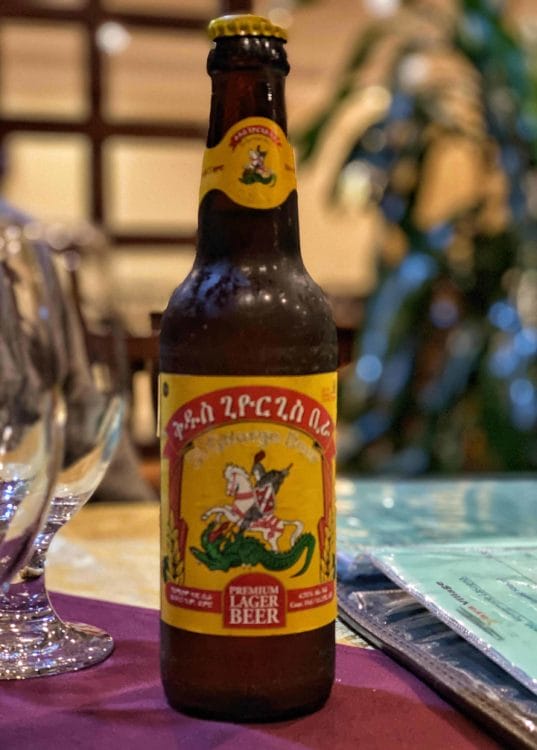
Whereas wine and beer are just passable
There is quite a decent variety of beers in Ethiopia, and even local wines. Local beer is definitely better than local wine. The best beers are St. George, which is commonly found in all restaurants and bars, and Habesha, which is the most refreshing one. Dashen is by far the worst among the local beers.
My experience with wine is limited – I had a glass for dinner when I was in Addis Ababa, and wasn’t particularly pleased with the taste. All in all, opt for a beer if you really need to have a drink!
Water is not safe to drink
By all means, and much like in the rest of Africa, never have tap water in Ethiopia – not unless you use a water filter. Water is not safe to drink, and you may get all sorts of bugs from it. Avoid salads and raw vegetables that may have been washed with tap water.
If you like sparkling water, opt for Ambo Water – it’s delicious.
It’s a safe country
Ethiopia is open to international travel and, for the most part, it is a safe destination and you shouldn’t encounter any major problems when traveling around. Keep your eyes open and belongings safe as incidents such as theft of wallets and cell phones is common in larger cities. I also recommend using your good judgement when walking around, especially at night, as cities tend to have poor illumination.
Yet, touts are common
Though safety is hardly an issue when traveling around Ethiopia, touts are – it’s a common thing you come across in Africa. Faranji (white tourists) are the favorite target of people trying to sell stuff in the streets, self-professed tour guides, bajaj drivers and all sorts of beggars.
The best way to avoid touts is to avoid any sort of eye contact. By all means never smile at them and if they do offer anything, a polite but firm no is necessary.
Children will ask for money
“Hello, money!” is the typical greeting you’ll get from children, from the Simien Mountains to the Omo Valley. They will surround you as soon as you get off the car, or as they see you walk close to an attraction.
They will call you, pull your clothes, pull your hand and at times even pinch you to get your attention and to demand money, pens, and at times even the clothes you are wearing.
Ignoring them or saying no is generally enough to make them desist. If you are even a tiny bit friendly with them (a simple hello, or a high five), chances are they will follow you for a long while, exhausting you.
I know it is harsh – they are just kids after all – but really! Be firm in this. These children should be going to school and not hanging out in the streets demanding money off tourists and if you give them even just a cent, you will be encouraging them to continue!

Hygienic conditions are inadequate
In most places you will see when Ethiopia, hygienic conditions are inadequate, with poor to no sanitation at times. Quite often the only toilet available is a squat one, with no flush and no running water at all. In many places, there are no sinks to wash your hands.
Some of the local “restaurants” where you’ll stop during your tour of the Danakil are beyond filthy – expect to see all sorts of garbage on the floor, with leftover food such as chicken bones, flies all over the place, and nobody taking care to clean. It will honestly test your guts.
You are bound to get food poisoning at some point
Everybody gets some level of food poisoning at some point or another when traveling in Ethiopia. My friend got sick on the third day of our trip and by then we actually thought it may be altitude sickness. I got sick with similar symptoms, but ten times worse, after more than 10 days of traveling, when I had fully adjusted to the altitude.
Try to eat only safe food – avoid things such as raw vegetables which may have been washed with tap water, and even rice, which gets easily contaminated.
Food poisoning symptoms include vomiting, nausea, diarrhea and fever. If you experience any of these make sure to get rest and drink plenty of fluids. Eat very plain stuff such as pasta with just oil, bread, and avoid anything spicy, creamy or cheesy.
Garbage and plastic don’t seem to be a huge issue
One thing that will positively surprise you when you travel to Ethiopia is that the roads are quite clean and that there is hardly any garbage around. Ethiopia is the first country in Africa that established a waste-to-energy plant , located in Addis Ababa and which incinerates around 80% of the city’s waste and supplies around 30 per cent of its household electricity needs.
Except in the Danakil
The only part of Ethiopia where you’ll feel garbage really is an issue is the Danakil Depression, at the border with Eritrea. There, plastic waste is everywhere.
As you walk along the lava flows of Erta Ale Volcano, you’ll see plastic bottles and other plastic waste in each and every crack. It’s sad to see the sheer beauty of the region ruined by so much plastic waste, and I truly wish something was done to clean it up and keep it clean.
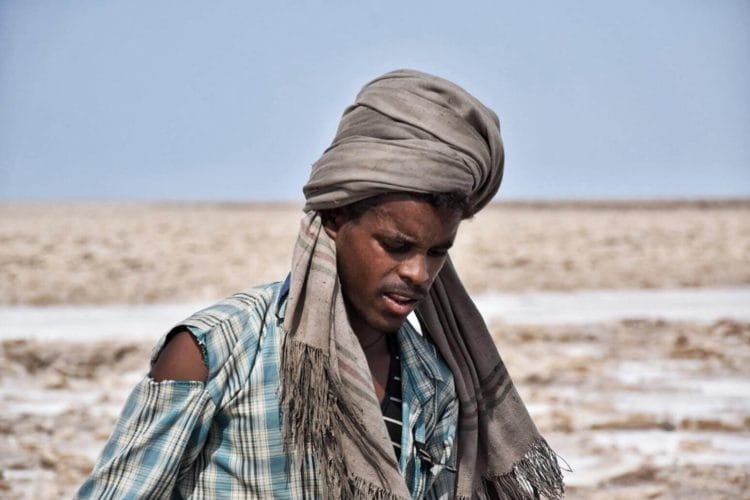
It’s best to visit Ethiopia during the dry season
But this is easier said than done. While temperatures are more or less consistent year-round, the dry season theoretically goes from September to March. But this is a very large country with a variety of climates and rain is not uncommon in certain regions even outside the rainy season.
It literally poured for the entire afternoon and well into the night when I hiked the Simien Mountains in November, and that was meant to be the dry season! My travel advice is to be prepared for all sorts of weather conditions – see more below!
Smart packing is essential
This is especially valid when you travel to Ethiopia and other parts of Africa if you are crossing several climates and may encounter both very cold and very hot weather. Make sure to carry only the bare essentials – you won’t really have any chance to dress up anyways. Also keep in mind that you need to follow local laws and customs even when it comes to what you wear – things such as shorts are a no-no.
The following is a very basic packing list:
- A good pair of lightweight hiking shoes such as Salomon X Ultra 3 Low GTX
- A pair of flip flops or alternatively sandals such as Teva Elzada
- A hat , a headband and a bandana
- A good daypack. I recommend REI Trail Hydro
- A headlamp
- Wet wipes and hand sanitizer
- Toilet paper and tissues – you won’t find it in any toilet around the country, and you will need it when hiking the Simien Mountains or when touring the Danakil.
Whether you take a water bottle with a filter or not is entirely up to you. You won’t come across any taps when hiking the Simien Mountains or when touring the Danakil – the tour companies generally provide bottled water, so there’s little purpose in carrying a bottle.
Further Readings
Make sure to read my other posts about Ethiopia:
- 13 Top Things To Do In Ethiopia – A Two Weeks Ethiopia Tour
- Everything You Must Know About Simien Mountains Trekking
- A Very Useful Guide To Visiting Lalibela, Ethiopia
- What You Must Know Before Visiting The Danakil
Going to West Africa? Read what you need to know before visiting Sierra Leone .
Legal Disclaimer: I was a guest of the Great Ethiopian Run for the first part of my trip to Ethiopia (Addis Ababa and Lalibela) and wish to thank them and Blogilicious for putting together a fantastic trip and for allowing me to have such an incredible experience. Needless to say, the views expressed remain my own.
Pin It For Later!
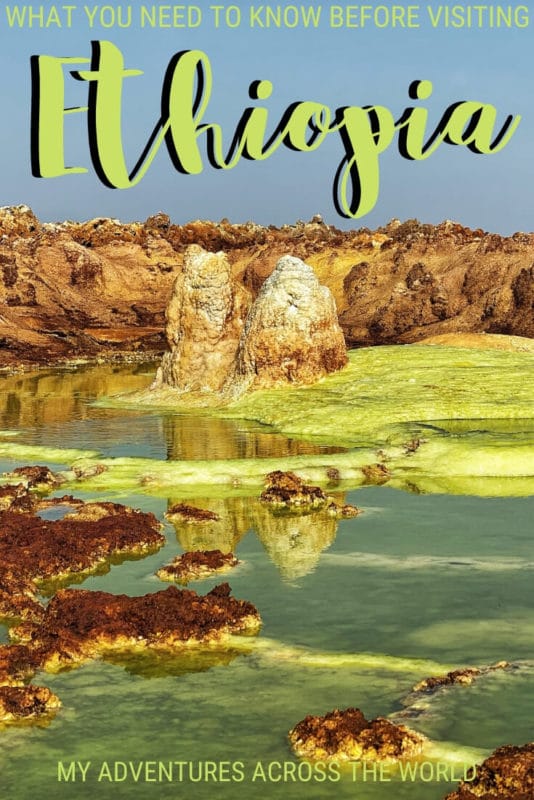
Claudia Tavani
Claudia was born and raised in Italy, but she also lived in New York, Denver, and London. She's a professional travel blogger and certified travel designer who loves planning trips, sharing travel hacks, and packing lists so that you don't have to. Owner of My Adventures Across The World, solo traveler, cat mom to Minnie. Claudia has been featured by the Lonely Planet and the Huffington Post. She has visited more than 80 countries.
6 thoughts on “What You Need To Know Before You Travel To Ethiopia”
I am planning a Big trip with Remarkable Ethiopia Tours In January 2021. It seems a bit expensive, but they have good reviews.
It’s a good feeling to bring some small useful items along to give to the most isolated people. Sometimes I bring cheap reading glasses, small toys, etc. any suggestions?
Hey Jane, thank you for leaving a comment. Honestly, I recommend that you don’t take anything to give away. You will see that anywhere in the country, as soon as you get off the car you will be surrounded by children who demand money. Don’t give them any – you’d be encouraging them to skip school if you gave them money. The same goes with toys or other objects – which they’d end up reselling at the market. If you do visit any shelter run by a charity, women usually sell small trinkets and souvenirs they weave and you can buy those to help them. Hope this helps!
Hi Claudia I think we may have chatted before. Your current article on 37 things Ethiopia is EXCELLENT, one of the best. Mrs Google seems to know my interests and every day sends me such blogs. BUT there are a few points that are WRONG or misleading. 1. The Ark of the Covenant is in AXUM not Bete Giorgis Church Lalibela…dont know how you got that idea. 2. Addis traffic. You exaggerate. Yes it is bad BUT tiny compared to Cairo or Nairobi or Lagos. Meskel to Trinity a full ordeal ?????? 10 minutes at very worst, can be worse in the other direction due to traffic lights at Meskel… 3. Other cities are CHAOTIC..sorry..nonsense. Just spent 5 months in Bahir Dar. NO WAY is the traffic chaotic. 4. SIM cards been available at airport for about 3 years….BUT ETC shop in T2 opens 0800 AFTER many planes have arrived. 5. Tuk Tuks…NOT in Addis. 6. ADDIS TAXIS…. Addis now has RIDE…a superb Uber copy…..but you pay cash. Just download it. Great facility for tourists 7. WINE……..did you never try Rift Valley Wines, most would say they are good..all from .French vines planted in Zwai 10 years ago
FRANK RISPIN Tripadvisor Senior Destination Expert Ethiopia Forum 2007-21 Contributor….. Bradt Guide to Ethiopia Editions 5 6 7 8
Thanks for leaving a comment, Frank!
Thank you so much for introducing our country ! Keep up with good works. Use your abilities to the rest of the world too. I trust you will.
Best Regards
Leave a Comment
This site uses Akismet to reduce spam. Learn how your comment data is processed .
Privacy Overview

Visit Ethiopia: A Complete Travel Guide
- Facebook 12
- Pinterest 254
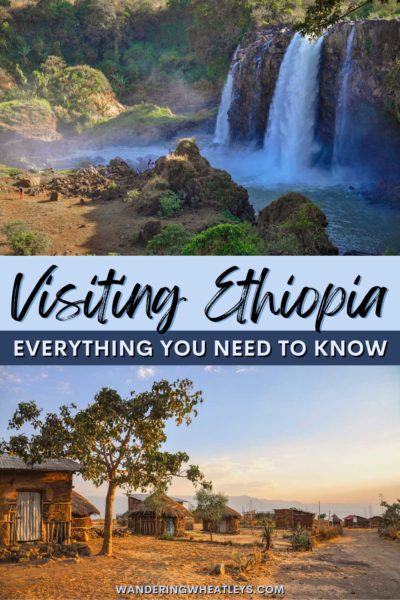
Ethiopia is a landlocked country that is sandwiched between East Africa and North Africa. It is the second most populated nation in Africa and the tenth-largest by size. Ethiopia has never been colonized, which has allowed for a unique culture and preserved traditions.
Backpacking in Ethiopia is not very common, making this an incredible destination and the perfect reason to visit Ethiopia. It is a very cheap country to travel to with many beautiful sights.
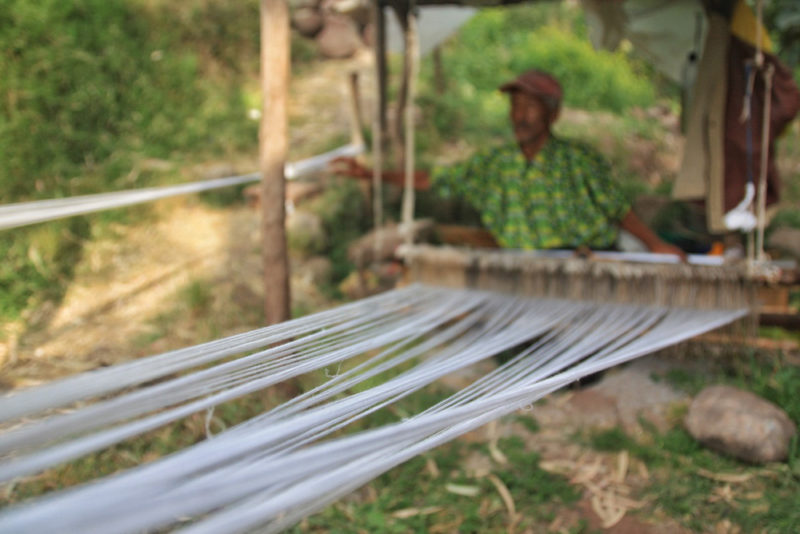
When we arrived in Ethiopia in late 2016, we had no clue about any unrest within the country. A country divided by a major ethnic group that has no role within the government, and the Tigray government were at arms. There have been protests in which people have died, including a few foreigners who unfortunately were in the wrong place at the wrong time.
But while the issues in Ethiopia still exist, they are not as heated as they were in 2016. Foreigners were never targeted and it still is a safe country to travel to with some precautions. We will touch on those in this guide.
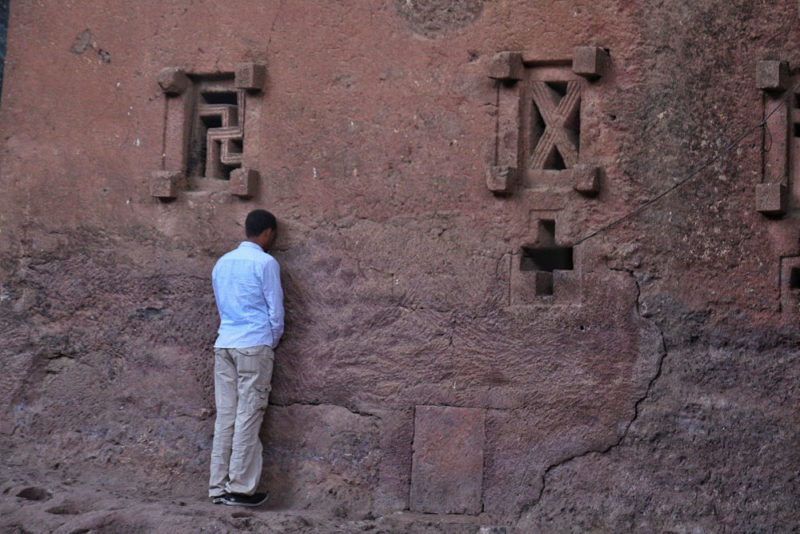
In Ethiopia, natural beauty runs wild. The East African Rift system rips through the landscape to form beautiful mountains, high plateaus, and highly active volcanoes. Major sights include the rock-hewn Churches in Lalibela and Tigray, the impressive Simien Mountains, the tribes in Omo Valley, and the street hyenas in Harar.
There are so many wonderful places to visit in Ethiopia. Read on to learn everything you’ll need to know to plan a trip to this spectacular country!
Content and photographs provided by Yana Kogan and Timon .
Disclaimer: This post may contain affiliate links. If you make a purchase or booking through one of our links we may earn a small commission (don’t worry, it’s at no extra cost to you).
Important Travel Tips to Visit Ethiopia
Visa entry to ethiopia.
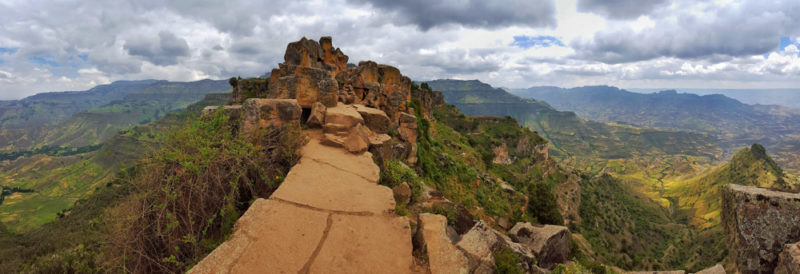
A one-month, single-entry visa is available upon arrival when flying into Addis Ababa for $40 if you are a resident of Europe, the USA, Korea, China, and several other countries.
For the latest information, please refer to the Ethiopian Embassy website .
The main language in Ethiopia is Amharic, but many tribal languages also exist, including Tigrinya, Oromo, and Afar. Many people also speak English, as it is taught in schools across Ethiopia.
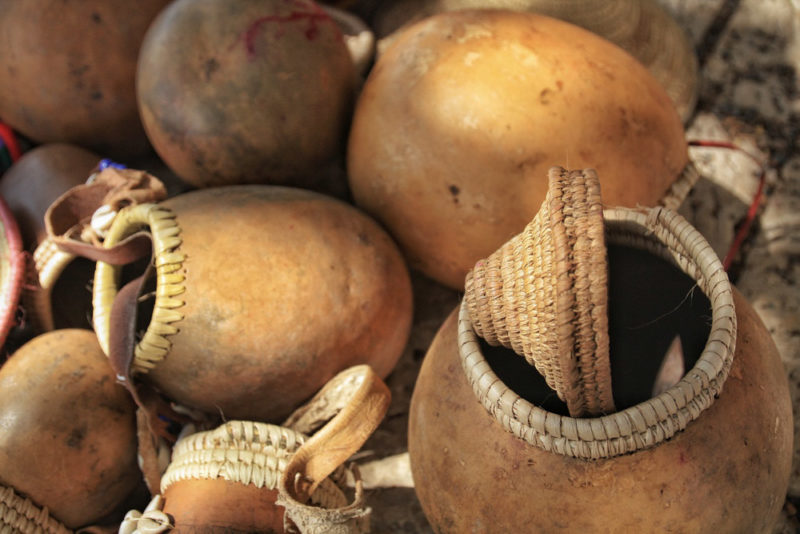
The Ethiopian Birr is the national currency. For tours, some companies also price in USD. In 2021, the exchange rate was as follows:
- $1 = 48.25 Birr
- €1 = 54.25 Birr
Costs in Ethiopia
Ethiopia is a good place to visit on a budget. It is excellent for budget backpackers and independent travelers looking to explore places that are not overrun with tourists. However, the country is large and transportation takes time unless you fly, so having the proper amount of time is crucial.
A budget of $20 – $40/day can easily get you by in Ethiopia. The biggest variables are the tours and trekking options. Some of the main highlights that can get expensive include:
- Danakil Depression Tour ($350-400)
- Omo Valley Tour ($600)
- Simien mountain trekking ($160)
- Lalibela mountain trekking ($75)
- Lalibela churches ($50)
Domestic Flights in Ethiopia
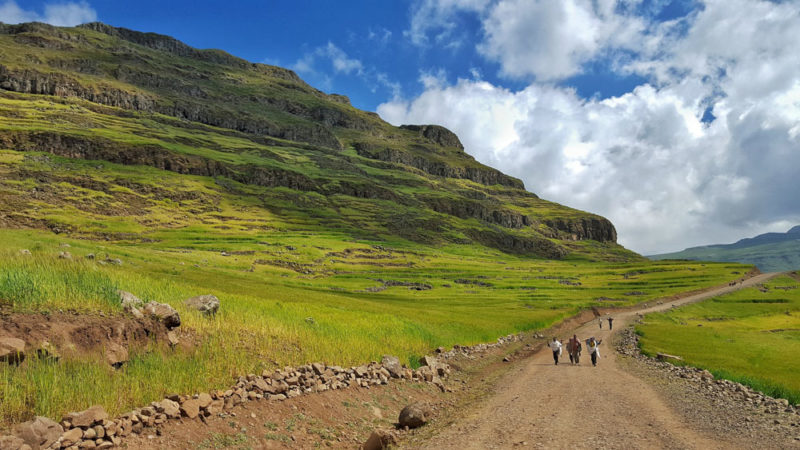
If you are flying at least one leg into Ethiopia on an Ethiopian Airlines flight, you will qualify for reduced fares on domestic flights. Domestic flights with reduced fares cost between $50 and $90 per flight. Book at an Ethiopian Airlines office on arrival or call a local branch. We recommend flying in Ethiopia between destinations to make it a safer journey.
Most bus companies in Ethiopia are owned by Tigray companies or the government. During protests and unrest, buses often are a target during riots. They have been known to be attacked by protesters, and while they almost always let passengers off unscathed, they will destroy the bus and burn it in the streets.
This caused us to alarm, so we flew between all our destinations. We felt safe during our time in Ethiopia, but this was the one area we felt was too risky. Make sure to ask locals in Ethiopia how the bus situation is at the time so you can decide if they are safe to use.
Accommodations in Ethiopia
A clean and basic double room in Addis starts around 450 Birr ($20) up to 800 Birr ($36). Outside of Addis, rooms are considerably cheaper. Basic hotels include Wi-Fi and hot water, and cost around 300 Birr ($13) for a double room.
Note: Bedbugs and bed fleas are a common issue in Ethiopia and something to be aware of when staying at budget hotels. The only way to kill bedbugs is in high heat (a dryer), and outside of Addis, no one owns or uses dryers, so it is a constant issue in Ethiopia.
Food in Ethiopia
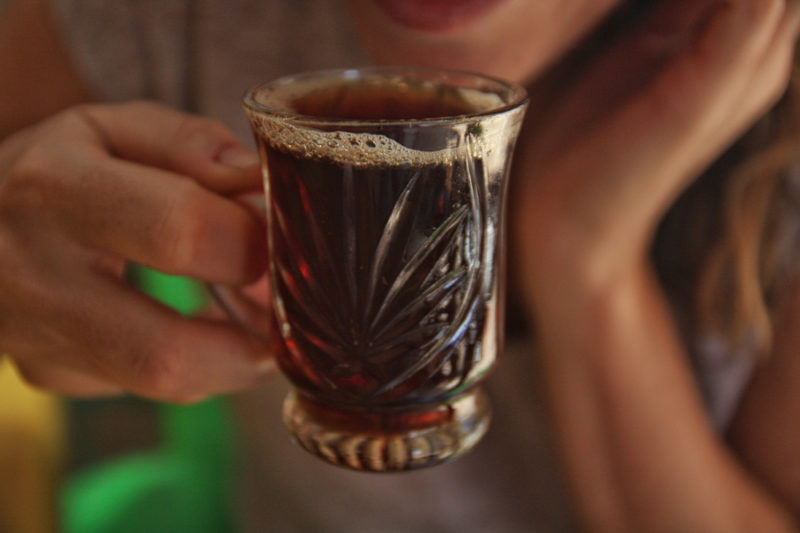
Food is one of the many highlights of Ethiopia. Injera, a slightly fermented, sour, and sponge pancake-like bread, is at the heart of every meal. It is served with an assortment of spicy and flavorful vegetarian or meat options.
Every Wednesday and Friday are fasting days when vegetarian or vegan cuisine is available. Coffee is exceptional and a huge part of the social scene and culture in Ethiopia. Typical costs are around:
- Main food dishes cost between 30 Birr and 50 Birr at local restaurants (~$1.25 – $2.50)
- Coffee costs between 5 Birr and 8 Birr (~$0.30)
- Beer is widely available from 14 Birr (~$0.60)
Theft in Ethiopia
Theft is a major problem in Ethiopia, especially in Addis Ababa. Addis is the pickpocketing capital of the world. One day while walking around the Piazza area, we were surrounded four times and attempted to be robbed. And we knew several backpackers who had their phones or wallets stolen in broad daylight.
This problem, unfortunately, is commonly homeless children. They will try to trick you by getting close to you with a piece of paper or kleenex, pretending to sneeze on you, or pretending to beg. While this is going on, a group of other children will come from somewhere else and pick-pocket your belongings.
To stay safe, just DO NOT bring anything with you while exploring Addis. We carried one cell phone and nothing else. I made sure it was in a zipper pocket and guarded it. It is an uncomfortable feeling and a constant nuisance in Addis. Outside of Addis, the problem is not as bad. In some areas such as Tigray, theft is not nearly as common.
2016 – 2018 Travel Advisory
During the 2016 Rio Summer Olympics, runner Feyisa Lilesa from Ethiopia garnered international attention. When he crossed the finish line, he made a public stance, using his arms to mark an X above his head to protest against the Ethiopian government.
As I mentioned earlier, there has been political unrest and several protests that have turned violent. The situation has been much better, but ensure you check your home country’s travel advisories prior to planning a trip.
Top Places to Visit in Ethiopia
Addis ababa.
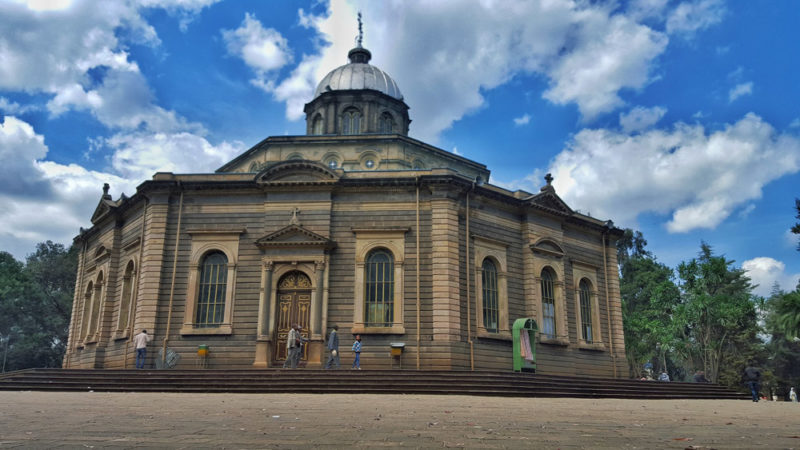
The capital city is a major hub in Africa and the likely point of entry and exit when you visit Ethiopia. But we do not recommend staying long in Addis Ababa. The sights are not great and the pickpocketing is the worst we have ever seen. We recommend using it as a quick stop to move on to your next destination in Ethiopia.
If you do plan to sightsee, check out the Red Terror Museum, St. George Church, the Piazza, and the Merkato. Leave valuables at your hotel, especially when visiting populated areas, such as the Piazza or Merkato.
Stay : The Bole street area is newer and closer to the airport. It is much safer and cleaner than Piazza with less harassment from the locals. Hotel Tirago has very nice, clean rooms for a reasonable rate.
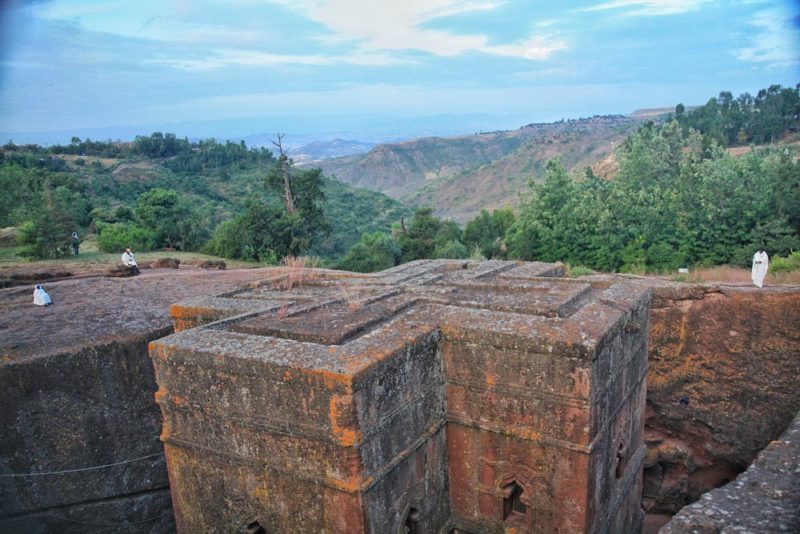
Lalibela is in a beautiful mountainous region to visit in northern Ethiopia. Thousands of Coptic Christians pilgrimage here to visit the 900-year-old rock-hewn churches. Ethiopia has some of the oldest churches in the world, dating back to the fourth century. During the 12th century, Muslim conquests in the Holy Land pushed out Christianity. Lalibela took its place, earning the nickname New Jerusalem.
No stop to Ethiopia can be complete without visiting this devout and religious place. However, the churches are not the only draw in Lalibela. After a full day or two of visiting the 11 rock-hewn churches, head out for a community hike to Abuna Yosef mountain. This three-day hike starts in Lalibela, and ventures into the mountains to small villages staying two nights in a traditional mud hut.
Stay : Halle Hotel Lalibela has simple, no-frills rooms that are comfortable and clean.
Danakil Depression
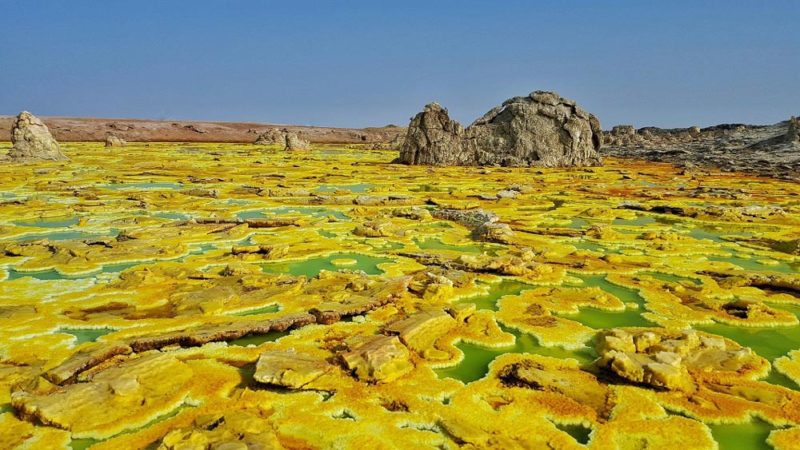
The Danakil Depression is in the northeast corner of Ethiopia, not far from Eritrea. This region is one of the harshest in the world. In one of the lowest elevations (-400 feet / -125 m), this place also is one of the hottest on earth.
Due to three tectonic plates meeting at this spot, it has sights unlike almost anywhere else on earth. Take a tour to the Danakil with the major stops at the Dallol sulfur springs, watch camel caravans to and from the salt lake, and hike up Erta Ale volcano to witness one of only five active lava lakes in the world.
Stay : Mekelle Hotel in Mekele has really reasonably priced rooms.
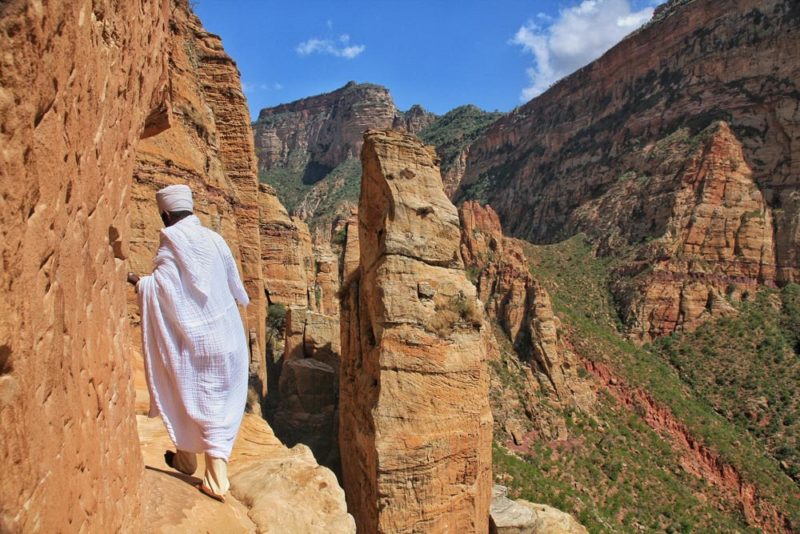
The Tigray region is the northernmost of Ethiopia and has been a formidable and large part of Ethiopia’s storied past. Many activities are in the Tigray region so you’ll want to stay for a few days.
Hit the mountains and go on a hike to a cluster of rock-hewn Churches in Wukro and/or Hawzien. Visit the storied past and ruins of Yeha. Climb up a cliff face with the assistance of a monk to one of the most famous monasteries, Debre Damo (only men are allowed). Check out the tombs, obelisks, and of course, the current location of the Ark of the Covenant in the city of Aksum.
Where to Stay :
- Hawzien – Vision Hotel has rooms and wifi for 300 Birr
- Wukro – Hewan Pension has basic rooms for 250 Birr
- Mekele – LK Pension has clean rooms with an ensuite for 300 Birr and a shared bath for 200 Birr
- Aksum – Unlike what many tourists and lonely planet say, do not stay at Africa Hotel. There is a history of bed bugs and it seems to have come up again in late 2016. Stay nearby at The Ark Hotel instead, with rooms from 250 Birr
Other Areas of Ethiopia to Explore
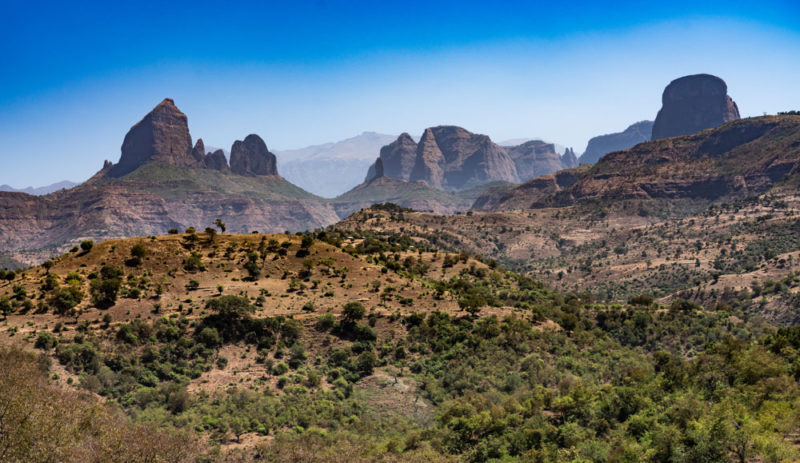
Head to Gondar and the Simien Mountains for a multi-day trek into the vast wilderness and craggy peaks surrounded by lush green valleys. Hikes are between two and ten days. It is possible to hike all the way from Simien to Lalibela.
Hiking in this region is strenuous and very remote. Getting a guide or scout is required by the Ethiopian government. If you book ahead with a tour company, guides are expensive and can cost around $100 USD per day. However, if you are on a budget, it is much cheaper if you organize at the park entrance.
The park office is in Debark, where the hike also begins. At the park office, you can ask for a scout (not a guide) and a mule (i.e. a local porter). You can save more than half your money by booking on your own and not hiring a full team to support you. Agree to a price with the scout and porter, and pay park fees of 90 Birr per person and 40 Birr each night tent camping.
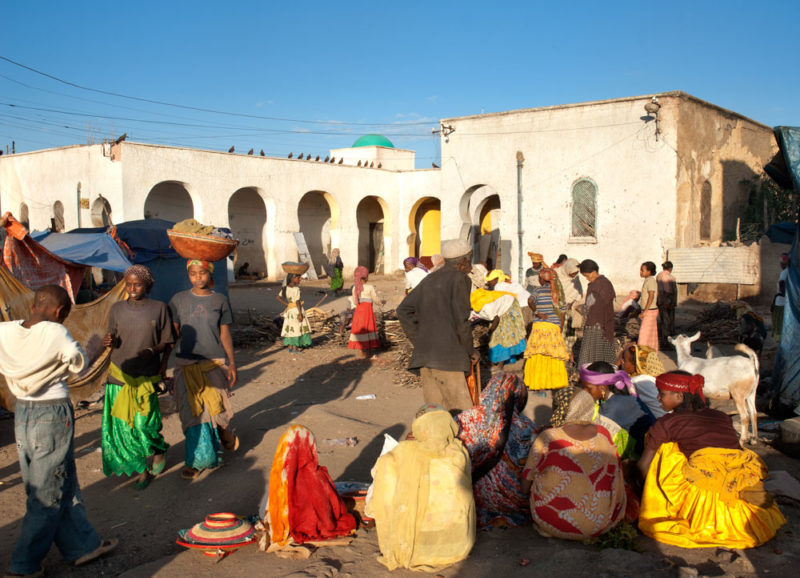
Visit this UNESCO World Heritage City to enjoy a different experience from the rest of Ethiopia. Harar, a walled city, is predominately Muslim, and home to many mosques, markets, and lively vendors. A walk through the small alleyways will take you back in time.
The Jegol Wall is a great place to walk around. Also, check out the city hyenas and a long-standing tradition where you can feed meat to the hyenas yourself. Harar is also the gateway to overland into Somaliland for adventurous backpackers.
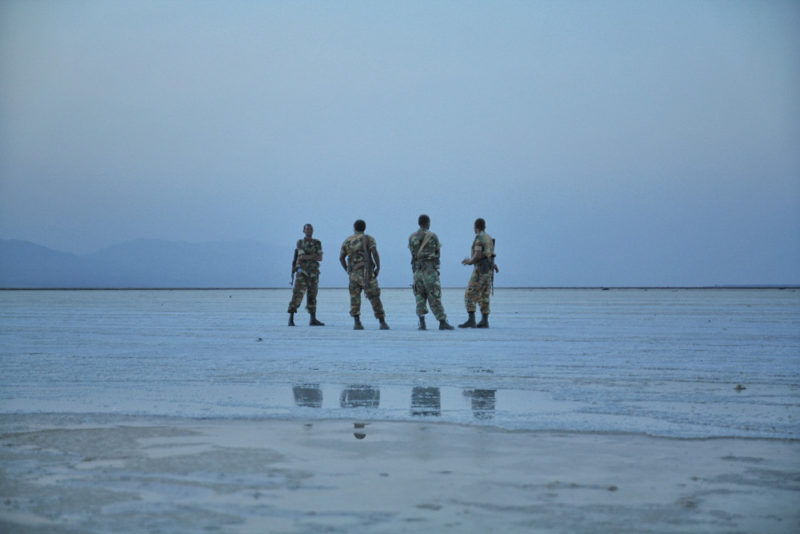
In the southern part of Ethiopia, the Omo Valley is home to many Ethiopian ethnic groups, known for their eclectic piercings, tattoos, and body paintings. Believed to be some of the most fascinating tribes left in Africa, this also has become a major tourist destination.
Inflated prices (tours upwards of $600 per person) and additional costs for photography of each person are often reasons some skip this region altogether. However, you will get a cultural experience that is nearly lost in all of Africa.
Sample 3-week Itinerary
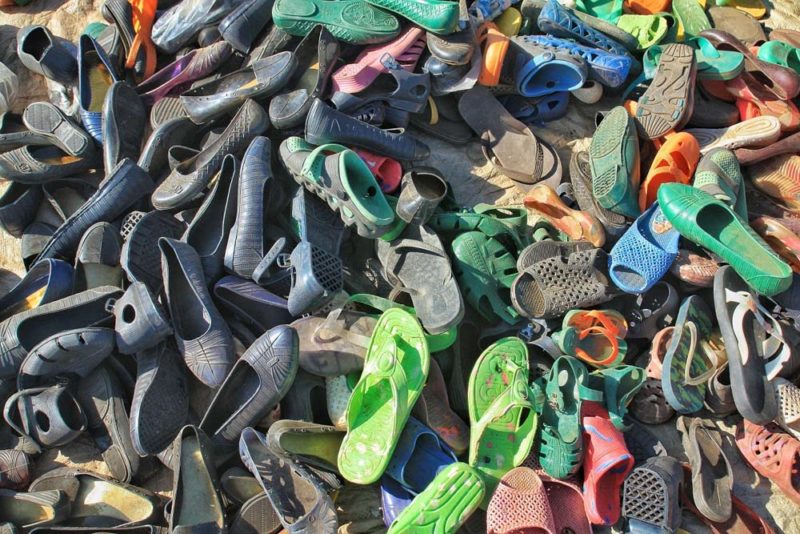
- Spend 1-2 Days in Addis Ababa
- Trek the Simien Mountains for 5 days with a stop in Gondar
- Explore the ruins and tombs in Aksum for 1 day
- Spend 2 days in Tigray hiking up to rock-hewn churches
- Go on a 4-day tour to the Danakil Depression
- Spend 4 days in Lalibela exploring the Churches and a community hike
- Feed Hyenas and shop the bazaars in Harar for 2 days
That’s it – we hope you have a fun stay on your Visit to Ethiopia!
Share this on pinterest.
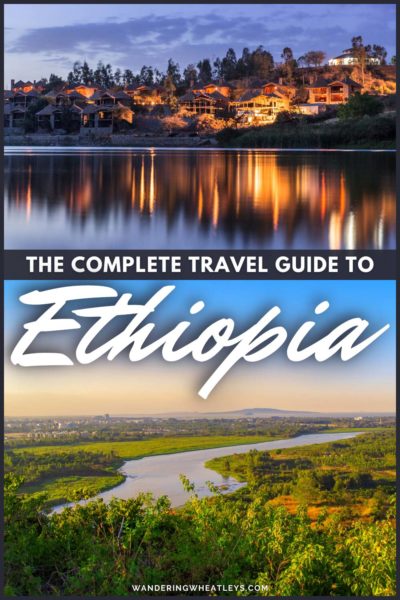
About the Author:
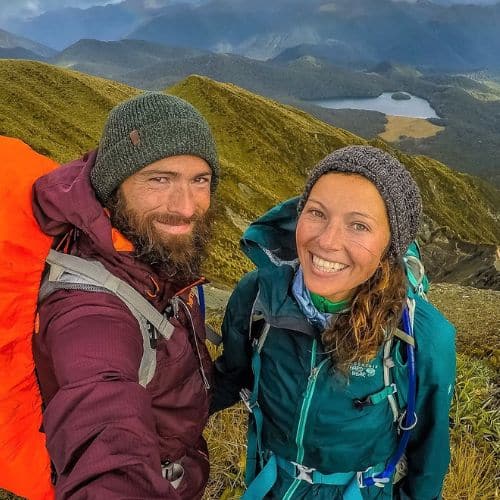
Yana & Timon met at college in Boston, Massachusetts. After graduating, they started their professional careers. They moved to San Francisco in 2010, a city they loved living in for nearly six years. After working and saving up money for several years, they quit their jobs and set off on an adventure of a lifetime. They started living a nomadic lifestyle in December 2015 and have not looked back since.
View all posts
Related Posts
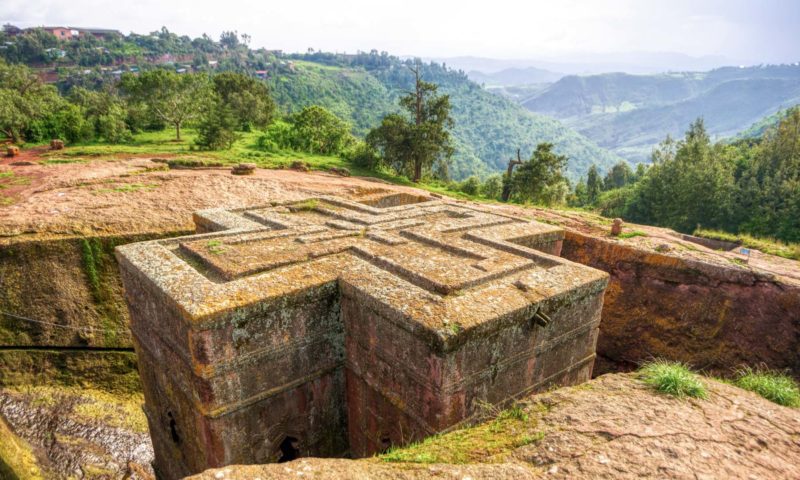
Guide to Lalibela Churches and the Abuna Yosef Hike
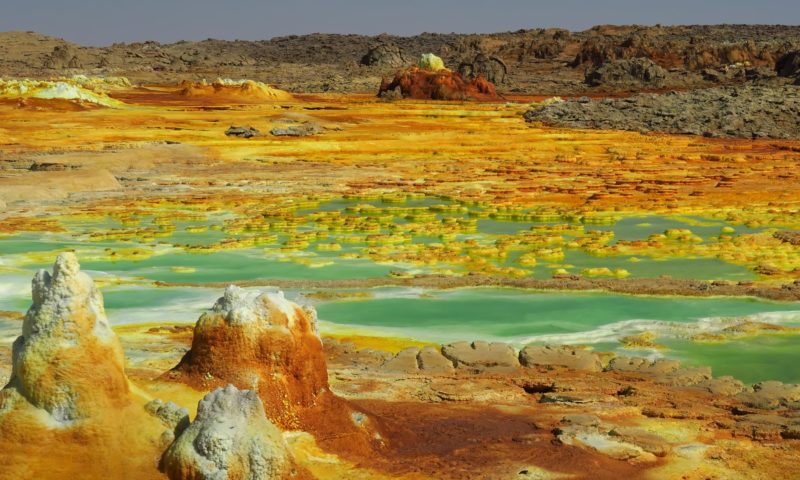
A 4-Day Danakil Depression Tour in Ethiopia
1 thought on “visit ethiopia: a complete travel guide”.
Hello Yana and Timon, I like your 3 week travel plan. I am inspired to travel to Ethiopia by next month in mid-November. What travel company or tour guide do you recommend that I can consider using that can encompass your following recommendations?: Spend 1-2 Days in Addis Ababa Trek the Simien Mountains for 5 days with a stop in Gondar Explore the ruins and tombs in Aksum for 1 day Spend 2 days in Tigray hiking up to rock-hewn churches Go on a 4-day tour to the Danakil Depression Spend 4 days in Lalibela exploring the Churches and a community hike Feed Hyenas and shop the bazaars in Harar for 2 day Thanks in advance for your suggestions.
Leave a Comment Cancel Reply
Your email address will not be published. Required fields are marked *
- Destinations
Wild Junket

Ethiopia Travel Guide & Itinerary 2024
Last Updated on March 14, 2024
To most of the world, Ethiopia is practically synonymous to famine and drought.
Granted, the famine that plagued Ethiopia between 1970s and 80s killed over a million people. It was one of the worst disasters in the world and millions of dollars were poured in from other countries in the form of aid and relief.
But that was more than 40 years ago and Ethiopia has since recovered from the disaster. Today’s Ethiopia is very different from what most of us imagine. Its capital city of Addis Ababa in particular has developed tremendously along with the modern world. Ethiopia has become one of the fastest-growing economies in the world and it’s welcoming tourists again.

Table of Contents
Why You Should Visit Ethiopia
Best time to travel ethiopia , how to get to ethiopia, ethiopia travel visa, is it safe to travel ethiopia, travel ethiopia independently or on a tour, my 2-week ethiopia itinerary, explore the capital, addis ababa, visit the rock churches of lalibela, explore historical gonder, hike in simien mountains national park, visit rural villages in guassa conservation area, see the monasteries of lake tana, visit the ancient ruins of aksum, meet the tribes of omo valley, get blown away at the danakil depression, addis ababa: hotel lobelia, guassa conservation area: guassa community lodge , lalibela: seven olives hotel, gonder: queen taytu guesthouse, bahir dar/lake tana: papyrus hotel , what to eat in ethiopia, cost of travel in ethiopia, internet and data in ethiopia, people and language of ethiopia, what to pack for ethiopia, more information on ethiopia travel, ethiopia travel guide.
One thing is for sure, Ethiopia is truly unique — culturally, historically and scenically. I have traveled to 20 countries in Africa and can safely say this country is unlike any other on the continent.
Ethiopia is an extremely mountainous country and boasts highlands rather than the vast savannas that are often associated with Africa. Plus, the country is so diverse that any Ethiopia itinerary will pack in a myriad of experiences, from hiking adventures and visits to tribal villages to history lessons at ancient sites.
Ethiopia is different from the rest because it is the only country in Africa to have successfully fought off colonisation. It is true that Ethiopians have retained a strong sense of identity and traditions, which have made them very proud and patriotic people.

It is possible to visit Ethiopia anytime of the year — but the best time to visit is from mid-October to January , when the rains have subsided and the countryside is still lush and green. I traveled Ethiopia in January and the temperatures were mild, with sunny days and cool nights.
It is best to avoid traveling Ethiopia during the rainy season, which falls in the summer months (June to August). During this period, roads in the mountains can get flooded and hiking trails may become too slippery.
Many people (including myself) time their trips to Ethiopia to coincide with religious festivals. Here are the biggest festivals of the year, in order of importance in Ethiopia:
- Genna — The biggest festival of the year is equivalent to the Ethiopian Christmas, which falls on 7th January. It marks the end of a 40-day fast, and is celebrated by feasting with the family. You’ll find the biggest celebrations in Lalibela .
- Timkat — The Ethiopian Epiphany is the second biggest festival and it falls on 19th January. The replica of Ark of Covenant is removed from every church in town and paraded around by priests dressed in colorful robes. The biggest celebrations are found in Gonder (Read about my experience celebrating Timkat in Ethiopia ).
- Meskel — This is the country’s most colorful festival, and it falls on 27 September. It’s celebrated by massive cross-topped bonfires and elaborately dressed clergy.

Addis Ababa Bole International Airport is a major hub in Africa, and the national carrier (Ethiopian Airlines) is one of the best airlines in Africa, connecting Addis Ababa to many parts of the world. They fly direct from many major destinations including London, Singapore and Washington D.C.
Flights from most major cities in Europe to Addis Ababa cost from around 400euros or US$550 return. They’re at their lowest these days, and the cheapest flights are offered by Turkish Airlines. I flew from Malaga, Spain via Istanbul to Addis on Turkish Airlines for 440 euros return. Flights from London to Addis Ababa are as cheap as 380 euros return.
If you’re traveling to Ethiopia from US, flights from New York to Addis Ababa generally cost around US$1000 return with one stopover.
Find Cheap Flights to Addis Ababa

In recent years, it has become very easy to travel to Ethiopia thanks to the new evisa system. It is now possible for citizens of all nationalities to get an Ethiopia evisa online.
A single-entry evisa that lasts for 30 days cost US$52, while an evisa that lasts 90 days costs $72. The processing time is 3 days.
All you need is a passport photo and your passport that is valid for 6 months. This is the official government website .

How to Get Around Ethiopia
Ethiopia is an extremely mountainous country. Many of its major sights lie on the central plateau and getting anywhere in the region can be a challenging task on its less-than-desirable roads or unpaved mountain dirt tracks. While the Chinese government is building new roads at lightning speed in Ethiopia, many of its roads remain in terrible conditions.
The easiest (and most comfortable) way to get around Ethiopia is by plane. Ethiopian Airlines operate domestic flights all over the country, flying to interesting destinations like Lalibela, Gonder, Bahir Dar and Arba Minch (Omo Valley).
Flights are usually quite affordable (less than US$100 each way), especially if you book them only when you arrive in Ethiopia from a local agent or Ethiopian Airlines office. You’ll also get a considerable discount on domestic flights if you flew Ethiopian Airlines from your home country to Ethiopia.
Search for Domestic Flights in Ethiopia
Traveling Ethiopia by road leaves much to be desired and is recommended only to adventurous travelers who are prepared to explore Ethiopia at its own erratic pace. Bus travel is very cheap, and luxury buses are actually affordable and comfortable.
There are two main luxury bus operators: Selam Bus and Sky Bus. Their buses have comfortable seating, air conditioning, experienced drivers and a fair safety record. Using Addis Ababa as a hub, both companies cover a limited network that includes Bahir Dar, Gondar, Dessie, Harar, Dire Dawa and Hawassa. Unlike most other buses, seats can be booked the day before you travel.

Safety is often the biggest concern for those thinking of traveling to Ethiopia. It is true that the country has been plagued by civil unrest and unpredictable anti-government protests since November 2015.
My friend who came with me on this trip to Ethiopia was hesitant at first, as her Ethiopian friend advised her not to travel Ethiopia because of the potential danger. The US travel advisory warns its citizens against traveling there — while that doesn’t mean you shouldn’t visit Ethiopia, I would recommend exercising caution when visiting.
That said, I felt completely safe during our Ethiopia trip and there was no hint of instability. I did however travel with a local tour operator, Aone Ethiopia Travel , and we had a guide most of the time. While in towns like Lalibela and Gonder, we encountered street kids and aggressive “guides”, but that was about the only negative experience we had.

Ethiopia’s poorly developed infrastructure and remote mountainous attractions make any trip here an adventure. Traveling independently in Ethiopia can be challenging and only recommended for those who have experience traveling in Africa.
I traveled Ethiopia on a private tour with Aone Ethiopia Travel, but I don’t recommend them as the tour was not well organised. If you are looking for something more affordable, I would recommend traveling in a group with G Adventures .
They are a small-group adventure tour operator and I have traveled with them many times (to Antarctica, Brazil, Mongolia etc). Their 10-Day Discover Ethiopia tour is reasonably priced and their Ethiopia itinerary covers the best of Ethiopia.
How Much Time to Travel Ethiopia?
Ethiopia is a big country — there is an incredible amount of things to see in Ethiopia and distances are long. We packed in as much as possible in our 2-week Ethiopia itinerary and still barely scratched the surface.
I explored the major sites like Lalibela and Simien Mountains, but didn’t get to visit the famous Aksum, Omo Valley and the Danakil Depression. Those areas look impressive and definitely worth visiting if you have the time.
I would recommend a minimum of 3 weeks to travel Ethiopia, and even longer if possible. Ethiopia is a truly spectacular country, and every region has its own star attraction.
- Days 1-2: Addis Ababa
- Days 3-4: Guassa Conservation Area
- Days 5- 7: Lalibela
- Days 8-10: Gonder
- Days 11-13: Bahir Dar and Lake Tana
- Day 14: Fly back to Addis Ababa
Best Things to Do in Ethiopia
The country’s capital, Addis Ababa, makes a great introduction to modern Ethiopia with its collection of museums and markets. The most important sight in Addis Ababa has to be the National Museum of Ethiopia , home to the remains of Lucy (first human being). Other interesting places to visit include Addis Mercato and Holy Trinity Cathedral , as well as the nearby Entoto Mountain for a panorama of the city.

If there’s only one place you can visit in Ethiopia , make it Lalibela. Perched at an altitude of 2,630m, the hilly town is h ome to 13 rock-hewn churches built in the 12th century. Carved right out of balsatic scoria volcanic rocks, these 900-year-old churches were meticulously sculpted below ground level and immaculately preserved until they were discovered by a Portuguese priest in 1520.
Today, the World Heritage Site is highly protected by UNESCO. What set the churches here apart from other monuments like Petra is that they are still active and fully-functioning. Rise early and visit at dawn to see pilgrims and priests pray and chant in a hypnotizing and spiritual setting. The Lalibela rock churches were easily my favorite place to visit in Ethiopia.

Lauded as the Camelot of Africa, this ancient capital is the stuff of legends, thanks to its treasure trove of 16th century palaces, lavish castles, and sprawling gardens. It is also home to one of the most well preserved churches in Ethiopia that feature impressive wall art.
I was very privileged to be in Gonder for the annual Timkat festival , the Ethiopian Epiphany Day. Locals put on their best traditional costume and reenact the baptism of Jesus Christ (by jumping into the city’s bath). Gonder is known for putting on the biggest Timkat celebrations in the country.

With some of Ethiopia’s highest peaks, the Simien Mountains pack quite a punch when it comes to lofty landscapes. You can spend weeks trekking here and you still won’t see everything in the national park. We woke up very early for a short hike and saw hundreds of gelada monkeys all around us. If you are an avid hiker, make sure to reserve a few days in your Ethiopia itinerary to go hiking around the mountaintop monsteries in Simien Mountains.

Another highlight of my trip to Ethiopia, the largely unknown Guassa Conservation area is a rugged, rural area not too far from Addis Ababa. This 98-square-km conservation area has been protected by the locally community since the 17th century.
It is an excellent area to spot endemic wildlife like the Gelada baboons and the Ethiopian wolf, as well as to immerse in remote local villages that will warmly welcome you. We stayed overnight at a simple hut and went on a long hike down to the bottom of the valley to visit a local village. It was a humbling experience and the landscape was absolutely mindblowing.

Ethiopia’s largest lake (and Africa’s third largest) has a peaceful and serene setting that is worth visiting to escape from the dusty towns. Its waters are inhabited by small pods of hippopotamus, hundreds of endemic species of birds; and its shores are dotted with over 30 monasteries, some of which feature the best mural art in Ethiopia.

Situated in the highlands of northern Ethiopia, Aksum marks the location of the heart of ancient Ethiopia, when the Kingdom of Aksum was the most powerful state in the region. The massive ruins, dating from between the 1st and the 13th century A.D., include monolithic obelisks, giant stelae, royal tombs and the ruins of ancient castles. Today it is a UNESCO World Heritage Site. Be sure to include this in your Ethiopia itinerary if you are a history buff.

In the remote vast plains of southern Ethiopia, Omo Valley is home to many tribal villages with interesting traditions and culture. Each of the villages has their own customs and language and have lived basically the same lifestyle for centuries.
The Mursi and Hamar are proud people who adorn themselves in unusual body art and jewelry and cattle are vital to their existence. They are also very territorial and will fiercely defend their land and way of life. Even though the region is remote, many tour companies operate tours to the Lower Omo Valley and several of its villages. Just be prepared for a pricey and challenging trip – both logistically and physically.

The Danakil Depression overlaps the borders of Eritrea and Djibouti and is part of the great East African Rift Valley. The climate is unforgiving and widely considered the hottest (average temp of 94F), driest (4 – 8 inches of annual rainfall) and lowest spot (400 feet below sea level) on the planet. Having said all that, this is definitely home to some of the world’s most unearthly landscapes .
The lava lake at Erta Ale is one of only six lava lakes on Earth and will leave you in awe. The multi-colored hydrothermal bubbling lakes and great salt pans will amaze you and have you question if you are still on Planet Earth.

Where to Stay in Ethiopia
Hotel Lobelia was the best place we stayed at in Ethiopia. It’s located just a 5-minute drive from the airport, in the up-and-coming Bole district that’s packed with restaurants and bars. The hotel has comfortable and spacious rooms, and great WiFi and a good breakfast spread. They also provide free airport transfer to the hotel. Check the latest prices here.
This is a simple, rustic lodge in the middle of the protected area. It feels like the middle of nowhere here and is great for getting disconnected and being deep in nature. You’ll have to bring your own food to cook and don’t expect any heating (it gets extremely cold at night!). Find more info on the conservation area website .
A landmark hotel in Lalibela, this is the oldest and most established hotel in town. While it needs some serious renovation work, it has a leafy garden with panoramic views of town and it’s located right in the centre of town, just a 5-minute walk from the churches. Book here.
This is a really cheap hostel just minutes from Gonder’s historical centre. It’s quite basic, but gives a run for your money due to its great location and not-too-scruffy rooms. Book here.
This beachfront hotel was the second best place we stayed at. It feels like a fancy beach resort that needs some sprucing up, but otherwise rooms are spacious, beds are really big and luxurious, and there’s even a swimming pool in the centre of the resort. Check the latest rates.

Before you dismiss the idea of having good food in a country that was once affected by famine, think again. You’ll be surprised to learn that Ethiopian food – much like other aspects of its culture – is some of the most diverse in Africa. It is absolutely unique and distinctive (the only place in the world that shares Ethiopian food culture is its next door neighbor, Eritrea .)
The country’s main staple is injera , an ubiquitous pancake that is eaten for every meal all over Ethiopia. It is spread out on a large flat basket and simply topped with mounds of spicy meat stews, colorful vegetable curries and even raw cubes of beef. Originally made from tef (indigenous Ethiopian cereal), the injera may taste tangy, bitter and even slightly sour for the first-time taster — but it will grow on you.
Injera is often eaten with wat, an Ethiopian version of curry which can be very spicy. Chicken curry (doro wat) is known as the national dish, and it’s often eaten on religious festivals. Sheep curry (beg wat) is the most common, followed by beef (bere wat). Read my guide on Ethiopian food to learn what and where to eat!

Traveling Ethiopia isn’t exactly cheap — especially if you want to explore the remote regions. Most people, including myself, opt for a guided tour in Ethiopia as that is the best way to cover less-conventional paths in a shorter time.
I traveled with Aone Ethiopia and the 14-day Ethiopia itinerary costs around US$2150 per person. That included all our accommodation (in budget hotels) and transportation in 4×4 vehicle and minivan. Our meals and domestic flights were not included.
I would definitely travel Ethiopia independently the next time I visit. It is possible to travel Ethiopia on a budget if you stay at guesthouses. A budget hotel in Ethiopia usually costs US$30-50 per night (don’t expect high standards), and food is cheap at around US$2 to 5 per meal in a local eatery or restaurant. A ride on the local bus is affordable, at around US$10 for a 4-hour journey.

Internet connection in Ethiopia has improved tremendously in recent years. You can get pretty good WiFi in most hotels and even guesthouses. Addis Ababa International Airport and other airports in Ethiopia actually offer free and relatively fast WiFi.
3G data connection in Addis Ababa works quite well, though connections are patchy once you leave the capital city.Getting a local SIM is cheap and easy. There is only one telco service provider, which is Ethio Telecom. You can get a SIM card for 30 birr in any Ethio Telecom shop. Make sure to get your SIM registered (required by the government here) and your personal hotspot established.
As well as blocking 3G networks, the Ethiopia government also regularly blocks social media channels. Be sure to get a VPN for Ethiopia travel.

Ethiopia has a highly diverse population of people. The Tigray, Oromo, Somali and Amhara people make up Ethiopia’s population but there are more than 80 different ethnic groups represented. Some of these ethnicities have as few as 10,000 people.
Amharic is the official language of Ethiopia, but English is also widely spoken in Ethiopia. Learn some basic words like “selam tena jistilign” (hello!) and “ameseginalew” (thank you!) and locals really appreciate it!

Due to the mountainous terrain, it gets pretty cold in some parts of Ethiopia during the winter months (November to February). But temperatures are mild, reaching around 73°F (23°C) in the day and 42°F (6°C) at night. This number can rise past 30°C on the lowland fringes of eastern, southern and western Ethiopia.
Bring layers regardless of the time you’re visiting Ethiopia. If you’re visiting Ethiopia in summer, t-shirts and long pants will suffice. For those visiting in winter, just bring a light jacket for the chilly nights. Don’t forget your sunscreen and hat as the sun in mountainous Ethiopia can be very strong. During my visit in January, I had on my thick winter jacket on most days.
Many Ethiopian Christian Orthodox ladies (especially in the villages) cover their hair with a white linen cloth. They are not very conservative and do not expect foreigners to cover up. To show some respect and fit in, try to cover your shoulders and knees.

Have I answered all your questions on Ethiopia travel? Let me know in the comments field below and I will be more than happy to help you out! I hope this article has inspired you to plan your own Ethiopia itinerary!
Here are more articles that I’ve written about Ethiopia and nearby countries in the Horn of Africa:
- Eritrea Travel Guide
- Asmara, Eritrea: An Art Deco City in Africa
- 50 Pictures of Ethiopia
- A Guide to Ethiopian Food
- Celebrating Timkat in Ethiopia
- The Rock Churches of Lalibela, Ethiopia
Disclaimer: This post contains affiliate links to companies I use and trust. I get a small commission when you click on my links, at NO EXTRA COST TO YOU.
Inspired? Pin it!

Nellie Huang
Nellie Huang is the founder of WildJunket. Originally from Singapore, Nellie has traveled to over 150 countries across 7 continents. She is a book author and Lonely Planet guidebook writer. As an adventure travel blogger, she has a special interest in unusual destinations and deep experiences. Follow her travels on her Facebook and Instagram .
Leave a Comment Cancel Comment
Save my name, email, and website in this browser for the next time I comment.
This site uses Akismet to reduce spam. Learn how your comment data is processed .
The Comments
For us why visit Ethiopia, its all about the adventures. You can’t get any better than hiking one of the best hikes in the world. The Simien Mountains has epic views and great wildlife.
Hi David, great post. I am rushed for time in Lalibela. Do you think an entire afternoon (2-5) and an am (6am to 11am) if enough time? I know longer is better but I am pressed for time. thanks
hi Niraj, thanks for dropping by! Yes it would be possible but you’ll probably only get to see some of the temples, not all. Still if you’re pressed for time, it is definitely possible. The town is small and it’s easy to walk from one temple to another.
Hi, I just want to update as of December 2018, all countries are eligible for e-Visa to Ethiopia. Amongst these, most get visa-free travel to Ethiopia (including all Africa countries).
Wow that’s great news! It was quite a pain for me to get my visa as I had to mail my passport back home to get the visa. Brilliant, thank you!
Elías García
As I recently traveled to Ethiopia (and enjoyed 100% this amazing wild land) and needed an electronic visa to get in the country, definetely I can advice you to obtain it in advance so you will save time and avod long lines! You can also check the requirements and eligible countries.
What exactly you mean by two passport photos? We need get two separate photos of passport size along with what’s already in our passport??
Yes, you need two separate passport-sized photos besides your passport.
It took me a bit longer time to read this blog completely, but I must say, you have really changed my way of looking at Ethiopia. I have never gone through so much information in one single article regarding this place. The history, the culture has really created a spark inside me, to visit this place soon.
Hike to the Massif of Abune Yosef near Lalibela is recommended for its off the beaten path trek, wild-life and village to village hike.
Thanks for the great writeup. The headline mentioned this as a 2020 guide. Is the photo from Erta Ale from 2020? I have read that recently, the lava lake is quite low and obscured by smoke. Do you have any info about that?
hi Dan, I’m afraid the photo is from 2018. Sorry I’m not informed about the current situation at Erta Ale. It’s best to email a tour operator who runs tours there.
ALEX THOMPSON
I honestly like Ethiopian Airlines — they’ve never been late for me, gotten me to my destination when other airlines had canceled my flight but they have some airline policies that are hard to understand.
Mahlet Kebede
I really surprised, you explain and narrate Ethiopian tourist attractions very well, Of course it is very help full to prepare my own itinerary, Thanks a lot.
You May Also Like
Staying at maliba lodge in lesotho, wildlife safari on the chobe river, responsible riders: a township bike tour in cape town.

Most Beautiful Places in Ethiopia: Ultimate Travel Guide
Known as the Cradle of Mankind, Ethiopia is the oldest country in the world. It is blessed with archaeological and natural wonders, ancient cultures and traditions, soulful and burgeoning cities, and a slew of remarkable wildlife.
To put it simply, Ethiopia surpasses all expectations. It is the only African country that was never colonized, and as a result, there’s an abundance of immaculately preserved religious buildings and monuments. Located just north on Kenya, it is the perfect country to combine with a Kenya safari trip.
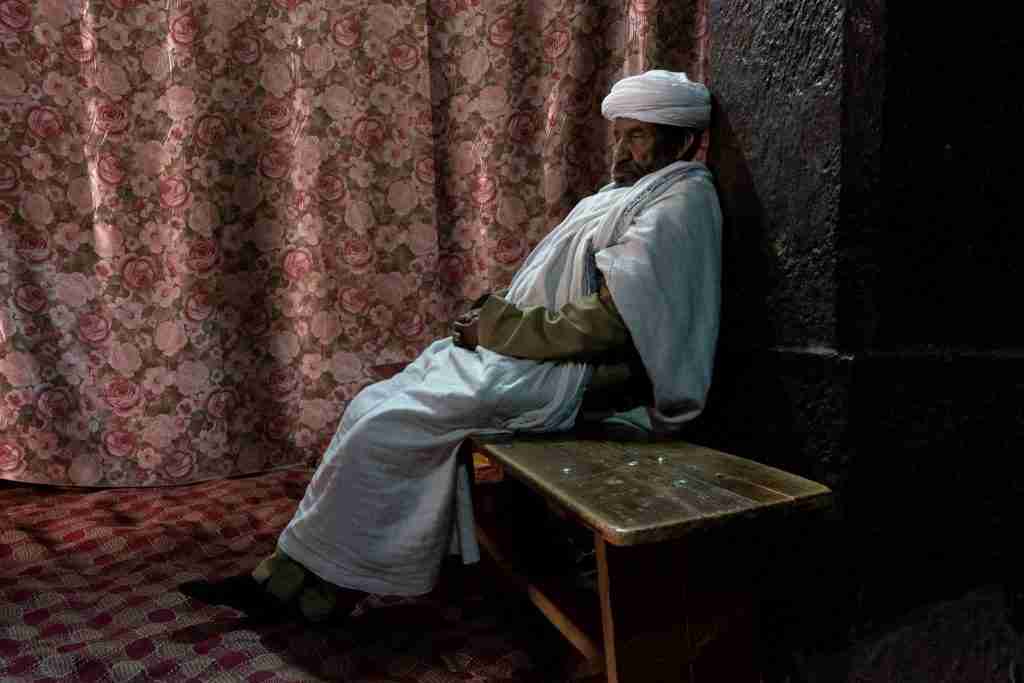
However, due to years of erosion, Ethiopia’s landscape is also considered one of the most astonishing in the world – from multicolored salt flats to vertiginous valleys and broad savannas. Explore 10 of the most beautiful places in Ethiopia with our ultimate travel guide to the country, with tips on where to stay, what to eat and where to go.
WHAT IS THE BEST TIME TO TRAVEL TO ETHIOPIA
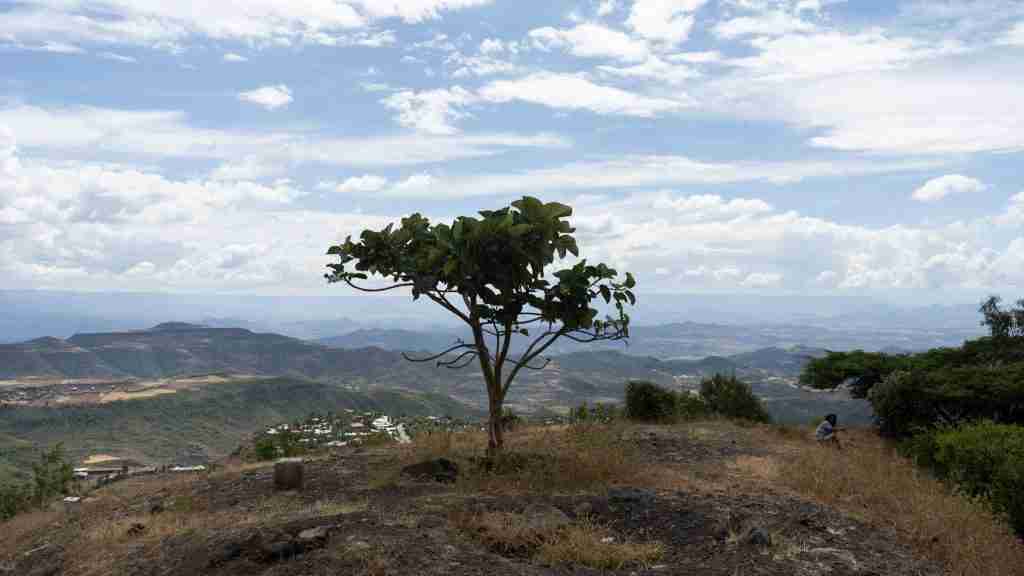
Most of Ethiopia’s landscape lies over 1,500m high, with much of its highlands soaring over 3,000m. As a result, the days are mild, but nights are cold. It’s ideal to avoid the rainy and dry seasons. These can exacerbate temperatures, so April when the land is arid and barren, or September-October when it starts to flourish again should be your vacation months. However, if you can stomach the rainy season, November-March or June-September have lusher vegetation and fewer tourists.
HOW TO GET AROUND ETHIOPIA
Ethiopia is a massive country, and while its road infrastructure has improved, it’s still elementary. As a result, traveling in Ethiopia is better done by plane. However, some sites can only be accessed by road, so book a private tour with a reliable driver/guide. This will give you a more in-depth understanding of the places.
WHERE TO STAY IN ETHIOPIA
Traveling in Ethiopia is only possible if you find yourself accommodation that allows you to rest and recuperate. There are numerous guesthouses and hotels in Ethiopia that are considered good value by international standards, and backpackers won’t have a problem finding inexpensive accommodation.
However, the comfort and cleanliness standards are usually low and “boutique” hotels and lodges are scarcer outside of Addis Ababa, where chains like Radisson Blu , Sheraton and Hilton reside.
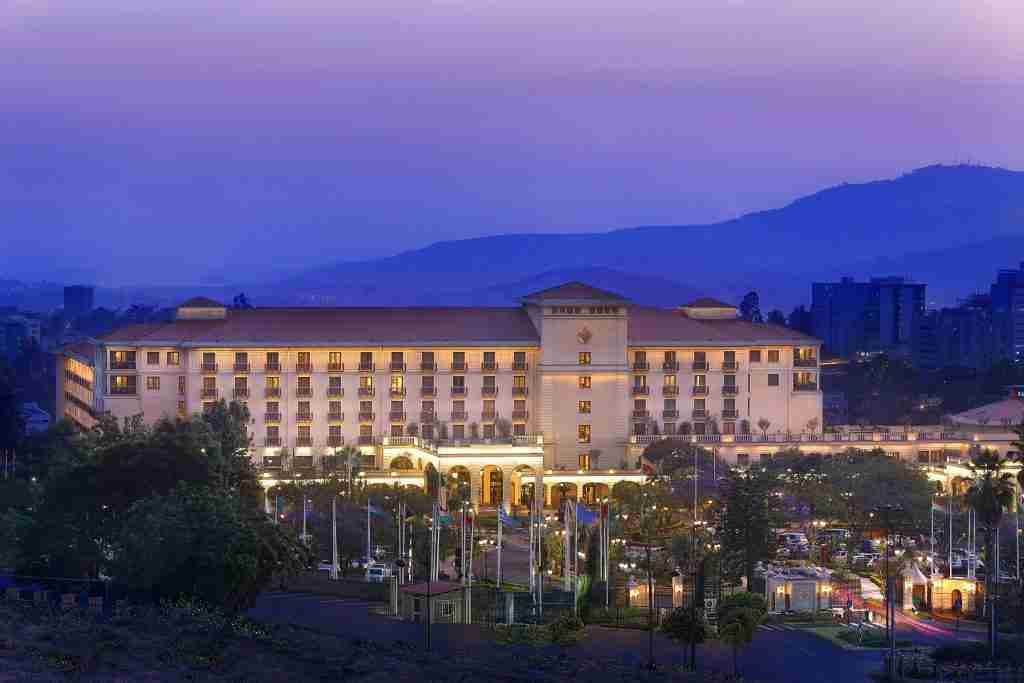
There are at least one four/five-star quality accommodations in Bale Mountains National Park, such as the eco-luxury, boutique wilderness Bale Mountain Lodge .
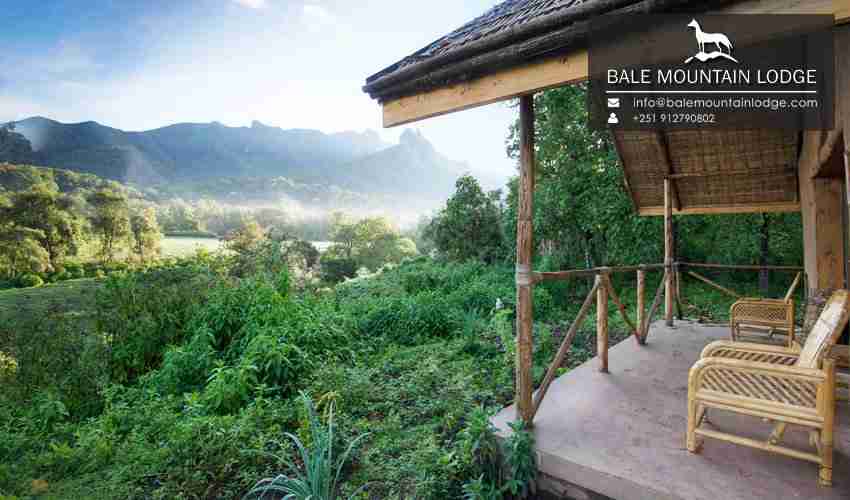
Hawassa has the Haile Resort-Hawassa with spectacular shore views, rich culture and warm hospitality, and Lake Langano has the Sabana Beach Resort .

In Bahir Dar, Lake Tana’s shores house the Kuriftu Resort – a boutique lodge with lake views that often find travelers undertaking kayaking and fishing. Finally, Bishoftu is one of the most beautiful places in Ethiopia and is another part that has decent hotel options, including another Kuriftu Resort and the spa and family-oriented Liesak Resort .
MOST BEAUTIFUL PLACES IN ETHIOPIA TO VISIT
Beautiful cities in ethiopia to visit.
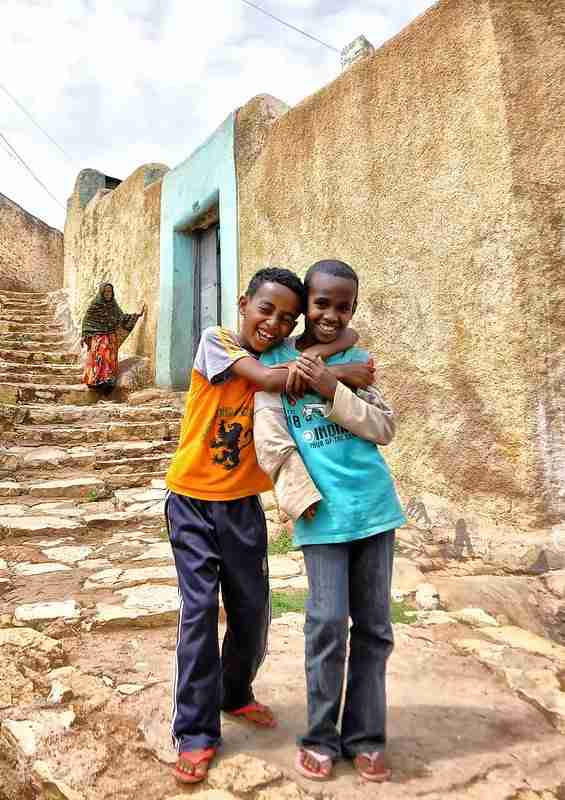
While Addis Ababa is Africa’s highest capital, it is a highly modern-looking city with half-finished buildings and overly populated streets. On the other hand, Harar is Islam’s fourth holiest city and one of the most beautiful places in Ethiopia because of its impressive historical sites.
With 368 colorful alleyways webbed into just one square km, Harar is dubbed “Africa’s Mecca,” and its old walled town contains over 90 mosques for you to visit. If you’re feeling courageous, a popular nightly ritual feeds the hyenas just outside the city walls, in which travellers are more than welcome to participate. Or take a more leisurely approach to the city, and stroll around one of its lively markets, which will convince you you’ve stepped out of the 21 st Century.
2. Gondar

Home to medieval Ethiopian Princesses and Emperors for 1000 years, Gondar has become known as the “Camelot of Africa” for its numerous remains of royal castles. Its turreted citadel, bathhouses and immense banqueting halls leave you in no doubt about its historical and current importance as a Christian Kingdom.
Beside the castle remains, head to Fasiladas’ Bath as it is the location for the annual Timkat celebration, which sees bishops splash the blessed water onto crowds of Ethiopian people who have come to renew their faith. One of the most beautiful places in Ethiopia is Gondar’s Debre Berhan Selassie. Here you’ll find a beautiful Ethiopian church comprised of stone walls, a two-tiered thatch roof, arched doors, and painted frescos with 123 winged cherubs on the ceiling representing the omnipresent God.
There are also excellent shopping opportunities in Gonder, and you can taste the best Ethiopian food at the Four Sisters Restaurant .
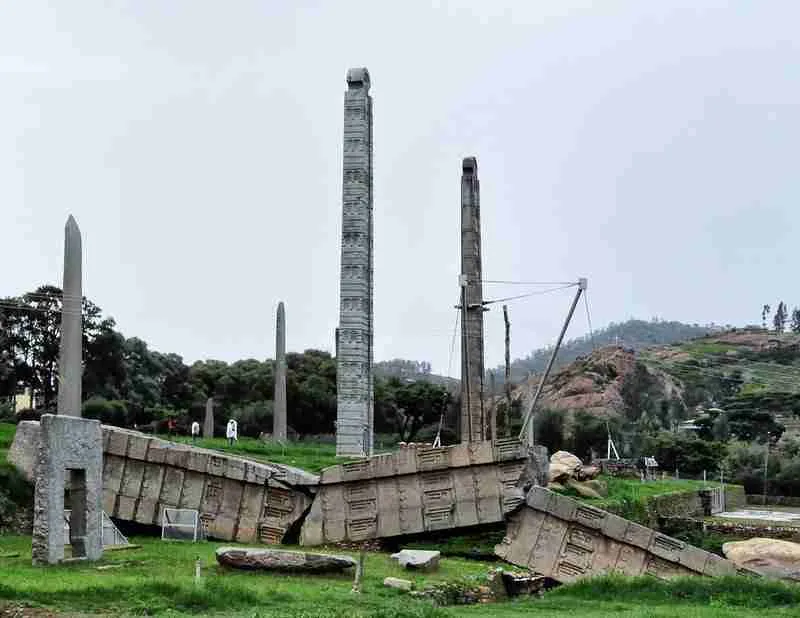
Steeped in folklore and one of the oldest cities in Africa, Aksum is believed to have been the Queen of Sheba’s home. It is also thought to be the Ark of the Covenant’s final resting place, which you can supposedly see over the walls of the St Mary of Zion Church complex into the Northern Stelae Field. Due to its size, this city is overlooked by tourists. But its mountaintop monasteries, underground routes to Aksumite empire tombs, and the sizeable rock-hewn reservoir – Mai Shum – that local tribes believe was once the Queen of Sheba’s bathing place make this city a hidden gem in Ethiopia.
The Best of Ethiopia’s Landscape to Explore
4. the semien (or simien) mountains .

Known as “God’s playground”, the Semien Mountains range allows travelers to hike along the escarpment and view one of the most breath-taking vistas in all of Ethiopia. Climbing to an altitude of 4,620m and stretching 100 miles from east to west, the rock-hewn churches and medieval castles can be seen in all their glory. If you’re lucky, you might chance a peek at the country’s most unusual wildlife, including the Walia ibex – a goat that doesn’t exist anywhere else on Earth and the Gelada monkey, found only in the high meadows of Ethiopia.
5. Omo Valley
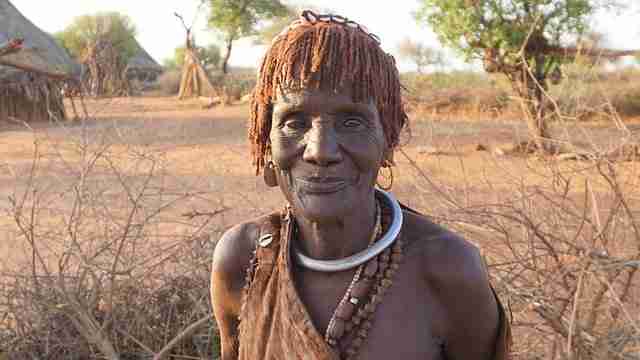
To discover the ancient Ethiopian people more intimately, you need to head to Omo Valley, where you’ll learn about warrior tribes, pastoralists, and blood-drinking hunters. Each of the villages located here has its language and traditions; for example, the Hamar and Mursi tribes adorn themselves with jewelry and body art. Once you’ve introduced yourself to the locals, go beyond the tourist path and head to the vibrant markets of the north, journey the sweeping highlands or join a frankincense-scented coffee ceremony.
6. Bale Mountains

Located in the Oromia Region of Ethiopia, the Bale Mountains is a dramatic landscape comprised of humid cloud forests, wild, rocky scenery and the lush Harenna Forest that looks to be an odd blend of sci-fi and mythical influences. This is a protected area of 2,2000 km2 and it is only 400km southeast of the Ethiopian capital, Addis Ababa. Less known among travellers, the Bale Mountains are among the most beautiful places in Ethiopia, and its rare amphibian species, flora, and endemic birds waiting to be spotted make it a nature-lovers paradise .
7. The Great Rift Valley

Perhaps one of the unique places in Ethiopia is the Rift Valley, as it rips a massive scar through the middle of the country, causing lakes, including Lake Langano, to bubble into existence and forests to spring out of thin air. Here travellers can find the Awash National Park and its 150m deep gorge and waterfall, carved by the Awash River.
This is one of the finest national parks in Ethiopia, and the dormant volcano, Mount Fantelle, towering above the dense bush, reminds visitors of this every time. If you’re looking to relax in hot springs while in Ethiopia, head to Filwoha hot Springs from the Awash park. Numerous blue pools and Lake Beseka await you while over 450 bird species soar above, including the Ethiopian cliff swallow.
Another one of the national parks in Ethiopia is in the Rift Valley, the Nechisar National Park, and here you’ll discover the “Bridge of God”, an isthmus between Lake Chamo and Lake Abaya. Beyond the Rift Valley’s natural beauty, travellers will find various traditions and cultures preserved in the indigenous people who live their lives around weaving, farming, traditional ceremonies and market days.
8. Blue Nile Falls
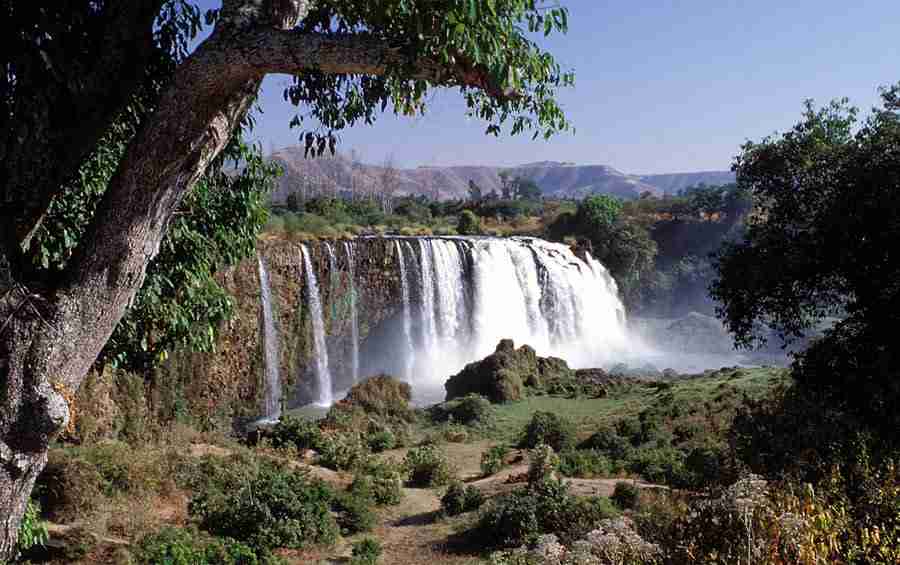
Situated close to the city of Bahir Dar are the Blue Nile Falls, otherwise known by the locals as ‘Smoke of Fire”. These jaw-dropping falls are undoubtedly one of the most beautiful places in Ethiopia. They are known as this because the falls send up a never-ending mist that drenches viewers from miles away. During flood season, it stretches more than a quarter mile long and drops 150 feet into an impressive gorge. If you venture a little further downstream, you might see some exotic birds and monkeys or Ethiopia’s first stone bridge.
9. Danakil Depression
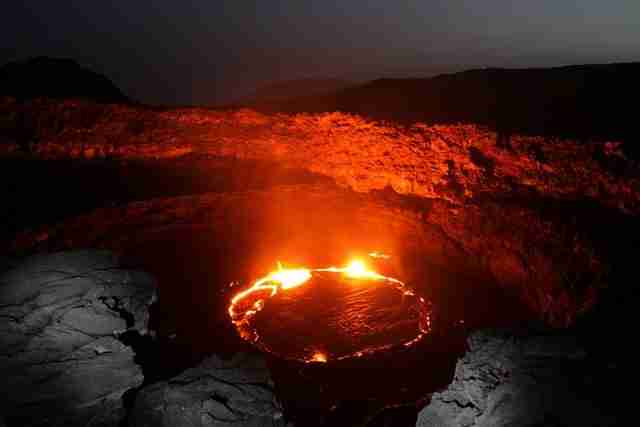
While the name suggests this area cannot be one of the most beautiful places in Ethiopia, its vast geography as the driest and hottest place on Earth and otherworldly Dallol Sulphur Springs puts it on our list. Some parts are 100 metres below sea level (one of the lowest places on Earth), but there are also two active volcanoes – Mount Erta and Ayala – with their lava lakes being a photographer’s dream.
The Awash River streams its way to this land and ends at an enormous salt mine where workers from local communities’ hack salt to sell. If you’re looking for a lunar-like experience, this is your destination. Be aware, accommodation is rare here, and most visitors set up camp at fixed sites.
Most Beautiful Places in Ethiopia that are Ancient Churches
10. churches of lalibela.
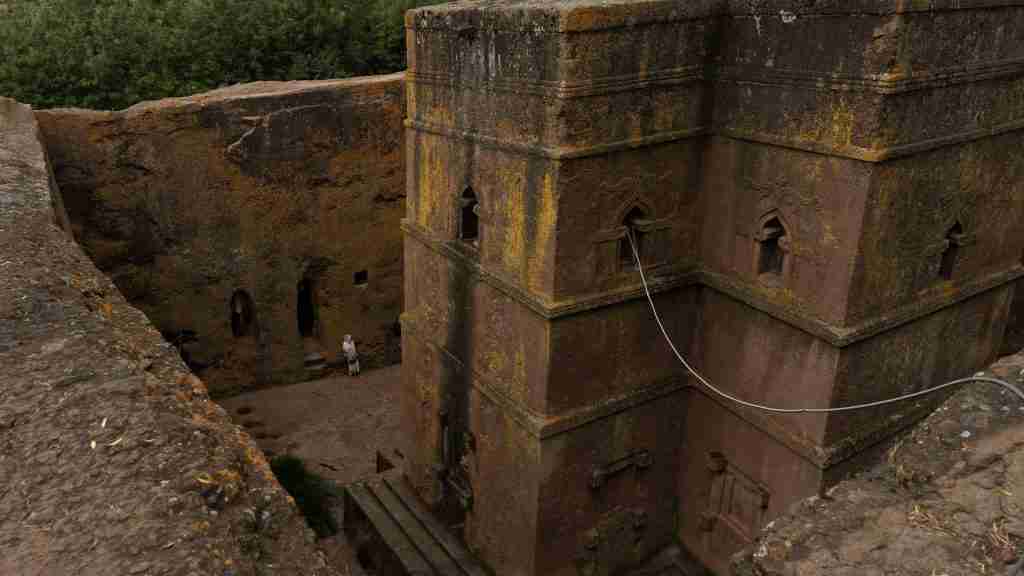
Situated at 2,630 m in the wild Lasta Mountains, the isolated town of Lalibela is known for its rock-hewn churches. This is certainly one of the most beautiful places in Ethiopia. These were built with the intention of becoming the “New Jerusalem” for Christians. If you’re traveling to Ethiopia for ancient history and architectural splendor, this is a fantastic setting. Between the 10 th -13 th centuries, Lalibela was the Zagwe Dynasty’s capital under its ruler, King Lalibela.
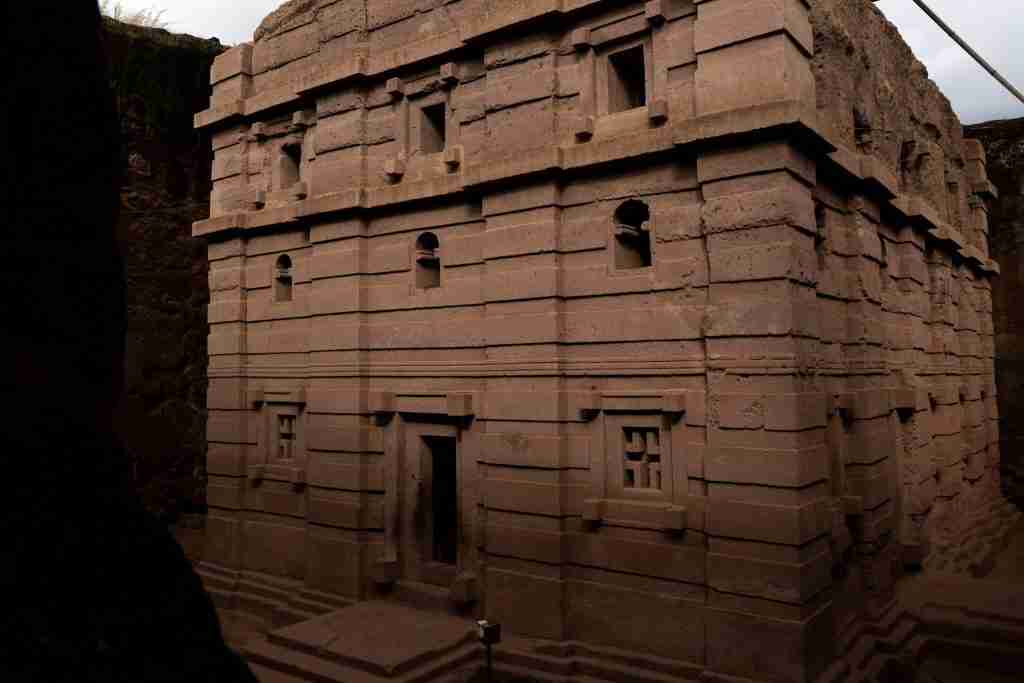
During this time, the churches were constructed by almost 40,000 people and made entirely of rock. There are 11 grand and monolithic churches, including the House of Saint George with its trenches and ceremonial passages, for you to explore and several monasteries nearby should you need a further religious fix.
WHAT TO EAT AND DRINK IN ETHIOPIA (ETHIOPIAN CUISINE)
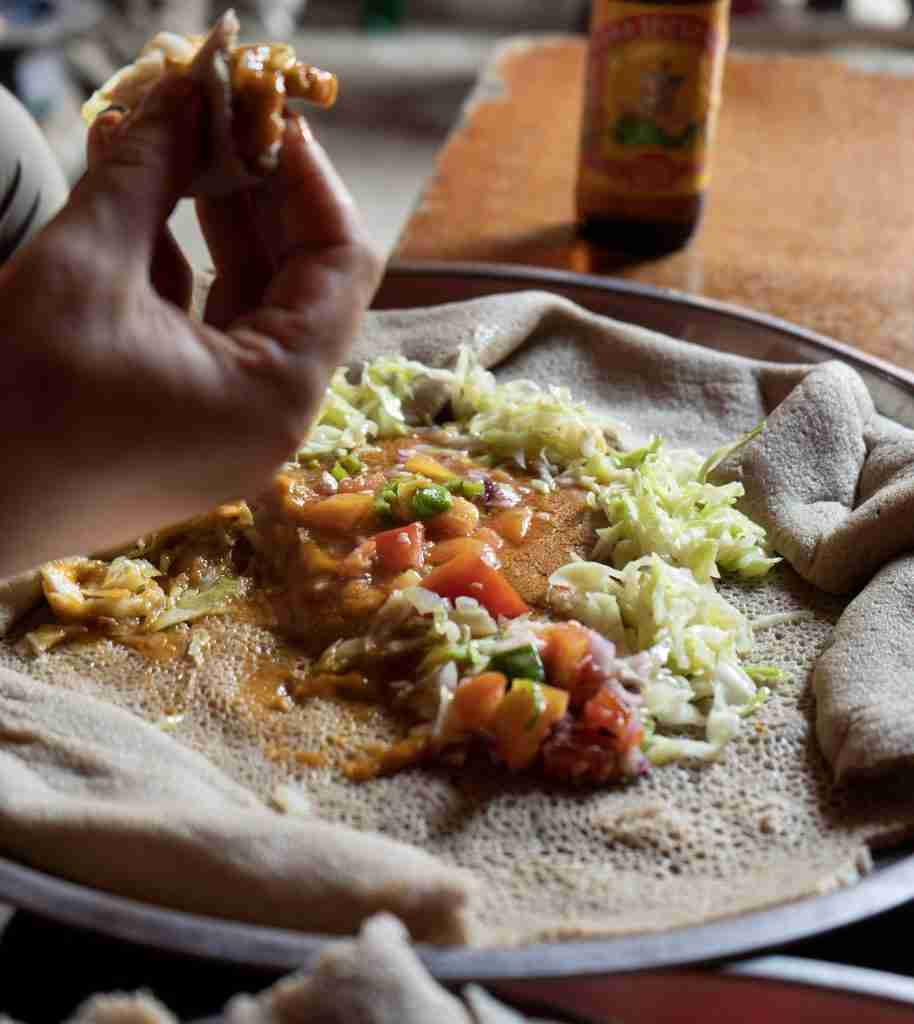
Ethiopian food is incredibly flavorful and delicious. It is also very vegetarian friendly as many of the stews are made of lentil and chickpeas as well as other vegetables. Food is served on a spongey crepe-like flatbread called injera that has a sour taste and is incredible good for you. It is made from a super-grain called Teff which grows in Ethiopia. Ethiopian food is eaten with your hands using pieces of injera to scoop it up. It’s most common spice is called berbere which is often mixed into its various dishes and stews. The food alone is reason enough to make a trip to Ethiopia.
For drinks there is local ethiopian beer and the incredible delicious Tej, the Ethiopian honey wine. This wine is full of honey flavor and is dangerously good. It is easy to drink too much of it without noticing.
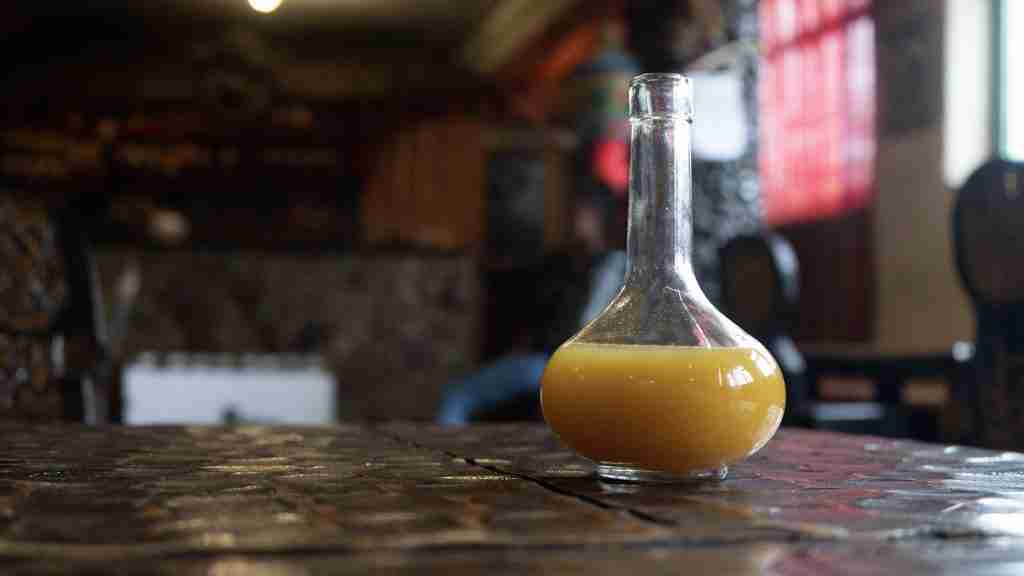
FINAL THOUGHTS
There are so many beautiful places in Ethiopia that deserve a visit, but these 10 are the most visited because of the wonder it leaves on tourists. Each location can be reached from most of the major cities in Ethiopia either for a day trip by bus or car, or for an overnight trip by plane. They are a must for anyone who loves history, culture and wildlife.
Bucket List Places Contributors
10 most beautiful places in laos to visit, atacama desert travel guide: things to do, where to stay, when to visit, you may also like, kenya safari travel guide: the best parks to..., a guide to thailand’s remarkable temples, 10 day alaska road trip itinerary: ultimate alaska..., atacama desert travel guide: things to do, where..., ultimate guide to hiking the w trek in..., roatán travel guide: best things to do, where..., 15 most beautiful places in slovenia you must..., most beautiful places in new mexico: 14 best..., romantic boston for couples: the perfect date night....
This website uses cookies to improve your experience. We'll assume you're ok with this, but you can opt-out if you wish. Accept Read More
Travel Guide Ethiopia
Book your individual trip , stress-free with local travel experts
- roughguides.com
- Travel guide
- Itineraries
- Travel Advice
- Accommodation
Plan your tailor-made trip with a local expert
Book securely with money-back guarantee
Travel stress-free with local assistance and 24/7 support
Few countries are so obscured by misconception as Ethiopia. Associated by most outsiders with drought and famine and often presumed to be a tract of featureless desert, it is in reality one of the wettest, most fertile and most scenically beautiful countries in Africa.
Fact file Ethiopia
Where to go in ethiopia.
- According to a government projection based on the 2007 census, Ethiopia’s population stands at 89 million, making it the second most populous country in Africa (after Nigeria) and fourteenth in the world. Surprisingly, the only Ethiopian city to top the 500,000 mark is Addis Ababa, home to almost four million people.
- At 1,104,300 square kilometres, Ethiopia is similar in size to Spain, Portugal and continental France combined.
- Around 62 percent of Ethiopians are Christian , with two-thirds being members of the Ethiopian Orthodox Church. Muslims account for 34 percent of the population, and the remainder adhere to traditional animist beliefs.
- The Ethiopian Highlands lie mostly above an elevation of 2000m, and form the most extensive montane region in Africa. At the other end of the spectrum, the Danakil Depression , which dips to 116m below sea level, is one of the lowest (and hottest) points on Earth.
- At least ninety different languages are spoken. Dominant are Oromo (a Cushitic tongue) and Amharic (part of the Semitic group), the first language of respectively 34 percent and 30 percent of the population.
- Ethiopia was formerly known – mainly outside of the country – as Abyssinia . Specifically associated with the former Christian empire of the north-central Ethiopian Highlands, the term is seldom used today as it is perceived to exclude Islamic and other non-Orthodox Ethiopians.
- In 1930, Evelyn Waugh was dispatched to Ethiopia to cover the coronation of Haile Selassie. The trip informed several of his writings, most overtly the 1936 travelogue Waugh in Abyssinia . Another literary figure associated with Ethiopia is the suffragette and anti-colonialist Sylvia Pankhurst , who received a state funeral in Addis Ababa on her death in 1960.
Remembered for the murderous communist regime that held power in the 1970s and 1980s, and too often lumped together with its war-torn neighbours Sudan and Somalia, in reality Ethiopia is a peaceful, functioning democracy cohabited by two of the world’s oldest, and most mutually tolerant, Christian and Islamic communities.
It’s also a profoundly underrated travel destination. Perched at the cultural crossroads of East Africa and Arabia, it represents a unique and fascinating fusion of African and Middle Eastern influences reflecting a long, eventful (and as yet only half-understood) history that stretches back many thousands of years – indeed, a plethora of fossil evidence suggests that the prehistory of Ethiopia goes back to the very beginning of human existence. As a result, the country boasts a wealth of historical sites without parallel in sub-Saharan Africa. Most famous among these are the rock-hewn churches of Lalibela, the stelae fields at Aksum and the stone castles of Gondar, but this celebrated trio of UNESCO World Heritage Sites is supplemented by hundreds of other lesser-known churches, ruins and other historic places.
Ethiopia is also arguably the continent’s most consistently scenic country, dominated by a high central plateau that falls away abruptly into the chasm of the Great Rift Valley. The Ethiopian Highlands are truly breathtaking, a succession of spectacular mountain panoramas embracing lush grassy meadows, tangled forests, sparkling lakes and towering rock amphitheatres. Equally grand, stretching down towards the Kenyan border, is the string of beautiful lakes that characterize the southern Rift Valley. Altogether different, and seldom visited by tourists, are the thinly populated volcanic badlands that stretch east through the searing plains of the northern Rift Valley to the remote Somali border. And although Ethiopia is not a conventional safari destination in the mould of, say, Tanzania or Kenya, it does offer some unique and thoroughly rewarding wildlife viewing opportunities. Numerous species of large mammals, such as the gelada monkey, Walia ibex and Ethiopian wolf, occur nowhere else in the world, while a tally of fifty endemic or near-endemic bird species places it high on the list of Africa’s top birding destinations.
Ethiopia and its people today retain the fiery independence of spirit that made it the only state to emerge uncolonized from the nineteenth-century Scramble for Africa. In many respects, it is like nowhere else on earth. Ethiopia’s spicy food is totally unique. So too are Ethiopian music and dancing, the script of Ethiopia’s Amharic language, and that quirky variation on familiar Christianity represented by the Ethiopian Orthodox Church. Never the easiest place to travel, Ethiopia, more than most countries, often pushes travellers outside their comfort zone. But it is also a country whose uniqueness and inherent peculiarity imbues every day spent there with an aura of adventure and discovery.
All international flights land at the capital, Addis Ababa , which lies right in the centre of Ethiopia and forms the hub of the internal transport network, ensuring that most visitors spend some time there. Fortunately, Addis Ababa is a thoroughly enjoyable city to experience, whether you are cruising the markets, sampling the nightlife or taking in its historical churches and the fascinating National Museum.
The vast size of Ethiopia (and nature of its domestic transport networks) means that the country is usually explored in the form of one or more loops by road or air out of Addis Ababa. The most popular of these is the northern historical circuit, which has four acknowledged high points. First of these is Bahir Dar and the scenic Lake Tana region, with its ancient island monasteries. Not far to the north, the former capital of Gondar is best known for its European-influenced castles and painted churches. Predating these by several centuries, the towering stelae and ruined palaces that stud the ancient city of Aksum transport the visitor deep into Ethiopia’s fascinating past. Last – but far from least – are the astonishing medieval rock-hewn churches of Lalibela, still active places of worship and widely agreed to be the most arresting of all Ethiopia’s sights.
Although historic sightseeing predominates, the northern circuit also offers some scintillating natural phenomena, from the Blue Nile Falls – magnificent in the rainy season – to the hiker-friendly Simien Mountains National Park, with its rugged peaks and remarkable endemic wildlife. For those seeking a more off-the-beaten-track experience, the dozens of isolated rock-hewn churches scattered throughout the remote cliffs of northeast Tigrai remain an undersubscribed delight if you’re willing to put the time and effort into reaching them.
History takes a back seat to nature in southern Ethiopia, which is bisected by a scenic stretch of the Rift Valley that’s spangled with beautiful, bird-rich lakes. The little-visited highlands rising to the east of the Rift are capped by the Bale Mountains, protected in a national park whose varied habitats – embracing tussocked Afro-alpine moorlands, green grassy meadows, dense bamboo thickets and misty evergreen forests – protect the country’s most diverse selection of endemic mammals and birds.
Where the northern highlands are dominated by a few closely related Ethiopian Orthodox ethnic groups, Ethiopia’s full cultural and religious diversity is on show in the south and east. The walled citadel of Harar in the southeastern highlands is among the most ancient and holy of Islamic cities. Most compelling of all in cultural terms is the South Omo region, which lies in the remote southwest, close to the border with Kenya, and supports at least a dozen different tribes whose ethnic and linguistic diversity is as breathtaking as their proudly defiant adherence to their own pagan traditions.
Top image © Dr. Gilad Fiskus/Shutterstock
Travel advice for Ethiopia
From travel safety to visa requirements, discover the best tips for traveling to Ethiopia
- How to get to Ethiopia
- Getting around Ethiopia: Transportation Tips
- Travel Health Ethiopia
- Shopping tips for Ethiopia
- Travel Tips Ethiopia for planning and on the go
- Culture and Etiquette in Ethiopia
- Eating and drinking in Ethiopia
- Sports and Outdoor activities in Ethiopia
- Best time to visit Ethiopia
The Rough Guides to Ethiopia and related travel guides
In-depth, easy-to-use travel guides filled with expert advice.

Find even more inspiration here

Planning your own trip? Prepare for your trip
Use Rough Guides' trusted partners for great rates

written by Andy Turner
updated 26.04.2021
Ready to travel and discover Ethiopia?
Get support from our local experts for stress-free planning & worry-free travels.
- Travel advice
- Where to stay
- Meet the Team
- Work with Us
- Czech Republic
- Netherlands
- Switzerland
- Scandinavia
- Philippines
- South Korea
- New Zealand
- South Africa
- Budget Travel
- Work & Travel
- The Broke Backpacker Manifesto
- Travel Resources
- How to Travel on $10/day
Home » Africa » EPIC Backpacking Ethiopia Travel Guide (2024)
EPIC Backpacking Ethiopia Travel Guide (2024)
Would you be up to traveling 7 years back in time? What about experiencing the sunrise at 1 am?
Ethiopia is a unique and magical country. They have their own calendar (they are right now in 2015), hours (they start counting from sunrise) and religion (Ethiopian Orthodox), and it is home to more than 90 ethnic groups and 80 languages.
If you are willing to know Ethiopia beyond the horrible events that have affected it over the last decades, you will discover a country with a history that dates back to more than 3,000 thousand years ago, which is not particularly common in Sub-saharan Africa, and with some of the most astonishing historical and natural sites in the world.
Nonetheless, Ethiopia is a country that has been severely affected by poverty, armed conflicts and political instability, which have made backpacking Ethiopia a challenging experience. Hence, traveling to Ethiopia is not for everyone.
Only for those of you who believe that adventure and getting out of the comfort zone are essential parts in life, I have prepared this detailed Ethiopia travel guide to help you embark on one of the most remarkable experiences of your life.
Let’s get to it.
Who Go Backpacking in Ethiopia?
Ethiopia is, together with Liberia, the only country in Africa that was never colonized. This is a huge source of pride for Ethiopians and has allowed the country to maintain its culture and traditions isolated from colonial influence. It also makes traveling in Ethiopia feel like you are getting into a completely different world.
I have lived in Ethiopia for more than five months and I can assure you that it doesn’t matter how much time you spend there, Ethiopia will keep on surprising you until the day you leave.
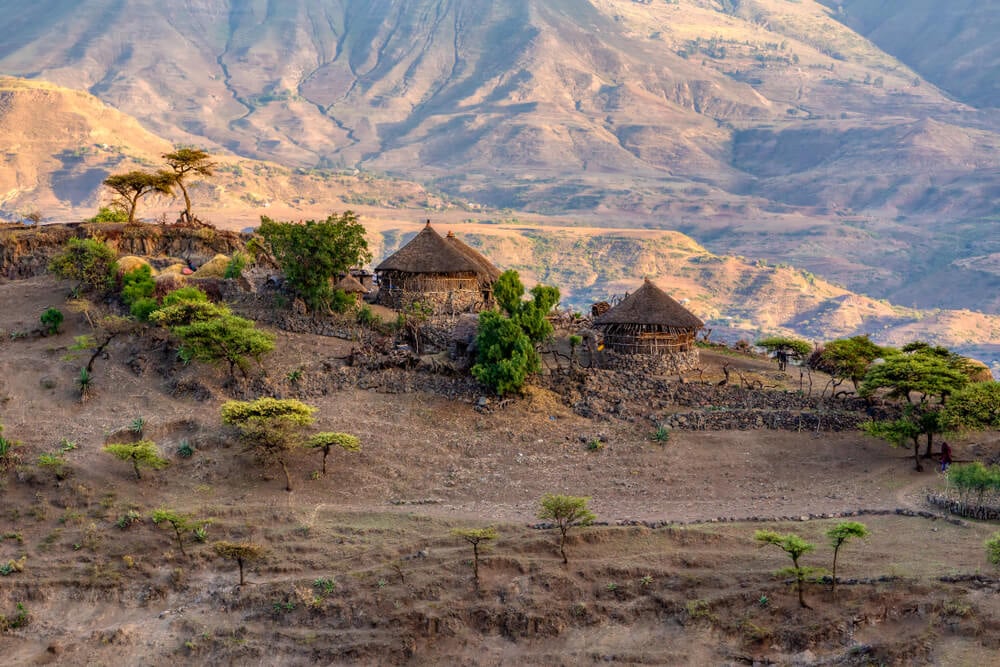
Traveling around Ethiopia is an experience full of emotions. You will witness huge economic differences and chaos. You will constantly be stared at. You will experience the high levels of religiosity and mysticism that govern Ethiopian society. You will enjoy a radically unique gastronomy. And, above all, you will experience enormous diversity.
History in the north, tribes in the south, and Islamic influence in the east, all surrounded by magnificent landscapes and natural attractions, make Ethiopia the perfect travel destination for those who like to avoid monotony in their trips.
Best Travel Itineraries for Backpacking Ethiopia
Ethiopia is a huge country of the size of France and Spain combined. The vast amount of amazing sites to visit and the depth of its diverse culture and its ancient history would allow you to spend several months in the country without having discovered half of it.
The northern part of Ethiopia is more historical, although it also has some natural attractions like the Simien Mountains and the Danakil Depression, while the southern part of the country may be better for serious adventure travelers willing to immerse more into the wildlife and the tribes Ethiopia is home to.
10-Days Travel Itinerary for Ethiopia – The Historical North
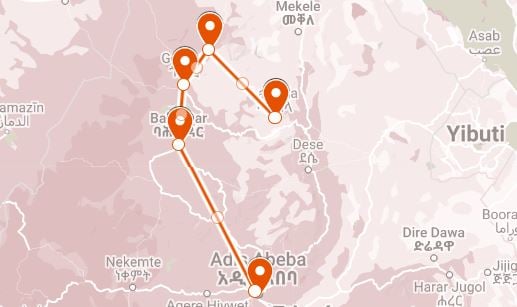
It must be said that 10 days are not enough to visit the whole country, however, with this itinerary through the northern part of Ethiopia, you can get a strong idea about its culture and the ancient history that has shaped the country in such a unique manner. The itinerary is reduced to the Amhara region , which was home to the different Ethiopian capital cities and kings for centuries.
If you access Ethiopia by plane, which is the most common and recommended way to enter the country, every trip will start in Addis Ababa . Even though there may not be too many astonishing attractions in Addis, I would recommend spending at least one day until you head on to the next destination.
It is possible to reach Bahir Dar by public transportation, however, with a constrained calendar it may be better to get there by plane as it can easily take a whole day to reach it. From there, you can move from one place to another with public buses or hire a driver to take you around.
I would spend at least a whole day in Bahir Dar and Gondar and then spend at least two whole days both in the Simien Mountains and Lalibela . In the latter, it would be recommendable to save a day to hike to the monasteries in the area, although you can see even more if you have time.
I wouldn’t recommend spending less than 10 days in Ethiopia.
18-Days Travel Itinerary for Ethiopia – The Historical North & The East
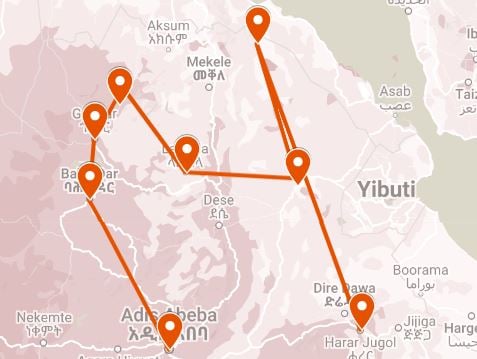
This itinerary adds two more destinations to the previous one.
From Lalibela, you could head on by public transportation to Semera , where all the organized trips to the Danakil Depression are currently starting. Organized trips are compulsory to visit Danakil Depression and they usually vary from 1 to 4 nights.
Depending on your interest and time and budget constraints, I would advise going for the 2 or 3 nights tours. Before the Tigray conflict started, it was also possible to start organized trips from Mekele.
The trip will take you back to Semera from where you can take a long bus ride to Harar , where you can explore the city and embark in the available activities for one or two days. There is no airport in Harar, however, Dire Dawa , the second largest city in the country is close and you can fly back to Addis from there.
1-Month Travel Itinerary for Ethiopia – The Whole Country
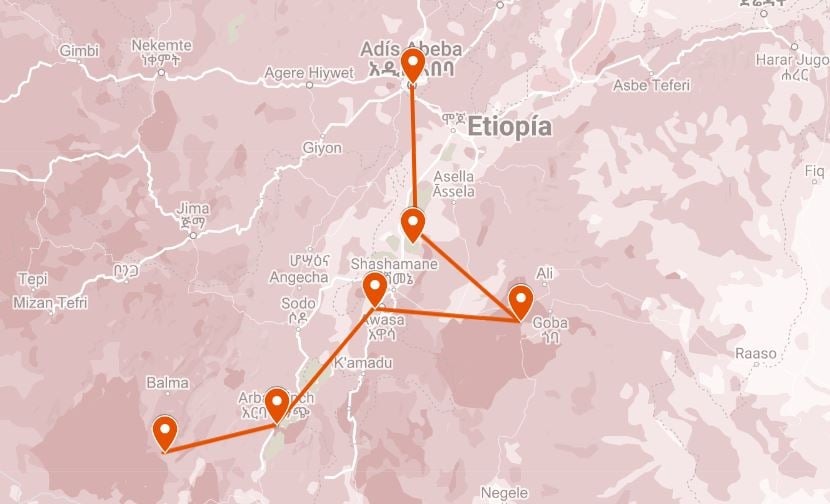
This itinerary includes the previous one and the southern part of the country and it will allow you to fully explore the huge cultural diversity existing within Ethiopian society. This itinerary can also serve those more interested in exploring the southern part of Ethiopia.
Regardless of whether you have already done the northern itinerary or just arrived in the country, to explore the south, you should start in Addis . This itinerary is done for those willing to travel this area by land and willing to spend between 10 and 14 days.
Nonetheless, the main motivation to travel to this area is usually to reach Arba Minch or Jinka , where you can access tribal and wildlife experiences. Therefore, it is also possible to access these two cities directly by plane and spend the whole time there.
If going by land it would be recommendable to spend one night both in Langano and Awasha and at least a couple of them in the Bale Mountains, the place in the country where it’s easier to spot the Ethiopian Wolf.
On your way south, you can also visit the Rastafari community of Shashamane , although it is not 100% advisable due to reported incidents towards tourists.
Once in Arba Minch and Jinka, it is generally compulsory to hire a tour operator to embark on tribal experiences, usually located inside the National Parks.
To go back to Addis, you can fly from both cities.
Best Places to Visit in Ethiopia
Backpacking Ethiopia is all about experiencing the enormous diversity and uniqueness of its different destinations.
From walking through its vibrant capital city to being completely unable to communicate in isolated villages, Ethiopia offers attractions for all kinds of preferences and is a true treat for slow travelers .
Backpacking Addis Ababa
Addis, as the locals refer to it, is known to be the diplomatic capital of Africa as it hosts the African Union headquarters. Even though it may not have the most beautiful sites, I would recommend spending at least one or two days exploring the city. Compared to other African capital cities it is relatively safe to walk around.
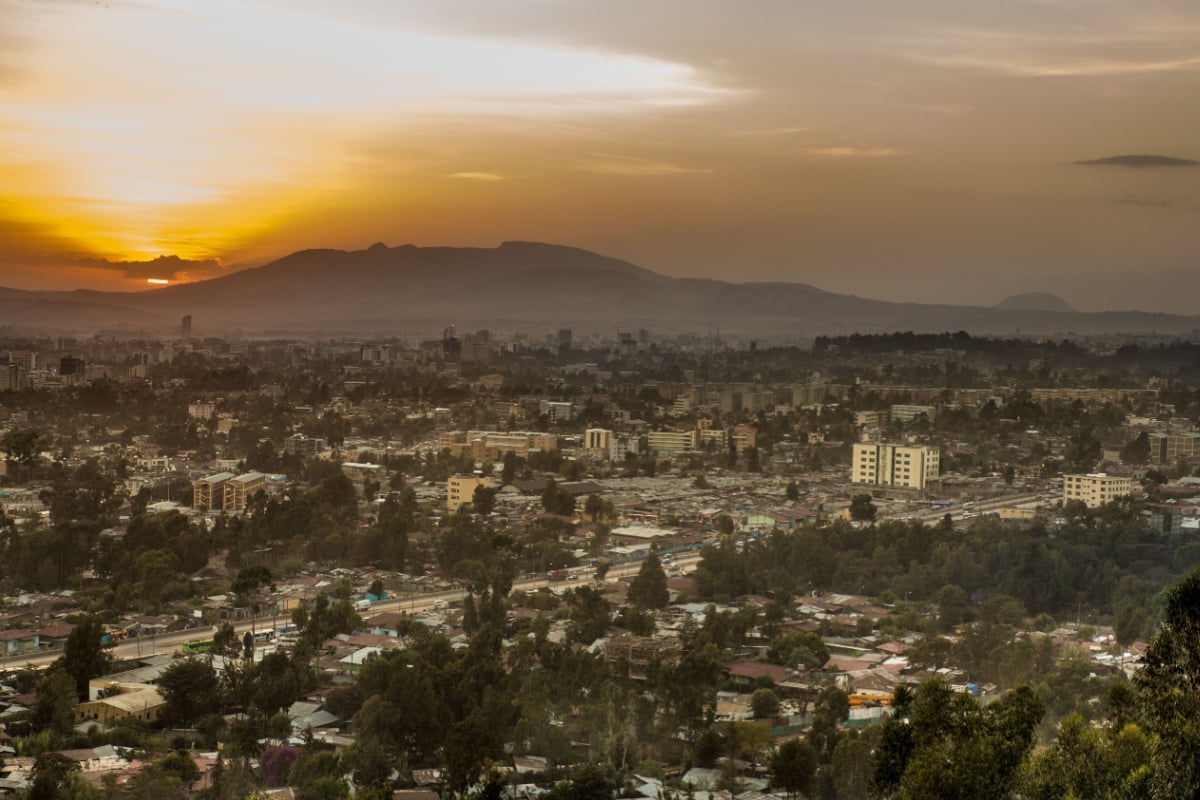
The main attractions in Addis would be the National Museum, the Ethnological Museum, and, of course, Merkato , the biggest open-air market in Africa, where you can wander around its busy narrow streets and experience the life of the country’s trade center. Addis also offers the best nightlife and gastronomical options in the whole country.
Backpacking Lalibela
Probably the most important tourist attraction in the whole country. However, it must be said that its popularity is well deserved. It’s one of those destinations that will appeal to everyone from hardcore budget backpackers to luxury tour groups.
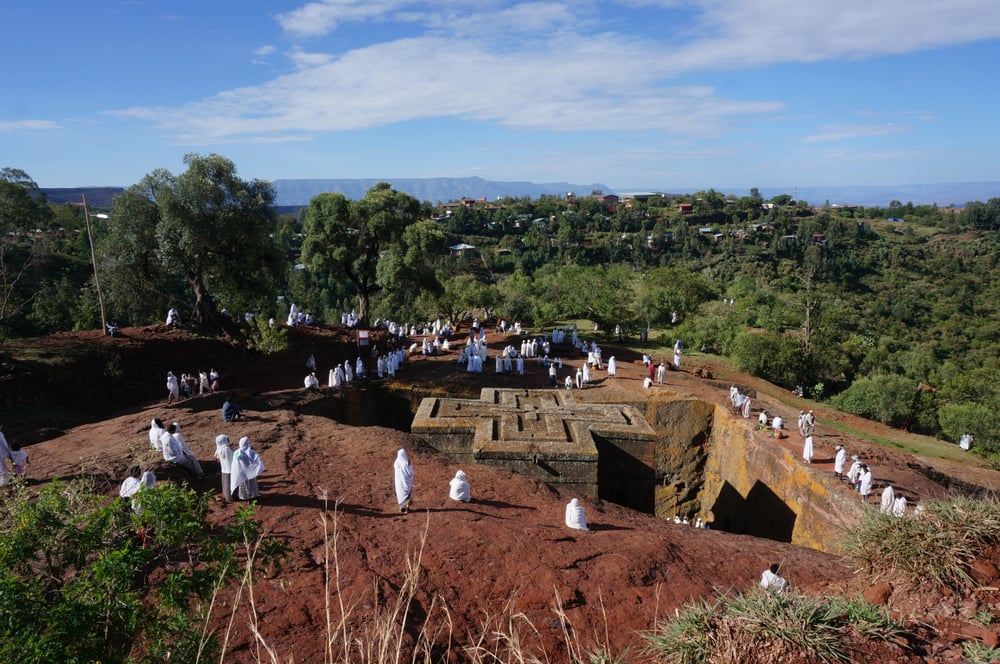
The town of Lalibela is home to a group of 11 rock-hewn churches from the 12th century. These churches were carved from the ground and, hence, built from top to bottom. They were built underground so that the enemies wouldn’t be able to spot them from a long distance.
Besides its beauty and historical interest, what makes Lalibela unique and different from other historical attractions is that it continues to have a high degree of religious activity. While visiting Lalibela you will encounter hundreds of pilgrims and priests praying and camping in the churches’ compound. Just remember to take off your shoes before entering a church.
Backpacking Gondar
The historical city of Gondar is located in the northwest of the country and it will be the first relatively big city you will find if you are entering Ethiopia by land from Sudan.
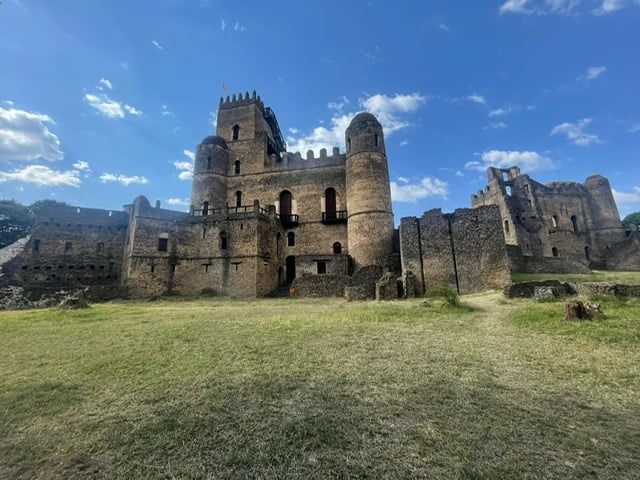
Gondar was the capital city of the Kingdom of Abyssinia until the second half of the 19th century and it’s home to the Fasil Ghebbi citadel where the successive kings since the 17th century built their castles.
It is not necessary to spend more than one day in Gondar and it’s a perfect stopover on your way to the Simien Mountains National Park.
Backpacking Simien Mountains
The “Roof of Africa”, as it is also known, is an extensive National Park with more than a dozen peaks with a height of more than 4,000 meters. It is also home to Ethiopian endemic animals like the walia, the gelada monkey and the Ethiopian wolf.
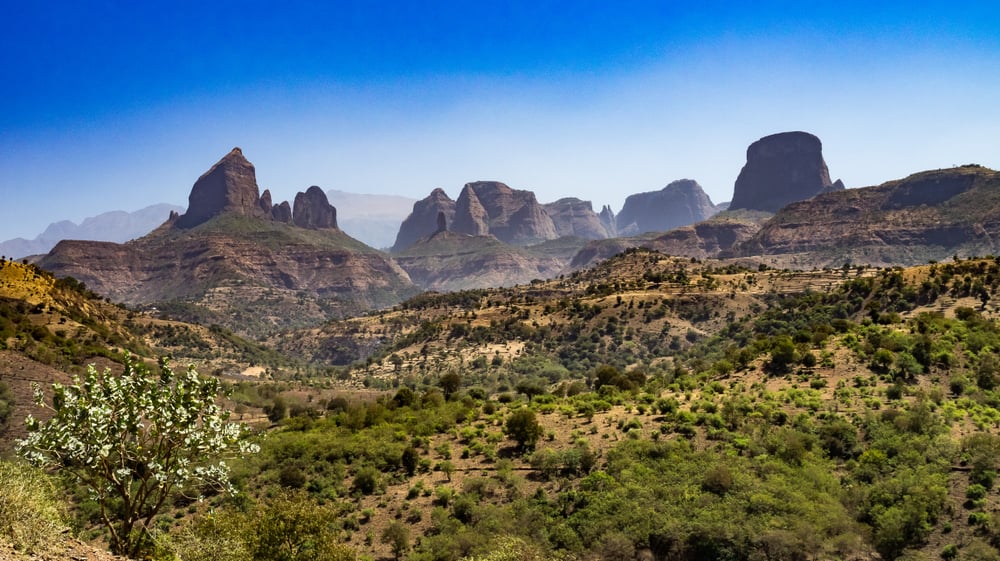
The Simien Mountains are located 2 hours north from Gondar by car. It is highly recommendable to spend at least one night camping in the national park in order to enjoy sunrise and sunset treks. However, it is possible to extend the trek up to a week and reach Ras Dashen’s peak, the highest mountain in Ethiopia.
It is compulsory to be accompanied by a scout during your stay in the Simien Mountains and it is also recommendable to hire a guide who knows the National Park, especially if you are not planning to stay too much time inside, as it has a wide range of alternative paths that can led you to end up a bit lost.
Backpacking Bahir Dar
Located on the south coast of Lake Tana, the biggest lake in Ethiopia, Bahir Dar is the third biggest town in the country and is the capital city of the Amhara region. The main attraction in Bahir Dar is the monastery islands inside of the lake, where you can see how priests devote their time to their spiritual duties in an incredibly charming and isolated environment.
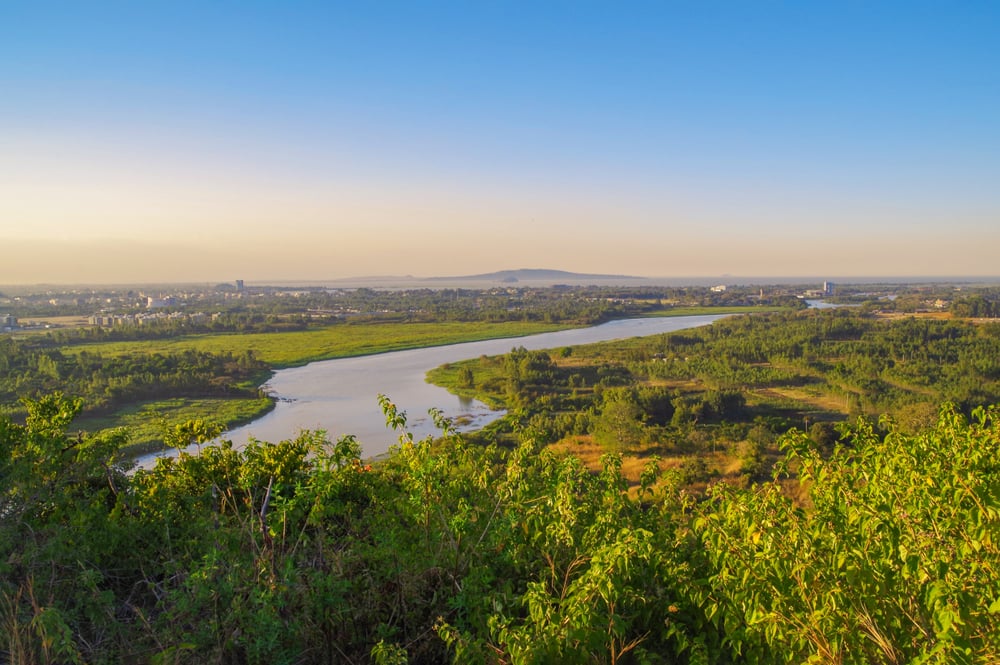
While in Bahir Dar, it is also recommendable to go on a one-hour drive to the Blue Nile Falls. The best time to visit the falls is during the rainy season, when the falls are wider and more powerful, and the landscape surrounding them is greener. Nonetheless, they can also be visited during the rest of the year but before going it is advisable to check out if the activity of the dam nearby is shortening the water supply to the falls.
Besides these attractions, Bahir Dar is a charming city with the comforts of a metropolitan area but without the overwhelm that you may find in Addis Ababa.
Backpacking Danakil Depression
This area located in the Afar region some 15 km away from the border with Eritrea, in the northeast of Ethiopia, is considered the most inhospitable place on Earth because of its high temperatures (usually around 50º degrees Celsius) and the presence of active volcanoes and high quantities of sulfur.
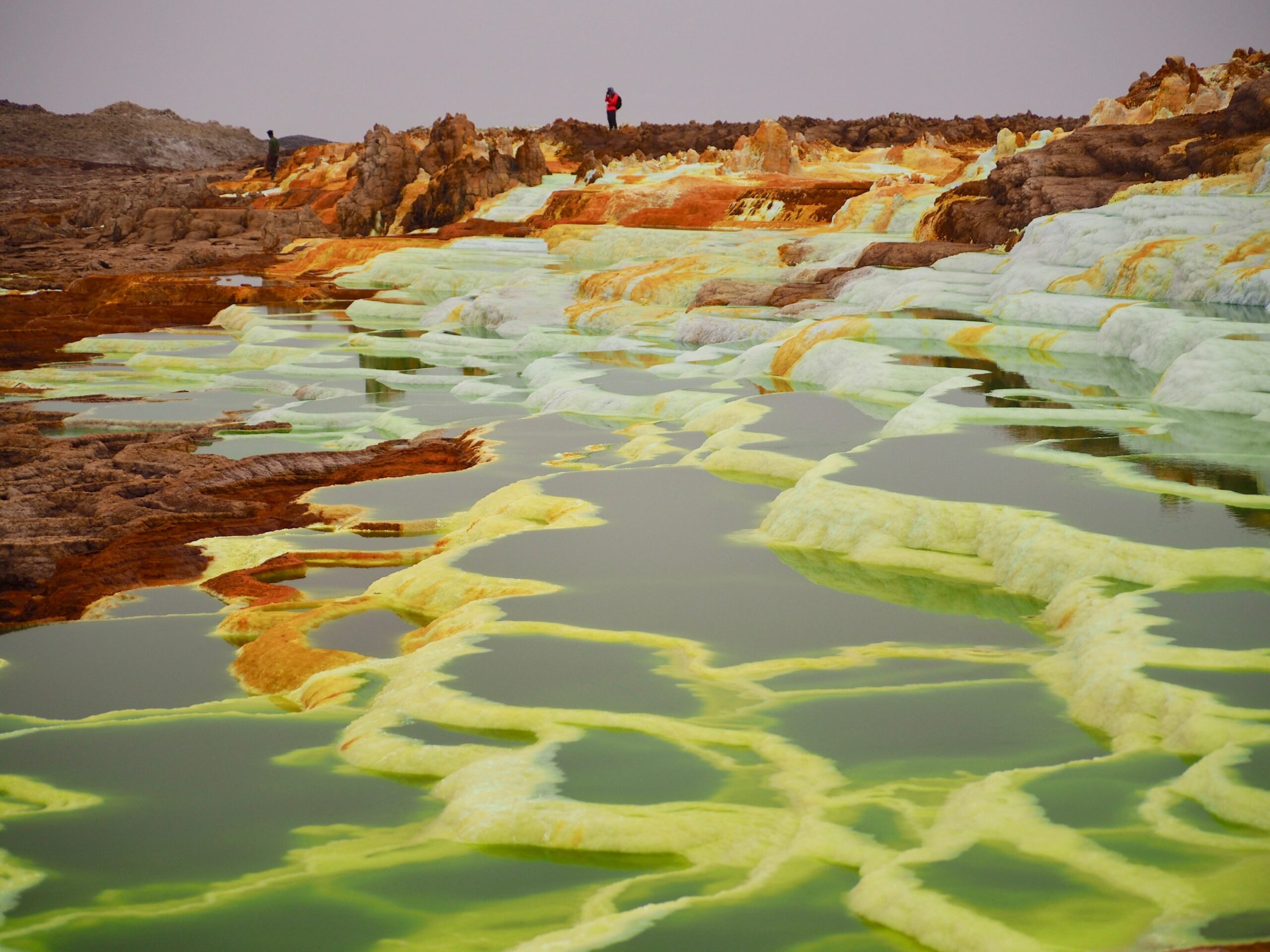
However, a trip to the Danakil Depression also offers the opportunity to immerse in one of the most unique landscapes in the world. You will be able to see the work of the rough Afar miners in the salt lakes, the picturesque colors of Dallol, and the active Erta Ale volcano.
The inhospitality of the region makes it compulsory to be accompanied by armed scouts during your visit to the Danakil Depression. In addition, the trip involves long driving hours through a difficult environment. Hence, you should organize your trip to Danakil with a travel company, which will start the trip from Mekele (currently not available because of the conflict situation in Tigray) or Semera. Prices are high but it is the only way to visit this remote land.
Backpacking Harar
The walled city of Harar is located in the eastern part of Ethiopia, close to the border with Somaliland. As in much of this part of Ethiopia, Islam is the dominant religion, and Harar features the characteristics of Arabic-style architecture and urban design.
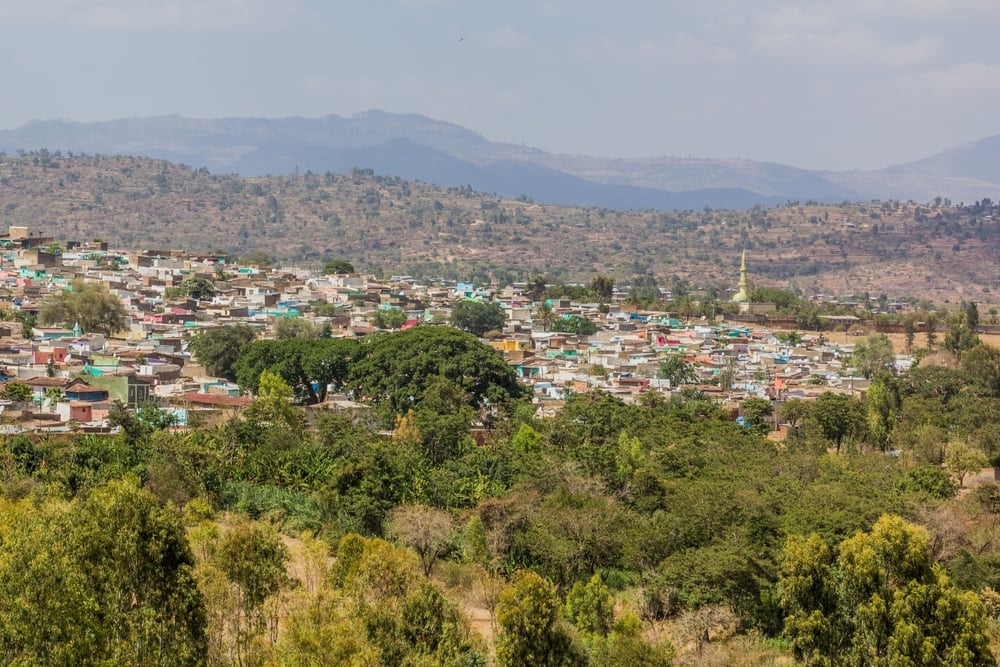
One of the biggest charms that Harar offers is getting lost through its narrow streets to appreciate the lifestyle of the inhabitants of this 13th-century town. In addition, during sunset, it is possible to get outside of the city walls and feed the hyenas that abundantly populate Harar.
Like in other parts of Ethiopia and the Horn of Africa, many of the inhabitants of Harar will spend several hours per day chewing khat. This plant with stimulant effects must be chewed for hours in order to truly notice its effect.
Backpacking Arba Minch
Arba Minch is the most populated city in the southern part of Ethiopia. It is located beside lakes Chamo and Abaya. A boat cruise in Lake Chamo will offer you the opportunity to spot hippos and Nile crocodiles, the biggest kind in the world, apart from the lifestyle of the intrepid fishermen who embark every day in these dangerous waters.
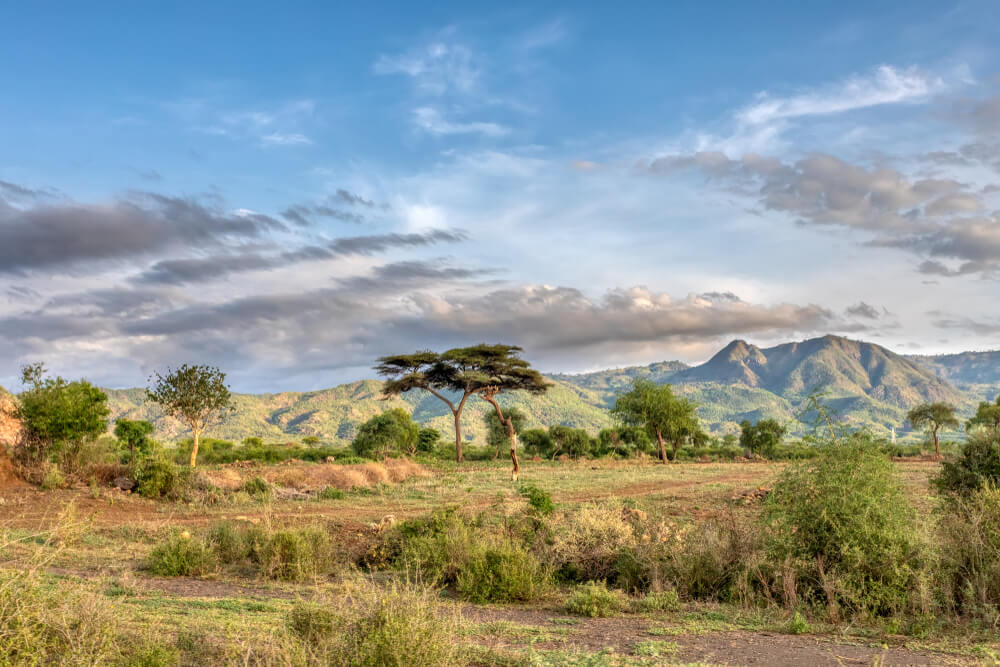
Arba Minch is often used by visitors as the base to explore the different indigenous tribes that populate this part of the country. A two-hour drive to the south from Arba Minch you can find the UNESCO village of Konso, where the Konso people live in a centuries-old walled town.
The city of Jinka, located to the southwest of Arba Minch, is also used as a base to explore the remote tribes of the Omo Valley. However, this experience has a high cost and, from a personal opinion, is a bit uncomfortable to just wander around a place where the only reason why they accept you being there is that you are paying them.
Getting Off the Beaten Path in Ethiopia
Backpacking Ethiopia is in itself an off the beaten path experience . Even in Lalibela, the “most touristic” attraction in the country you will find out that 90% of the people are there for non-touristic reasons.
Having said this, Ethiopia also offers the opportunity to immerse in communities and villages that live 100% isolated from the outside world, without internet access and reliant on traditional trade rather than on the use of currency.
When traveling Ethiopia by land, it is easy to recognize this kind of town and I will highly encourage you to spend a couple of hours trying to interact with the locals there. However, don’t expect them to know English.

We’ve tested countless backpacks over the years, but there’s one that has always been the best and remains the best buy for adventurers: the broke backpacker-approved Osprey Aether and Ariel series.
Want more deetz on why these packs are so damn perfect? Then read our comprehensive review for the inside scoop!

A new country, a new contract, a new piece of plastic – booooring. Instead, buy an eSIM!
An eSIM works just like an app: you buy it, you download it, and BOOM! You’re connected the minute you land. It’s that easy.
Is your phone eSIM ready? Read about how e-Sims work or click below to see one of the top eSIM providers on the market and ditch the plastic .
Top Things to Do in Ethiopia
These are the best things to see and do in Ethiopia…
1. Explore Lalibela
Probably one of the highlights and indispensable destinations when traveling in Ethiopia. Despite the beauty and the magnificent architectural characteristics of Lalibela, wandering around the churches’ compound and observing how people behave inside the churches is the best way to understand the degree of religiosity of Ethiopia.
Depending on the time you have you can decide whether to do this on your own or with a local guide. If you have time constraints I will highly recommend hiring a guide to show you all the highlights in the compound.
2. Camp in the Simien Mountains
After having spent some days exploring the overwhelming streets of different Ethiopian sites, arriving at the Simien Mountains feels like entering an oasis in the middle of the desert.
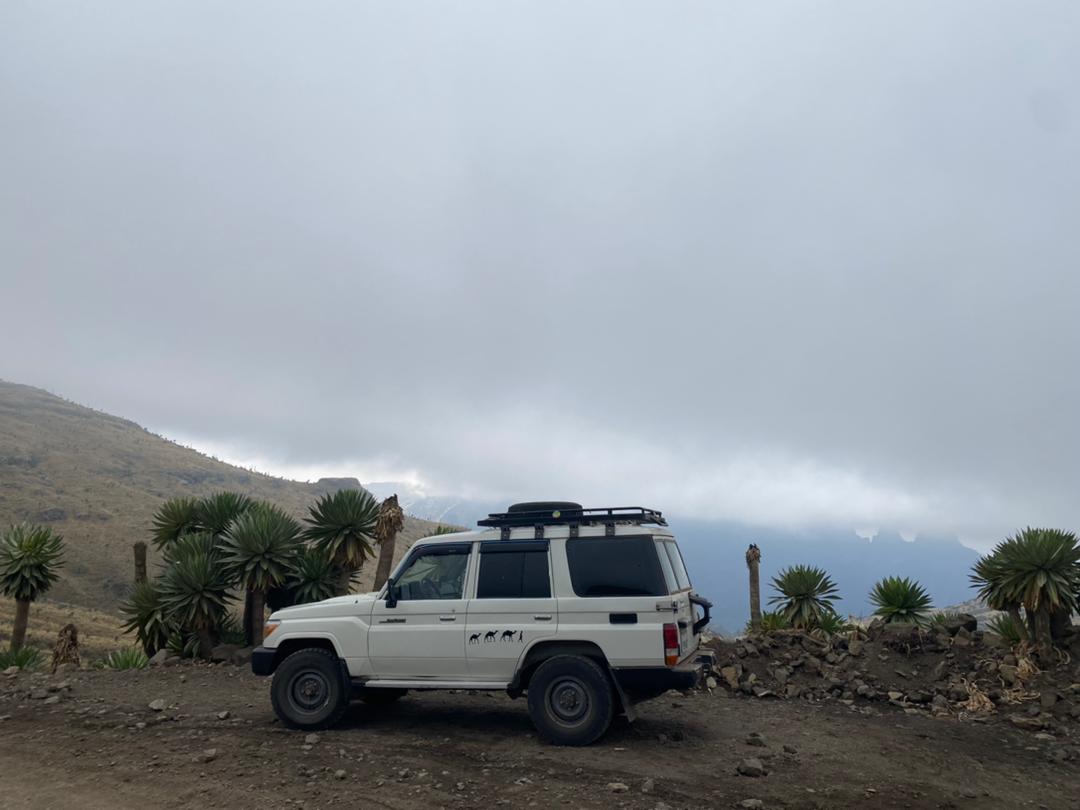
You should spend at least one night to experience one of the best sunsets that you will ever see. Standing on the edge of a 4000 meters high mountain while the sun comes down and the Gelada monkeys start climbing the cliffs to find the place where they will spend the night is one of the most beautiful natural experiences in the whole world.
While trekking, it is important to pay attention to the endemic Ethiopian wolf, who may surprise you while trying to hunt some moles in the ground. Also, remember to bring your winter clothes as during the night it gets freezing cold.
3. See the Danakil Depression
Besides its reputation as the most inhospitable place on Earth, embarking on a Danakil Depression trip is a hell of an adventure. Whether you spend 2,3 or 4 nights there, visiting Danakil is one of those experiences that make you feel relieved they are over while at the same time, you don’t regret having gone through them.
The heat, the lack of showers, or the armed company, are clearly compensated by the feeling of entering a whole new planet in which all your five senses will be exposed to radically new sensations.
4. Discover the Island Monasteries in Lake Tana
Hire a boat to take you around Lake Tana, exploring its completely isolated and peaceful island monasteries. There are five of them, however, it may be enough to arrange with the boat captain to just visit three or four.
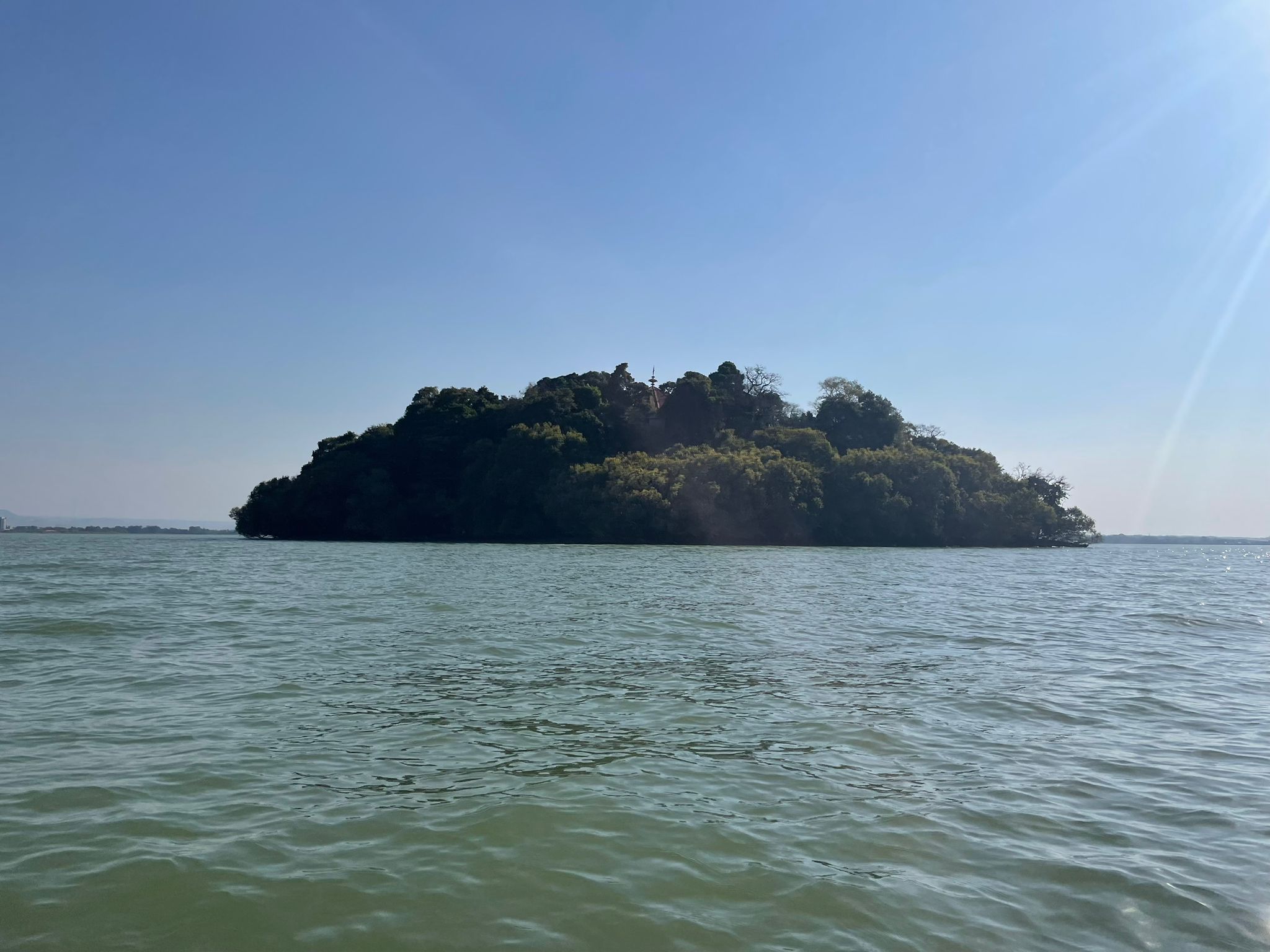
Debre Maryam is the most popular one and has a bigger tourist infrastructure with shops and bars, thus, while worth spending half an hour there, you should head on to smaller and more isolated ones like Daga Stefanos or Kergan Gabriel.
In these monasteries, you will most certainly be the only person on the island besides the priests that live there and who dedicate their lives to praying and meditating in such a quiet, green and peaceful environment. During your boat ride you will also be able to spot hippos.
5. Get lost in the streets of Harar
For those travelers who really enjoy cultural shocks and walking around completely different cities, wandering around the narrow streets of Harar will probably be one of the highlights of their trip to Ethiopia.
After having been immersed in the Ethiopian Orthodox spirituality of the monasteries of Lake Tana or Lalibela, arriving to Harar will be a perfect reminder of the 35% Muslim population in the country. Mosques, markets, khat, narrow streets, and hyenas, are the key elements that make Harar a unique place to visit in Ethiopia.
6. Experience the African “Middle Age” in Fasil Ghebbi
The castle compound of Fasil Ghebbi in the city of Gondar has nothing to envy to many of the castles’ compounds located around Europe. The first of these castles was built by King Fasil Ghebbi in 1636. After building this castle, his successors built their own castles in the same compound.
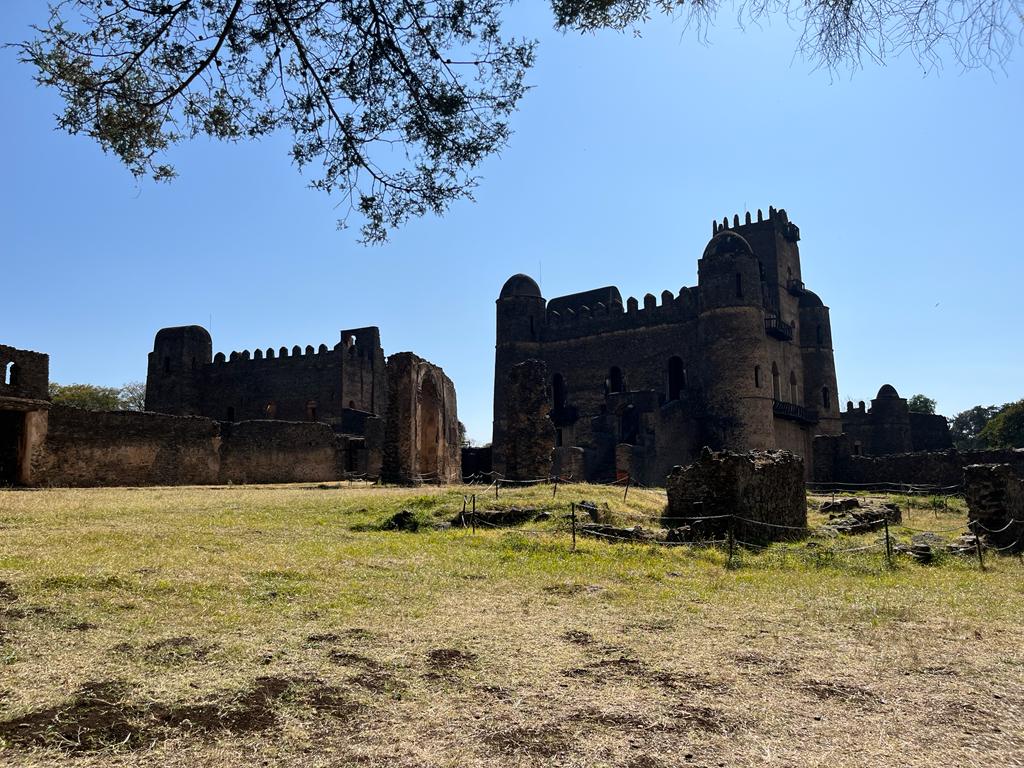
Wandering around the compound is a unique experience in Africa, as it gives the feeling of being back in one of Europe’s middle age towns. Nonetheless, the conditions of the castles vary from one another as they have been affected by the Sudanese invasions or World War II bombs.
7. Immerse into the Merkato Experience
Apart from being the biggest open-air market in Africa, Merkato is also characterized for being the most overwhelming place in the whole country, without any doubt. Some may recommend going to Merkato with a guide as sometimes it can be excessively overwhelming, however, I think that to fully experience it is better to go on your own.
Any kind of goods are sold in Merkato, from cows to washing machines, and it is the place from where all the goods are distributed to the rest of the country. I will also recommend going to one of the rooftops in the buildings of Merkato to truly realize the dimensions of the market.
Although it is possible to find souvenirs and touristic items, I would recommend buying them on Churchill Avenue as prices for these kinds of products are higher in Merkato.
8. Visit Tribes in the Omo Valley
Although I am not the biggest fan of the tribal experiences, opinions about it are very diverse, and it is one of the main reasons why Ethiopia receives tourists every year. Therefore, I felt like I should include it among the top things to do.
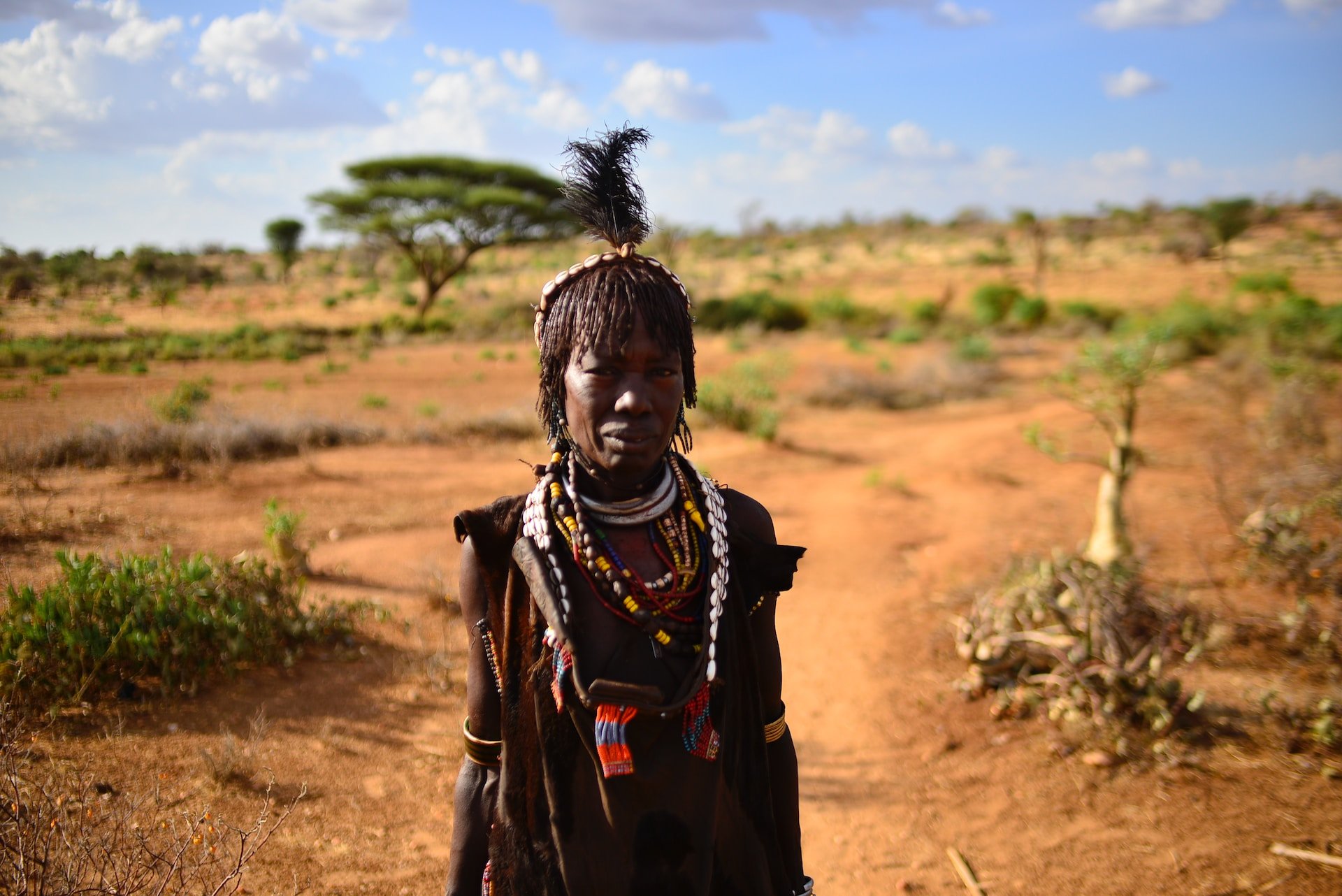
In order to visit tribes like the Mursi or the Hammer, among the most isolated and popular ones to visit, it is necessary to arrange it through a local guide. During the experience, they will let you know how these people live and their traditions. Also, they will have a preset schedule including dances or something of that sort.
You will also be constantly asked to pay to take pictures of them, buy souvenirs or just give them tips to support their community. While it may seem good to help these communities, I have mixed feelings about it, as some of their traditions include the perpetration of gender-based or infant-oriented crimes.

Wanna know how to pack like a pro? Well for a start you need the right gear….
These are packing cubes for the globetrotters and compression sacks for the real adventurers – these babies are a traveller’s best kept secret. They organise yo’ packing and minimise volume too so you can pack MORE.
Or, y’know… you can stick to just chucking it all in your backpack…
Backpacker Accommodation in Ethiopia
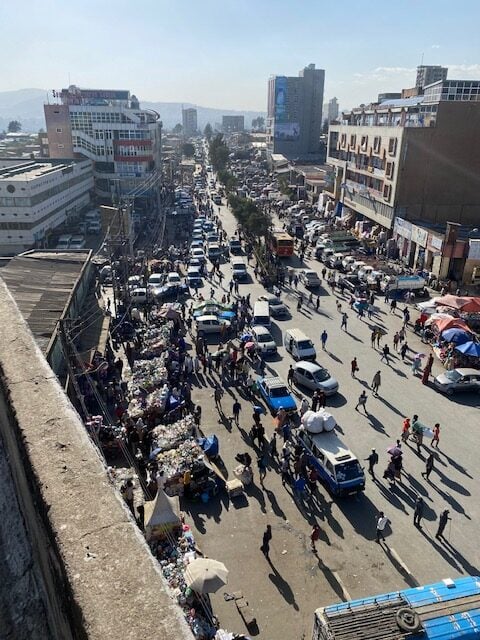
Ethiopia does not have a fully developed backpacking or touristic infrastructure. Therefore, the availability of accommodation for people visiting the country is quite limited and, many times, oriented toward luxury visitors.
When traveling around Ethiopia, don’t expect to find fancy hostels with a nice bar and a great backpackers’ party scene .
However, you can still find very decent options around the country to sleep in clean and affordable places. In addition, the kind of travelers you will meet in these places will certainly be on the same page as you, looking for adventure and real experiences.
Addis will be the destination where you can more easily find accommodation as is the most developed part of the country by far. Outside of Addis options are more limited and, as was mentioned, in the touristic destinations, accommodation is more oriented towards the rich.
It is also important to bear in mind that Ethiopia is not very digitized, hence, in some places, it is just better to try to find accommodation in the old-school way. Get out your map and check out the options you have around you.
The Best Places to Stay in Ethiopia
Ethiopia backpacking costs.
The costs of backpacking Ethiopia depend a lot on two factors: the number of organized activities you want to get involved in and how keen you are on living the local way during your stay.
As it was mentioned in the previous sections, for some of the main attractions in Ethiopia, like the Simien Mountains, the Omo Valley, or Danakil Depression, it is necessary to hire guides with transportation and expertise in the area visited. These guides are used to organize excursions for wealthy visitors, which makes them expensive. In addition, costs like entrance fees and car rental are high in Ethiopia.
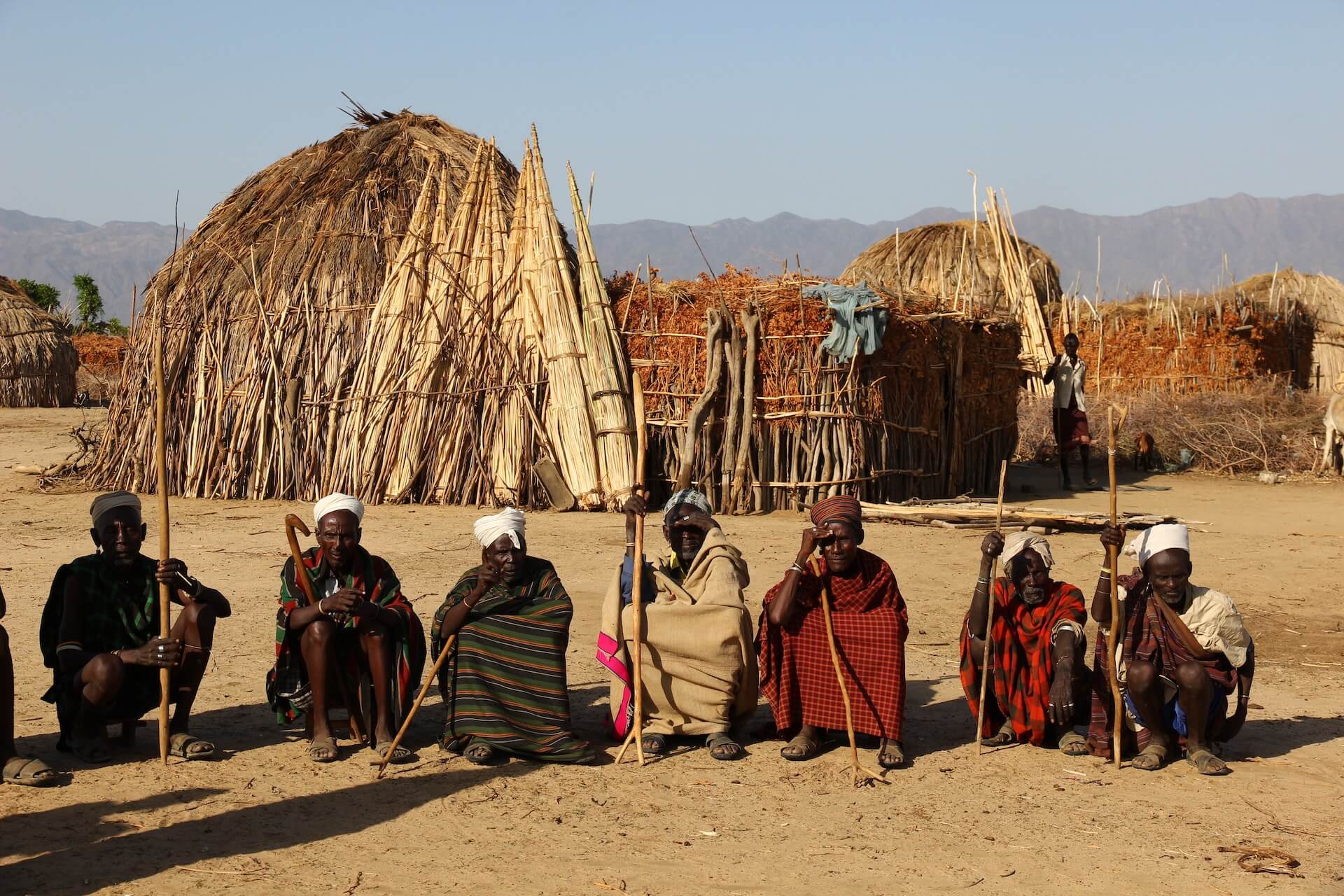
The other main determinant of your expenses will be how dependent you are on living by Western standards. If you decide to eat and drink in local places, and you are not too exquisite about the places you sleep at, then money in Ethiopia can go for a long time.
However, be warned that both the food and the accommodation standards differ hugely from the ones in your country of origin. Another important aspect will be whether you decide to fly, hire a driver or move around by public transportation.
Therefore, backpacking Ethiopia on a tight budget can be quite challenging as it does not offer too many middle-range options in terms of accommodation, transportation, activities, or food. However, I don’t think that anyone who is not up for a challenge would even think about backpacking Ethiopia.
Money in Ethiopia
The currency in Ethiopia is the Birr, which as of May 2023 is exchanging at $1=54.82 Birrs. The biggest bill is 200 Birrs, so remember to arrange some space for the money once you have it.
It will be quite difficult to find Ethiopian currency out of the country so your best option will be to either withdraw from a bank or exchange at the forex bureau in the banks. In Addis it is easy to get money, however, when you head on to other destinations it can be difficult or even impossible. Hence, try to carry all the cash you will need from Addis.
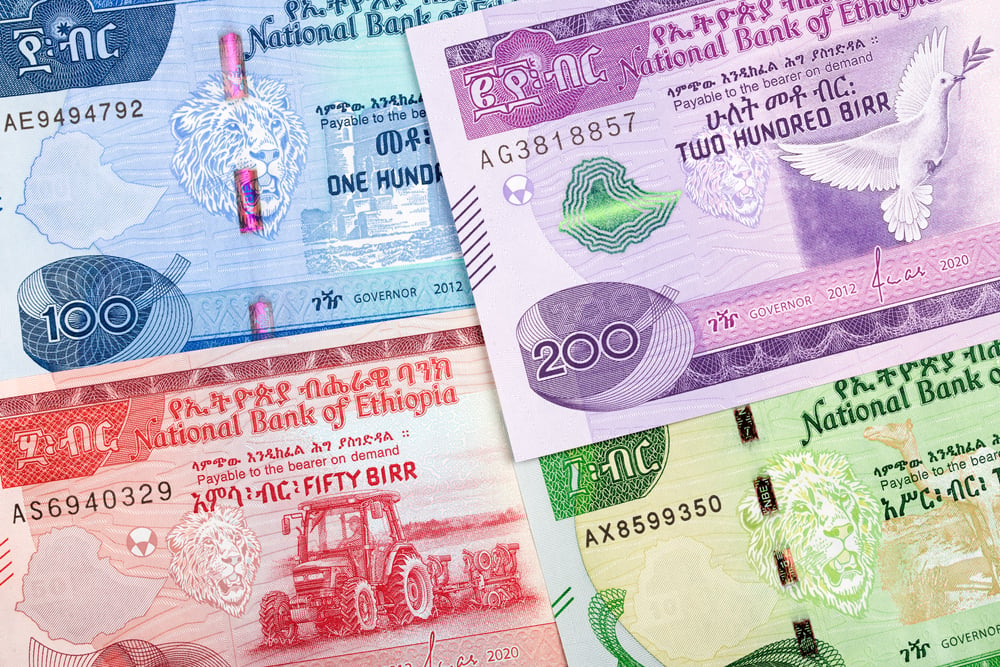
Also, Ethiopia is a really cash-based economy and only in Westernized restaurants and accommodations you will have your credit and debit cards accepted, so prepare yourself to pay all the expenses in cash.
For all matters of finance and accounting on the road, The Broke Backpacker strongly recommends Wise – The Artist Formerly Known as Transferwise!
Our favorite online platform for holding funds, transferring money, and even paying for goods, Wise is a 100% FREE platform with considerably lower fees than Paypal or traditional banks. But the real question is… is it better than Western Union?
Yes, it most certainly is.
A Daily Budget in Ethiopia
Travel tips – ethiopia on a budget.
- Eat Local Food : Ethiopian cuisine is unique and despite it may be a bit of a shock at the beginning, you can grow to really love it. In local restaurants, you can spend 2-3$ per meal and end up completely full.
- Camp : Even though you can’t camp wherever you go when visiting National Parks like the Simien Mountains it will save you a lot of money (and also improve your experience) to pack your camping gear and enjoy sleeping in the wild.
- Use public transportation : while it can be challenging and uncomfortable, traveling around Ethiopia through public transportation is a hell of a rewarding experience, both for your wallet and your soul.
- Limit the amount of tour-required destinations : if you are on a tight budget it is better to reduce the number of activities that require hiring a guide and transportation. While there are amazing places to see in Ethiopia, the highlight of traveling here is getting fully immersed in its unique culture.
Why You Should Travel to Ethiopia with a Water Bottle
Although the streets can be dirty, please be responsible enough to not be a part of it. It is not only about spoiling the beauty of the places or climate change, the health of Ethiopians can be severely affected if the trash you throw away ends up in the river where they get their water from.
One way to get around this is by investing in a premium filtered travel bottle like the Grayl Geopress. You can filter any kind of water, save money on buying endless plastic bottles – and sleep easy knowing you’re not contributing to the plastic bottles lining our beautiful beaches.

Drink water from ANYWHERE. The Grayl Geopress is the worlds leading filtered water bottle protecting you from all manner of waterborne nasties.
Single-use plastic bottles are a MASSIVE threat to marine life. Be a part of the solution and travel with a filter water bottle. Save money and the environment!
We’ve tested the Geopress rigorously from the icy heights of Pakistan to the tropical jungles of Bali, and can confirm: it’s the best water bottle you’ll ever buy!
Best Time to Travel to Ethiopia
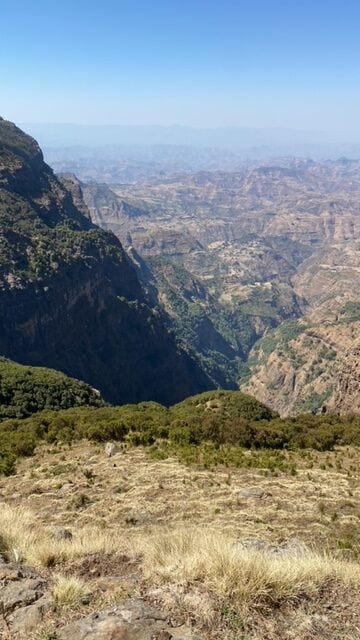
Ethiopia’s weather is divided into the rainy season and the dry season. The rainy season lasts for the months of the Western hemisphere summer, from June to September. The probability of getting rain during the rest of the year is very small.
Addis’ weather is mild during the whole year due to its high altitude (2500m) and, besides the rainy season, temperatures stay between 10º and 25º C.
In areas with lower altitudes, it can get hotter. The months before the rainy season are usually the hottest ones throughout the country. Among the touristic destinations, places like Danakil Depression, where temperatures are high throughout the whole year, or the Simien Mountains, where it is cool the whole year, follow their own rules.
What to Pack for Ethiopia
While it doesn’t have strict dress rules, Ethiopia is a conservative country, and as such some kinds of outfits, especially when it comes to women, may be quite shocking for the local people.
Also, when visiting churches, like Lalibela, your shoulders and legs should be covered. In addition, women must cover their hair.

Travel Security Belt
This is a regular looking belt with a concealed pocket on the inside – you can hide up to twenty notes inside and wear it through airport scanners without it setting them off.

Microfiber Towel
Hostel towels are scummy and take forever to dry. Microfibre towels dry quickly, are compact, lightweight, and can be used as a blanket or yoga mat if need be.

Petzl Actik Core Headlamp
A decent head torch could save your life. If you want to explore caves, unlit temples, or simply find your way to the bathroom during a blackout, a headtorch is a must.

‘Monopoly Deal’
Forget about Poker! Monopoly Deal is the single best travel card game that we have ever played. Works with 2-5 players and guarantees happy days.

Hanging Laundry Bag
Trust us, this is an absolute game changer. Super compact, a hanging mesh laundry bag stops your dirty clothes from stinking, you don’t know how much you need one of these… so just get it, thank us later.
Staying Safe in Ethiopia
As a developing country severely affected by war, Ethiopia faces different challenges that may affect the stability and safety of certain areas. However, if you avoid those areas, traveling in Ethiopia is not dangerous compared to other African countries.
In November 2022, the Federal Government of Ethiopia and the Tigray People’s Liberation Front signed a peace agreement to put an end to the two years war in the northern region of Tigray. Even though the situation is improving, traveling to Tigray is still strongly discouraged.
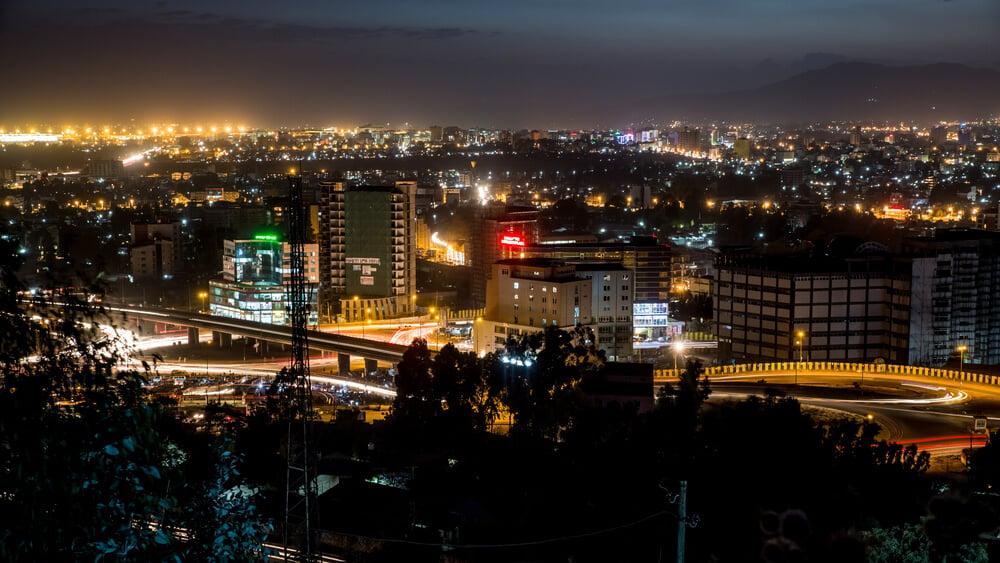
This Ethiopia backpacking guide doesn’t include any recommendations for places or things to do inside the Tigray region. Other areas of the country may be affected by sudden violent clashes so it’s important to stay updated on the situation.
Besides the danger of conflict, in touristic places, you can find petty crime and the usual scamming. Violent crime in Ethiopia is unusual, however, it is important to avoid walking around during the night, especially while in Addis. Apart from that, try to avoid flashing any valuables and keep an eye on your belongings.
Sex, Drugs, and Rock ‘n’ Roll in Ethiopia
If you are looking for a destination to go crazy, meet tons of backpackers, and stay every night until the sun comes up, then you should look for a different destination. A trip to Ethiopia will not be remembered by its wild nights out.
This doesn’t mean that you can’t unwind by drinking a couple beers in the local bars spread all over the country. In addition, Addis has an active nightlife with plenty of options to party until the late hours of the night. It is possible to find hard drugs in Addis’ nightlife, however, I don’t believe it is worth taking the risk of getting caught.
In the case of weed, due to the Ethiopian bond with the Rastafari community, it is, in the framework of a conservative country, more socially acceptable. However, again, you don’t want to be caught in an African country carrying drugs around. My recommendation is to stay away from illegal drugs during your stay in Ethiopia.
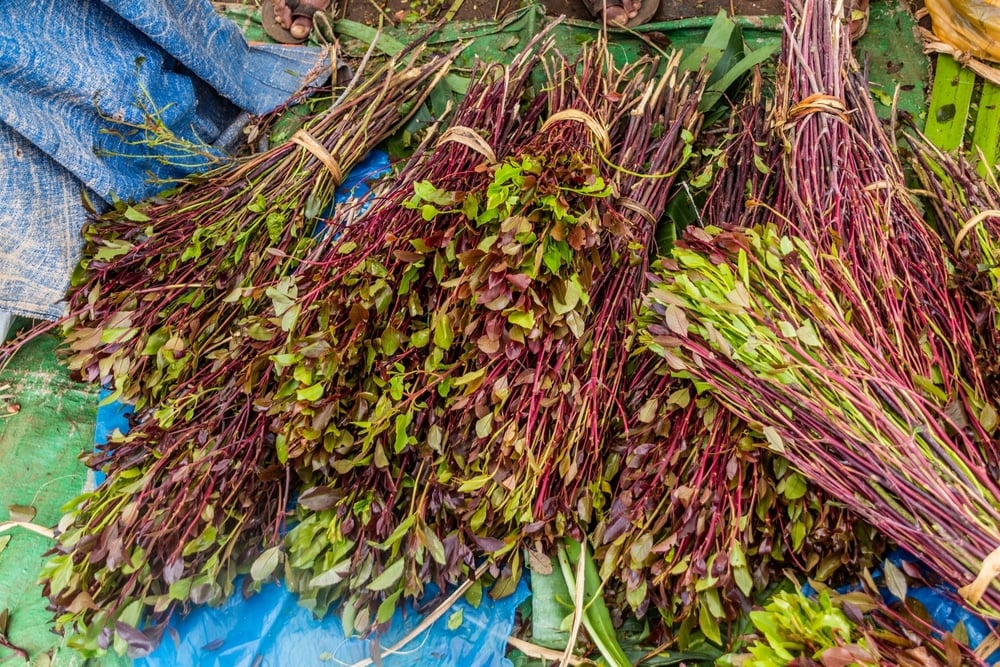
However, khat is very popular and legal in Ethiopia. Khat is a stimulant plant that has to be chewed for hours in order to truly feel its effects. Its cheap price and legal condition make it a part of the daily life of many inhabitants of the Horn of Africa and the Arabian Peninsula.
Ethiopian society is very conservative in general and, as such, it may be difficult to get involved with locals in short periods of time. In addition, a very low percentage of the local population speaks English, which reduces the possibility of establishing bonds. Nonetheless, in Addis’ nightlife, you may end up meeting lots of local and international open-minded people.
Homosexuality is illegal in Ethiopia and if accused you may even end up spending some time in jail. Besides being illegal, Ethiopian society does not approve of homosexuality either, so it is better to refrain from any kind of behavior that may lead someone to think that you are an LGBT traveler . If traveling with your partner, remain cautious even in your accommodation.
Getting Insured BEFORE Visiting Ethiopia
ALWAYS sort out your backpacker insurance before your trip. There’s plenty to choose from in that department, but a good place to start is Safety Wing .
They offer month-to-month payments, no lock-in contracts, and require absolutely no itineraries: that’s the exact kind of insurance long-term travellers and digital nomads need.

SafetyWing is cheap, easy, and admin-free: just sign up lickety-split so you can get back to it!
Click the button below to learn more about SafetyWing’s setup or read our insider review for the full tasty scoop.
How to Get Into Ethiopia
The most common and recommended way to enter Ethiopia is through Addis Ababa Bole International Airport. Ethiopian Airlines is very well connected worldwide, while there are other airlines that also operate in the country.
Entering by land to Ethiopia is generally not advisable due to insecurity in the borders and the unstable political situation of neighbors like Eritrea, Somalia, and South Sudan. Djibouti will probably be the safest land border and there is a direct train that connects Addis and Djibouti.

Entry Requirements for Ethiopia
Ethiopia has an online visa service, which allows visitors to apply for their visas through the immigration website. Tourists, as of May 2023, have two possibilities for visas:
- 30 days : 82 USD
- 90 days : 202 USD
The approval process for the tourist visa usually takes 3 working days.
How to Get Around Ethiopia
Distances in Ethiopia can be very long. If you add this to the fact that some of the touristic destinations cannot be reached by public transportation or with your own car, during the time you spend in Ethiopia you will probably have to move by different means of transportation.
Ethiopian Airlines is the only airline that operates flights between domestic destinations. The flights can be booked in person in the Ethiopian Airlines office in the Hilton Hotel in Addis Ababa.
The prices of one-way flights are around 70$ if you have entered the country with Ethiopian Airlines and around 140$ if you haven’t.
The extent to which you will have to resource to flights depends on the budget and time constraints that you have, however, in order to reach the northern cities it may be advisable to take a flight to save a whole day of public transportation
Traveling by land in Ethiopia can be quite an experience, as it is the only way to see how people in rural areas truly live and to admire the astonishing landscapes of the country.
Although interurban roads are, in general terms, in good conditions, it is difficult to find car rental companies for reasonable prices to move outside of Addis.
Hence, if you are not willing to move around the country by public transportation, you will have to hire a driver with their own car, which can turn out to be quite expensive. On the other hand, having a driver hired for everything will spare you from having to find guides in places like the Simien Mountains or the Omo Valley.
Your last option is to move around by public transportation, which is the most immersive and cheap means of transportation, however, it will also be the more difficult. There is no online information about buses and the level of English is generally low in Ethiopia, so finding the right bus can be a hell of a challenge. It all depends on your desire for adventure and your financial capacity.
Onwards Travel from Ethiopia
As mentioned in previous sections, traveling by land to neighboring countries may be difficult due to security risks. However, if possible, backpacking Kenya would probably be the more attractive option to continue with the adventure by land. There are buses that can take you to the bordering town of Moyale where you can get into Kenya and explore the off-the-beaten-path northern part of the country.
In addition, the wide range of connections that Ethiopian Airlines has with other African states will allow you to take a flight to other destinations inside the continent. Kenya, Uganda, or Tanzania are usually the cheaper options available, however, going to other destinations, like Madagascar, would allow you to save a lot of money compared to the flight prices you would pay from your home country.
Working and Volunteering in Ethiopia
Finding job opportunities in Ethiopia is not an easy task and it is mainly available in the humanitarian, international relations, and development fields. In addition, job permits in Ethiopia are not easily accessible to foreigners.
There is also not a huge digital nomad scene . The lack of touristic affluence, which usually preludes digital nomadism, together with (relatively true) prejudices about internet accessibility or living conditions, has dissuaded Ethiopia from being a part of this phenomenon.
While living conditions may not be as comfortable as in other destinations, working as a digital nomad in Ethiopia will also provide you with the opportunity to live an absolutely off-the-beaten-track experience and to understand the way of living of this unique society. Regarding internet accessibility, internet access has improved a lot in the last years and the majority of Westernized accommodation includes power generators for power cuts.
During the time I have spent in Ethiopia, I have met some remote workers who were able to maintain their job after living in Ethiopia for more than two years. It must also be said that Addis would be the best, and maybe the only place where you would be able to establish yourself as a digital nomad.
Teaching English in Ethiopia
English is not widespread in Ethiopia, which means that there is an enormous demand for English speakers in the country. However, in many cases knowing the local language may be required. Furthermore, you will most probably have to be sponsored for your job permit by your employer, who may not be willing to go through such a process if you are considering a short-term stay in the country.
Volunteering in Ethiopia
Volunteering is necessary everywhere and lending a hand through this type of experience is a really beneficial experience both for society and for yourself. Having said this, it is undeniable that there are places that need it more than others and Ethiopia is undoubtedly one of those places. Hence, I would highly encourage you to come to Ethiopia for your volunteer experience .
If you want to find volunteer opportunities in Ethiopia, then we recommend that you sign up for Worldpackers – a volunteer platform that connects local hosts directly with traveling volunteers.
Whenever you are volunteering, do stay vigilant especially when working with animals or children. Volunteer programs run through reputable work exchange programs are very well managed.
Ethiopian Culture
As it has been intensely stated in this guide, Ethiopian culture is absolutely unique and diverse mainly because of religion and ethnic diversity.
Ethiopia is one of the most ancient countries in the world and also the second country to adopt Christianity as a state religion in the 4th century, only after Armenia.
While dependent on the Egyptian Coptic Church until the 20th century, Ethiopia has been isolated from the rest of the Christian states for many centuries, which has led the Ethiopian Orthodox Church to develop a lot of unique characteristics compared to the rest of the Christian world.
Ethiopian orthodox followers do not eat pork, and do not eat animals that they haven’t killed themselves, with the exception of cows killed in orthodox butcheries. They also fast for more than half of the year. Furthermore, the high percentage of Muslims in the country and the peaceful coexistence of both religions is another fascinating feature of Ethiopian religiosity.
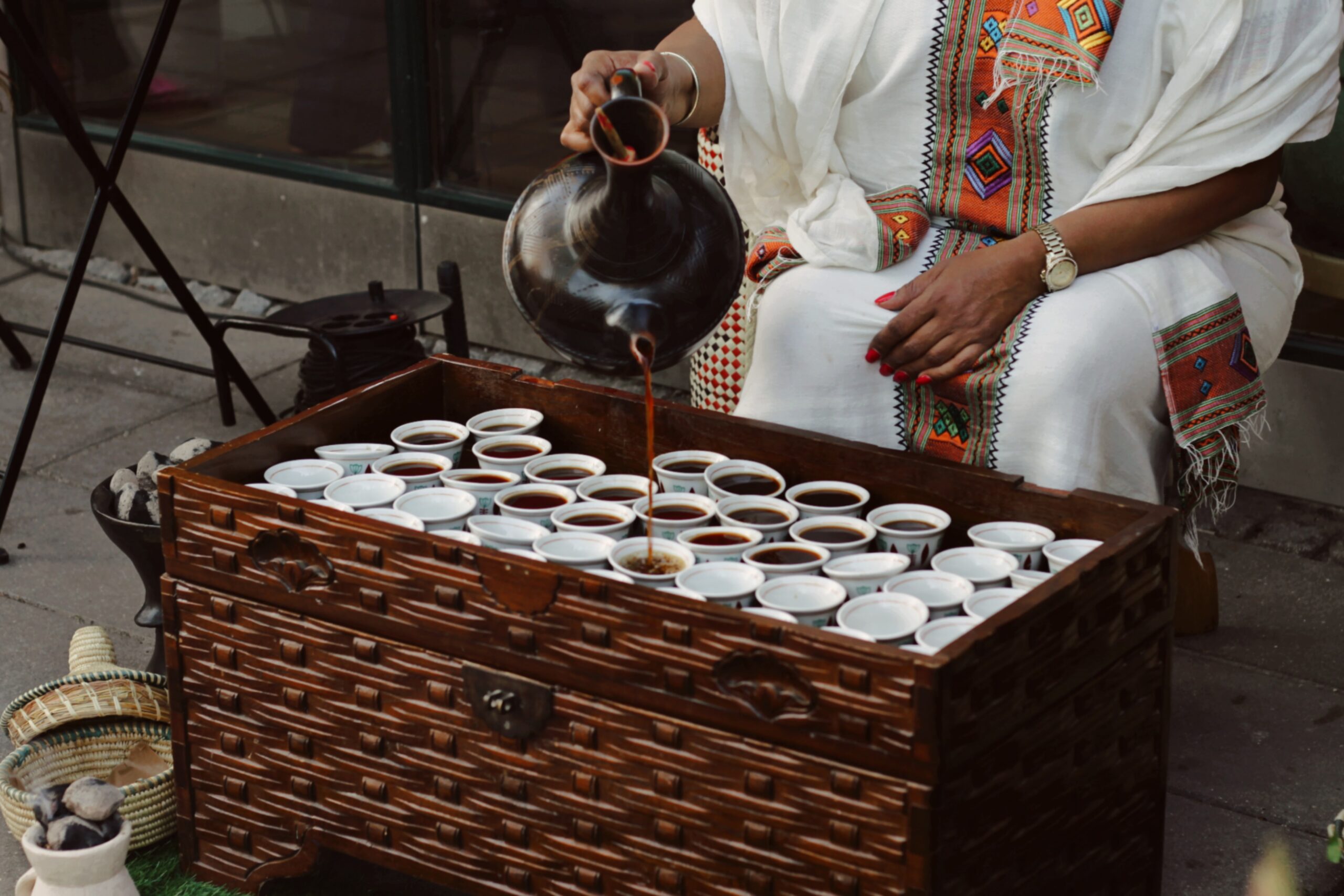
Ethiopia is populated by more than 90 different ethnic groups with radically diverse traditions and which are generally geographically distributed throughout the country, although a fair amount of coexistence takes place in different areas.
The sizes of the ethnic groups are very varied. The main ones are the Amhara, Tigrinya, Oromo, and Somali. On the other hand, very small ethnic groups inhabit the Omo Valley and other areas in the south, maintaining intact their ancient tribal traditions and ways of living. The interethnic relations in the country have been characterized by continuous conflict and power struggles until nowadays.
From personal experience, I can tell that it is better to refrain from discussing politics and interethnic conflicts, as it is a very delicate matter, about which Ethiopians have very strong opinions.
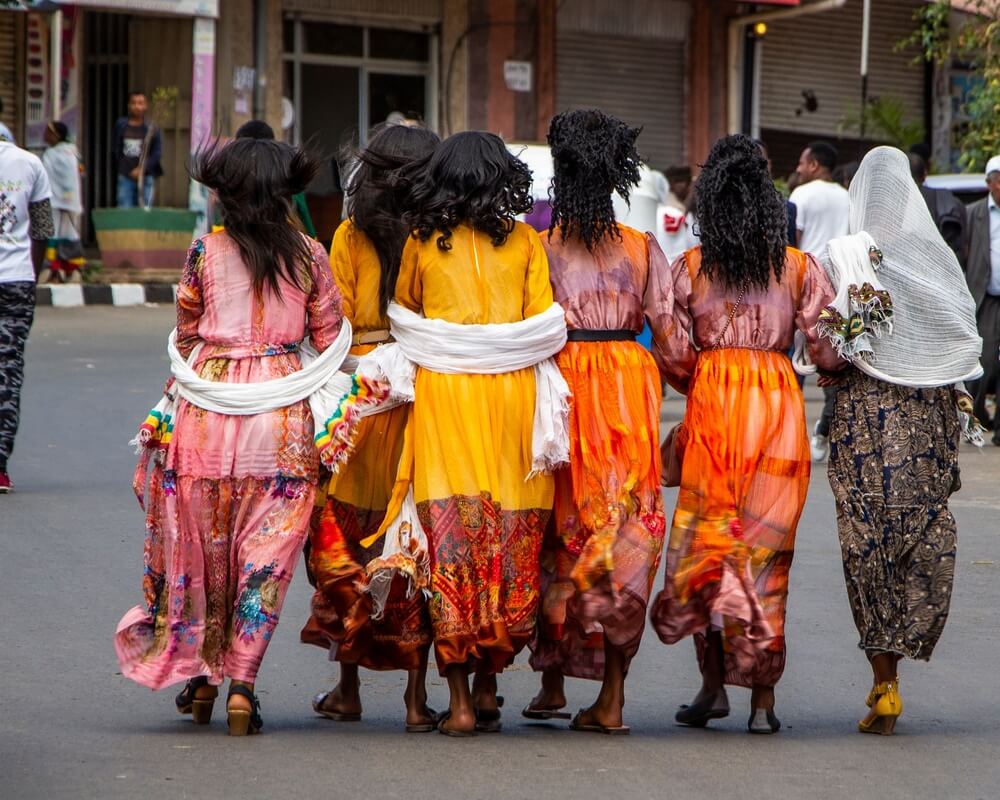
Ethiopia is also known for its vibrant music, dance, and art scenes. Traditional Ethiopian music is characterized by its use of unique instruments such as the masinko, krar, and washint, as well as complex rhythms and vocal harmonies. Ethiopian dance is also highly expressive and often incorporates intricate footwork and gestures.
Ethiopian society is also very closed towards foreigners, which can be wrongly interpreted as Ethiopians being rude or skeptical. The truth is that the lack of tourism and of a colonial past means that they are just not used to foreigners and they will observe you with intense curiosity.
However, once you pass the initial cultural barrier and manage to communicate with them, you will realize that they are generous and open to meeting new people in many cases. I can’t count the times I have been offered to share lunch with someone while walking down the street.
Useful Travel Phrases for Ethiopia
The vast amount of ethnic groups in the country also translates into a vast amount of languages spoken in Ethiopia. Estimates establish the number of languages is around 80. Among them, Amharic is the most widely spoken language and used by the government. Nonetheless, I wouldn’t say that more than half of the population of the country speaks Amharic.
Amharic is a Semitic language with a unique alphabet. This makes it quite difficult for a foreigner to learn and understand it in a short period of time. Other languages spoken in the country are Oromo, Somali, and Tigrinya.
The level of English of the population is low in Addis, while practically non-existent in the rest of the country.
Hence, here I have left some useful phrases to get you through this experience:
Hello : Salam neh (for man) / nesh (for women)
How are you? : Indet neh / nesh
Good morning : Indemin aderk /adesh
I don’t speak Amharic : Amarinya ailnagerim
Sorry : Yqerta
Enjoy : Tedeseti
No problem : Chigrilam
Where is the toilet? : sente bet yate naw?
Help : Meridati
Beautiful : Konjo
Good : Arifno
What to Eat in Ethiopia
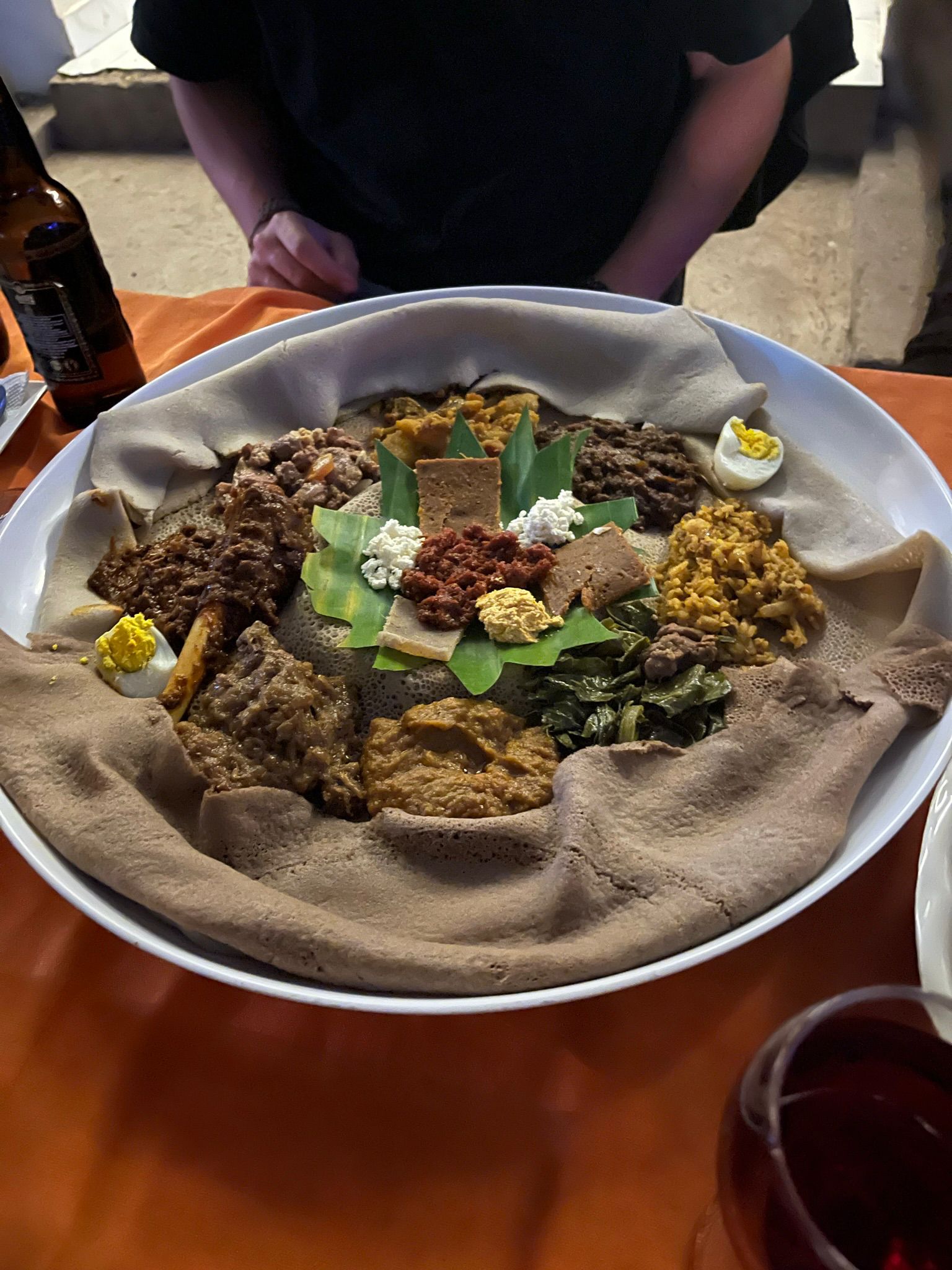
One of Ethiopia’s main cultural or economic sources is coffee or “bunna” in Amharic. The word coffee comes from the Kaffa region located in southeast Ethiopia.
Apart from being one of the best coffees in the world, Ethiopian coffee is also the center of many social meetings, in which the hosts cover the floor with grass, light up some smelling species, and offer snacks to eat.
While walking around you will find plenty of women preparing and selling coffee in the street. Don’t hesitate to have one and see if you are lucky and they perform at least a part of the ceremony.
Food in Ethiopia may vary from one region to another or from the fasting period to the non-fasting period, however, every Ethiopian dish is served on top of an injera . The injera is a very flat and soft kind of bread, which is made of an abundant cereal in Ethiopia called teff.
It doesn’t have a lot of flavor, although it may taste sour if you are not used to it. On top of the injera, all kinds of stews and foods are served. The injera is used both as a plate and as cutlery, as you have to cut it, only with your right hand, and grab the food on top with it.
Must-Try Dishes in Ethiopia
Tibs : one of the most common Ethiopian dishes. It is a stew made of beef or lamb cooked with sauce, spices and vegetables like onions and, sometimes, tomatoes.
Doro wat : is the dish eaten in celebrations and one of the favorites of Ethiopians. It is a chicken (doro) stew cooked with over 40 spices and boiled eggs. It can be very spicy.
Shiro : it is kind of a dense curry made out of chickpeas and different spices. It is also one of the most common dishes and very popular during the fasting season. It can also include chilly.
Kitfo : it is made of spiced dices of raw beef. One of the spices used to prepare it is the mitmita, a common Ethiopian spice, which is very hot.
Tere siga : it is basically raw beef cut in medium size pieces. It is served with a spicy sauce, in which you can dip, helped by the injera.
A Brief History of Ethiopia
Ethiopia’s earliest known history is traced back to the kingdom of D’mt, which is believed to have existed around 1000 BCE. The kingdom of Aksum, which emerged in the 1st century CE, is considered one of the greatest empires in ancient Africa.
Aksum was known for its advanced architecture, trade, and Christianity. The kingdom’s influence extended throughout the region, including parts of modern-day Yemen and Sudan.
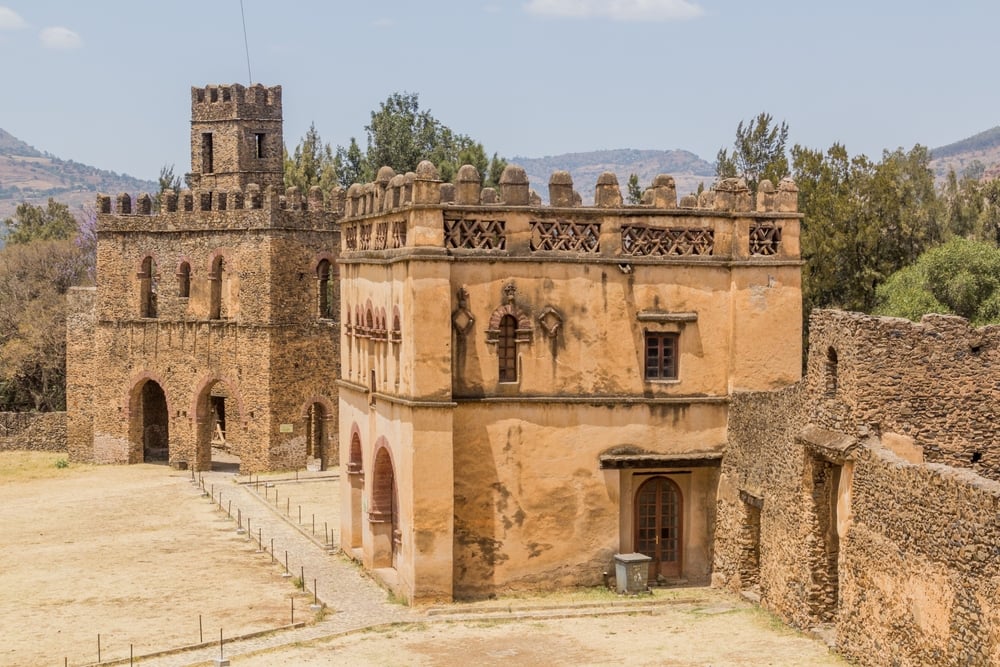
During the 16th century, Ethiopia went through a period of political instability, with several rival factions vying for power. The country was eventually reunited under Emperor Fasilides, who founded the city of Gondar as his capital.
In the 19th century, Ethiopia faced increasing pressure from European powers seeking to colonize the country. However, Emperor Menelik II successfully resisted these efforts, defeating Italian forces at the Battle of Adwa in 1896.
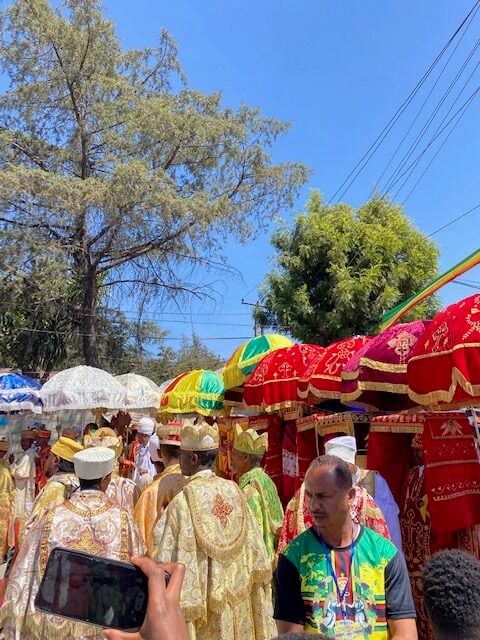
Ethiopia underwent significant changes during the 20th century. In 1930, Haile Selassie became Emperor of Ethiopia, ushering in a period of modernization and economic growth.
However, his reign was also marked by political repression and a lack of democracy. In 1974, a socialist military junta known as the Derg overthrew the monarchy and established a Marxist-Leninist government. This period was marked by political violence, famine, and economic decline.
In 1991, the Derg was overthrown by rebel forces led by the Ethiopian People’s Revolutionary Democratic Front (EPRDF). The EPRDF established a new constitution, and Ethiopia transitioned to a federal system of government.
Despite some progress in democracy and human rights, Ethiopia has also faced challenges in recent years, including ethnic tensions, political unrest, and conflicts in regions like Tigray.
Overall, Ethiopia has a rich and complex history, with a legacy that has influenced the region and the world.
Rastafari Movement
Haile Selassie, who was also known as Ras Tafari, was a figure of great importance to the Rastafari movement. Many Rastafarians believe that he is a messiah and that he represents the return of Jesus Christ, based on the interpretation of biblical texts.
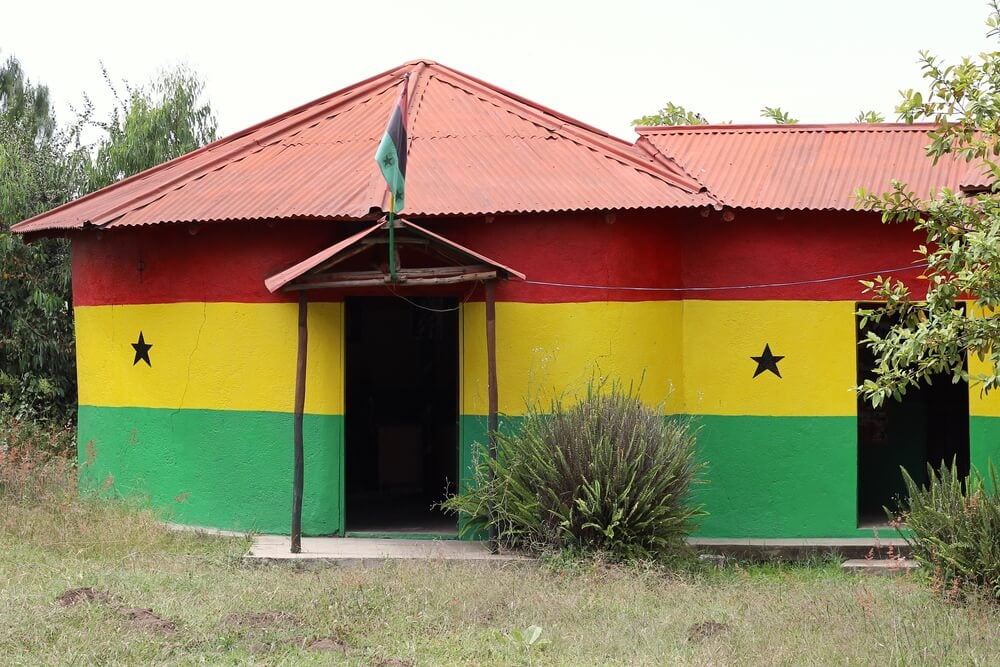
Haile Selassie himself was a devout Ethiopian Orthodox Christian and did not endorse the Rastafari movement, but he was respected by many members of the movement for his role in promoting pan-Africanism and his opposition to colonialism.
The establishment of Shashamane as a settlement for Rastafarians was a significant event in the history of the movement. It allowed Rastafarians from around the world to settle in Ethiopia and connect with their African heritage. Today, the town is home to a community of Rastafarians who have built their own cultural institutions and practices, including the Nyabinghi drumming ceremonies and the celebration of Ethiopian culture and history.

Things go wrong on the road ALL THE TIME. Be prepared for what life throws at you.
Buy an AMK Travel Medical Kit before you head out on your next adventure – don’t be daft!
FAQs About Backpacking in Ethiopia
A few commonly asked questions about traveling to Ethiopia…
Is Ethiopia safe to travel?
In terms of criminal activity, in Addis and the main tourist destinations there is a small amount of pickpocketing, so be alert. However, from that perspective, Ethiopia is safer to visit than many other African countries. Nonetheless, the political situation in the country can change drastically so it is very important to keep close attention to the political evolution. Also, at the moment, it is not advisable to travel to the Tigray region.
Where should I go backpacking in Ethiopia?
Even though the country is big enough to offer different routes, if constrained by time, I would advise to visit the Northern part of the country, as it is where you will most extensively immerse in Ethiopian culture and history.
What is considered rude in Ethiopia?
Men and women should dress conservatively and public displays of affection should be limited. Trying to learn a couple of words in Amharic will be highly appreciated by the people you talk with.
Is Ethiopia expensive?
As it was previously mentioned, if you stick to the local way of life, money can go a long way in Ethiopia. However, if you visit places through organized tours and have time constraints that don’t allow you to travel by public transportation, Ethiopia will end up being expensive.
What is the highlight of backpacking in Ethiopia?
For me, the highlight of backpacking in Ethiopia is the feeling of traveling through a completely different world, not only because of the economic differences, but because of its unique and diverse culture.
Final Advice Before Visiting Ethiopia
Even though you may feel in a completely different world, please keep in mind that you are a human being surrounded by human beings.
Try people nicely and you will receive kindness from their side. Please don’t treat them as servers just because they are willing to accept ridiculously low amounts of money to do things for you. Also, don’t be the kind of imbecile who thinks everything around them is just a part of the stage set to take his or her Instagram pictures.
If you want to take a picture of someone, ask for their permission and if it’s a child ask for the permission of an adult. Imagine what would happen if four Ethiopians went to a park in Europe and started to take pictures of four-year-old girls.
Also, while in Ethiopia, you will find lots of beggars, many of them children. I think that it is good to help those in need, but in the case of children, I would advise to avoid giving them cash. You can buy them food, books, or materials for school, but children are commonly used to bringing some cash home, even if they have to miss school to do so.
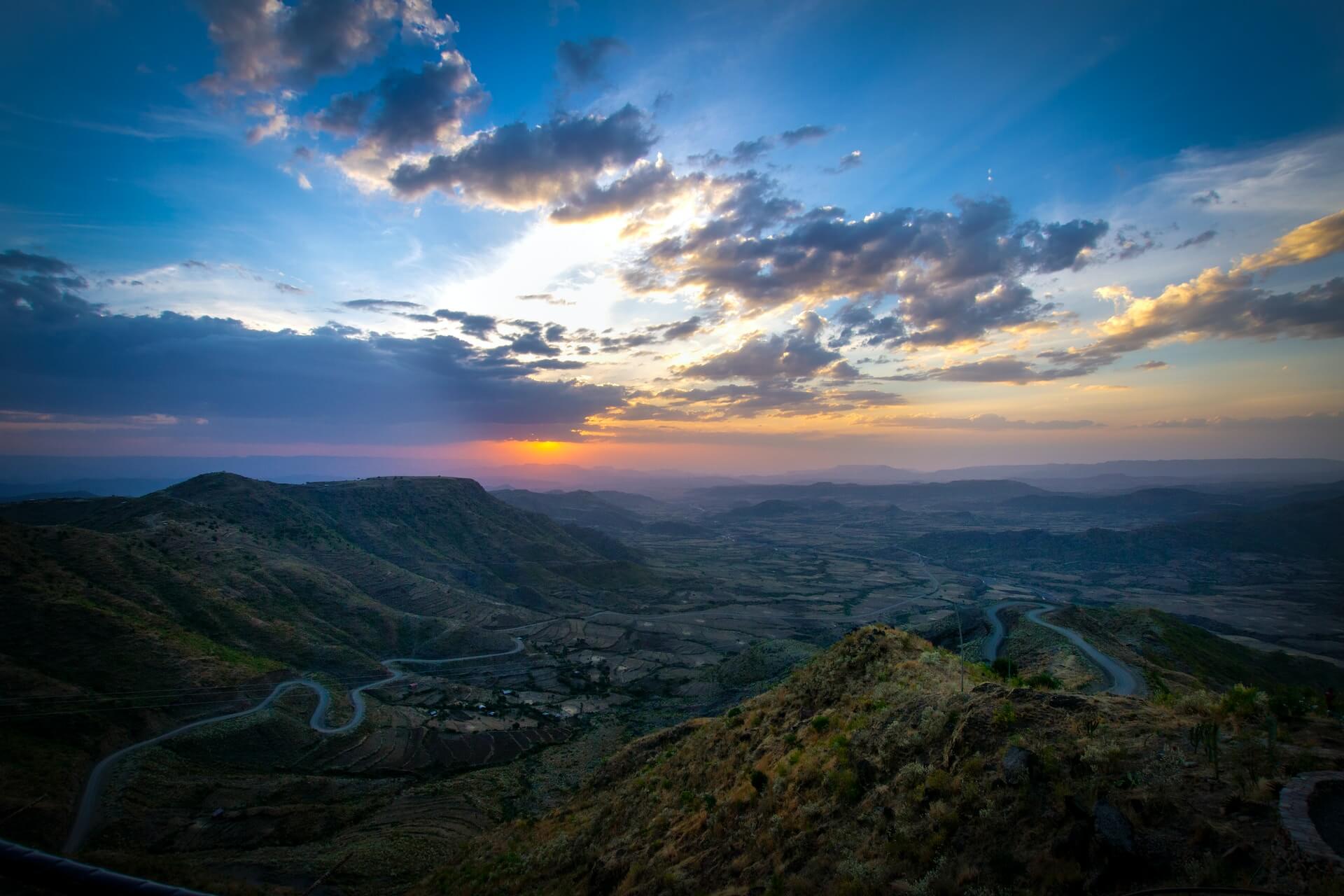
This guest post was contributed by Nico Prada , a traveler who is passionate about exploring new cultures and ways of life. For him, the main goal of any trip is to understand what drives the people who inhabit the place he is visiting. Easier to find having a couple beers in the local market than posting IG stories from a fancy rooftop.

And for transparency’s sake, please know that some of the links in our content are affiliate links . That means that if you book your accommodation, buy your gear, or sort your insurance through our link, we earn a small commission (at no extra cost to you). That said, we only link to the gear we trust and never recommend services we don’t believe are up to scratch. Again, thank you!

Guest Poster
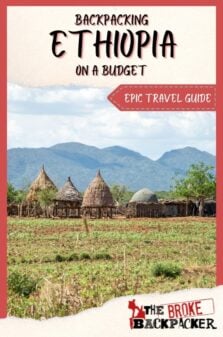
Share or save this post

Leave a Reply Cancel reply
Your email address will not be published. Required fields are marked *
Save my name, email, and website in this browser for the next time I comment.
Notify me of followup comments via e-mail.
Practically every tangible facet of Ethiopian culture is unique. Obscured by the media-refracted glare of the surrounding deserts, Ethiopia feels like the archetypal forgotten land. Philip Briggs , author of Ethiopia: the Bradt Guide
Ethiopia is the most misunderstood of African countries, and also one of the world’s most underrated travel destinations. Though not really suited to a conventional holiday, Ethiopia will reward adventurous travellers with all the riches of a land believed to be the cradle of humankind.
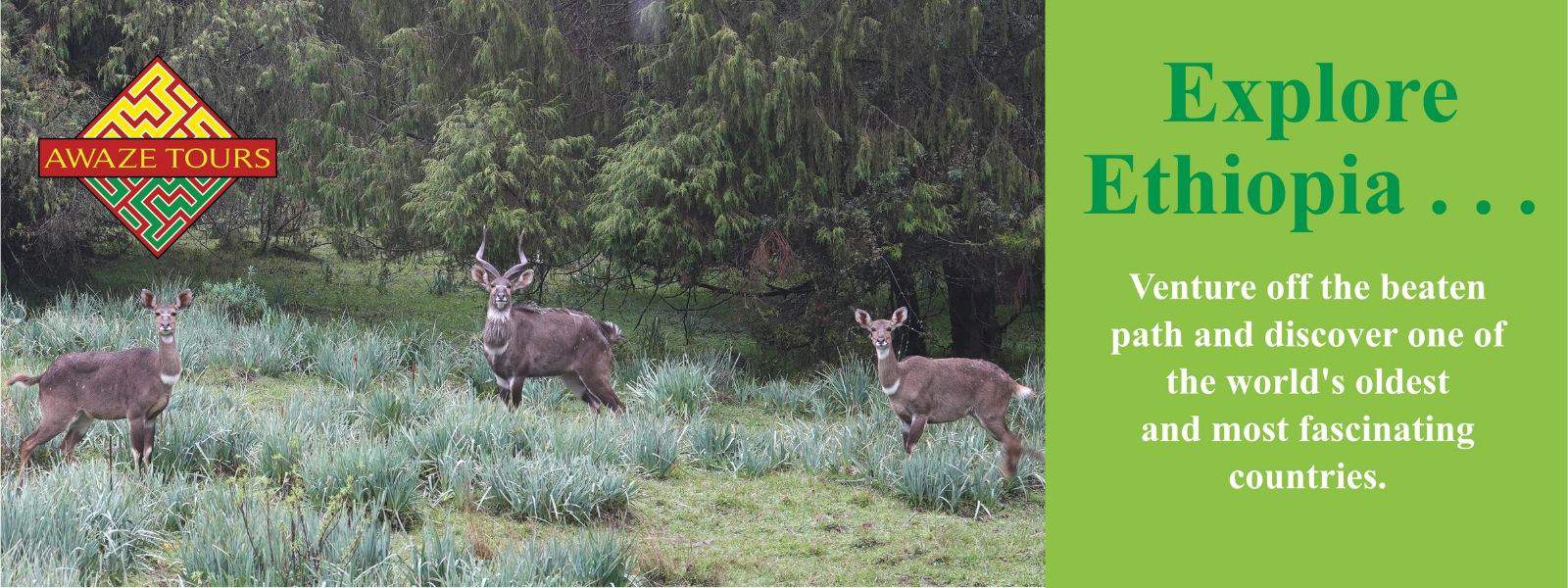
Ethiopia’s low-key tourist industry revolves around the richest historical heritage in sub-Saharan Africa. The town of Axum, its outskirts studded with giant stelae and ruined palaces, was once the centre of an empire that stretched from the Nile River across the Red Sea to Yemen between the 1st and 7th centuries ad. The medieval capital of Lalibela boasts a cluster of hand-carved rock churches regarded by many as the unofficial eighth wonder of the world. There is also Gonder, the site of five 17th-century castles built by King Fasil and his successors. And all around the country are little-visited centuries-old monasteries and other rock-hewn churches, many imbued with an atmosphere that seems positively Biblical.
Although historical sites are the focal point of tourism, they often threaten to be swamped by the breathtaking highland scenery, which embraces the kilometre-deep Blue Nile Gorge, the sculpted sandstone cliffs and valleys of Tigrai, the lush forests of the west and south, and the lake-studded volcanic landscape of the Rift Valley floor. Elsewhere, mountainous national parks such as Bale and Simien provide refuge to endemic creatures ranging from the Ethiopian wolf and oddball gelada monkey to several dozen bird species found nowhere else in the world. Equally unique to this most strange and rewarding country are the wonderfully fiery cuisine, the peculiar pentatonic music, and the shoulder-shuddering dances performed in local bars.
Food and drink in Ethiopia
To anyone who has travelled elsewhere in Africa, Ethiopian food comes as a welcome revelation. Instead of the bland gristle and starch that is the standard restaurant fare in most African small towns, Ethiopian food is deliciously spicy and you can eat well virtually anywhere in the country. Contrary to many people’s expectations, most of Ethiopia is fertile, food is easy to find and portions are generous and very cheap. At local eateries, you’ll often find that one plate of food will be adequate to feed two.
Ethiopian dishes
A wide variety of different dishes is available in Ethiopia. Most of them are unique to the country, so it is worth familiarising yourself with their names as soon as you arrive. The staple source of carbohydrates in Ethiopia is injera , a large, pancake-shaped substance made from tef , a nutty-tasting grain that is unique to Ethiopia and comes in three varieties: white, brown and red. The tef dough is fermented for up to three days before it is cooked, the result of which is a foam-rubber texture and a slightly sour taste reminiscent of sherbet. Injera is normally served with a bowl of wat stew. The ritual is to take a piece of injera in your hand and use it to scoop the accompaniment into your mouth. If you dine with Ethiopians, it is normal for everyone to eat off the same plate.
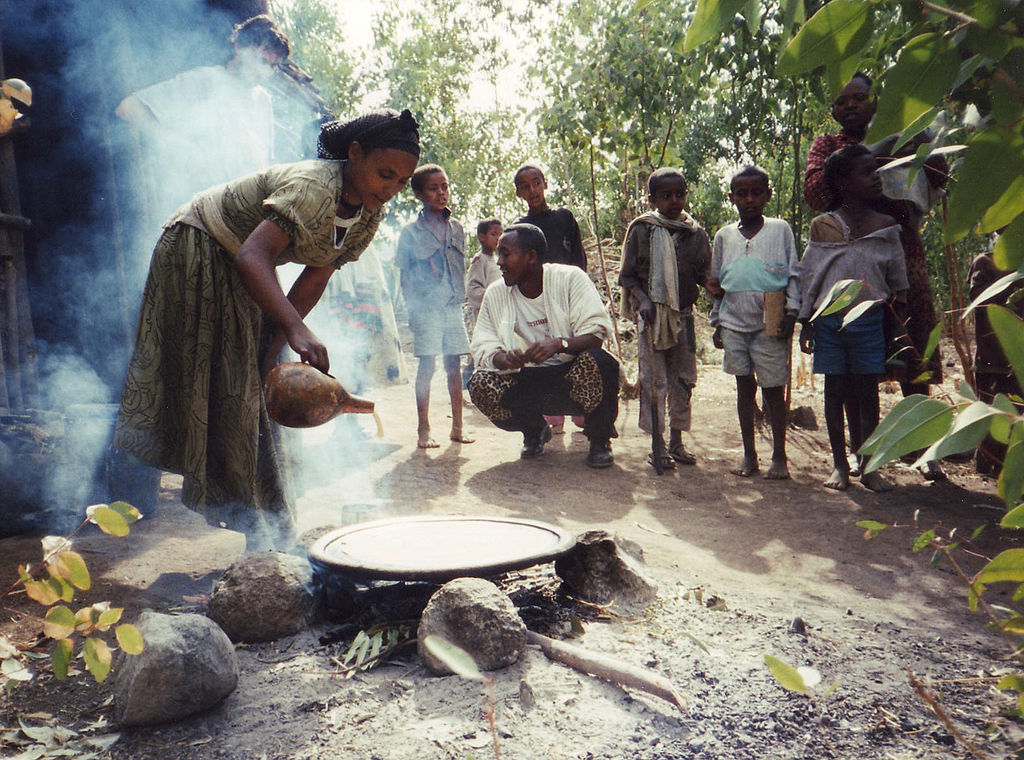
The most common non-vegetarian accompaniment to injera is a dish called tibs (or more properly siga tibs, literally ‘meat fried’), which as its name suggests consists of freshly flash-fried meat, spiced moderately and mixed in with onions and peppers. Tibs is often served with a spicy red powder called mitmita on the side, or with awaze, a sauce made from beriberi (powdered chilli) together with lime juice, salt, olive oil and a drop of whisky or wine. Particularly recommended is shekla tibs, where the fried meat is served in a clay pot that contains a charcoal burner.
The most common meat in the highlands is lamb ( bege ), while in drier areas you will most often be served with goat ( figel ). Beef ( bure ) is also eaten, mostly in large towns. In towns near lakes, fish ( asa ) predominates. You might also come across tripe wat, which is made with tripe but pronounced trippy. The official national dish of Ethiopia, doro wot is made with chicken, but is best avoided if you’re hungry, as it is traditional to serve only a lonely drumstick or wing in a bowl of sauce. Normally kai wat consists of meat boiled in the kai sauce, but you may also come across tibs kai wat, which means the meat was fried before the sauce was added. If the meat is minced prior to cooking, then the dish is known as minje tabish .
Given that the Kaffa province of Ethiopia is thought to be where coffee originated, and the coffee bean accounts for more than half of Ethiopia’s exports, it should be no surprise that Ethiopians are coffee mad. The local espresso-style coffee ( buna ), served with two spoons of sugar, is rich, sweet and thoroughly addictive. Coffee with milk is buna watat . In small towns, sweet tea ( shai ) is more widely available than coffee.
You’ll often be invited to join a traditional coffee ceremony, in which the grains are roasted over charcoal, ground while the water is boiled, then used to make three successive pots of coffee. It’s not advisable to accept if you’re in a rush or want to get any sleep (it is rude to leave before the third round has been drunk), but you should certainly experience it at least once in your trip. Despite the pomp you might associate with the word ‘ceremony’, it’s really just a social thing – instant coffee holds little appeal in a country where few people have jobs, or even television.
The usual soft drinks – Coca-Cola, Pepsi, Fanta – are widely available and very cheap. The generic name for soft drinks is leslasa . The Harar Brewery also produces a non-alcoholic malt beverage (apparently aimed at the Muslim population) called Harar Sofi, which tastes similar to cola and is said to be good for an upset stomach.
A little more surprisingly, carbonated mineral water is bottled locally and is widely available for around US$0.60 per 750ml bottle. It is best to ask for mineral water by brand name, which is Ambo in central, south and western Ethiopia, and Babile (pronounced ‘bubbily’ – not sure if this is coincidence!) in the east. Still water is also available. The major brand is called Highland, and you will often hear roadside children screaming this repeatedly in the hope that you will toss them an empty bottle (which you most certainly should not!). Another (and arguably better-tasting) top brand is Abyssinia.
Ethiopia’s prime soft drink is fruit juice, which is really puréed fruit. What is available depends somewhat on season and location, but the most common juices are banana, avocado, papaya, orange and guava. I highly recommend the avocado, which sounds odd but is delicious with a squeeze of fresh lime and is sometimes layered with grenadine syrup. If in doubt, ask for espris , which consists of layers of all available juices. The result is thick, creamy, healthy and absolutely fantastic. A glass of juice generally costs less than US$1.
The most popular local tipple is tej , a mead-like drink made from honey ( mar ) or sugar ( isukalama ). Mar tej is a considerable improvement on most African home brews, and very alcoholic, but personally I couldn’t get into it on a daily basis. Isukalama tej is entirely avoidable. Tej is not served in normal bars; you will have to go to a tej abet to drink it. A 750ml bottle of tej costs around US$1. Locally brewed beer, made from millet or maize, is called tella . This is similar to the local brew of east and southern Africa, and no less foul in Ethiopia than it is elsewhere in the region.
Health and safety in Ethiopia
Health .
Ethiopia, like most parts of Africa, is home to several tropical diseases unfamiliar to people living in more temperate and sanitary climates. However, with adequate preparation, and a sensible attitude to malaria prevention, the chances of serious mishap are small. To put this in perspective, your greatest concern after malaria should not be the combined exotica of venomous snakes, stampeding wildlife, gun-happy soldiers or the Ebola virus, but something altogether more mundane: a road accident.
Within Ethiopia, adequate (but well short of world-class) clinics and hospitals can be found in Addis Ababa and a few other major centres, while functional doctor’s rooms (known as ‘higher clinics’), laboratories and pharmacies are available countrywide. Wherever you go, doctors and pharmacists will generally speak passable English, and consultation and laboratory fees (in particular malaria tests) are inexpensive by international standards – so if in doubt, seek medical help.
Ethiopia is generally a very safe country. Casual theft and pickpocketing are fairly commonplace in parts of the country, most notably Addis Ababa, but this sort of thing is almost never accompanied by violence. In Addis, pickpockets might operate anywhere, but favoured areas are the Mercato, and in the vicinity of government hotels in the city centre. Violent crime isn’t a cause for serious concern, but as in any large city one should not wander around at night with a large amount of money or important documents.
In other parts of Ethiopia, the risk of encountering pickpockets is mainly confined to bus stations and markets, and even then only in larger towns. At bus stations, this is most likely to be a loner operating in the surge of people getting onto a bus. In the streets, a favoured trick is for one person to distract you by bumping into you or grabbing your arm, while a second person slips his fingers into your pocket from the other side. It’s advisable to leave valuables and any money you don’t need in a hotel room, to carry the money you do need in a relatively inaccessible place, and to always turn quickly in the other direction if somebody does bump into you or grab you.
Thieves often pick up on uncertainty and home in on what they perceive to be an easy victim. In Addis Ababa, where there are plenty of experienced thieves and con artists, always walk quickly and decisively. When you arrive in a new town by bus, stroll out of the bus station quickly and confidently as if you know exactly where you’re going (even if you don’t). Avoid letting the kids who often hang around bus stations latch on to you. Once through the crowds, you can sit down somewhere and check your map, or ask for directions.
Female travellers
We get very mixed feedback from female visitors to Ethiopia. Broadly speaking, most actual travellers, even those on a tight budget, regard it to be a safe and hassle-free country for women by international standards. All told, the risk of rape or seriously threatening harassment is probably lower than in many Westernised countries. Teenage boys yelling obscenities at women, though unpleasant, is ultimately a less innocuous variation on the sort of verbal crap that all single travellers have to put up with from time to time in Ethiopia. Even so, it is not an everyday occurrence (unless perhaps you settle in Shashemene), and it is most unlikely to occur in the company of a respected guide or another local person. Women travellers are less likely to hit problems if they refrain from drinking alone, avoid staying in local hotels at the brothel-cum-barroom end of the price scale, and turn down any invitation that could be construed as a potential date.
Dress may also play a role in how you are perceived. In rural areas particularly, both Muslim and Christian, it is good sense to look to what local women wear and follow their lead. To quote a former volunteer: ‘If I wear sleeveless clothes then I tend to get a constant stream of comments and stares, even in Addis Ababa, so I wouldn’t dress in this manner in smaller towns where faranjis are few and far between.’ Another reader adds: ‘We came prepared with skirts and headscarves, but there was no need to wear them. We wore pants/trousers and that was acceptable. I saw some women travellers wearing shorts, but I’m not sure that I’d feel comfortable with that unless they extended below the knee – even then I’d think twice.’
A couple of readers have highlighted the problems specifically facing black female travellers in Ethiopia, where women retain a somewhat subservient role by Western standards. European women are not expected to fit the mould, but nobody seems quite certain on which side of the chasm to place black Western women.
LGBTQ+ travellers
Homosexual activity, both male and female, is illegal in Ethiopia, and punishable by up to 15 years’ imprisonment. Homosexuality is also regarded as sinful by the Ethiopian Orthodox Church and by Islamic law, for which reason the vast majority of Ethiopians (as many as 97% according to a 2007 Pew Global Attitudes Project) consider it to be unacceptable behaviour. In 2008, a group of prominent religious figures, including the heads of the Orthodox, Protestant and Catholic churches, urged the government to enact a constitutional ban on homosexual activity, likening it to bestiality and blaming it for a perceived rise in sexual attacks on children and young men. None of which necessarily amounts to an obstacle for gay or lesbian travellers wishing to visit Ethiopia, provided they are willing to be discreet about their sexuality.
Travel and visas in Ethiopia
A valid passport is required to enter Ethiopia, and entry may be refused is it is set to expire within six months of your intended departure date. All visitors to Ethiopia require a visa. The most straightforward way to obtain this is to buy an online e-visa. Single-entry 30-/90-day e-visas can be applied for at evisa.gov.et , which accepts Visa, MasterCard and American Express. The website currently only processes applications for single-entry tourist and conference visas for people who intend to enter Ethiopia at Bole International Airport. .
Getting there and away
All international flights arrive and depart from Bole International Airport in Addis Ababa. Many airlines fly to Ethiopia. Ethiopian Airlines is Africa’s oldest airline and has an excellent safety record, but may not be the cheapest option. Other major airlines that fly to Addis Ababa include Air China , Egyptair , Emirates , Fly Dubai , Gulf Air , Kenya Airways , Lufthansa , Saudi Airlines , Sudan Airways and Turkish Airlines .
An established London operator, well worth contacting, is Africa Travel Centre .
The main overland route south from Europe runs through Egypt and Sudan, entering Ethiopia at Metema west of Gondar. This route was closed for many years due to political instability in Sudan, and it remains potentially volatile, but with Sudanese visa in hand, travellers have been getting through with relative ease since 2003. If you opt to head this way, do keep your ears to the ground, and be prepared to fly over troubled areas, for instance between Cairo and Khartoum or Khartoum and Addis Ababa. Most people cross into Ethiopia at the Metema Yohannes crossing west of Gondar. A regular minibus runs between Gondar and the border, taking about 1 hour. The crossing is straightforward, if rather time consuming, provided you have the appropriate visa, which must be bought in advance crossing in either direction. In addition, Selam Bus now runs a weekly coach service between Addis Ababa and Khartoum.
Getting around
Ethiopian Airlines runs a good network of domestic flights connecting Addis Ababa to most major tourist destinations. The best connections are in the north, where at least one flight daily goes in either direction between any combination of Addis Ababa, Bahir Dar, Gondar, Lalibela and Axum (flights to Mekele are slightly less numerous). There are also flights to other parts of the country, such as Arba Minch, Jinka, Kombolcha, Gambella, Jimma, Assosa, Jijiga and Dire Dawa. Internal flights are generally efficient and normally leave to schedule, but you need to check in 2 hours before departure, and last-minute delays still occur from time to time. For this reason, you should ideally allow one non-travel day between flights.
By bus, truck and minibus
Ethiopian road transport compares well with that in many other parts of Africa. Buses are rarely crowded, the driving is as sober as it gets in Africa and, because buses rarely indulge in the African custom of stopping every 100m to pick up another passenger, you can generally expect to cover 30km in an hour on dirt and 50km on surfaced roads. Also unusual for Africa are organised breakfast and/or lunch stops on longer runs. In fact, the only real problem with bus transport in Ethiopia is the size of the country. The northern historical circuit, for instance, requires more than 2,500km of road travel – and at an average progress rate of 40km/h this means that a daunting total of 60–70 hours, or the bulk of about seven waking days, must be spent on buses.
The best services, closer in style to a Greyhound-type coach than a typical African bus, but still very reasonably priced, are Ethio/Abay , Selam , Limalimo, Falcon and Golden . Between them, these companies offer daily fixed departures in either direction between Addis Ababa and Bahir Dar, Gondar, Mekele, Axum, Dessie, Hawassa, Jimma, Nekemte and Assosa. Services to Dire Dawa, Harar and Jijiga should hopefully also resume soon.
By taxi, gari and bajaj
Taxis can be found in many larger towns. Except in Addis and towns with a high tourist turnover (for instance Gondar), they are very cheap but foreigners are frequently asked higher prices and you should expect to bargain. Taxis in Addis are expensive (though still cheap by international standards) and often drivers will refuse to drop their prices for foreigners. In towns with a cool climate, the horse-drawn cart or gari replaces taxis. These are even cheaper than taxis and very useful for reaching places a few kilometres out of town. Growing in number, however, outside of the capital, bajajis – small three-wheeled tuk-tuks imported from India – have replaced taxis in many of the country’s flatter regional towns such as Bahir Dar, Gondar, Harar and Hawassa as the main means of local transportation.
When to visit Ethiopia
You can visit Ethiopia at any time of year. People are sometimes advised against travelling during the rainy season, which peaks over June to August, but there are advantages to travelling at this time, notably that you’ll encounter fewer tourists at popular sites such as Lalibela, and that the scenery is so much more impressive when the countryside is green and well watered. A lovely time of year is September through to early October, when the rains subside but the countryside is still a riot of green punctuated by yellow meskel wild flowers. Mid-October to January, when the rains are over but the countryside is still quite green, is the peak tourist season.
Many travellers try to schedule their trip to coincide with important festivals such as Ethiopian New Year, Ethiopian Christmas, Timkat or Meskel. The European winter is also the best time for birds, as resident species are supplemented by large numbers of Palaearctic migrants.
Far from being the uniform thirstland of Western myth, Ethiopia is a land of dramatic natural contrasts and variety. Altitudes span the second-lowest point on the African continent as well as its fifth-highest mountain, while climatic conditions range from the drenched slopes of the fertile southwest to the scorching arid wastes of the eastern borderlands. Vegetation is diverse. The most extensive indigenous rainforest anywhere in the eastern half of Africa is concentrated in the well-watered highlands of the south and west. The central highlands, though more openly vegetated, are equally fertile, supporting a mosaic of grassland and cultivation throughout the year, and blanketed in wild flowers towards the end of the rains.
What to see and do in Ethiopia
Addis ababa.
The world’s fourth-highest capital city, Addis Ababa – which translates, somewhat inaptly, as ‘New Flower’ – sprawls for 220km 2 across the southern slopes of central Ethiopia’s Entoto Hills, spanning altitudes of 2,350m to more than 2,600m. Climatically, it’s a thoroughly encouraging welcome to the country, with comfortable temperatures and cheerful sunny skies alleviated by regular downpours swiftly dispelling any lingering preconceptions about Ethiopia being nothing but parched desert. In certain other respects, Addis, as locals tend to refer to it, can be rather overwhelming on first exposure, with beggars, taxi drivers and hawkers clamouring for the attention of anyone who looks like a tourist, and practised pickpockets doing their utmost to divert it. If that’s the case, don’t allow first impressions to put you off.
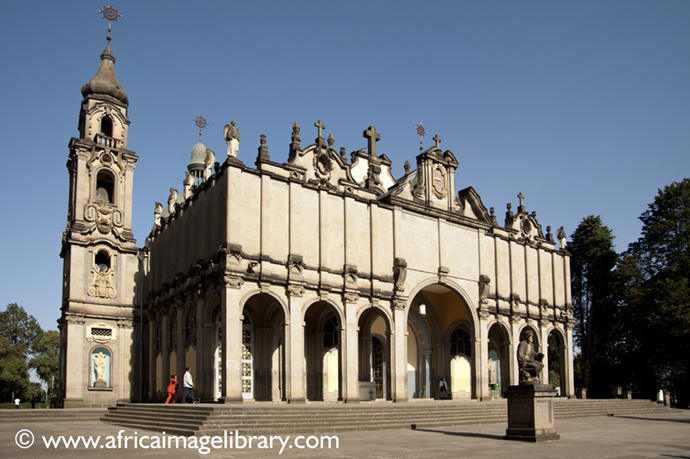
Spend a little time in the Ethiopian capital, and you’ll soon realise that its less savoury elements carry a lot more bark than bite. Easy to explore on foot, and tolerably safe even at night, districts such as the bustling Piazza, the modern and gleaming Bole Road, and the more down-at-heel Merkato all boast a compelling urban buzz. Addis Ababa also boasts a fantastic dining-out scene, some great nightlife and live music venues, and an engaging spread of museums, galleries and other worthwhile historic landmarks. Furthermore, Addis Ababa possesses a genuine sense of place lacking in those many other African capitals that were designed to be misplaced pockets of Western urbanity in otherwise underdeveloped nations. Indeed, perhaps the highest praise one can direct at chaotic, contradictory and compelling Addis Ababa is this: it does feel exactly as the Ethiopian capital should feel – emphatically and unmistakably a modern 21st-century city, but also singularly and unequivocally Ethiopian.
The oldest continuously inhabited town south of the Sahara, Axum (also spelt Aksum) sits at an elevation of 2,130m on the central Tigrayan Plateau, 1,000km north of Addis Ababa and 30km south of the Eritrean border. Historically and archaeologically, it is the most important city in Ethiopia; it also hosts the country’s first church, and forms the spiritual home of its unique brand of Christianity.
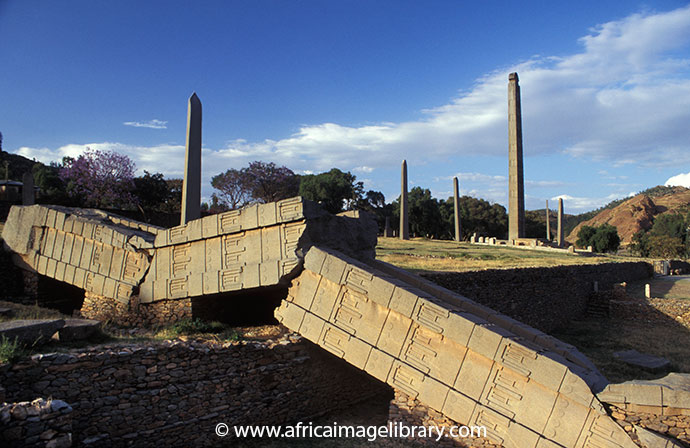
The most iconic monument at Axum is the field of 120-odd stelae, ranging from small, roughly hewn stones to finely engraved obelisks the height of a ten-storey building, concentrated within an area of 1,000m 2 opposite the Cathedral of Maryam Tsion. The site incorporates what are probably the three tallest stelae ever erected in ancient times, neatly engraved blocks of solid granite that stand (or, in one case, stood) between 23m and 33m high. The stelae were excavated at the quarry at Gobo Dura, more than 4km to the southwest, and were most probably dragged to their present location by domesticated elephants. There’s no entirely satisfactory explanation for how the Axumite engineers erected these massive blocks of stone – tradition has it that the supernatural powers of the Ark of the Covenant were put into play, but a more rational explanation would involve pulleys and elephants.
Bale Mountains National Park
The most extensive and tallest range in southern Ethiopia, the Bale Mountains rise eastward from the Rift Valley and northwest of the arid Somali Region to an altitude of 4,377m at Tullo Deemtu, Ethiopia’s second-highest peak. Although heavily settled in parts, the mountains and their immediate environs incorporate around 6,000km 2 of contiguous wilderness, much of which is covered in indigenous montane and medium-altitude forest. The regional centrepiece is the 2,200km 2 Bale Mountains National Park (BMNP), which protects the range’s upper slopes, including the 250km 2 Sanetti Plateau, which stands above 4,000m and supports the world’s largest tract of Afroalpine moorland.
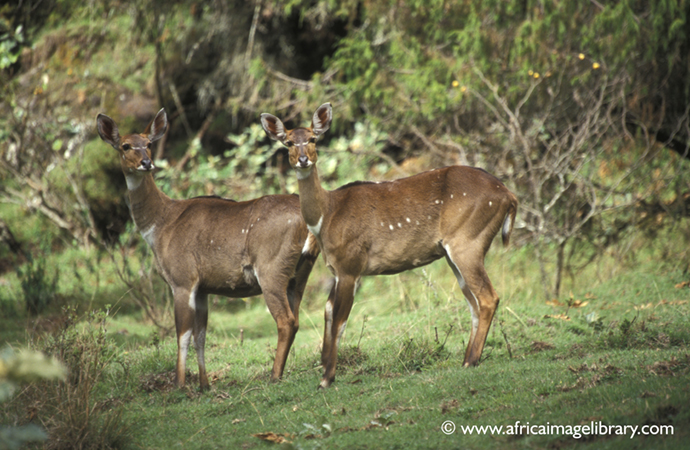
Offering some superb hiking and trekking possibilities, Bale Mountains National Park is also surprisingly easy to explore in a vehicle, with the Sanetti Plateau being traversed by the highest all-weather road in Africa (built by the Derg to provide an emergency access route to the south). The main attractions of the park are its wild alpine scenery and exceptionally diverse fauna, which includes the world’s largest population of the endangered Ethiopian wolf and mountain nyala, and the unique Bale monkey. BMNP also offers some of the finest birdwatching in Ethiopia.
Danakil Depression
Straddling the Eritrean border to the east of the Tigrayan highlands, the Danakil, or Dallol, is an area of true desert that extends across the most northerly and volcanically active portion of the Afar Depression. It ranks among the lowest-lying places anywhere in the planet, dropping to 116m below sea level, while temperatures on the shadeless plains frequently soar above 50°C, and are exacerbated by a fierce gale known as the Gara (Fire Wind). This climatic inhospitality is mirrored by the reputation of the region’s nomadic Afar inhabitants, who traditionally eked out an income as salt miners and traders, transporting their wares by camelback to the Tigrayan highlands. As recently as the 1930s, the Afar of the Danakil were known to greet male strangers by lopping off their testicles. Today, while scrotal intactness is no longer a cause for concern, the desert-hardened Afar are unmatched when it comes to making life difficult for travellers and guides who don’t bow to their frequent and inventive demands for fees and tips. This, in short, is a challenging travel destination.
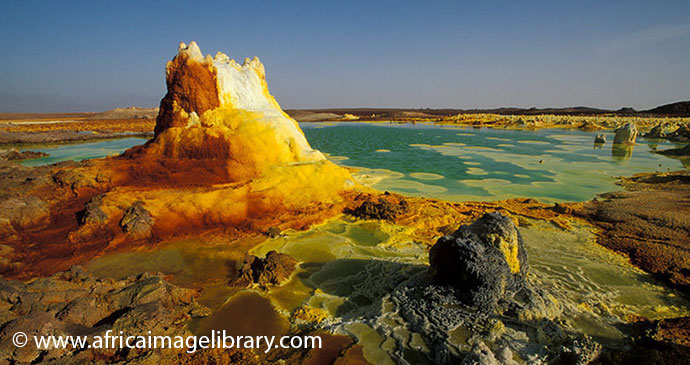
For all that, the Danakil is an area of singular geological fascination: a strange and at times beguilingly beautiful desert landscape studded with austere volcanic calderas, explosive cauldrons of bubbling red lava, malodorous sulphur-caked hot springs, recently solidified black lava flows, and vast, blinding salt flats that stretch for up to a kilometre below the surface. Until ten years ago, the Danakil was also firmly off the beaten track, attracting a couple of hundred visitors annually, but it has started to take off in recent years, not least due to the publicity it was afforded by the 2009 BBC documentary The Hottest Place on Earth , and up to 100 travellers might now overnight on Erta Ale on any given night in the high season. This growing popularity, coupled by a vast improvement in roads servicing the region, has made the Danakil far more accessible than it was a few years back. At the same time, the net worth of the ever-mutating plethora of fees charged by the local Afar has increased exponentially, making it near impossible to visit without an experienced Ethiopian guide who knows the area well and has a good relationship with the local authorities, pathfinders and militia.
The so-called Camelot of Africa, Gondar is perhaps the most immediately impressive town along the historical circuit, studded as it is with fairy-tale castles, venerable churches and other substantial European-influenced buildings dating from its 17th- and 18th-century heyday. Imposing as they might be, however, Gondar’s handsome antiquities are arguably less intriguing and enduringly memorable than their more genuinely ancient and mysterious counterparts at Axum and Lalibela, for which reason we would rank it as the least-essential stop of the three for historically minded visitors with insufficient time to visit them all.
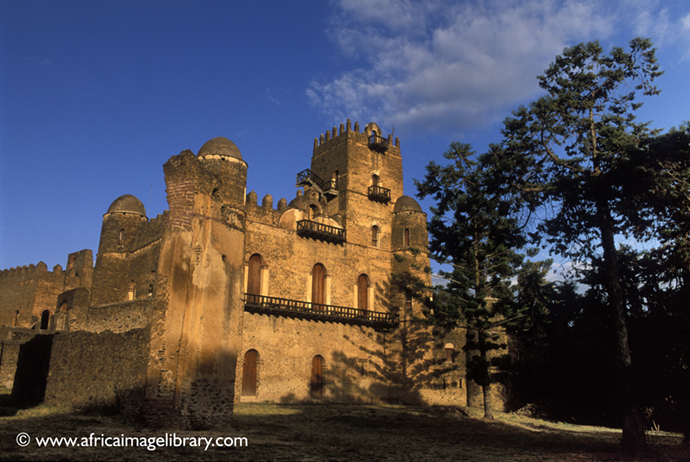
That said, the well-preserved castles and palaces that grace Gondar’s stone-walled Fasil Ghebbi, a UNESCO World Heritage Site, seldom disappoint, while the lavishly painted church of Debre Berhan Selassie and brooding 18th-century palatial complex at Kuskuam both rank highly on Ethiopia’s list of must-sees. Historical sightseeing aside, Gondar is a very pleasant city to explore, with a friendly, laid-back, almost countrified mood by comparison with Addis Ababa or even Bahir Dar. It boasts some excellent traditional restaurants and live music venues, and it’s also a good place to arrange overnight hikes in the nearby Simien Mountains.
The spiritual heart of Ethiopia’s Islamic community, the walled citadel of Harar is considered by some to be the fourth-holiest Islamic city after Mecca, Medina and Jerusalem. It is also an exceptionally pleasant city to visit: lively, welcoming and relaxed, yet possessing a cultural integrity and aura of lived-in antiquity that make it the most traditionalist of Ethiopia’s larger towns. Boasting a moderate highland climate, Harar lies at the centre of a fertile agricultural area, one renowned for its high-quality coffee and khat. But its focal point is Harar Jugol, the 48ha walled city, a UNESCO World Heritage Site whose innumerable winding alleys lead past 83 private and public mosques and the 102 qubi (shrines or tombs of important holy men) alluded to in the nickname Gey Ada (City of Saints).
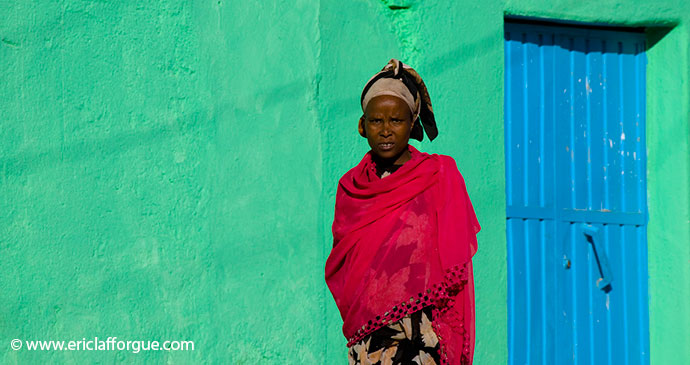
Considering the prominent role played by Harar in past Muslim–Christian–Oromo conflicts, the modern town possesses a refreshing mood of religious and cultural tolerance. Indeed, while Harar Jugol is deeply Islamic in character, the newer part of town, which runs west along the main road to Addis Ababa, is predominantly Orthodox Christian, and the frizzy-headed traditionalist Oromo are also much in evidence, particularly in the market areas. What’s more, for a city of such devout pedigree, Harar has an undercurrent that is more than a little hedonistic. The compulsive chewing of khat dominates every aspect of public life and, to paraphrase the sentiments of one Muslim resident, you really do need something liquid to chill you out after a good chew. Any preconceptions about fundamentalist Harar can be washed down at the bars which come close to matching public mosques one for one within the old city walls. All in all, Harar is the sort of easy-going, cosmopolitan town where you could settle in for a week and do nothing more exerting than just soak up the atmosphere.
Arguably the most impressive historical site anywhere in sub-Saharan Africa, the rock-hewn churches of Lalibela all lie within a roughly triangular 15ha area at the southern end of the town centre. There are two main clusters of churches, separated by a non-perennial rock-cut stream known rather grandiosely as the Jordan River (one of many place names that support the notion King Lalibela conceived of the church as a kind of ‘New Jerusalem’).
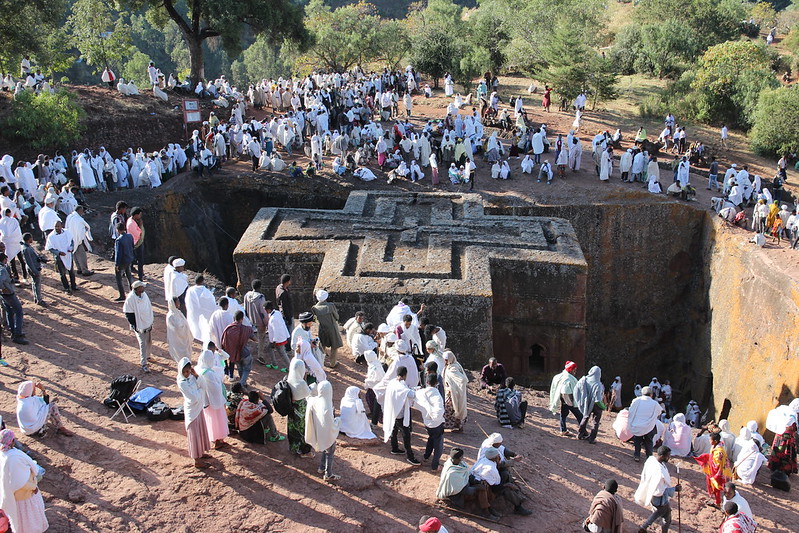
Lalibela is usually at its most compelling and spiritually rewarding in the early morning (ideally around 05.30), when masses are held at many of the churches and most tourists are still in bed or having breakfast. Most reliable for a large turnout at morning mass is Saturday, or any feast days associated with a particular saint, and any guide or hotel receptionist should be able to tell you which of the churches is likely to be your best bet on any given day. Once morning mass is over, tourists increasingly start to outnumber bona fide worshippers, and the churches start to feel like they are maintained less as active shrines of worship than as tourist attractions.
Simien Mountains National Park
Inscribed as a UNESCO World Heritage Site in 1979, the awesome Simien Massif, situated about 100km north of Gondar, comprises a high plateau of ancient volcanic rock incised with tall, precipitous cliffs and chasmic river valleys. The range includes at least a dozen peaks that top the 4,000m mark, among them the highest mountain in Ethiopia and fifth-highest in Africa, the 4,533m Ras Dejen (also known as Ras Dashen, and often given incorrectly as 4,620m high). In 1966, the most westerly part of the range was set aside as the 136km 2 Simien Mountains National Park (SMNP), which has since been expanded eastward to incorporate Ras Dejen and several other comparably high peaks, to cover a total area of 412km 2 .
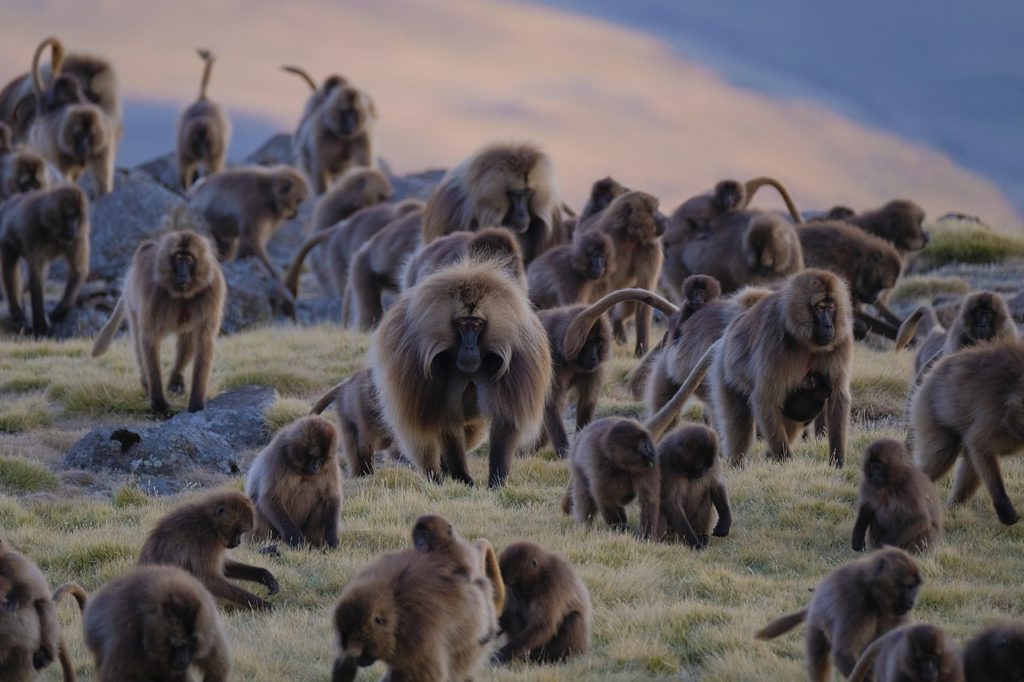
The park’s main attraction is the scenery, which is utterly breathtaking, but it is also an important sanctuary for endemic wildlife, being the only remaining stronghold for the endemic Walia ibex and one of the few protected habitats of the Ethiopian wolf and gelada monkey. SMNP is Ethiopia’s most popular trekking and hiking destination, best explored over a three- to ten-day hike or mule trek possibly incorporating an ascent of Ras Dejen and other peaks. However, the recent construction of a good all-weather road running deep into SMNP, as well as the opening of Simien Lodge close to the main entrance gate, has opened it up to overnight visits, and to less strenuous day walks and drives.
Nothing in highland Ethiopia prepares one for South Omo. Nor, for that matter, does much else in modern Africa. It’s apocryphal, perhaps, but easy enough to believe when confronted by the region’s extraordinary cultural integrity, that there is more than a smattering of truth in the assertion that as recently as 50 years ago the people of South Omo were scarcely aware that such an entity as Ethiopia existed.
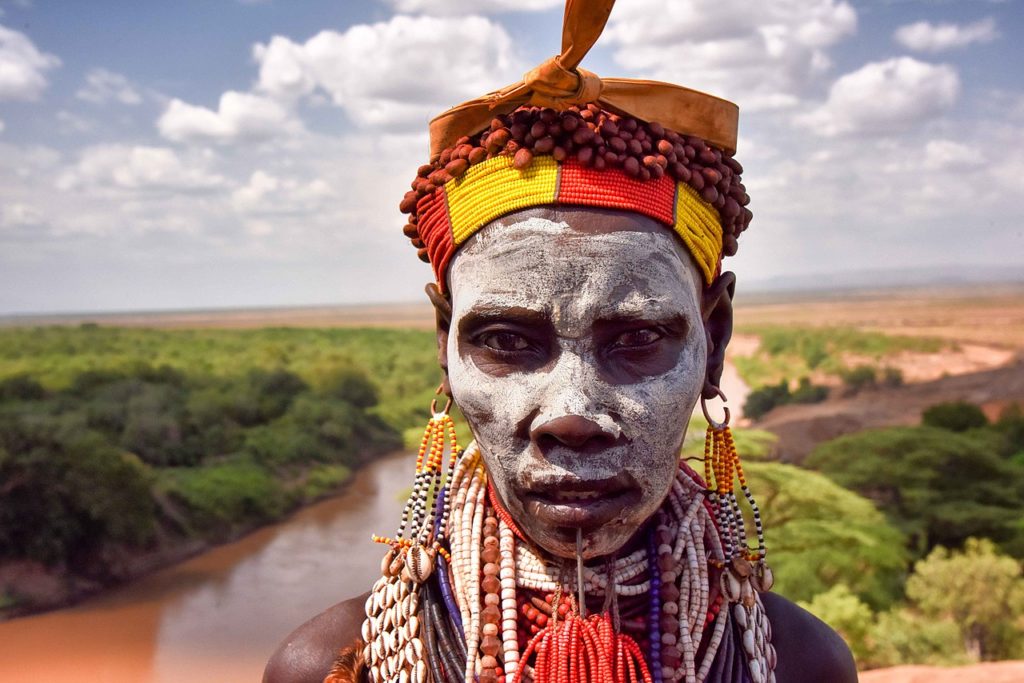
South Omo is literally fantastic. Descending from the green, urbane highlands into the low-lying plains feels like a journey not merely through space, but also through time, as one enters the vast and thinly populated badlands that divide the mountainous centre of Ethiopia from its counterpart in Kenya. Like much of neighbouring northern Kenya, South Omo is as close as one can come to an Africa untouched by outside influences. The culturally diverse, immaculately colourful and defiantly traditionalist agro-pastoralists who inhabit the region seem to occupy a physical and psychic landscape little different from that of their nomadic ancestors. This is Africa as it once was, or as some might still imagine it to be, and its mere existence is at once wonderful and scarcely credible.
Related books
For more information, see our guide to Ethiopia :
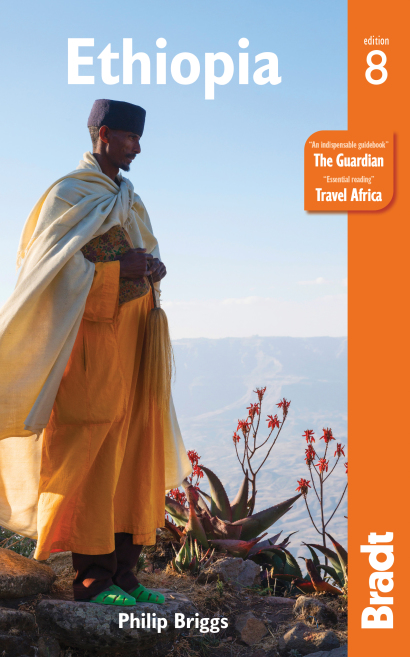
Related articles
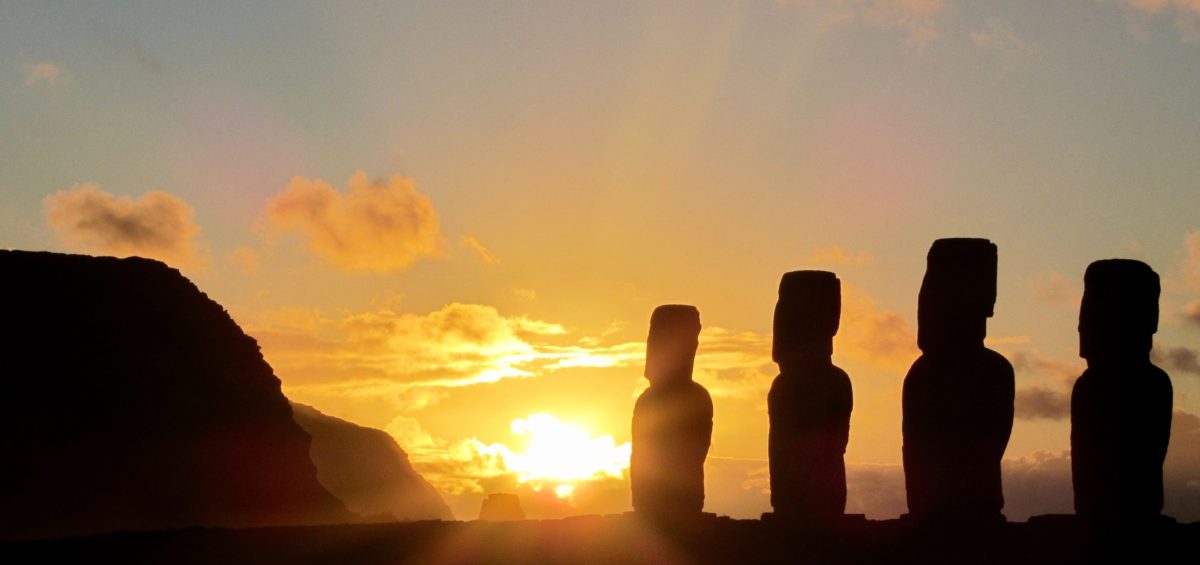
9 lost cities of the world
From crumbling Persian empires to colossal Roman cities, here are some of our favourite ruined civilisations from around the world.
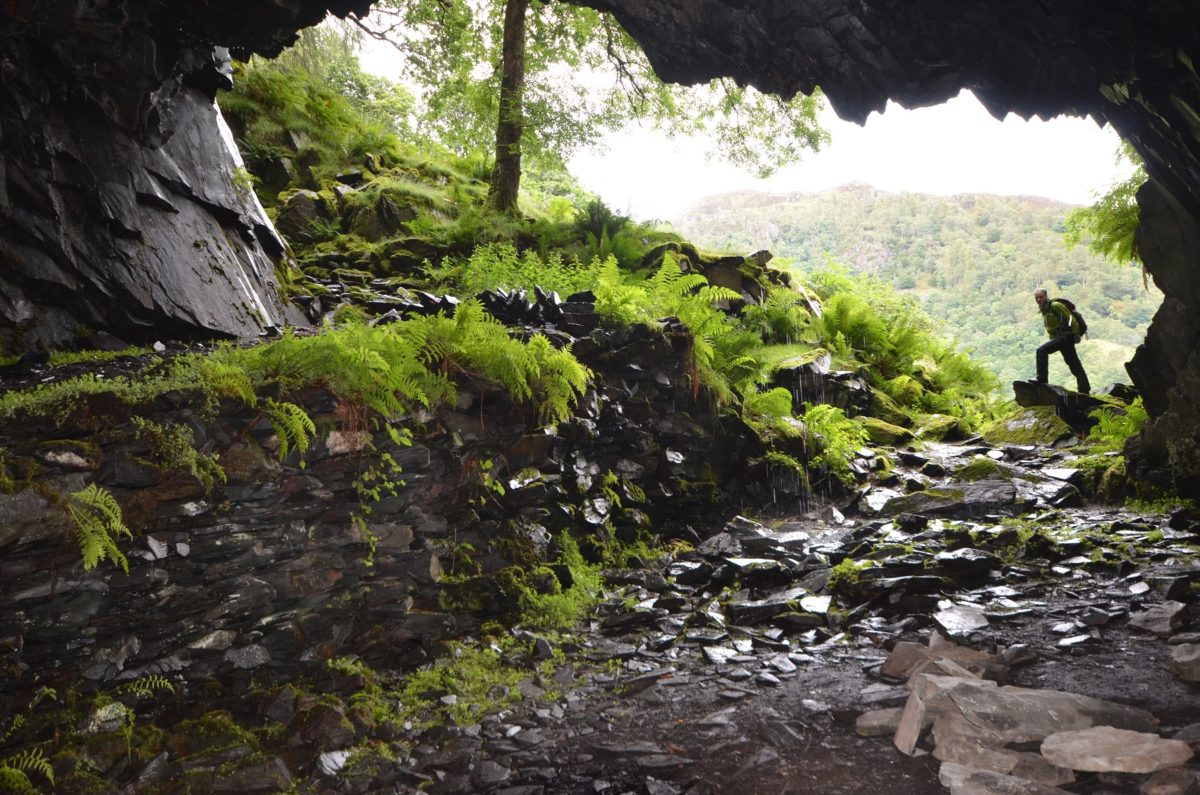
Going underground: the world’s best caves
This isn’t one for claustrophobes.
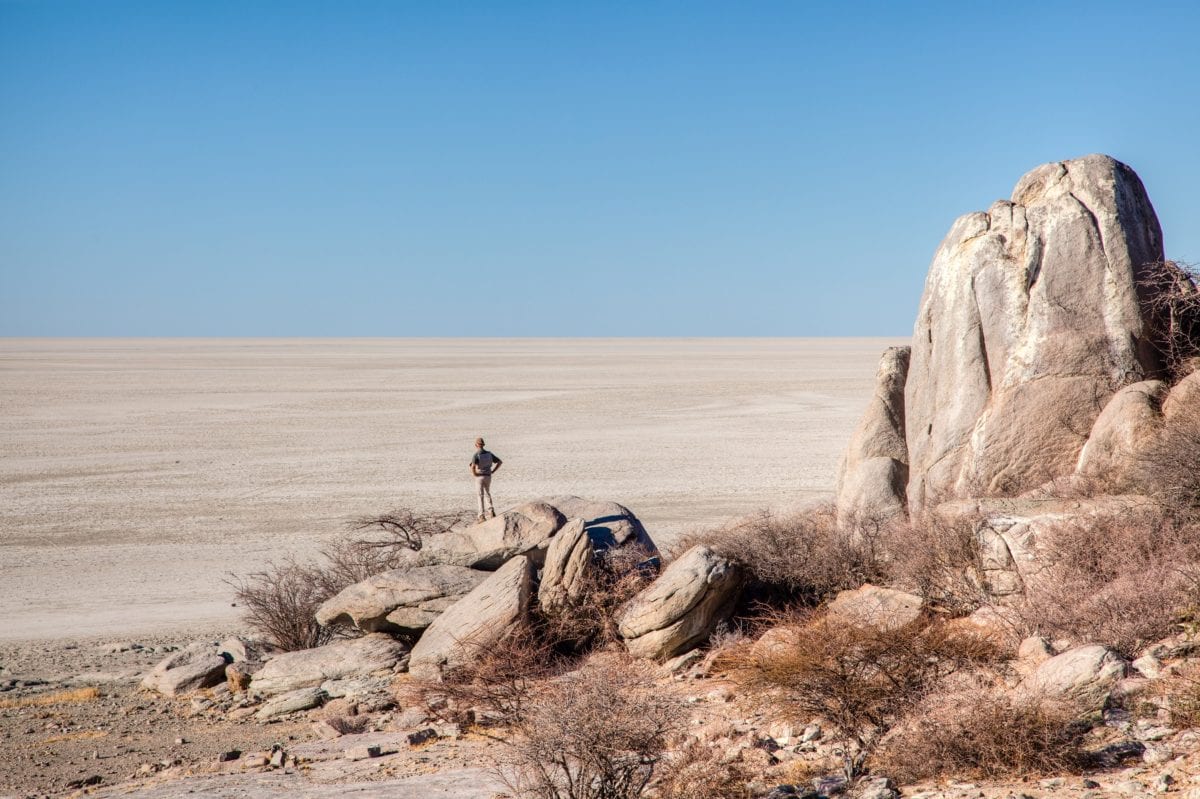
The world’s most impressive geological features
Marble caves, salt lakes and rainbow mountains.
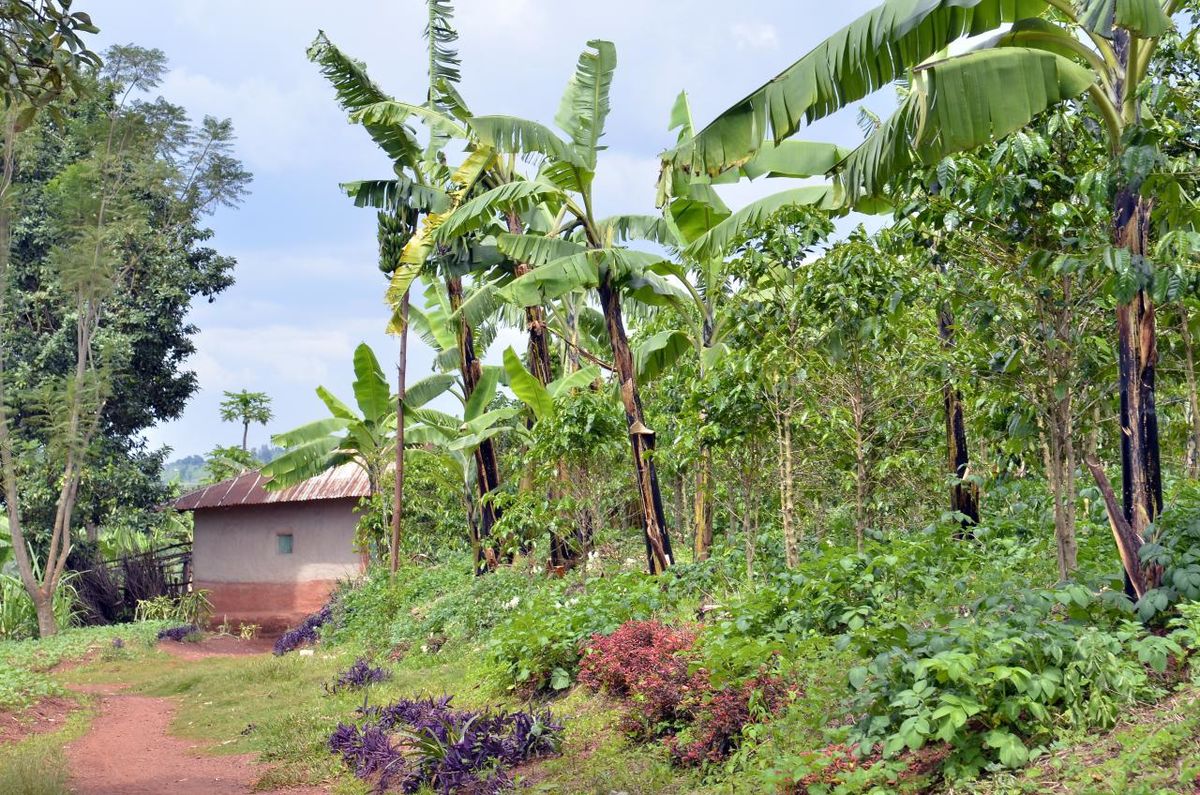
The best coffee destinations around the world
From Colombia to Kosovo, we pick some of our favourite lesser-known places to enjoy a good cup of coffee.
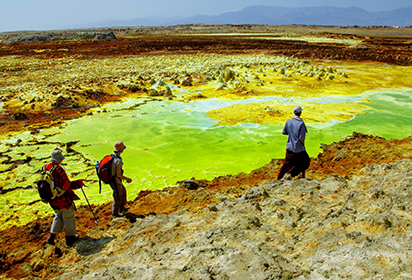
Travelling Ethiopia
To celebrate our Destination of the Month we asked our friends at Rainbow Tours to share their top tips for travelling in Ethiopia.
Ethiopia Travel Guide
Popular destinations, san francisco, new york city.
- Terms of Use
- Privacy Policy
- Your US State Privacy Rights
- Children's Online Privacy Policy
- Interest-Based Ads
- About Nielsen Measurement
- Do Not Sell or Share My Personal Information
- Nat Geo Home
- Attend a Live Event
- Book a Trip
- Inspire Your Kids
- Shop Nat Geo
- Visit the D.C. Museum
- Learn About Our Impact
- Support Our Mission
- Advertise With Us
- Customer Service
- Renew Subscription
- Manage Your Subscription
- Work at Nat Geo
- Sign Up for Our Newsletters
- Contribute to Protect the Planet
Copyright © 1996-2015 National Geographic Society Copyright © 2015-2024 National Geographic Partners, LLC. All rights reserved

- Testimonials
- Meet the Team
- Work With Us
- Outlook Features
- Sign Up Today
- Travel Guides
- Middle East
Ethiopia Travel Guide

From stunning national parks and mountain ranges to an enormous array of cultural landmarks and traditions which survive to this day, Ethiopia is a gem of a destination.
Epic landscapes, historical wonders and a severely underrated wildlife scene, Ethiopia is a destination which has it all. One of the world’s oldest countries, it is also the only African nation to escape the clutches of European colonial rule, evidenced in its array of monuments dedicated to a great many other faiths and powers which have imparted their influence. A nation brimming with culture, ancient customs and traditions from the likes of the Surmi, Afar, Mursi, Karo, Hamer, Nuer and Anuak all remain intact and are cause for a great many spectacular festivals.
Ethiopia is also one of Africa’s most beautiful landmasses, housing the vertical extremes of the Simien and Bale mountains and the Danakil Depression, the lowest place on the continent. Couple this with an abundance of wildlife, and the country is an ideal destination for those looking to explore the best of what the region has to offer in terms of the great outdoors. Addis Ababa, Ethiopia’s capital, is among the safest places in Africa and is its fourth largest city. Home to some inspiring cuisine and thought-provoking museums, it is well worth a visit here to complement any ventures in Ethiopia’s natural landscape.
THE BUSINESS END
Ethiopia’s economy has undergone marked changes over the decades, the communist Derg regime introducing nationalisation of all industries when it came to power in 1974. Some liberalisation progress has been made since the 1990s, but the contentious question of land ownership remains and has hindered the development of commercial agriculture. However, the country’s farming land remains its most promising resource despite the damaging impact of soil erosion, deforestation and overgrazing.
Although agriculture contributes around half of Ethiopia’s GDP, the services sector is not far behind, generating approximately 40 percent of the nation’s income. A sizeable proportion of this is derived from tourism, an industry which turned over $1.4 billion in the second half of 2018 according to the country’s Ministry of Culture. This is down on the $2.7 billion target, but nevertheless Ethiopia managed to welcome more than 380,000 tourists during the period in question. Among the initiatives brought in by the government to boost tourist arrivals include a more liberal visa regime, with the issuance of e-visas seen as a catalyst for more visitors. Indeed, Ethiopia’s Travel & Tourism economy grew by 48.6 percent through the whole of 2018, the largest of any country in the world, according to the World Travel & Tourism Council’s annual review of the economic impact and social importance of the sector.
TOURISM INSIGHTS: ADDIS ABABA HOTEL OWNERS TRADE SECTORAL ASSOCIATION
The Addis Ababa Hotel Owners Association (AHA) was established in 1997 as a non-profit under the name of Ethiopian Hotels and Restaurants Employers Association. As Lude Abiy , the organisation’s General Manager explains, “the founders’ initial vision was to establish an association that would support the industry with the highest quality services and resources available.
“However, due to the enormous changes of the past decade, the association members felt the need for it to reform, anticipating and meeting the growing and changing needs of its members and the city. For this specific reason the association was rebranded in the year 2012 to Addis Ababa Hotels Owners Trade Sectoral Association.”
Abiy went on to answer our questions about AHA and the wider tourism scene in the city.
Q&A WITH LUDE AIBY, GENERAL MANAGER, AHA
Since inception, how has the AHA developed and progressed in terms of its key objectives and the messages it tries to get across?
Lude Abiy (LA): AHA has developed greatly since its inception. There are many developments that have been accomplished by AHA, the first being the fact we have greatly grown our membership base. The second major change is that we have started to work with government offices and other stakeholders to change policies which are not favouring the tourism sector, as well as fostering those that are promoting the sector. Thirdly, AHA has started to produce its own city hotel guide that shows the city capacity and its hotels. This enabled the association to promote members and the city throughout the world. AHA has also been offering training and workshops for members’ employees to develop the services and skills required to succeed. Further, we have created a platform/job fair and networking day that will be happening every year which enables member hotels to recruit qualified citizens who want to join the hospitality sector.
How would you say Addis Ababa has developed in recent years as a business travel hub and what are the key reasons behind its growing appeal?
(LA): Addis Ababa has developed in recent years specifically in regard to the number of hotels in the city as well as global international brands. The number of rooms in the city has increased which means it is now possible for the city to host big conferences, expos and meetings. In addition, out of the 121 member hotels of the association, 95 of them have halls and function spaces to cater to business meetings and conferences. Among these 95, there is a total of 293 halls varying in size to facilitate any event, boosting over 47,000 square meters of space. In addition to this, big convention halls are under construction which will make the city more preferable for many event hosts.
Why, in your opinion, should someone visit Addis Ababa?
(LA): In my opinion, Addis Ababa is a great city for visitors in major ways. Just to mention some: one – it has the best weather throughout the year; two – it has hotels for everyone, from small independents to big international hotels; three – the city has many fantastic international restaurants, traditional restaurants, souvenir houses, museums, and historical places; and four – it is one the safest cities in Africa.
Are there any specific attractions, landmarks or places to eat and drink that you would recommend?
(LA): I recommend the Emperor Menelik II Palace-Entoto area, the National Museum, The Addis Ababa Museum, the Ethnographic Museum, Merkato Market and Shero Meda traditional cloth market, among other places. In terms of places to eat and drink, Tomoca coffee house, Yod Abyssinia restaurant and Baata restaurant are well worth a try.
What trends are transforming the tourism industry in Addis Ababaat present? How are you responding to these trends?
(LA): In my opinion the trends that are transforming the tourism industry in Addis Ababa at present are the growth of demand for a variety of services, and the attention of the government to the sector. The Association is responding to trends by giving more support to these services, ensuring they are delivered as smoothly as possible. Further, the arrival of more new global international and local hotels in the city and the completion of the convention centres that are being constructed are positive developments, and will be followed by an increased number of events and expos being hosted by the city of Addis Ababa.
Are there any plans or projects in the pipeline that you wish to highlight?
(LA): We have many projects in the pipeline. One is to organise a hospitality industry job fair and networking event that is being held every year – this is an event that gives a platform for unemployed people to be hired in member hotels in the fields they are qualified in. A second project is producing a hotel guide every year that can promote member hotels and the city, while another project involves establishing a tourism academy that will produce many professional citizens in the sector.
Are you optimistic about the future of the tourism industry in Addis Ababa?
(LA): I am very optimistic about the future of the tourism industry in Addis Ababa, especially when it comes to MICE tourism. Addis Ababa has all the potential to host big exhibitions, meetings and conferences. Currently the city has more than 11,000 rooms and the biggest airline in Africa which gives us a great opportunity to work on MICE tourism. Moreover, it has conference halls such as the UNECA and AU and a big convention hall development on the horizon.
OUTLOOK RECOMMENDS
Tropic Air , from its base at Nanyuki Airfield in the heart of Kenya, offers private flights and helicopter services. The company has a strong East African footprint and 28 years of experience in the industry, offering heli-services and pioneering heli-safaris throughout the region, including Ethiopia. A helicopter safari over Ethiopia is a highlight for any visitor, the trip exploring the medieval world of historical treasures and places of worship from above, as well as the high and low terrains found in the country.
Agesha Tours
Ethio Afro Tours
Delano Hotel, Bahir Dar
Addis Regency Hotel
Capital Hotel and Spa
Bait Al Mandi
Yod Abyssinia
Abucci Restaurant
2000 Habesha
Simien Mountains National Park
Mago National Park
Omo National Park
OUT AND ABOUT IN ETHIOPIA
Ethiopia offers boundless opportunity to explore nature, and any visit to the country is not complete without a venture into Simien Mountains National Park in the north of the country. UNESCO-listed, it is one of Africa’s most stunning mountain ranges and perfect for those wanting a casual stroll or serious trek. One will also be spoiled by the abundance of wildlife on offer, from elephants and crocodiles to hyenas and a tremendous variety of birdlife.
In terms of food, drink and entertainment, then Addis Ababa is a safe bet and where many visitors will set up base camp for their stay. The city is awash with restaurants covering all cuisines, but it is particularly worth looking out for local-inspired food here, which is characterised by hearty stews, barbequed beef and fresh fish. Addis Ababa is also home to many excellent museums, not least the National Museum of Ethiopia, which contains many precious local archaeological finds such as the fossilised remains of early hominids, the most famous being Lucy, the partial skeleton of a specimen of Australopithecus afarensis. The Ethnological Museum, Holy Trinity Cathedral and Meskel Square are also worth a visit, especially if the latter has an event on.
GETTING THERE AND AROUND
Bole International Airport is Ethiopia’s only international air transit gateway, with airlines flying in and out of the country including Ethiopian Airlines, EgyptAir, Emirates, Kenya Airways, KLM, Lufthansa, Saudi Arabian Airlines, Sudan Airways, Turkish Airlines and Yemenia. Once in the country, there are many ways to get around including a comprehensive domestic air transport network. A solid long-distance bus network also covers much of Ethiopia, with new operators such as Selam Bus and Sky Bus offering a modern and comfortable service. Coupled with a growing network of paved roads, and travel by bus is becoming a more viable option for many visitors.
Another popular means of exploring the country is by hiring a car with a driver, with costs starting at around $120 per day with anywhere between 50 and 75 kilometres offered for free before a charge kicks in. For travelling within cities, most operate a minibus network which is a cheap and quick way of getting about, while taxis are another common mode of travel. It is also worth mentioning the opportunities on offer for cyclists, although rough terrain and roads make taking spare parts and repair kits essential.

Seychelles Travel Guide

Seychelles : Outlook Recommends

Seychelles : Tourism Insights

Seychelles National Botanical Gardens in Focus

Seychelles : Landmark Attractions

Getting To and Around Seychelles

Seychelles Travel Guide 2022
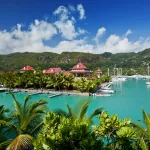
Mahé In Focus

Seychelles Travel Guide 2021
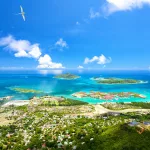
Seychelles Travel Guide 2019
More africa travel guides.

Western Cape Travel Guide

Kenya Travel Guide

Madagascar Travel Guide

Malawi Travel Guide

Mauritius Travel Guide
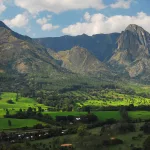
Malawi Travel Guide 2022

Zambia Travel Guide
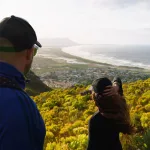
South Africa’s Western Cape Travel Guide

Jordan Banks : Behind the Lens

Tootbus : Travel Business

Queensland Indigenous Womens Ranger Network

Under SXM : Creating Sustainable Underwater Experiences

Hidden Spots for Cherry Blossom Season : Round Up

Urbino : The Last Stop

Enrico Costantini : Behind the Lens

Lepogo Lodges : A Sustainable Safari Experience

Casa de Olivos : Sustainability Stories

Opulence on the Orient Express
Sign in to your account
Username or Email Address
Remember Me

Touropia Travel
Discover the World
Ethiopia Travel Guide
Situated in the Horn of Africa region, Ethiopia is bordered by Eritrea to the north, Djibouti to the northeast, Somaliland and Somalia to the east, Kenya to the south, and Sudan and South Sudan to the west. Ethiopia is the oldest independent country in Africa and the second-oldest official Christian nation in the world after Armenia.
Latest Articles
Discover lalibela: ethiopia’s jerusalem.

The Coffee Ritual: Ethiopia's Jebena Buna Ceremony

Meet the Hyena Man of Harar, Ethiopia

How to Celebrate the Ethiopian New Year

Why Is the Ethiopian Calendar 7 Years Behind?

Films of Powerful Love Stories in Ethiopia

Kenenisa Bekele and 9 More Ethiopian World Record Holders

10 Top Guided Tours to Take in Addis Ababa

The Battle of Adwa, a Trailblazer for Africa’s Independence

Guides & Tips
Get expert guidance for your trip. from tips on packing to cultural etiquette, our travel advice will help you make the most of your journey., 10 inspiring women to know from ethiopia.

Top Things to Visit in Ethiopia

10 Reasons Why You Should Visit Ethiopia

How Couples Can Explore Ethiopia

The Best Time of Year to Visit Ethiopia

The Ultimate Backpacking Guide to Ethiopia

CT Sizzle Film 2019

Immerse yourself in the local arts, literature, and design. Explore the cultural fabric of the destination through art, literature, and design.
Live with the locals in the ethiopian highlands.

Meet the Creator of Ethiopia's First Comic Book Superhero

10 Top Fashion Designers to Know from Ethiopia

Food & Drink
Explore the local culinary scene, from breakfast to michelin-starred restaurants. sip cocktails, savor desserts, and discover the best local markets., ethiopia's top restaurants.

A Guide to Traditional Ethiopian Cuisine

Inspiration
Get inspired to travel. explore lgbtq+ travel experiences, hidden stories, and the unique attractions that make a destination worth visiting., things to do, plan your sightseeing and activities with our recommendations. explore attractions, book tours, and immerse yourself in the local culture., ethiopia's bull-jumping ritual turns a boy into a man.

This Ethereal Landscape is the Hottest Place on Earth

Why Adoption by Foreigners is Banned in This Country

What to Know About the Gelada Baboon, World's Rarest Ape

How to Spend 24 Hours in Addis Ababa

The Ultimate Guide to the Omo Valley

Travel Rating: 9.0
Stepping into the Omo Valley, you’ll be surrounded by a living chronicle of human history and a testament to the resilience of humanity. It serves as a humbling reminder of our shared origins and the remarkable journey that has led us to the present day.
Tribal Population: ~200,000
Number of Tribes : 9
First Settled : ~160,000 years ago
Currency : Ethiopian Birr (Br, ብር)
Time Zone : Eastern Africa Time (EAT), UTC+3
Length of Trip: 5-10 days.
Trip Type: adventure / cultural.
Our Experience: We spent 2 weeks in the Omo Valley in February 2020.
Disclaimer : Before planning your trip, it’s essential to check for any travel restrictions, visa requirements, and other relevant information, as these might change over time.
The Omo Valley is ideal for :
- Adventure & cultural enthusiasts.
It isn’t ideal for :
- Families with small children.
Table of Contents
Omo valley, ethiopia, a land of ancient traditions.
As a land steeped in the echoes of ancient traditions, the Omo Valley is place where time-honored cultures have thrived amidst the vastness of Ethiopia’s rugged terrain. It offers a glimpse into the essence of humanity’s heritage, as indigenous tribes preserve their unique ways of life with unwavering pride.
From the renowned Hamar people adorned in vibrant beads and ochre, to the Mursi with their elaborate lip plates, each tribe weaves its own narrative within the valley’s diverse cultural landscape .
Background Context
The omo valley's history.
Situated in southern reaches of Ethiopia, the Omo Valley holds is one of the oldest inhabited regions on Earth. Archaeological evidence suggests that the valley has been inhabited by hominins for over two million years, making it the de facto cradle of humanity .
Over the years, excavations in the Omo Valley have unearthed fossil remains of various hominin species, providing crucial insights into human evolution, including the discovery of the Homo habilis and Homo erectus fossils that revealed vital connections between our ancestors and their environment. Thanks to the valley’s diverse terrain, including ancient lakes and river systems, its land created an ideal setting for early human settlement and the development of essential survival skills.
Beyond archaeological findings, the Omo Valley has a storied cultural heritage that spans thousands of years. Indigenous tribes have inhabited this region since time immemorial, preserving their unique customs, languages, and artistic expressions.
Traditional ceremonies and rituals continue to be an integral part of daily tribal life, providing insights into the ancient practices that were instrumental in shaping human cultures for over a millennia .
Omo Valley Tribes
Discover the mursi tribe.
The Mursi tribe is one of the most iconic and fascinating indigenous communities in the Omo Valley. With an estimated population of around 10,000 people, the Mursi inhabit the remote regions near the Omo River, embracing a semi-nomadic lifestyle that has persisted for centuries .
Archaeological findings suggest that the Mursi have inhabited the Omo Valley for several thousand years, with their origins tracing back to the Cushitic-speaking people who settled in the region. The tribe’s ancient cultural practices and traditions have been orally passed down through generations, meticulously preserving their distinct identity and ways of life.
The Mursi people are renowned for their extraordinary lip plate tradition . Starting at 15 years old, young women pierce their lower lips and gradually stretch the holes to accommodate increasingly larger clay plates. These plates, sometimes reaching impressive sizes, are regarded as symbols of beauty, social status, and cultural identity. The painstaking process of inserting a lip plate is an elaborate ceremony, marking a significant rite of passage into womanhood.
The Mursi’s cultural expressions extend beyond the lip plates, as they are renowned for their body painting, intricate scarification patterns, and colorful beadwork . Ceremonial dances, songs, and rituals are an integral part of their social fabric, reflecting the tribe’s communal identity and deep-rooted traditions.
Moreover, the Mursi are skilled pastoralists, tending to their cattle herds and relying on subsistence farming to sustain their livelihoods. Their deep connection with the land and their dependence on natural resources have fostered a harmonious relationship with the environment, shaping their animistic beliefs and rituals.
When you venture into the heart of Mursi territory, you’ll gain the rare opportunity to experience the world of a tribe whose culture remains as awe-inspiring as it is enigmatic. The Mursi’s commitment to preserving their age-old customs and traditions provides a window into the diversity and resilience of humanity’s enduring history .
Discover The Kara Tribe
With an estimated population of around 1,500 to 2,000 individuals, the Kara people have maintained their unique way of life for generations, deeply rooted in their ancestral customs and traditions.
The history of the Kara tribe is intertwined with the ancient migration patterns of pastoralists and agro-pastoralists across the Omo Valley. Belonging to the Omotic language group, the Kara have inhabited the fertile lands near the Omo River for centuries, relying on agriculture, fishing, and livestock herding as the cornerstones of their subsistence economy.
One of the most striking aspects of the Kara culture is their intricate body art and scarification practices. Both men and women adorn their bodies with intricate patterns, using white chalk, charcoal, and ochre to create striking designs. Scarification, achieved through cutting and branding the skin, holds significant cultural symbolism as it denotes stages of life, achievements, and tribal identity.
Additionally, the Kara tribe is celebrated for their remarkable face painting rituals, which are often performed during special ceremonies and festivities. Men use natural pigments to create bold patterns, signifying their transition to adulthood as warriors. Women, on the other hand, decorate their faces with delicate patterns, enhancing their beauty and social standing within the community.
Apart from their stunning artistry, the Kara people’s social structure revolves around close-knit family units and a communal way of life . The tribe relies on collective decision-making and cooperation for various activities, including agricultural work, hunting, and celebratory events.
The Kara’s perseverance in preserving their ancestral practices and customs amidst modernization underscores the value they place on their cultural identity. When you immerse yourself in the Kara’s daily life and traditions, you’ll have the opportunity to witness the interplay between ancient heritage and modern adaptation.
Discover The Hamar Tribe
With a population of approximately 50,000, the Hamar people have a distinctive way of life that revolves around pastoralism, agriculture, and intricate cultural traditions.
Historically, the Hamar tribe have long inhabited the mountainous landscapes along the Omo River, where their livelihood relies on cattle herding, crop cultivation, and trade. The tribe’s nomadic past has also played a significant role in shaping their identity as skilled herders and agriculturists.
One of the most renowned cultural practices of the Hamar is the “Bull Jumping” ceremony, a rite of passage that marks a young man’s transition to adulthood and eligibility for marriage. During this elaborate and symbolic event, the initiate must jump over a line of cows that have been smeared with dung to display his valor and readiness for marriage. In a way, the ceremony is a testament to the tribe’s emphasis on bravery and strength.
Integral to Hamar cultural expression, both men and women adorn themselves with intricate beadwork, necklaces, and metal bracelets, signifying their social status and wealth. Women, in particular, are known for their vibrant hairstyle, which involves intricate braiding and the use of ochre and butter as hair adornments.
From a societal perspective, the Hamar tribe follows a traditional system of governance led by elders and a council of chiefs who make decisions for the community as a whole. This makes social cohesion and communal values, central to their way of life, as they place significant importance on communal solidarity.
Despite a surge of external influences, the Hamar people continue to take pride in their cultural heritage and retain a strong sense of identity. By sharing their customs, rituals, and stories with visitors, they enable you to experience an ancient way of life that has stood the test of time. The Hamar Tribe’s enduring traditions and strong bonds serve as a living testament to the strength of indigenous communities.
Discover The Dassanech
With a population of around 50,000 to 60,000 people, the Dassanech people have a rich cultural heritage that sets them apart in this ethnically diverse region.
Historically, the Dassanech tribe’s origins can be traced back to the eastern shores of Lake Turkana in neighboring Kenya. They are believed to have migrated from Kenya’s Rift Valley hundreds of years ago , to seek better grazing lands for their cattle. As a result, the Dassanech have become skilled pastoralists, relying on livestock, particularly cattle, goats, and sheep, as their primary means of subsistence.
The Dassanech are known for their elaborate body adornments, where both men and women wear vivid beads, metalwork, and cowrie shells, often decorating their hair with feathers. This intricate form of body decoration serves as a reflection of their social and economic status and is also considered a form of self-expression.
The Dassanech community holds deep-rooted cultural practices that play a pivotal role in their society. Among these, the Dimi ceremony stands out as a crucial rite of passage for fathers who have at least one daughter.
This ceremony marks a father’s recognition of his daughter’s fertility after undergoing the practice of female genital mutilation. Whilst the ceremony is centered around the firstborn daughter, its blessings extend to all the sisters, even if they are yet to be born.
Upon completion of the Dimi ceremony, the father earns the title of an “elder,” granting him a voice in the village’s decisions, as well as within his larger Dassanech clan.
While the Dassanech tribe has preserved much of its traditional practices and customs, modern challenges such as drought, environmental changes, and outside influences pose threats to their way of life. Despite these challenges, the Dassanech people continue to hold steadfast to their cultural heritage, enduring external pressures to adapt to modern times.
Discover The Dorze Tribe
With a population of around 30,000 people, the Dorze are known for their elaborate hand-woven bamboo houses, as well as their expertise in farming and weaving.
Historically, the Dorze people are believed to have migrated from the northern highlands of Ethiopia to the fertile lands of the Omo Valley several centuries ago. They settled in the Gamo highlands of the Gughe mountain range , where they established their villages and way of life.
One of the most iconic aspects of Dorze culture are their remarkable bamboo huts. These intricately designed homes are constructed with thatched bamboo and take the shape of an elephant’s head. Its architecture is both functional and symbolic, providing shelter from harsh highland elements while also representing the tribe’s close connection to nature and wildlife.
The Dorze people are exceptionally skilled farmers, cultivating crops such as enset (false banana) , maize, sorghum, and millet. Enset holds particular significance in their diet, and they prepare it in various ways, including fermenting it to make a starchy food known as “kocho.”
Weaving is another prominent cultural tradition among the Dorze tribe. They are renowned for their intricate handwoven cotton fabrics, characterized by vivid patterns and colors . Even though these textiles are primarily used to make traditional clothing and household items, their level of craftsmanship has earned them international recognition.
Like other tribes within the Omo Valley, the Dorze people place high value on their oral traditions and storytelling. They have a rich folklore passed down through generations, which preserves their history, customs, and beliefs. Music and dance also play an essential role in their cultural expression, with high-spirited performances taking place during special occasions and festivals.
Unfortunately, encounters with modernity, changes in land use, and external influences pose threats to the Dorze’s identity. Despite these challenges, the Dorze people continue to celebrate and maintain their distinct culture, offering you a chance to experience their age-old traditions.
Omo Valley Travel Guide
Getting to the omo valley.
Getting to the Omo Valley is an adventure in itself, as this remote and rugged region of Ethiopia remains untouched by mass tourism. Travelers seeking an authentic cultural experience with indigenous tribes must be prepared for a journey off the beaten path.
Currently, there are two main routes to access the Omo Valley: via Arba Minch or Jinka – each offers its own set of challenges.
Via Arba Minch : The Arba Minch route starts from the city of Addis Ababa , Ethiopia’s capital. From Addis, you can take a short domestic flight to Arba Minch, a town located at the edge of the Great Rift Valley. The flight itself provides stunning aerial views of the dramatic landscapes below.
Upon arrival in Arba Minch, you can easily organize guided tours or hire a local driver to independently venture further into the Omo Valley (~6-8 hours away). The road journey from Arba Minch to the heart of the Omo Valley is long and challenging as it traverses rugged terrain, river crossings, and remote villages. You should be prepared for a significantly bumpy ride and limited amenities along the way.
Via Jinka : The Jinka route starts from the town of the same name, which can be reached by a domestic flight from Addis Ababa or by overland travel from other parts of Ethiopia. In terms of location, Jinka is the primary gateway to the lower Omo Valley and is relatively close to some of the tribal villages (~2-3 hours away).
From Jinka, you can also organize tours with local guides who are knowledgeable about the the region
It’s important to note that the roads within the Omo Valley can be formidable, especially during the rainy season when they can become muddy and impassable.
Accommodation Choices
Accommodations throughout the Omo Valley are as rustic as the region itself. While there are a few basic hotels and guesthouses in towns like Jinka and Turmi, we highly recommend camping with the tribes .
For intrepid travelers, pitching a tent and camping with the tribes is an unparalleled experience. Most tribes in the Omo Valley welcome visitors to stay with them, offering an incredible opportunity to live among the indigenous communities and learn firsthand about their customs and way of life. Camping in the villages will allow you to be part of daily routines, ceremonies, and traditional practices, culminating in lasting memories and meaningful connections.
It will also enable you to witness elaborate cultural events, such as bull jumping ceremonies, weddings, and harvest celebrations. From our experience, the hospitality of the tribes is heartwarming , and sharing meals around a campfire while exchanging stories is an unforgettable experience.
By choosing to camp with the tribes, you’ll be able to forge genuine connections, gain deeper insights into ancient cultural practices, and leave with a profound understanding of the region’s rich heritage. This intimate approach to accommodation will connect you with the land, the people, and the timeless spirit of the Omo Valley in a way that distant guesthouses simply cannot match.
The Best Time To Visit
The best time to visit the Omo Valley is during the dry season, which typically spans from November to March . This period offers the most comfortable weather, with cooler temperatures and less rainfall, making it easier to navigate the rugged terrain and remote villages of the region. The dry season also ensures that river crossings are more manageable, allowing for better access to remote tribal communities.
During the dry season, the Omo Valley is endowed with cultural events and ceremonies. Many tribes hold exuberant festivals which showcases their cultural traditions and offer a unique vantage point to experience these ancient customs.
It’s important to note that the Omo Valley lowlands can become excruciatingly hot during the dry season, particularly in January and February , so we highly recommend that you come fully prepared with appropriate clothing and methods to stay hydrated during your trip.
Is The Omo Valley Safe?
The Omo Valley is generally safe, if you follow necessary precautions and travel with reputable tour operators. However, the area can be politically sensitive at times , so you should stay well-informed about any potential security risks during your trip.
Traveling with an experienced and knowledgeable guide or through a reputable tour operator is strongly recommended. They can provide valuable insights and ensure that you adhere to local customs and practices, which is crucial for respectful and safe interactions with the indigenous tribes.
Additionally, the Omo Valley’s remote and rugged terrain presents its own set of challenges, so be prepared for basic living conditions and be mindful of your health when consuming local foods.
By staying informed, following local advice, and traveling with reputable operators, youcan enjoy a culturally enriching experience in the Omo Valley with a reasonable level of safety.
Where Should I Go Next?
After exploring the Omo Valley, consider continuing your Ethiopian adventure by visiting the pious town of Lalibela , known for its remarkable rock-hewn churches, which are UNESCO World Heritage sites. Here, you can marvel at the incredible architecture and religious significance of these structures, carved out of solid rock.
For an otherworldly experience, head to Dallol , a unique geological landscape in the Danakil Depression, one of the hottest places on Earth. Witness the striking salt formations, colorful mineral deposits, and bubbling hot springs, which form a surreal and captivating environment.
To delve further into the cultural diversity of Ethiopia, make your way to Harar , one of Africa’s oldest cities. Explore its historic walled city and experience the Hyena Feeding Ceremony , a traditional practice where wild hyenas are hand-fed by the locals.
Each of these destinations offers an unforgettable extension of your trip, allowing you to immerse yourself in the wonders of Ethiopia’s history, culture, and natural beauty.
Actionable Insights
Is the omo valley worth visiting.
The Omo Valley is definitely worth visiting for travelers seeking an authentic and culturally immersive experience. This remote region in Ethiopia offers a unique opportunity to encounter ancient traditions and diverse indigenous tribes that have preserved their customs for centuries.
While the journey to the Omo Valley may be challenging and require some logistical planning, the rewards are immense for those seeking an off-the-beaten-path adventure and a deeper appreciation for humanity’s diverse cultural history.
Is the Omo Valley expensive?
The cost of visiting the Omo Valley can vary depending on the type of experience and level of comfort you choose. While it may not be as expensive as some well-established tourist destinations, it’s important to note that traveling to this remote region can incur certain expenses.
The remoteness of the Omo Valley makes transportation costs higher than the rest of Ethiopia, especially if you opt for private tours or customized itineraries.
Additionally, since the region lacks developed tourist infrastructure, accommodations can range from basic guesthouses to more luxurious lodges, with the latter being significantly more expensive.
Cultural experiences, such as attending traditional ceremonies or interacting with indigenous tribes, may also involve additional fees. Furthermore, guided tours, especially those that provide exclusive access to local communities, could be more costly compared to independent travel.
While the Omo Valley may not be the most budget-friendly destination, it offers an exceptional and culturally enriching experience that many travelers find well worth the investment.
How long to stay in the Omo Valley?
The ideal duration of stay in the Omo Valley varies based on individual preferences, interests, and the depth of cultural immersion desired. To fully experience the diverse cultures and traditions of the tribes in the region, we recommended that you spend at least 5 to 7 days in the Omo Valley.
This timeframe will allows you to visit multiple tribes, attend traditional ceremonies, and gain a deeper understanding of different ways of life. It also provides enough time to explore the stunning landscapes and witness the daily routines of the local communities.
Keep in mind that the Omo Valley is a remote and rugged area, and travel between villages can be time-consuming due to challenging road conditions. Therefore, you must allow for a sufficient number of days to ensure a more relaxed and meaningful experience without rushing through the cultural encounters.
For those seeking a more comprehensive and immersive exploration, extending your stay to 10 days or more will provide a deeper appreciation of the region’s history, traditions, and people.
How many tribes are in the Omo Valley?
The Omo Valley is home to numerous ethnic groups and tribes, each with its own distinct culture, language, and traditions. While the exact number of tribes can vary depending on how they are classified and identified, it’s estimated that there are around 9 different tribes living in the Omo Valley region of Ethiopia.
Some of the well-known tribes include the Mursi, Hamar, Karo, Banna, Ari, Dassanech, and Dorze, among others. Each tribe has its own unique customs, rituals, and way of life, making the Omo Valley a fascinating and culturally rich destination.
Any tips on photographing the tribes?
When taking photographs in the Omo Valley and interacting with the tribes, it’s essential to approach the communities with respect, cultural sensitivity, and a genuine interest in learning about their way of life. Below are some tips that’ll help you ensure a meaningful and respectful experience:
Establish a Connection : Before taking any photos, take the time to build rapport with the people you wish to photograph. Greet them warmly, engage in friendly conversation, and seek their permission to take pictures.
Seek Consent : Always ask for permission before taking someone’s photo. Use simple gestures or show them the camera to indicate your intentions. It’s essential to respect their privacy.
Avoid Intrusiveness : Be mindful of personal space and boundaries. Avoid using a long lens to capture candid shots from afar, as it can be perceived as invasive. Instead, focus on establishing trust and capturing natural moments.
Be Patient and Observant : Spend time with the tribes, observe their daily activities, and try to anticipate candid moments. Patiently waiting for the right opportunity will lead to more authentic and compelling photographs.
Show Appreciation : After taking photos, show the subjects the images and thank them for their cooperation. This gesture conveys respect and appreciation for their willingness to be part of your photographic journey.
Learn About Their Culture : Take the time to learn about the history, traditions, and customs of the tribes you encounter. Understanding their way of life will enhance your photography and foster a more meaningful connection with the people you meet.
Pay Them : It’s common practice to pay individuals or communities for taking photographs. This can be done either by paying a small fee per photo to the individuals you photograph or by paying an all-inclusive fee to the village chief, if available.
By following these guidelines, you’ll be able to capture compelling images while fostering positive interactions and preserving the dignity and authenticity of the people you encounter in the Omo Valley.
Remember, the experience is not just about capturing photos but also about understanding and appreciating the cultures of the tribes.
Consider Supporting Future Articles:

Want to Keep Exploring?
Luang prabang, laos, join the adventure., start typing and press enter to search.

- Destinations
- Photography
Three Weeks in Ethiopia: A Solo-Traveller Itinerary
minute read
Ethiopia is ancient Abyssinia. It’s ‘once upon a time’ fables, rock hewn churches, soulful smiles and every traveller’s wildest fantasy. It’s the place where legends began, a fantastical fable about golden deserts and Sheba and Solomon. This itinerary and guide for visiting Ethiopia will highlight how it's like nowhere else on the planet.
Neither European nor truly African, it will leave you dumbfounded, scratching your head trying to understand the nuances that make it a wedge between continents.
It’s the stuff real travel dreams are made of. However, a degree of challenge is involved in backpacking Ethiopia.
It may not be the famine ravaged country historically perpetuated by the media, but pecuniarily it is poor. I was tested to my limits, left feeling distraught, and titillated to the max.
Ethiopia is exotic, but not for those seeking sun-kissed beachside relaxation: you come here to be stirred emotionally. And stirred you will leave. With a Visa and MasterCard that couldn’t be made to work followed by a bout of typhoid, I certainly was.
Here's what you'll find in the guide-cum-itinerary.
Solo Travel Note on Safely Visiting Ethiopia
In all sincerity, Ethiopia wasn't the easiest country to explore alone. There were moments that were very confronting, an emotional rollercoaster that really challenged me.
Linguistically, without Amharic (especially outside of Addis Ababa), there were times in which I didn't know how I'd get to the next destination. Few agrarians speak anything other than Amharic and dialect. Logistically, with a suitable guidebook, getting to the common and more frequently visited areas (outlined in this itinerary) wasn't overly problematic.
If, like me, you're a solo traveller who likes spending a day here and there with other travellers, then you may be disappointed: there are not many opportunities for meeting other vagabonds. Hostels don't exist (outside of the capital) and, if you're travelling out of season, you may not see other travellers while on the open road.

Ethiopia is, though, a great place for giving you strength and testing yourself, mentally, emotionally and physically. I believe travelling Ethiopia alone - and surviving - made me a more competent, courageous and confident traveller ... with a stronger sense of wanderlust.
Here is the itinerary I created and followed while backpacking alone through Ethiopia.
Save this pin for future reference!
ADDIS ABABA
It’s a difficult city to describe. With a lusty energy pulsing rhythmically through its pothole littered dirt streets, it’s impossible not to feel beguiled.
Rustic on the outside and rambunctious in spirit, Addis Ababa is a paradox: full of baffling contrasts, visiting Ethiopia's capital city means gaining an understanding of the country at large.
Before moving north or south of the intoxicating capital, visit a few of the following sites that rest on the cusp of a mystical world.

Merkato Market
More closely resembling a slum than a quintessentially African market littered with trinkets on rugs, it occupies a swathe of city, and is often – justifiably - missed by visitors. I was encouraged to go by an Ethiopian friend and was escorted by a contact of hers, a local.
I was thankful for the guide because, although a gratifying place to visit, the smells, shady characters and general dishevelled nature left me a little discombobulated.
Despite its warts, the market is home to the exotic spices, jewellery and other paraphernalia evocative of Ethiopia. A visit, therefore, is justifiable, but do keep an eye on your money while exploring the tin shacks.
National Museum of Ethiopia
With a historical legacy stretching almost to the dawn of mankind, taking time to visit the National Museum is stepping foot inside a lost world. By entering, the opportunity to understand the deep roots of Christianity and its links to the country’s development is provided. In fact, acquiring a working knowledge of said ecclesiastical origins is fundamental, particularly if exploring the northern frontiers of Axum and Lalibela.
It gave me clarity regarding the country’s origins and the religious fanaticism that underpinned certain attitudes I encountered.
The museum is located on King George VI Street in Addis Ababa.
Yod Abyssinia or Habesha Restaurant
At night, certain neighbourhoods evolve into a sybaritic lair, bodies guided by booming beats and neon flashing lights. It’s a world away from the eskista shoulder dancing that erupts on the stages of Yod Abyssinia and Habesha Restaurant.
Shoulders synchronously rolled, twisted, bounced then flexed, performed evocatively to a cadenced drum beat accompanied by the virtuosity of a beatific Ethiopian voice and mesenko. It was eye-popping, and hypnotic.
Although a tourist trap, a type of attraction I would often avoid, I’m pleased I took the opportunity to attend. It was trancelike, and a real taste of the exoticism one expects of Ethiopia.
Meskal Square (at Festival Time)
Perhaps it shouldn’t be on the Addis ‘must see’ list, a drab open plaza from the Communist years. But it does come to life during the Meskel ceremony: celebrated annually in September by Ethiopian Orthodox, the plaza erupts into a flurry of religious festivity.
Otherwise, a simple drive by in a ubiquitous Toyota HiAce ‘blue donkey’ (shared minibus) will be enough.
Local Encounters
Travelling alone provides an idyllic opportunity to engage more closely with locals, although at times it can be fraught with peril. Whether dining in a restaurant, walking along Bole, shopping at Merkato or travelling across town in a shared minibus, there are endless opportunities to engage and gain an understanding of that which makes Ethiopia so unique: its people.
I traversed the city regularly in shared minibuses, and despite a dearth in Amharic proficiency, was able to forge friendships with some of the kindred souls who guided me and provided support whenever the ‘help, I’m lost’ look plastered itself across my face.
Staying in Addis Ababa - RECOMMENDED LENGTH OF STAY
One to two days
Spend one to two days in Addis, the first to acclimatise and adjust to the bustle, and the next visiting sights of interest.
Staying in Addis Ababa - ACCOMMODATION
There’s an unexhaustive list of reputable (and habitable) guesthouses from which to choose. I chose to stay at La Source Guest House and was pleased with the quality of service and décor.
Consult the following websites for up to date information regarding prices and availability of accommodation:
- Hostel World
- Hostel Bookers
- Last Minute
Eating in Addis Ababa - RESTAURANTS
Addis Ababa, as the capital, is host to the widest array of food you will see and taste in Ethiopia. Indulging in local fare is simple but getting a taste of home or something other than injera (for expatriates and long-term volunteers) is also possible. Try some of the following restaurants, all of which served food I thoroughly enjoyed.
- Habesha Restaurant
- La Parisienne
Getting Around Addis Ababa - TRANSPORTATION
The city is more expansive than you may be able to conceive so getting from one end to the other on foot may not be possible (unless of course you’re a triathlete). Walking around the neighbourhood in which you’re staying, however, is advisable as it will likely result in cordial conversation with locals, as it did for me.
Roads are pothole littered, and traffic is chaotic, so peddling your way around is also not advisable.
It leaves you with three key options: minibuses, taxis and the tram (the latter of which was introduced after I visited in 2011).
Blue and white, they are minivans that overfill quickly, traverse certain routes (destinations written in Amharic at the front of each vehicle) and certainly get you to your endpoint. I was timid at first, particularly because I didn’t know which one to catch, but locals always provided assistance. Pay the fare (usually only 3 birr) to the conductor who will give you change before you exit. It is likely the most authentic Addis experience you will have.
Yellow and green, they’re unmissable, and reliable. Slightly more expensive than the minibuses, they’re ideal if you don’t fancy being squashed into the back of the minivan and truly treasure your life - drivers actually take care.
Commenced in 2015, it apparently covers two routes, one from north to south and, yes, the other from east to west. It’s green and white, cheap, and gives instructions in both Amharic and English. Try it out and let me know what you think.
Getting to Addis Ababa - TRANSPORTATION
As the starting point for most travellers to Ethiopia, flights will be the most likely mode of arrival. There are a host of airlines that service Ethiopia, so please see the links at the end of the article under ‘Getting to Ethiopia - TRANSPORTATION’ for recommended flight search engines that yield the best fares. In terms of getting to and from Addis Ababa in regard to other parts of the country, please see each respective city below for details.
NOTE: I travelled back to Addis Ababa from Lalibela overland, a gruelling trip that required two full days of travel, a bus and two minivans.
A bustling, dirty and poor metropolis on the outside, inching closer to Lake Tana transforms the cityscape: wide streets lined with palm trees open to a panorama of the lake’s murky waters. It’s perhaps Ethiopia’s most scenic city, but it wasn’t the city I’d come to see: with island monasteries littering the lake, launching a boat excursion was at the top of my Bahir Dar wish list.
A ten-hour bus ride north of Addis Ababa, it’s worth enduring the nauseating journey - littered with windy mountain roads and strangers’ children vomiting on one’s lap - for a chance to visit the monasteries and the Blue Nile Falls.
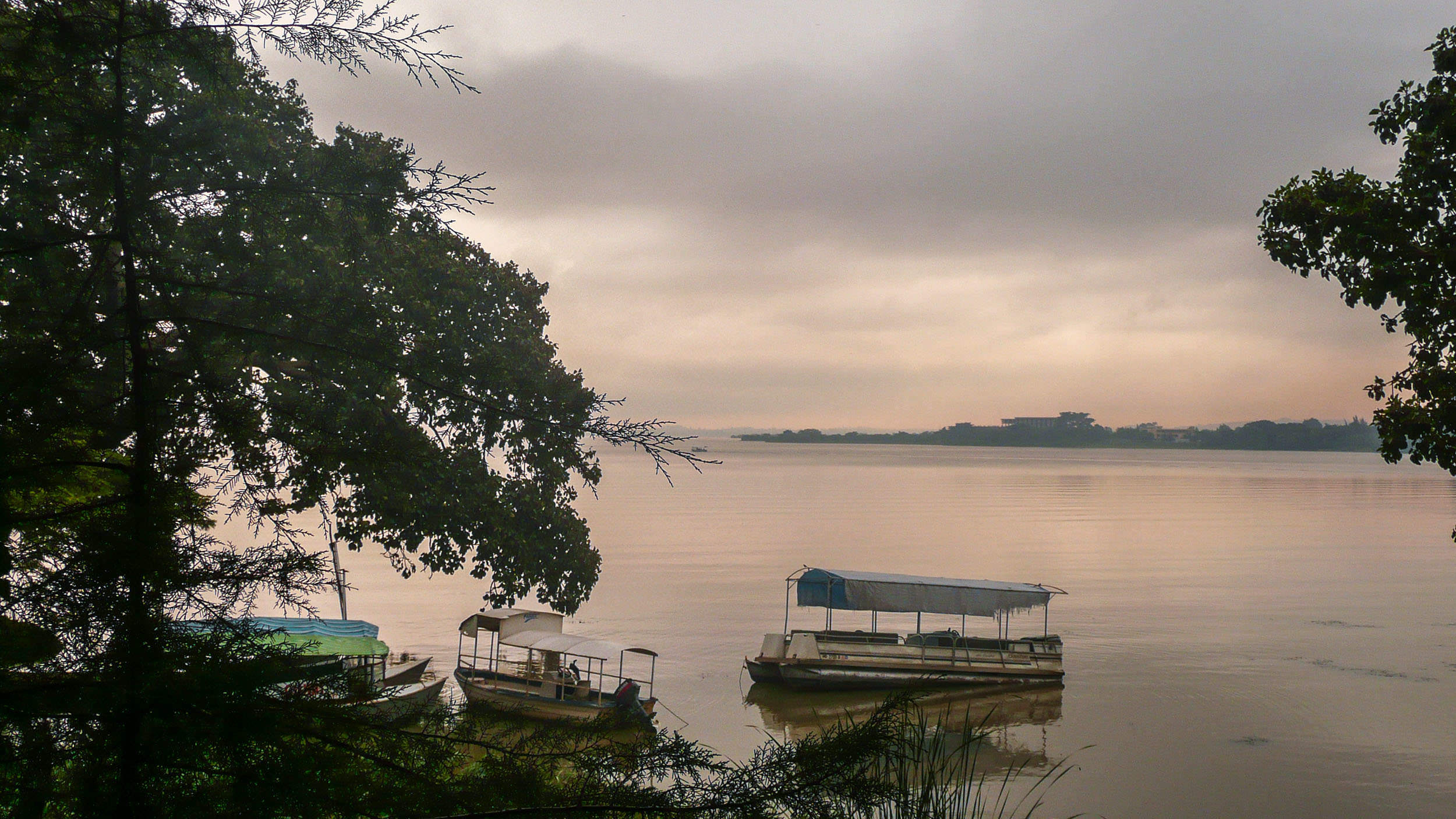
Lake Tana Monasteries
Peppered throughout the lake and around its periphery are 20 (or more) establishments in which monastic life has unfolded since the 14 th century. Steeped in mystery and brushed with a stroke of intrigue, the ancient churches are sanctuaries, havens of peace and tranquillity for monastic residents.
Unknown to the outside world until the 1930s, they’ve since risen in fame and are now a popular traveller destination, a stopover en route to the Aksumite churches of Tigray and rock hewn beauties of Lalibela.

I arranged a boat tour on arrival in Bahir Dar, with a local scout I met outside Ghion Hotel. Requisite to the discussion was a price negotiation, a necessity when embarking on Lake Tana excursions.
Ensure you know what price is normal for half and full day excursions, before bargaining commences. Also ensure you discern how many monasteries will be visited, which ones, what type of boat will be used and whether or not it has life jackets.
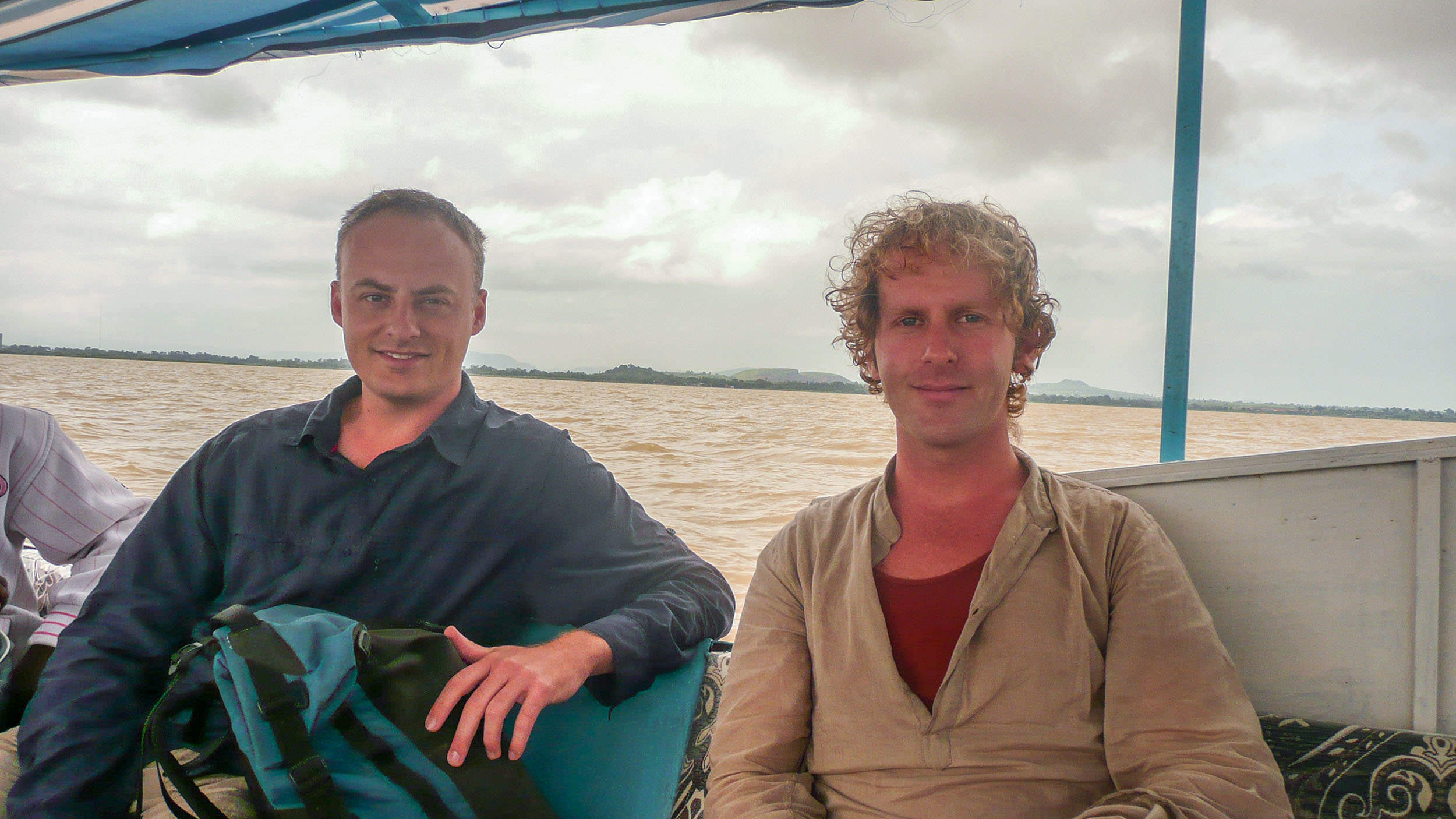
The tour I took included four island monasteries and one on a peninsula. The following two were the most noteworthy.
Kebran Gabriel Monastery
Shrouded in thick forest, it was the roof that I saw first from the lake as the boat glided across Tana’s surface. Men on papyrus canoes paddled past, their load filled with firewood, as we docked at the island.
After a short walk, the men on board our boat reached the monastery sitting on top of the hilly island, an establishment dating to the 17 th century. Women are not permitted, their presence thought to be too great a temptation for the celibate monks.
Following a short walk around the circular structure, I entered, and was taken aback by the contrast: colourful frescoes covered the walls, artistic representations of the death of Jesus. Monks walked by, engrossed in the ritual of daily monastic life, and I watched voyeuristically, a curious traveller with a penchant for learning about the world, both new and old.

Apparently, since visiting Ethiopia and the monastery in 2011, it has closed its ecclesiastical doors to the public. There was a fee to visit, the price a little lower than that charged by the other monasteries I saw.
Debre Maryam Monastery
One of the newest of the monasteries, built in the 19 th century, its style is typical of rural Amharic buildings: simple and ungratifying. The friendliness of the priest contrasted the humble surroundings. He welcomed us and offered to play the role of guide as men and women alike approached the entrance. It was the friendliest of the five monasteries I visited.
Following a meander through mango and fig trees, I followed the priest who proudly showed manuscripts dating to ‘ancient’ times. With naïve art covering the walls of the rudimentary, drab structure, there may be no beautiful aesthetics to entertain curious eyes. But don’t be fooled by looks: Debre Maryam is infused with an affable atmosphere, a sense of warmth that made me feel comfortable during the visit.
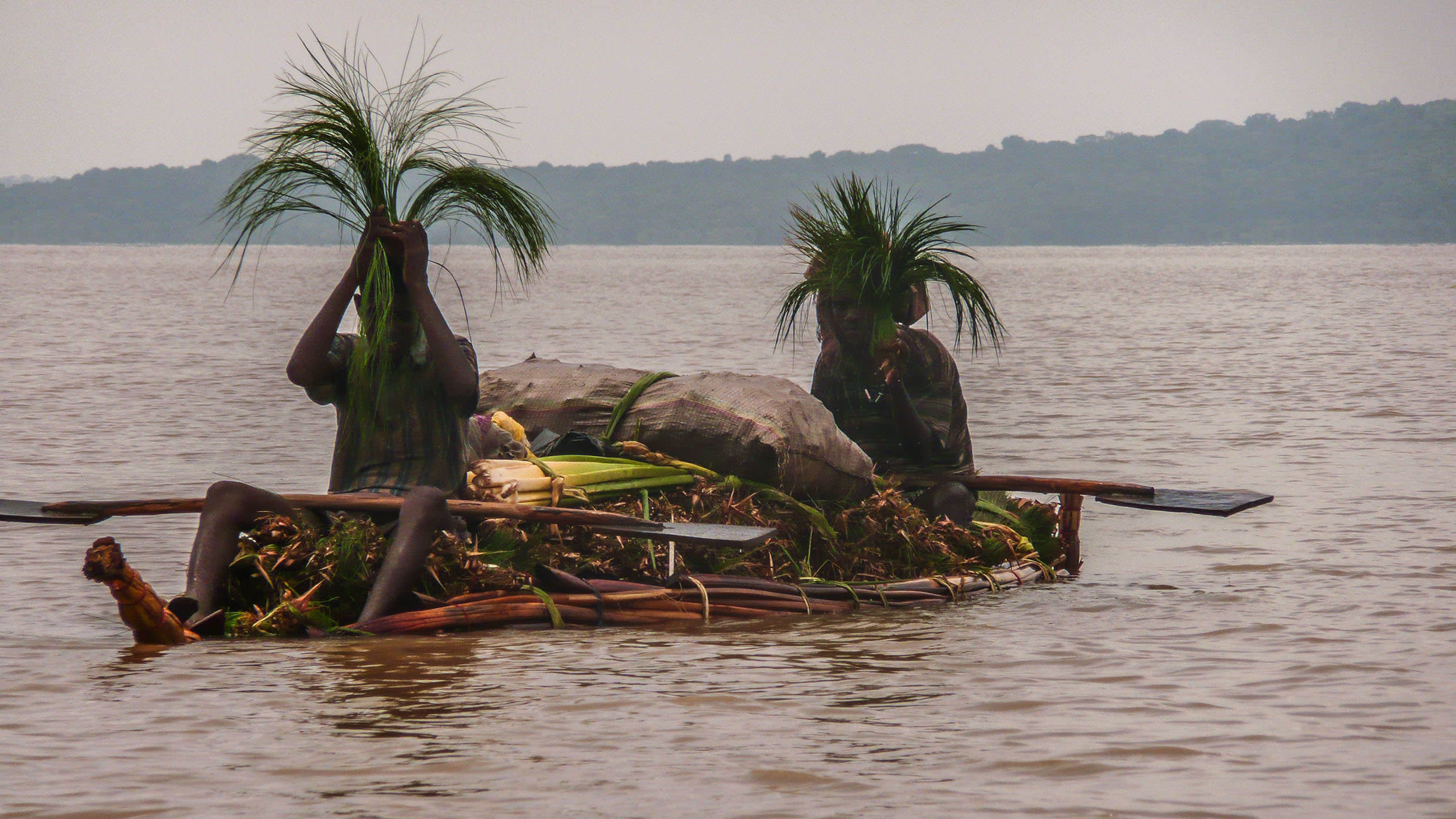
Like its siblings, there is a fee to pay at the entrance. Unlike Kebran (noted above), women here are permitted entry.
If you’re running short on time, this happens to be the closest island monastery to Bahir Dar and could be combined with one other island to form a short tour.
Blue Nile Falls (Tis Abay)
Near the starting point of the famous river that winds its ways to Khartoum (where it gets familial with its sister, the White Nile), the Blue Nile Falls see the enervated beast cascade over a 42-metre chasm.
The site was impressive, the sheer power throwing a heavy mist over the opposite bank where I stood, gradually saturating me to the core. It may not be Foz di Iguassu, but it's still worth a fraction of your time for the opportunity to witness the three-pronged waterfall create a powerful projection, and voyeuristically observe bucolic Ethiopian life in action.
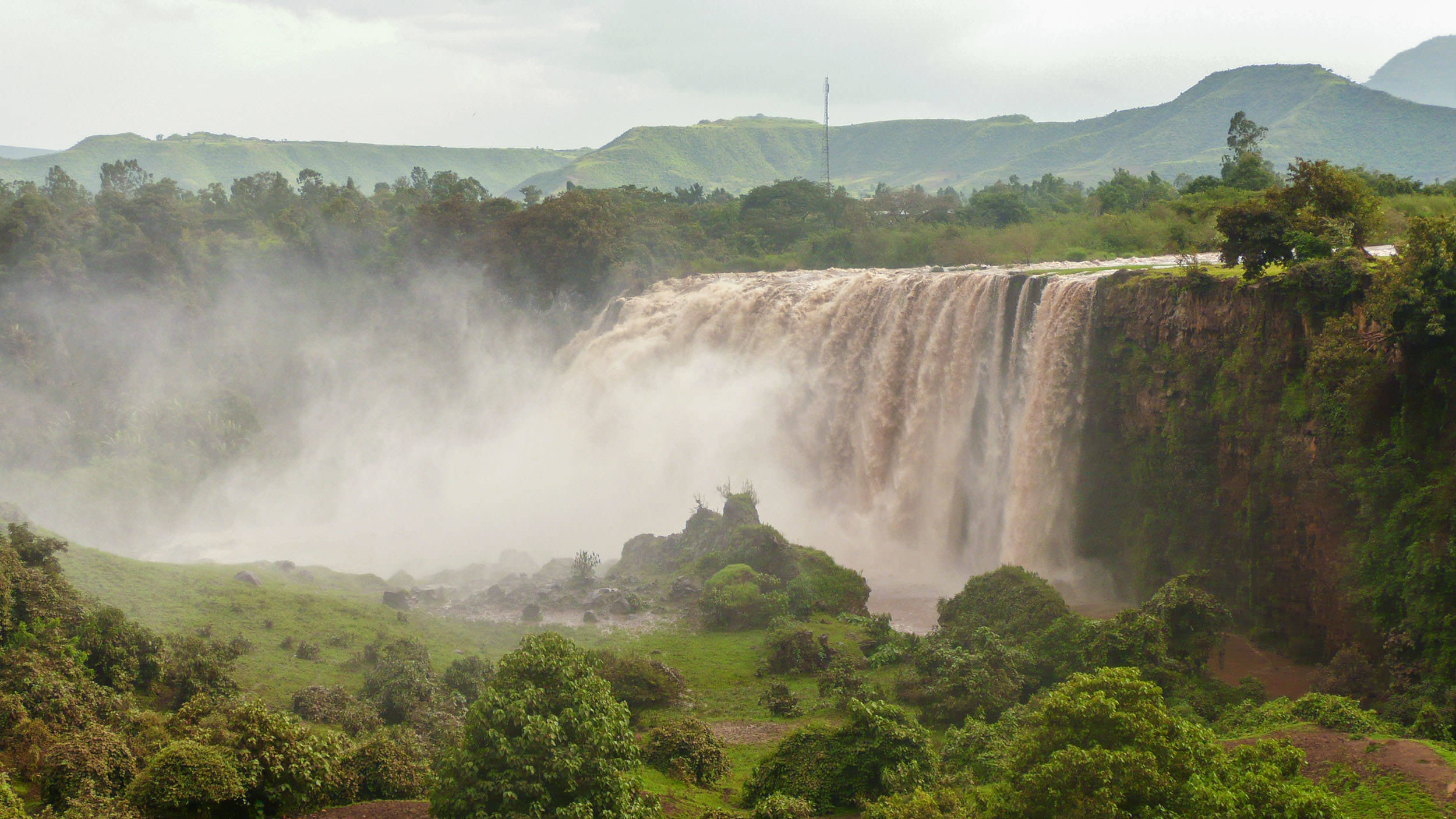
It was my first taste of agrarian Ethiopian life, and although most people generally exhibited smiles, their surroundings painted a diverse picture, of hardship and economic paralysis. Thought provoking at best, it triggered a melancholy that loomed overhead throughout my journey.
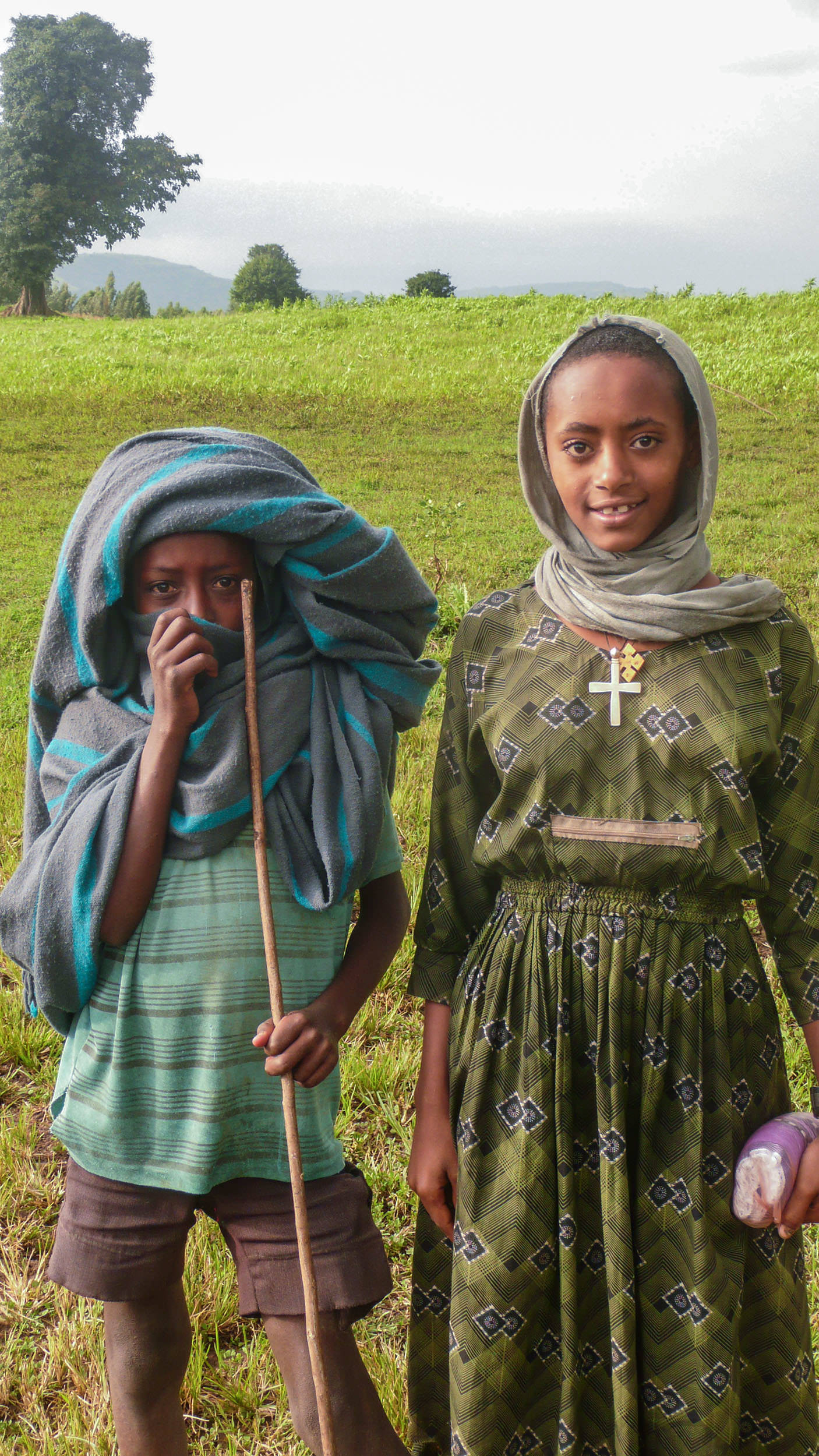
I was fortunate to snatch a cheap seat, at the final hour, in a shared minibus that had been hired by a group of American tourists (all of Ethiopian descent). I paid a nominal fee and was thankful for the opportunity to get to know new people and have two experiences in one day: a Lake Tana boat expedition and a Blue Nile Falls visit.
Otherwise, by public transport (a bus which arrives in the village of Tis Abay), I’d likely have had to do both excursions on separate days.
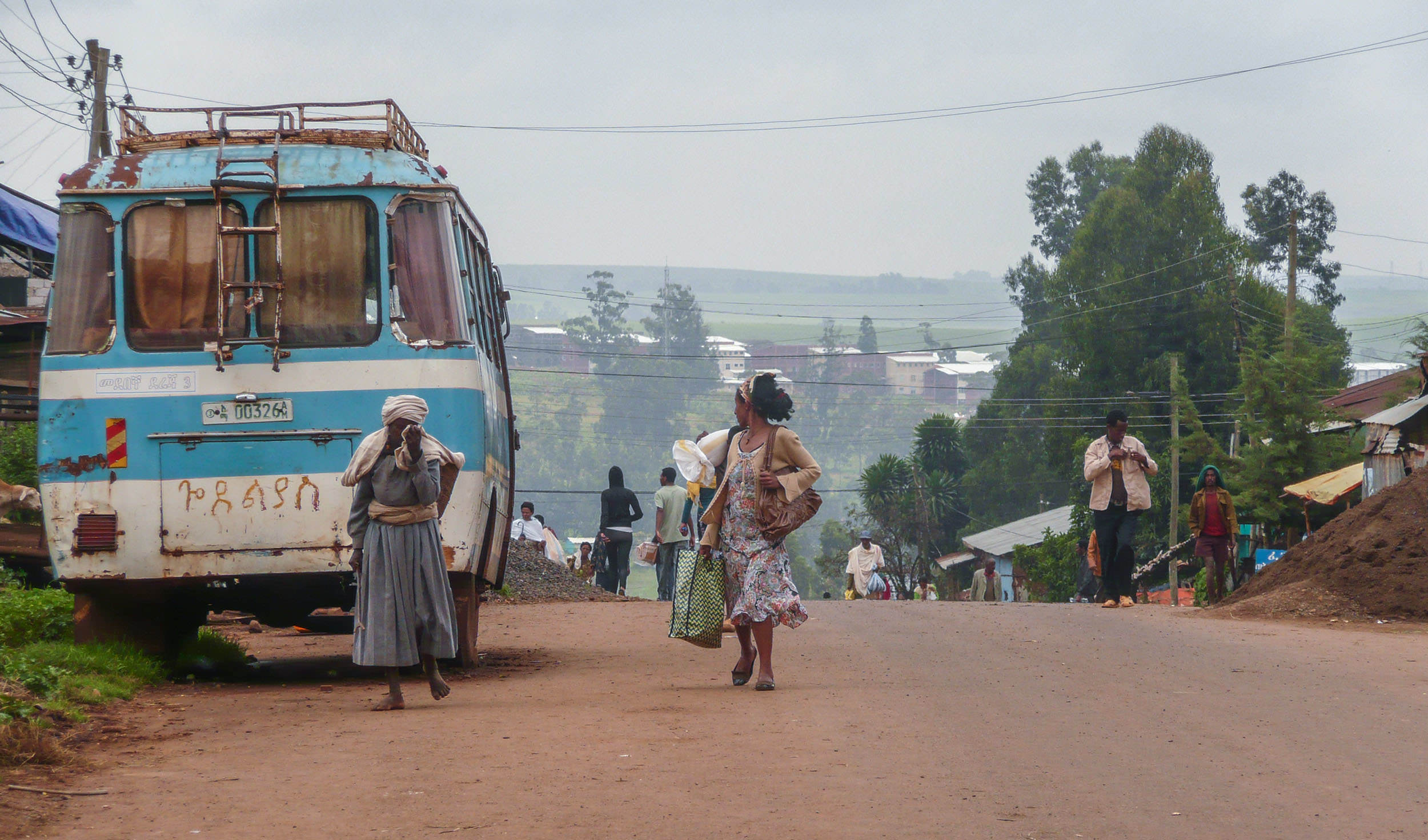
The falls create an explosion of water from August through September. During other parts of the year, it drops back to a drizzle.
Ask other travellers in Bahir Dar who have recently visited whether going is worthwhile, before taking the enduring road trip to the falls.
Staying in Bahir Dar - RECOMMENDED LENGTH OF STAY
The first day will be spent travelling by bus from Addis Ababa. The second and third days, therefore, can be utilised to visit the monasteries and the Blue Nile Falls.
Staying in Bahir Dar - ACCOMMODATION
There are several decent guest house options lining Tana’s shores. I chose Ghion Hotel and was generally satisfied. The mosquito net was a treasure given the hotel’s vicinity to the lake and its lair of malaria-filled mosquitoes.
Eating in Bahir Dar - RESTAURANTS
Sadly, the further away you travel from Addis, the worse the culinary options become. I ate at Bahir Dar Hotel and was fairly unimpressed.
Several days later, upon arrival in Gondar, I was diagnosed with typhoid. I’m not making a direct association, as the contaminated food could have been consumed anywhere I’d visited in the days preceding sickness, but please be very careful when selecting fodder throughout the country. Illness and disease are prevalent risks.
Getting Around Bahir Dar - TRANSPORTATION
There are three key options for moving around the flat city: Bajajs (rickshaws), bicycles, and on foot.
If sticking close to the lake, then moving around can easily be achieved on foot. It’s how I covered ground in Bahir Dar. However, when travelling further afield, choose one of the following two options:
They can be rented from guesthouses and bike repair shops, often for a fee between 20 and 50birr. The roads are flat and wide, so cycling makes sense.
They are three-wheel rickshaws and will get you almost anywhere in the city. They are 10birr for a private charter and are a way of moving like a local.
Getting to Bahir Dar - TRANSPORTATION
Ethiopian Airlines operates daily flights from Addis Ababa and Aksum.
By Land Bus
There are several destinations linked by bus to Bahir Dar. They include: Addis Ababa (Solomon Bus, 10 hours); Gondar; Lalibela (with a change in Gashina).
A minibus service links Addis Ababa (7 hours) and Gondar with Bahir Dar.
By Water Ferry
There is a ferry that crosses Lake Tana, from Gorgora to Bahir Dar (and vice versa). The passage takes two days.
GONDAR (GONDER)
It’s perhaps not the Ethiopia you have in mind: with a historical legacy of emperors and princesses, castles and fortresses, Gondar imparts more a feeling of the Arthurian world than Africa. Rich in antiquity and imperial historical legacy, you only need to walk through the banqueting halls of Fasil Ghebbi to slide into seventeenth century aristocratic shoes.
In and out of favour as the seat of rulership through the centuries, many of the historic buildings have not been maintained. However, most of the notable ones have survived, constituting Gondar one of Ethiopia’s most impressive antiquities.

Thanks to a diagnosis of typhoid on my first day in Gondar, the duration of my stay was longer than anticipated, and my meanderings through castle and palace grounds were performed at a languid pace.
Despite ill health, once through the worst of it, I mostly enjoyed the visit, and recommend including it on a North Ethiopia itinerary (especially for history buffs).
But visiting Gondar (despite being the place my ill health commenced) wasn’t always a bed of roses. I’m still confounded by the occasional lobule of saliva that landed on my feet, clearly directed at me by male passers-by. The looks of contempt I would receive, again from men, still makes me uncomfortable.
Ethiopians are proud people. With a legacy of independence, surrounded by neighbours all of whom have been victimised by colonisation, they have maintained their non-colonised status despite the abject poverty that ravaged the country in the 80s.
Seemingly, the pride can occasionally transpire as detest for foreigners. But most of the people I met were kind and helpful.
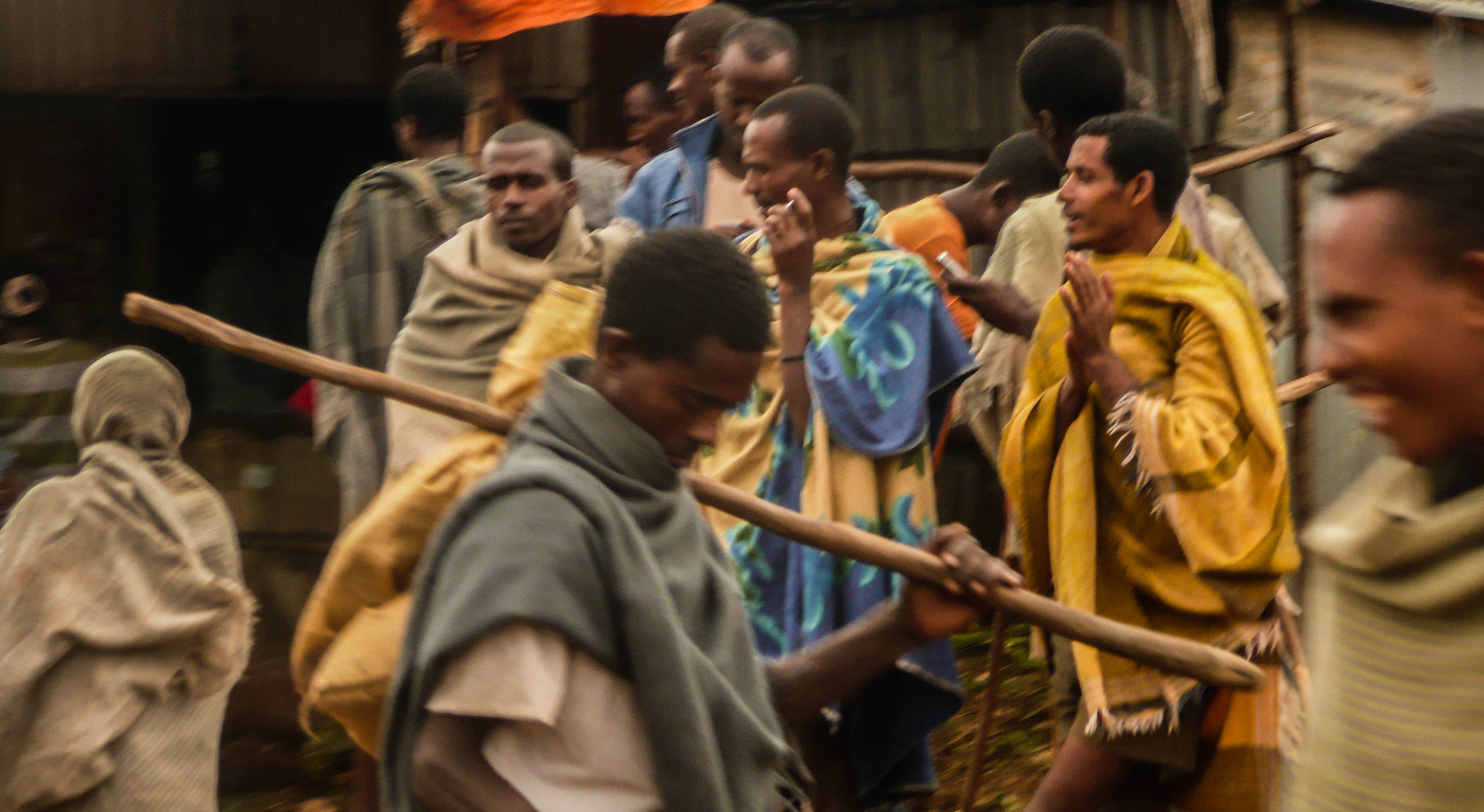
It should be noted that Gondar is a starting point for camping and trekking trips through the beautiful Simien Mountains National Park , a trip I was sadly unable to take in the end.
Research it separately for up to date information and trekking advice. It can feasibly be included as part of this three-week itinerary, particularly if you spend three days in the park.
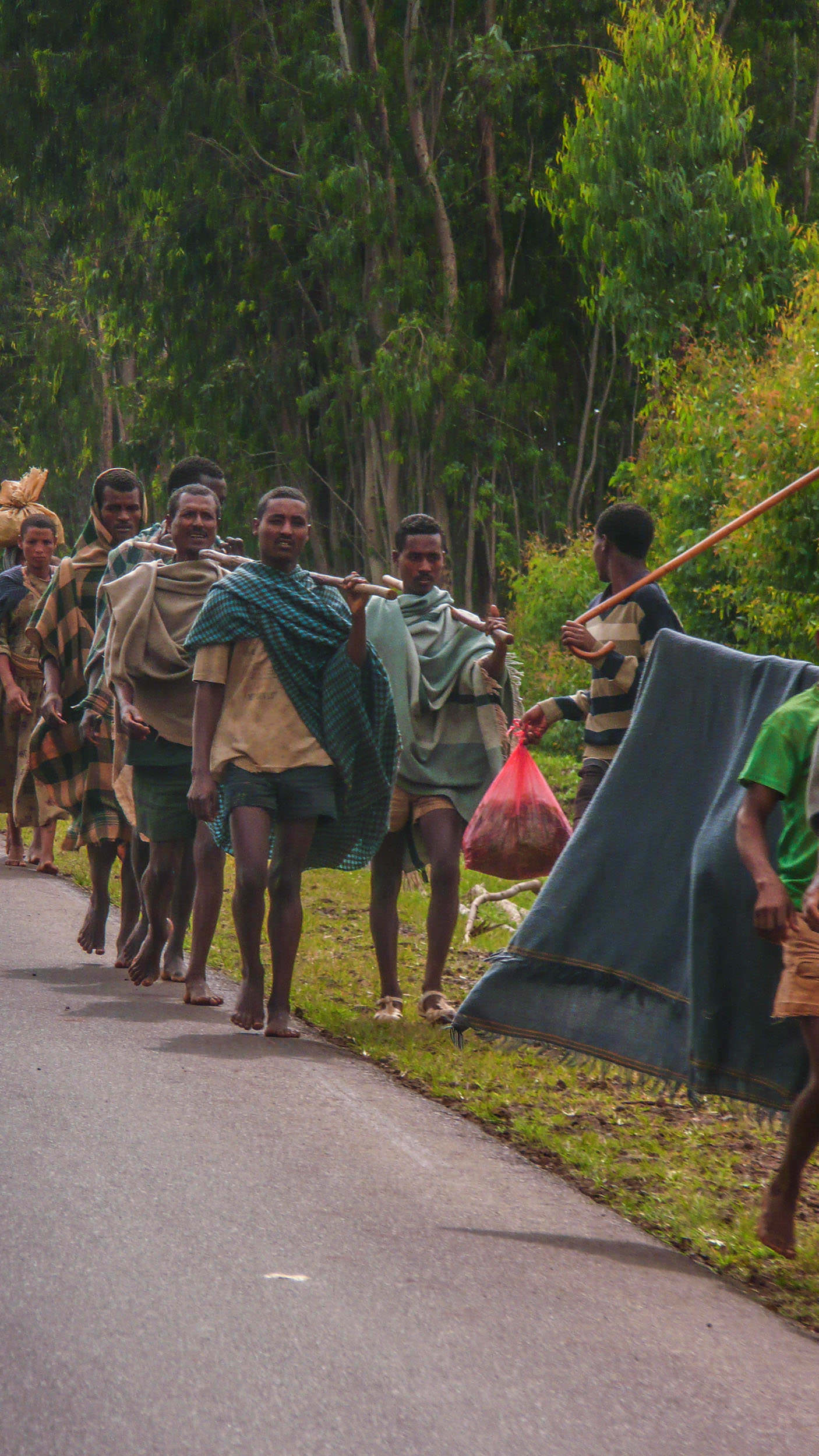
Royal Enclosure (Fasil Ghebbi)
A World Heritage Site, there are 70,000 square metres of castles, palaces and general antiquity to explore. Construction commenced in 1632 when King Fasilidas decided Gondar would become the Empire’s new seat of authority. It succeeded as such for 250 years and survived WW2 attacks in parts.
A day (or two) can be spent wandering through the grounds, stepping back in time to a regal part of Ethiopia’s history.
Using a local guide is advisable (for the reasonable price of Birr200-300), in order to gain the most out of the experience. Otherwise, meanderings can be performed solo (which is what I did), but expect to possibly get a little lost.
The following two features are the sites within the complex I saw (with limited energy reserves). There are far more features to the complex than those listed below, so please ask locally for further information when you arrive.
Fasiladas’ Palace
A short walk inside the entrance, it stands out at 32 metres, a building with mixed Indian, Aksumite and Portuguese influences. It’s an unusual fusion to behold.
Used for various purposes – dining, prayers, religious ceremonies, banqueting, bathing and living, a walk through the edifice showcases each respective area, along with frescoes and reliefs linking to the Solomonic dynasty.
Fasiladas’ Bath
Historically, it was used by royals as a place to swim, and for religious celebrations, the latter continuing to the present. Tranquil, the pool of water - surrounded by overhanging trees and overlooked by a charming building, is ideal on a hot summer's day for escaping the harsh heat. It’s a serene place and attests to the wellbeing ideals of Fasiladas and Iyasu I who likely initiated its construction.
It is two kilometres from the main piazza and a ticket must be procured at the Royal Enclosure entrance before making haste for the Bath.
Yenege Tesfa
Not part of the Royal Enclosure but still a valuable Gondar-based place to visit, Yenege Tesfa is a non-government organisation that provides homes for homeless and parentless children. The staff, comprised entirely of local faces, seek to transform the bleak outlook of children who have been disadvantaged and marginalised by large scale loss.
You can spend time visiting project sites or buying meal tickets and distributing them to children who still remain on the street. It’s a valuable enterprise, one I thoroughly enjoyed visiting, despite the sense of melancholy imbued by the miserable outlook of many of Gondar’s children.
Staying in Gondar - RECOMMENDED LENGTH OF STAY
Half of the first day will be consumed by travel from your prior destination (perhaps Bahir Dar).
To truly experience the city in its entirety, visiting a large section of the Royal Enclosure is necessary. One can easily pass two days traipsing through the antique buildings, with a little time at the end visiting a non-government organisation and resting.
Staying in Gondar - ACCOMMODATION
A few decent options exist for budget travellers. I found Genetics Guesthouse to be the best of the bunch. For me, it acted - in part - as a hospital bed, a place from which to be medicated for typhoid. It was very comfortable, clean and tastefully decorated.
Eating in Gondar - RESTAURANTS
I had little to no appetite thanks to the medication, however when I did venture out, I ate at Quara Hotel. The food was reasonable.
Getting Around Gondar - TRANSPORTATION
It’s a reasonably sized city, so getting far afield can be achieved by minibus or taxi.
They are blue and white, and travel everywhere. A ride shouldn’t cost more than 4 birr.
These are horse drawn, and are less common than the minibuses, but cost little more than 2 birr.
Getting to Gondar - TRANSPORTATION
Ethiopian airlines has services from Addis Ababa, Aksum, Lalibela and Bahir Dar to Gondar.
There are bus links from other major destinations to Gondar, including: Addis Ababa (two days); Bahir Dar (3 hours); Axum (11 hours with a change); Lalibela (two days); and Debark (for Simien Mountains).
A minibus service runs directly from Addis Ababa that takes a day.
AKSUM (AXUM)
Once the most powerful Kingdom between Persia and Rome, Aksum is home to some of the country’s greatest mysteries and most interesting archaeological ruins: monolithic obelisks; royal tombs; and ancient castles. A seat of power during the early Christian era from the first to the 10th century AD, its borders spanned a large portion of East Africa, including Eritrea, Djibouti and Sudan.
Claiming rights as the Queen of Sheba’s home, the resting place of the Arc of the Covenant and the burial place of a Wise Man (yes, one of the three), a walk through its tombs and palaces will set your imagination ablaze.
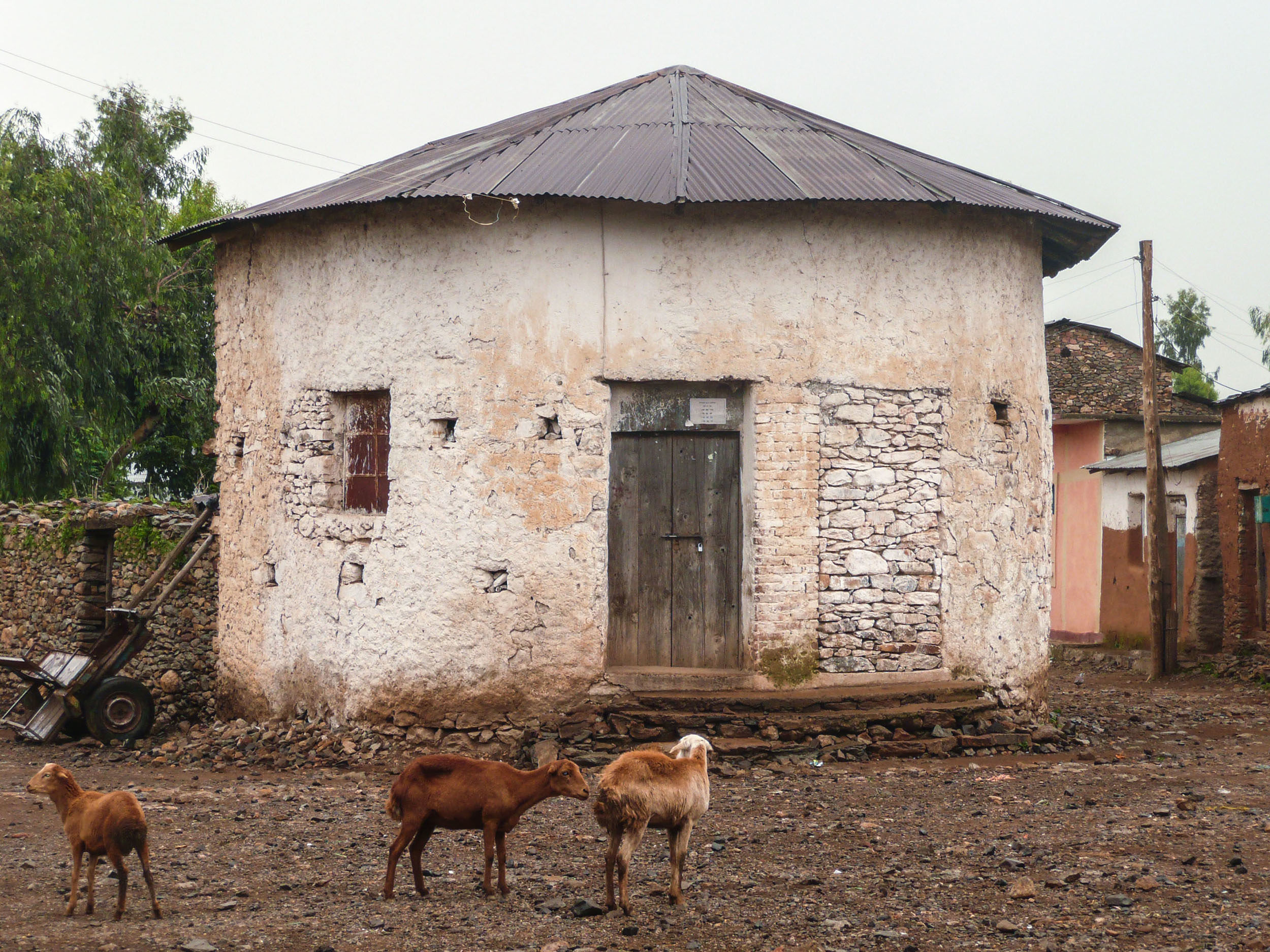
Despite beliefs contrary to several of the abounding ‘mysteries’, I employed the knowledge and local wisdom of a guide, who benevolently escorted me from site to site, explaining details as we dodged the likes of free roaming goats and cows. His enthusiasm and passion about Aksum and its supposed possession of the biblical Arc epitomised the general joie di vivre of the bucolic hub, often filled with pilgrims from all walks of life, abounding with the same level of conviction.

Even if you’re not Christian and have no ecclesiastical inclinations, a wander from site to site offers more than mere religious history: it’s an opportunity to get up close and personal with agrarian Ethiopians, a real glimpse into bucolic life in the northern-most reaches of the country.
Taking a voyeuristic glimpse of rural life in the farthest reaches of the country’s periphery is humbling, and emotionally confronting.
Peppering the landscape are many stelae, some as tall as 30 metres. Erected in the fourth century to mark the presence of regal – and less noble - tombs that lie underneath, a visit involves more than merely appreciating the architecture. Complete with elaborate decorations and secret windows and doors, the stelae (the proper term for obelisk) transport a little of the magic of the Aksumite Kingdom from the past to the present.
Whether I looked to the heavens above or the ground below, it was dizzying to consider other mysteries about the ancient civilisation yet to be uncovered.
Sadly, many of the tombs (once excavated) were pillaged, which left me with questions about the burial customs of the people.
Regardless, a wander through a stelae field is otherworldly.
St Mary of Zion Church
It is the purported home of the biblical Arc of the Covenant, its final resting place, at least according to Ethiopian Orthodox. The building itself, akin to its surroundings, is not a noteworthy structure. It’s the mystery, the story, the intrigue and the hysterical fervour created by fanatics – and the guide detailing the story with glee and pride – that make it a notable attraction.
I was not convinced, despite the animated gesticulations and persuasive argument vocalised by him. However, I enjoyed the experience.
Don’t forget to take a head covering.

King Bazen’s Tomb
It’s not as beautiful as some of Ethiopia’s monasteries, but it is (perhaps) more fascinating, at least from a historical perspective.
You see, it’s alleged that King Bazen was known as Balthazar, a man who lived during the time of Jesus Christ’s life on Earth (and is possibly one of the three wise men).
The tomb is crude, not built with masonry but rather hewn into rock. Despite its beauty deficit, the mystery in which it’s shrouded makes the trek to the site a worthwhile expedition.
Debre Damo Monastery
Due to continuing ill health (as a result of having had typhoid), I had neither the energy nor the disposition to visit the sixth century monastery. I wish things had been different.
Built at the top of a flat-topped mountain, getting to the monastery requires a 15-metre climb up sheer cliff face utilising only a rope (and your body strength). It’s not for the feint hearted ... but safely reaching the top would be a satisfying feeling.
It houses some exceptional manuscripts that date to the sixth century and it's one of the country’s oldest religious buildings.
I’m sorry ladies, but it’s secret men’s business at Debre – no women are allowed.
Staying in Aksum - RECOMMENDED LENGTH OF STAY
Two to Three days
The first day will be spent in transit from your previous point of travel.
The second day can be utilised to visit the stelae, church and tombs on your own or with a local guide.
Day three can be spent either visiting the sites you missed on day two and getting to know some locals or traveling to your next destination.
Staying in Aksum - ACCOMMODATION
Africa Hotel was my choice of lodging. It was clean and conveniently located. There were other guesthouses nearby.
Eating in Aksum - RESTAURANTS
I ate bland food at both Remhai and Abinet Hotels. There was nothing special to the cuisine, however it didn’t make me ill – a winner!
Getting Around Aksum - TRANSPORTATION
Aksum is small in dimension, so getting around can easily be achieved on foot . For sites a little out of town, take a minibus heading to another city, and ask to be dropped at the site. There are taxis , but they are expensive.
Getting to Aksum - TRANSPORTATION
Ethiopian Airlines schedules daily direct and non-direct (via Lalibela, Gonder and Mekele) flights between Addis Ababa and Aksum.
I flew from Gondar to Aksum due to ill health. It broke my $30 a day budget but saved me from the arduous 11 bus journey.
Shire is a common midpoint for bus services from Gondar (achieved in a day). There is a regular bus from Mekele (8.5 hours) and Adwa (6.5 hours).
Tigray is the church to Gondar’s castle. It’s all about ancient monasteries in hard to reach locations.
It’s also a place I failed to see thanks to poor health. I have every intention of returning, one day, when I’m again in Africa.
I would highly recommend considering it as a stop on your north Ethiopia escapades. The rock hewn monasteries and churches, akin to Lalibela (below), are apparently impressive as a result of their inaccessible positions towards the top of mountains, carved into cliff faces.
You could easily spend two days here, making this itinerary (including the stops below) a complete three-week trip.
Visiting Ethiopia's magical Lalibela is living and breathing history. Its soul is hewn in stone, alive with Christianity and lathered in layers of historical intrigue.
There is no ample preparation for the experience of seeing it in person: it’s breathtaking.
I’d read books and filled every fissure and fold of my brain with pictures of Lalibela’s rock hewn churches and beautiful panoramas. But stepping foot inside Lalibela was better than I could ever have imagined.
The most noteworthy sites, of course, are the rock hewn churches. However, don’t miss the opportunity to hike through the hills, particularly during the right season - the scenery and fresh air are invigorating (and kind of transcendent).

Rock Hewn Church – Biete Ghiorgis (St George)
The most impressive – and widely photographed – of the non-traditional churches is Biete Ghiorgis (or St George). Separated from the other 10 but connected by a series of trenches, it is considered by Ethiopian Orthodox to be a component of Jerusalem (either heavenly or earthly, I’m not entirely certain).
The other 10 are divided (five on either side) by a trench considered to represent the Jordan River, and the churches an element of Jerusalem.

It all dates to the 12 th century, to a King desirous of recreating the equivalent of the biblical holiest of holies.
Ideologies aside, the fact Biete Ghiorgis - and the other 10 - were hewn from solid rock during a time in which construction technology was limited, makes their existence inspiring. I struggled to comprehend the enormity of the work undertaken.
Its existence is testament to the ingenuity and ecclesiastical aspirations of devotees, particularly those of old.
Rock Hewn Church – Biete Amanuel (House of Emmanuel)
Located on the southern side of ‘The Jordan’ (a trench) is Biete Amanuel. Perhaps the most beautiful of the finely carved churches, it's a free-standing example of Aksumite buildings.
My guide for the afternoon indicated it may have been used as a royal chapel for the noblesse of the reigning Kingdom. Reaching a height of 11 metres, the monolithic structure radiates an impression of grandeur.
Preserved in its natural setting, it’s been declared a UNESCO World Heritage Site along with its 10 counterparts.
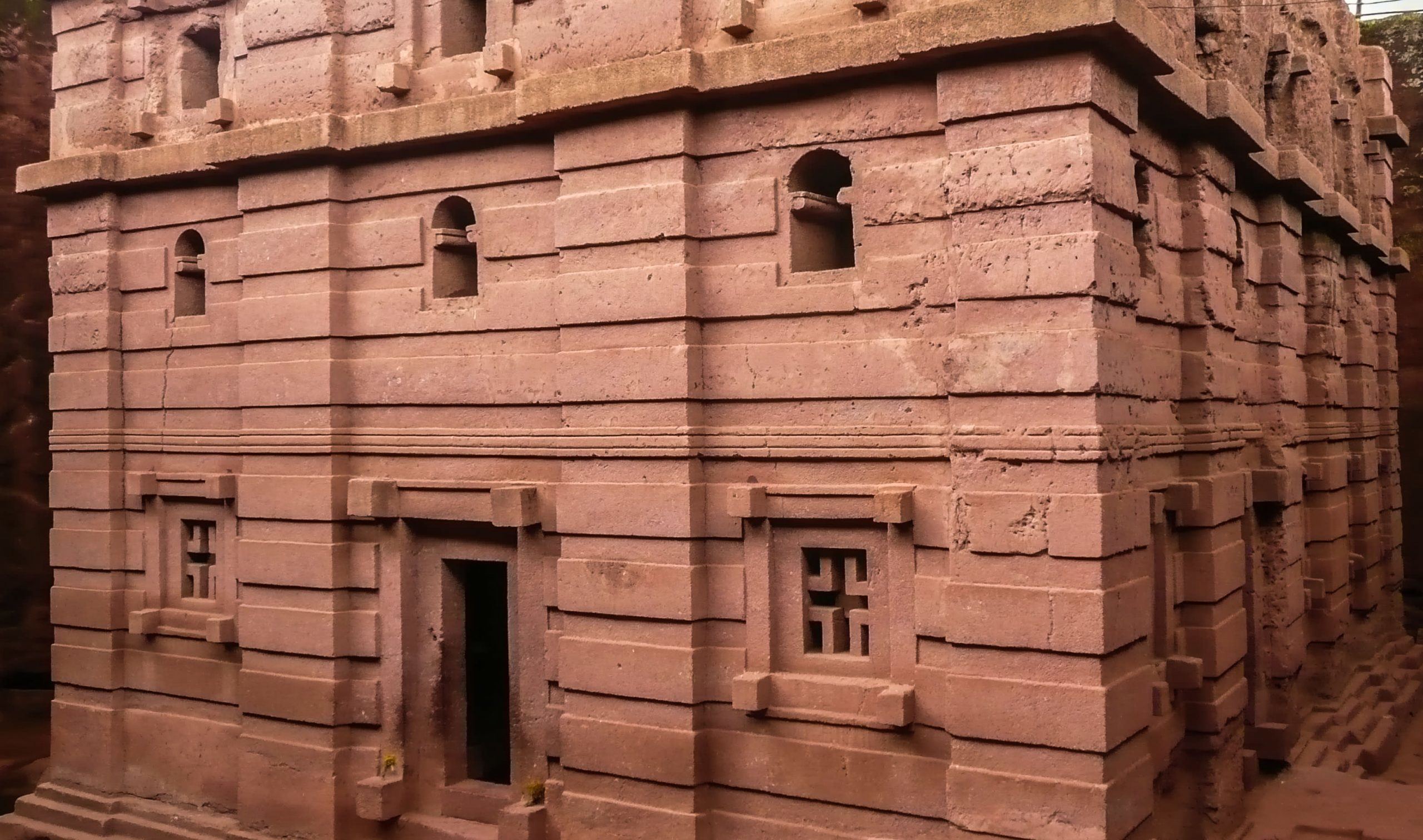
Rock Hewn Churches – the other Nine
I didn’t visit all of the churches. However, if you wish to see them, then knowing their names may help in your research.
Those to the ‘north of the Jordan’ include:
- Biete Medhani Alem (House of the Saviour of the World)
- Biete Mariam (House of Mary)
- Biete Maskal (House of the Cross)
- Biete Denagel (House of Virgins)
- Biete Golgotha Mikael (House of Golgotha Mikael)
Churches to the ‘south of the Jordan’ include:
- Biete Amanuel (House of Emmanuel, outlined above)
- Biete Qeddus Mercoreus (House of St Mercoreos)
- Biete Abba Libanos (House of Abbot Libanos)
- Biete Gabriel Raphael (House of Gabriel Raphael)
- Biete Lehem (House of Holy Bread)
And, as aforementioned, Biete Ghiorgis (House of St George) is isolated - but only by a short walk - from the others.
Hike into the Hills
Few things beat a walk through spectacular country scenery, stopping to greet agrarians en route to the summit of a nearby mountain.
I took the advice of staff at Asheton Hotel, who also kindly found me a guide, and vanished into the hills surrounding Lalibela for the better part of a day. Drenched in sunshine and filled to the brim with fresh air, I felt the illness from which I’d been suffering start to transpire. Fresh mountain flowers scented the wind as it caressed my cheeks, the aroma covering the stench of the animal paddies around which we walked.
The panorama a few hours out of Lalibela, particularly from Asheton Maryam Monastery, took away my breath and left me intoxicated by Ethiopia’s natural beauty.

There are local companies that can arrange guides, particularly if you want to embark on multi-day treks. I simply asked at Asheton Hotel, and they kindly arranged a local youth to guide me.
On my own, I likely wouldn’t have made it to the magnificent lookout he found, or the monastery. But you could probably go on your own, though it’s always advisable to take either a functioning phone with a reliable signal (and charged battery) or another traveller.
Trekking alone can be perilous, especially in a country in which you don’t speak the language, particularly one with limited reliable medical support.
Blue Lal Hotel for Injera
The hearty soul of Ethiopia, biting into the unleavened spongy goodness of injera topped with bean curry was otherworldly (particularly after the other food I’d been eating).
Lalibela is a little more tourist focussed than other major destinations in the north of the country, which can be both advantageous and disadvantageous. In terms of food quality, it was great: the fodder was always farangi-friendly, and tasty to boot.
At the Blue Lal Hotel, there are straw mats on which to sit while scooping the bold bean flavours with slivers of injera. They also offer cooking classes.
Staying in Lalibela - RECOMMENDED LENGTH OF STAY
Two to three days
Spend the first one to two days visiting the rock hewn churches near town and indulging on local fare. On the third day, take a hike into the surrounding hills and visit the monastery.
Sleeping in Lalibela - ACCOMMODATION
I stayed at the Asheton Hotel , and was spoiled with a quality guesthouse that boasts a large courtyard, clean rooms and a comfortable bed.
Eating in Lalibela - RESTAURANTS
There are several good options, including the Blue Lal and Seven Olives Hotels. Both serve quality dishes that are suited to farangi digestive tracts.
Getting Around Lalibela - TRANSPORTATION
The hike from one end of town to the other takes 25 minutes, a short walk more than a trek. Unless incapacitated, then getting around on foot is the mode of transport I recommend adopting in Lalibela.
NOTE: Children will beg for money, consistently, but despite the feeling of shame you may acquire in saying no, it is the practice recommended by locals. The begging is condemned by adults in Ethiopian society, as life’s basic commodities are free for all citizens (despite obvious malnourishment and poverty).
There are also scams the children utilise to con farangi out of money, also condemned by Ethiopians. Avoid giving money, if you can get past the feeling of guilt it induces. There are healthier ways to provide support that don’t encourage dishonest behaviour and instil diverse values.
I have always carried food when travelling in the developing world and offer it rather than money. It’s generally well received, wherever needed.
Getting to Lalibela - TRANSPORTATION
Ethiopian Airlines has scheduled daily flights from Addis Ababa, Gondar, and Aksum to Lalibela.
Disappointingly, this was the second (and last) flight I took in Ethiopia, from Aksum. I prefer overland travel as an opportunity to move as do locals, at least those who can afford a bus ticket.
It’s a little challenging, and convoluted. There is a bus from Addis Ababa, but it requires an overnight stop in Dessie. There is a link from Bahir Dar, but it requires a change in Gashena. From Aksum, the journey to Lalibela would take three days, with stops and changes in Mekele and Woldia. Ask lots of questions and be patient.
Driving into Dessie initially appeals to intrepid souls with a thirst for authenticity and trailblazing: perched on rolling hills, littered with rusty roofs and sans a Caucasian presence, it’s enticing. Who knows what treasures may be awaiting discovery?
Don’t be fooled. Dessie is possibly nothing more than a rural town with dusty streets and an insipid core.

But it is a common stop between Addis Ababa and Lalibela.
I wandered the streets and attempted conversing with local people, none of whom reciprocated my interest. In fact, I received glares of disdain. I got a touch of frost, and left after a day, returning to Addis Ababa for journeys elsewhere.
As such, I don’t have any recommendations regarding activities for Dessie.
ITINERARY FOR VISITING ETHIOPIA - CONCLUSION
There you have the (mostly) overground journey I undertook as a solo backpacker in Ethiopia, on a Cairo-to-Cape Town itinerary.
Every time I think about the journey - the good, the bad and the ugly - a sense of nostalgia takes over. I dream of the faces and the places, the contrasts and contradictions, and the magic and meaning.
Ethiopia is a place like no other. It’s where I gained a sense of the trailblazing the nomads of the 60s undertook, taking the road less travelled, pushing boundaries physically and personally, and seeing the world afresh, through new eyes.
Although I’m not the first person to have ever travelled to Ethiopia, nor the last, I was gifted the opportunity to be witness to a country and people relatively untouched by the merciless intemperance of tourism.
It’s real. It’s unattenuated. It’s as authentic as you can get.
ITINERARY FOR VISITING ETHIOPIA - NOTE
There are inclusions and exclusions you can negotiate to personalise the itinerary, depending on personal preferences. It can be done within the timeframes suggested, slowed down or even accelerated a little.
Getting to the south of Ethiopia as well as the north in three weeks would be a stretch, but not impossible. Ideally, for a full Ethiopia itinerary, four weeks (or more) would be ideal.
Please feel free to contact me regarding anything you’ve read in this article, and comment below.
Further Information
Getting to ethiopia - transportation.
For flights to Ethiopia, compare the following websites to locate the most reasonable fares:
- Sky Scanner
Ethiopia shares borders with Sudan, South Sudan, Kenya, Somalia, the separatist territory of Somaliland, Djibouti, and Eritrea. There are buses that go to the border of each listed country, then other buses that carry travellers to respective towns and cities within Ethiopia. For up to date information, see the following page:
NOTE: visas cannot be obtained at land borders for entry into Ethiopia. They must be procured beforehand at an Ethiopian Embassy or Consulate.
Getting into Ethiopia - VISAS
Requisite to a visit to Ethiopia is getting a visa. Almost all nationalities require tourist visas (when visiting for the purpose of tourism) except for nationals of Djibouti and Kenya.
Nationals of several countries (including Australia, New Zealand, Canada, the United Kingdom and the United States of America ) are able to get visas on arrival at Bole International Airport in Addis Ababa. It's valid for up to three months. The price is variable, so check the official immigration website for up to date prices (and information). Ensure you have the address and telephone number of your accommodation on hand as it will be required by the official who processes you.
Staying in Ethiopia - ACCOMMODATION
Consult the following websites for up to date information regarding prices and availability of accommodation throughout Ethiopia:
Spending in Ethiopia - CURRENCY
The currency utilised in Ethiopia is the Ethiopian Birr . Please refer to the following website for current and up to date exchange rates:
Soloing in Ethiopia - TIPS
Aside from ill health, I experienced few major issues while travelling alone through Ethiopia. In fact, I met some kind-hearted Ethiopian souls who took me under their wings, invited me into their homes and took me to dinner to ensure I felt comfortable and welcome.
Personal safety, based on the places I visited, was never an issue: there was never an imminent threat of danger (aside from some terrible and fast driving that made me feel unsafe as a passenger).
If you're okay with your own company, you'll likely be fine moving around the country on your own. There are relatively good transport links between the major towns and cities, those frequented by the majority of visitors. You'll either be on a bus or in a minivan, unless of course you decide to visit a far-flung corner of the country in which case you'll need to employ your savvy powers of navigation and negotiation. Therefore, chances are, at most times of day, you'll be surrounded by people, they being Ethiopian.
I didn't meet many other travellers during my trip which, for me, heightened the sense of adventure, piqued my curiosity more and forced me outside of my comfort zone just a little. I do enjoy mixing with locals wherever I go and this was the perfect opportunity to capitalise on cultural immersion.
To ensure you are okay travelling the country on your own (if you choose said style), I'd recommend :
- being open to engagement with the local population wherever you go - it'll help reduce feelings of loneliness that may arise;
- volunteering a while (which will help with the point above);
- transporting reading material or some form of entertainment with you for the long journeys and times when you are really on your own (as many Ethiopians in rural areas will not be able to communicate with you in English);
- maintaining an open-minded disposition particularly to new experiences wherever they present which will also serve to heighten intrigue and reduce the possibility of lonely thoughts creeping into your mind and heart;
- taking a mobile phone (that's unlocked) with you and buying a local SIM card (when in Addis Ababa) so that you can access the rest of the world if - and more realistically when - the need arises (such as times during which you are feeling isolated, frightened or lonely); and
- remembering that no experience lasts forever. If you do start feeling isolated, lonely or anxious, remind yourself that you won't be there forever. Focus on the good you've experienced, remind yourself of your aptitude for overcoming barriers by thinking of past experiences of success and stoicism and treat yourself to something nice and familiar (whether it be a Netflix movie, down time with a glass of red wine and a book or an ice cream savoured while sitting before beautiful scenery).
I truly hope you get as much joy out of visiting Ethiopia as a solo traveller as did I.
Africa, country guide, Eastern Africa, Ethiopia, guide, itinerary, solo travel, travel guide
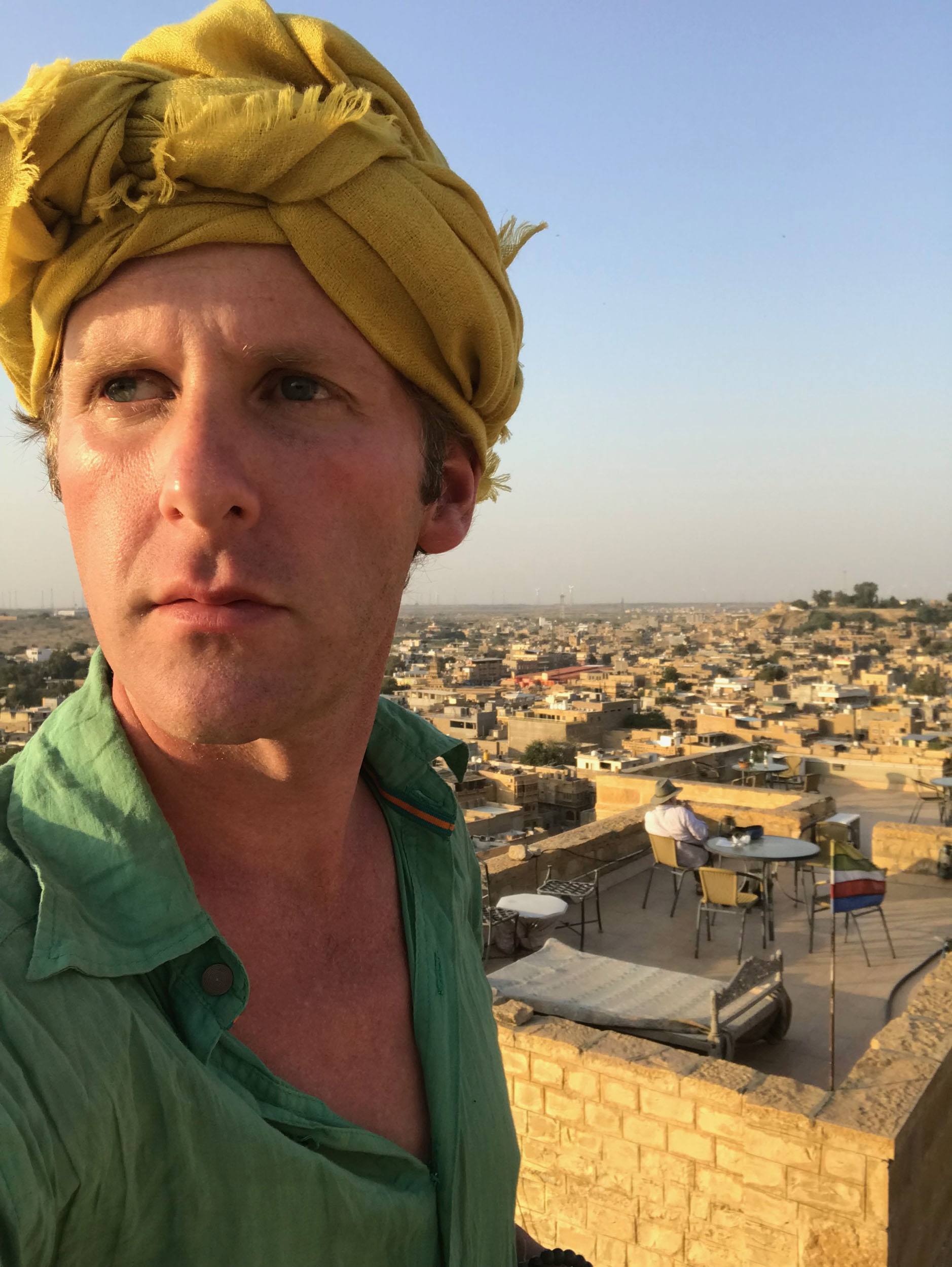
TRAVELLER, WRITER, PHOTOGRAPHER, Nurse
Ben, a seasoned solo traveller, writer, photographer, nurse, and health advocate, embarked on his global journey in 2003 at 18, transforming travel into his life's work and passion. His website reflects his extensive experience and insights, offering guidance on exploring the world uniquely and maintaining health while on the road.
You may also like
An epic 2-week uzbekistan itinerary: traversing the silk road, tanu: a modern indian woman’s resilience in the country’s evolving canvas, a thrilling white rhino walking safari in zimbabwe: wildlife encounters, an ultimate guide to visiting comoros – africa’s hidden gem, travel with me on instagram.

Session expired
Please log in again. The login page will open in a new tab. After logging in you can close it and return to this page.

Undiscovered Ethiopia: Abuna Yemata Guh in Tigray
Tigray, the northernmost region of Ethiopia, boasts over 100 ancient rock churches and a climb to Abuna Yemata Guh is a test of faith, writes Vivien Yap
“Put your feet in the exact spots as you’re told.” My friend Meron points out and I nod earnestly.
Balancing on a cliff face that plunges 400m (1,312ft) into the valley floor below, I clasp my fingers tightly into the wind-worn sandstone holes that are barely big enough for a tennis ball. Given the dire situation that I’m in, I listen to every instruction like it is God-given wisdom.
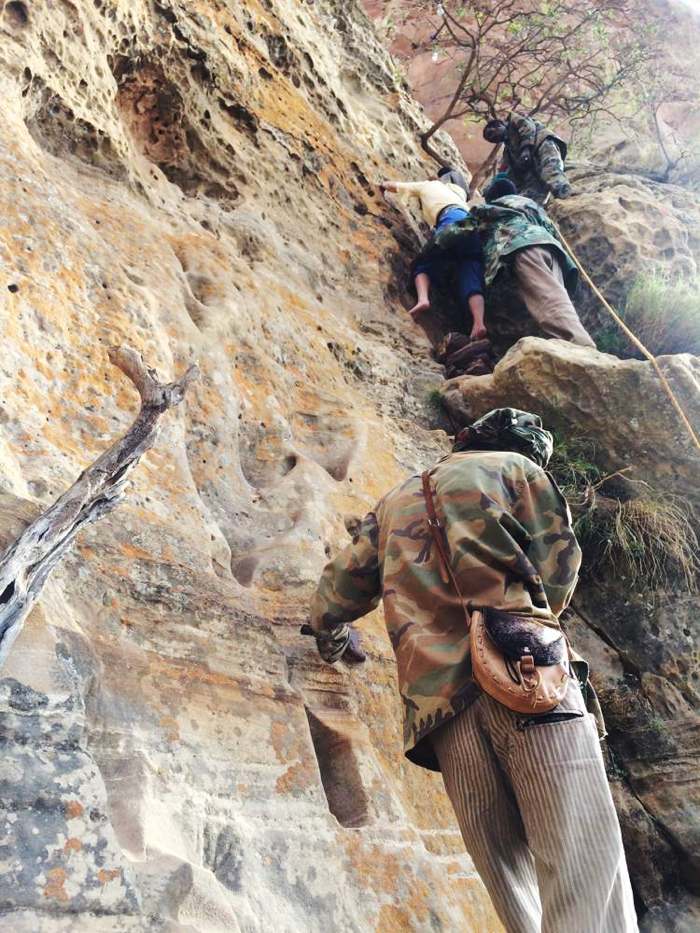
The hair-raising 10m vertical climb, locals don’t use any rope but without it, we city folks wouldn’t have made it. Vivien Yap
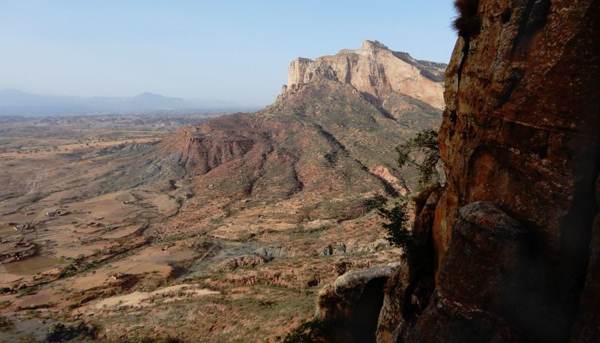
Sensational views from a midway point. Vivien Yap
The local guides are superb. They move so swiftly, defying gravity like experts of some rare kung fu technique. “Right hand here, left foot there,” they say, delivering their simple but precise instructions while pointing to the right places. Slowly but skilfully, they help me and my friends make it to the ancient rock church at the pinnacle of the towering cliff.
The church is Abuna Yemata Guh, made famous by the BBC documentary “ The most hardcore baptism you’ll ever see ”. I am not here to be baptised, nor seeking to be closer to God, but all words fall short when I enter the small church that is hewn from the surrounding rock.
Standing in the middle of the dimly-lit room is the priest, a man with almond-shaped eyes and a soothing warmth that makes you feel instantly at ease. Ethiopians have an incredible ability to make visitors feel welcome without saying a single word; it’s most extraordinary. I don’t know why but I mumbled Hallelujah when the priest came to greet me – he understood, which made me grin from ear to ear. It was as if I had grown wings and now soared up to the clear blue sky.
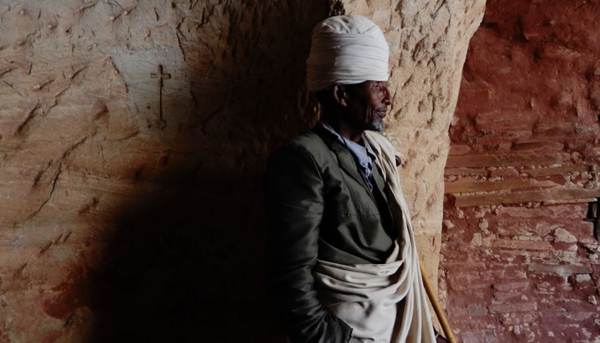
The kind priest of Abuna Yemata Guh standing by the door. Vivien Yap
The church is dedicated to Abuna Yemata, one of the nine Saints that came from Syria to the ancient Kingdom of Aksum in present-day Ethiopia. It’s said that the church was built in the 6th century.
As a typical Ethiopian Orthodox church, it is divided into three areas – a small section for music, a hall for Holy Communion and a sacred room holding a replica of the Ark of the Covenant. Ethiopians believe that their legendary Queen of Sheba went from Ethiopia to meet King Solomon in Jerusalem and bore him a son, King Menelik I. The king was raised in Ethiopia but later travelled to Jerusalem to meet his father. When he returned to Ethiopia, he brought with him the Ark of the Covenant. Today, every Orthodox church in Ethiopia has a replica of the Ark.
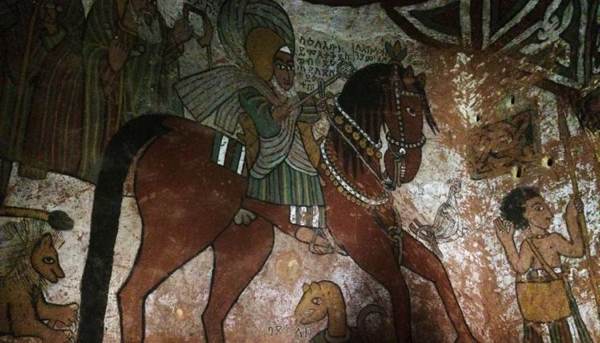
The mural of Saint Abuna Yemata riding a horse Vivien Yap
The Holy Communion area of Abuna Yamata Guh is richly decorated with amazing murals that depict the lives of the nine Saints. Many of the murals are still in their original near-perfect condition, mainly because of the low humidity and the shelter from sunlight the church provides.
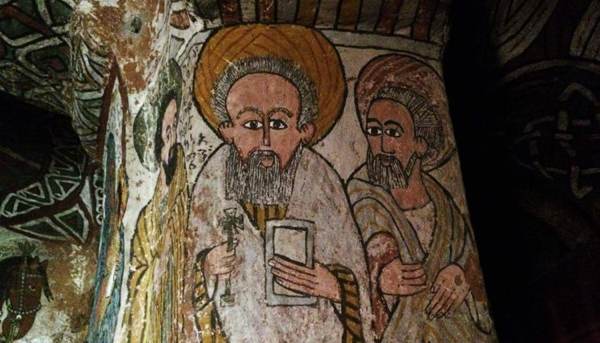
Another excellent mural inside the church Vivien Yap
Every Sunday, about 80 worshippers make the two-hour climb to attend the church service – this, I must say, puts me to shame. I can’t even make it to church regularly despite the nearest one being only a 15 minutes’ walk from my flat in London.
The holy book Teamre Mariam (Miracle of St. Mary) is one of the many miracle books that the priest would use to preach to his congregation. The book is made of sheepskin, its texts and pictures drawn in natural inks gathered from flora and fauna.
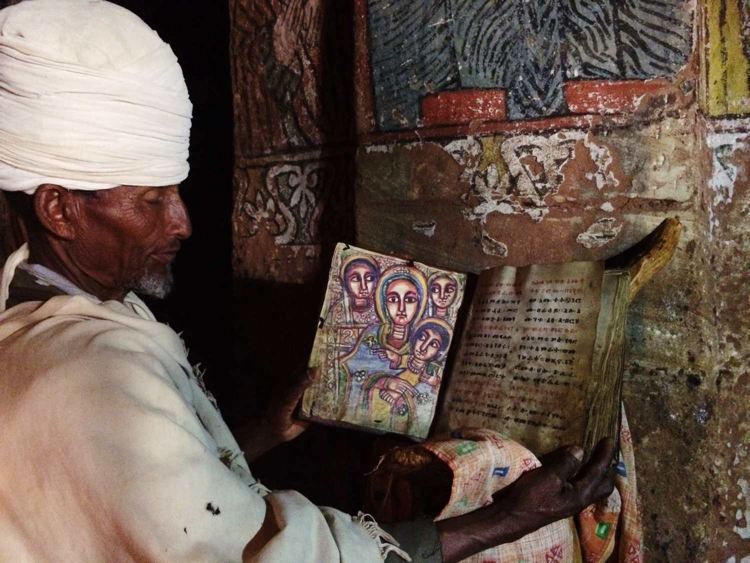
The holy book Teamre Mariam (Miracle of St Mary) Vivien Yap
As the sun begins to lower into the horizon, we say goodbye to the priest. The journey down is equally as terrifying as the ascent, but my footsteps are light and my heart is full. Making it to the amazing Abuna Yamata Guh is like seeing God’s holiness; it feels as if something beautiful and divine is being revealed to you with each step you take.
Ethiopia has many hidden gems which will delight any cultural buff, and a trip to the Tigray region will not disappoint.
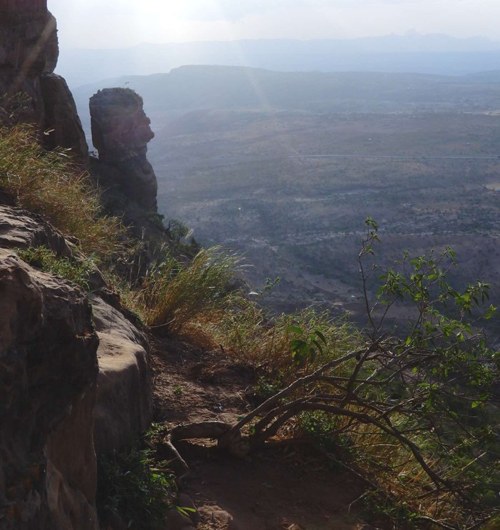
An evening view of the escarpment and the valley below. Vivien Yap
Getting there
Fly with Ethiopian Airlines to the capital Addis Ababa and save on domestic flights within Ethiopia.
Ethiopian Airlines has regular flights to Addis Ababa from many global destinations including Chicago , New York , Los Angeles and Toronto in North America. The airline also flies to major European capitals such as Brussels , London , Paris and Stockholm . From Asia, you can take Ethiopian Airlines to Addis Ababa from Bangkok , Beijing , Kuala Lumpur , Seoul and Singapore .
The church sits in the Gheralta range, which is a treasure trove of ancient rock churches (120 of them altogether). To get there, take a domestic flight from Addis Ababa to Mekelle (journey time: 1 hour and 20 minutes). You can arrange for your local guide to meet you at the airport or hire a driver from Mekelle to the Gheralta range (journey time: 2 hours). Then you need to hike for another 2 hours up the escarpment (including a 10m vertical climb) to reach Abuna Yamata Guh. It’s best to make the climb early in the morning.
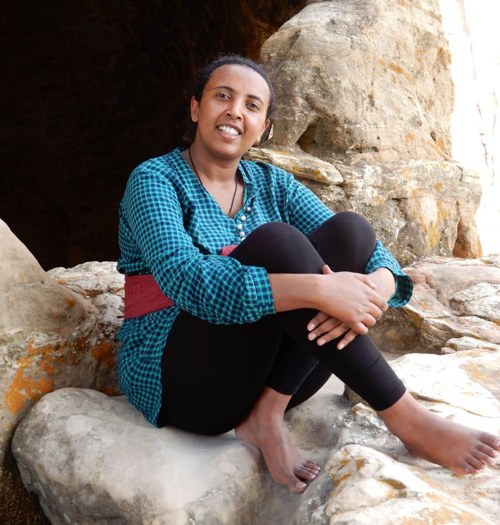
My friend Meron from the Ethiopian Tourism Organisation Vivien Yap
Getting a local guide
Gebre Wmariam is an excellent guide who can take you to the church (and other churches) around the area safely. He also runs trekking tours around the area. Email him at [email protected] or call +251 (0) 914 539 845.
Accommodation
You can find local accommodation in Gheralta, or you can also stay in Wukro Lodge , an eco-lodge outside of Mekelle.
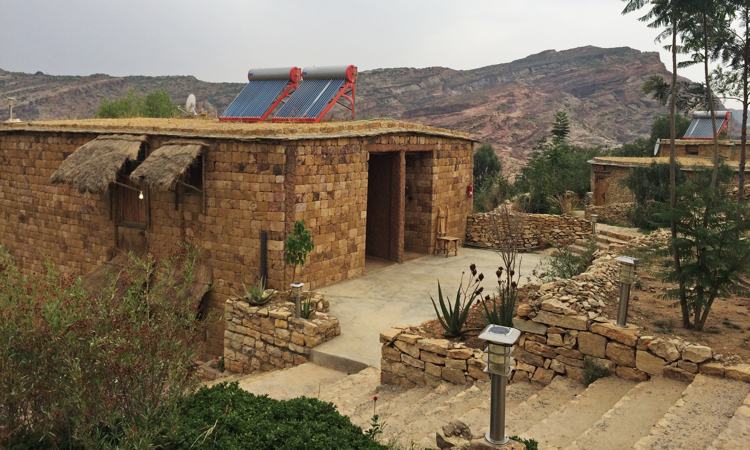
One of the buildings in Wukro Lodge Vivien Yap
Before you go, check out:
- Ethiopia travel guide
- Visa requirement to Ethiopia
- Healthcare and vaccination required to Ethiopia
If you liked this article, you might also like:
- 22 things you must know before visiting Eilat
- 22 reasons why you should fall in love with Estonia
- UNESCO World Heritage Sites
LATEST ARTICLES

© Columbus Travel Media Ltd. All rights reserved 2024
News for Kids
- Dominican Republic
- Netherlands
- New Zealand
- Papua New Guinea
- Philippines
- Puerto Rico
- South Africa
- South Korea
- Switzerland
- United Arab Emirates
- United Kingdom
- United States of America
- 7 Continents
- Australia/Oceania
- North America
- South America
- Chinese New Year
- Elections 2024
- Olympics 2024
- European Union
- Trivia & Quizzes
- Solar System Quiz
- Travel Reviews
- Travel Health
- Travel Links
Competition 2024
- Winners 2023
- Winners 2022
- Winners 2021
- Winners 2020
- Winners 2019
- Request A Correction
Ethiopia Facts
Ethiopia facts for kids.
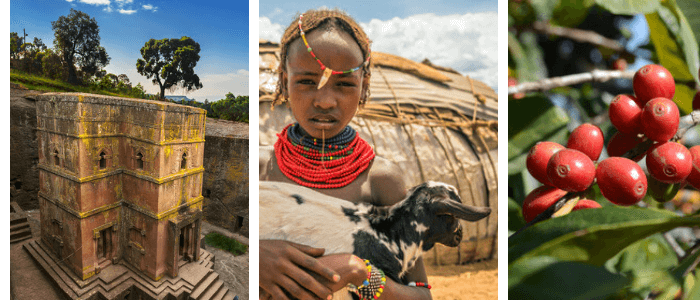
Here are some interesting Ethiopia facts which were chosen and researched by kids especially for kids.
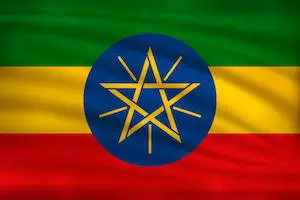
- Population : 126 million people (2023)
- Capital : Addis Ababa with 5.4 million inhabitants
- Name : Ityop'iya (Ethiopia) . The name is said to come from the founder of the kingdom of Aksum . The country was referred to as Abyssinia previously. Other sources say the name stems from the Greek word Aethiopia which in ancient times was used to refer to the land to the south of Egypt.
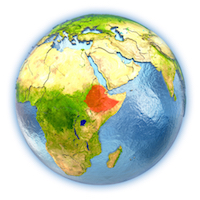
- Government : Federal Parliamentary Republic
- Language : Amharic
- Religion : predominantly Christian 61% (Ethiopian Orthodox 43% and Protestant 22%), Muslim 31%
- Currency : 1 Birr = 100 Santim
- National Day: 28 May (Derg Downfall Day)
- National Animal : Abyssinian lion
- National Colours : green, gold and red

- National Flag : Three bands in green, yellow and red with a blue field/circle in the centre of the flag with yellow pentagram and five rays of light
- National Anthem : 'March Forward, Dear Mother Ethiopia.' Listen to the instrumental version.

- Prime Minister : Abiy Ahmed, winner of the 2019 Nobel Peace Prize
- History : Ethiopia is the oldest independent country in Africa and the only African country that evaded colonial rule . For five years from 1936 - 1941, Ethiopia was occupied by Italian forces. The country was ruled as a socialist state by a Military junta from 1974 - 1991. Only in 1994, Ethiopia adopted a constitution and the first elections with participation of several parties took place in 1995.
Ethiopia Facts | Ethiopia Map
On the map you can see the neighbouring countries and the central location of the country's capital city Addis Ababa.
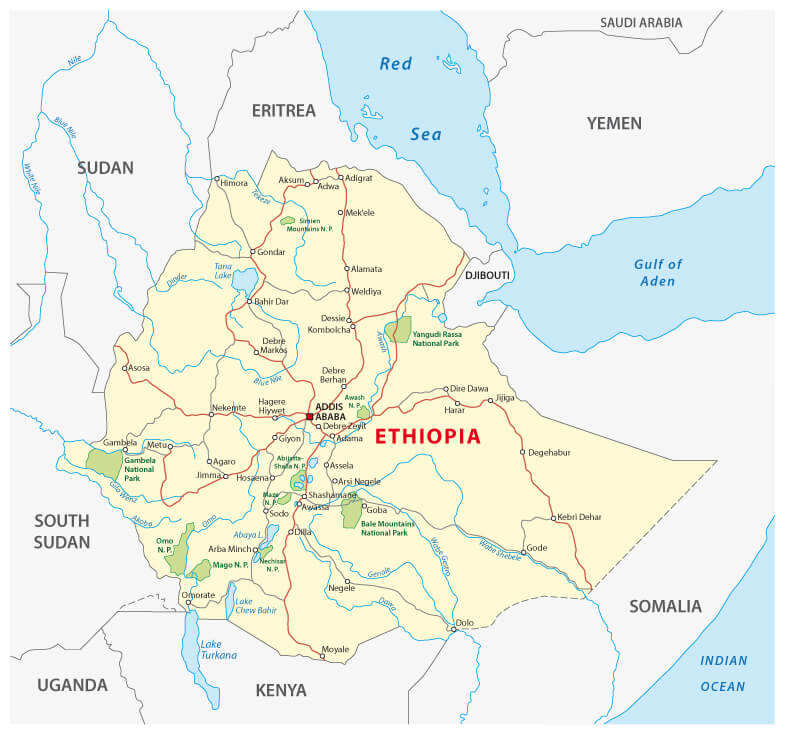
The country is located on the African continent in a central and eastern position on the Horn of Africa. Ethiopia is a landlocked country and its six neighbouring countries are:
- Eritrea to the north and Djibouti to the northeast,
- Somalia to the east,
- Kenya to the south and
- South Sudan and Sudan to the west
Ethiopia is a 4 hours flight from Dubai and 8 hours flight from London/UK, 15.5 hours flight from New York/USA.
Ethiopia Geography
Ethiopia is roughly twice as big as Texas/USA or five times the size of the UK.
The country entirely lies within the tropical latitudes, thus the lowlands have tropical savannah or desert climate while the higher mountain plateau experiences a more temperate climate.
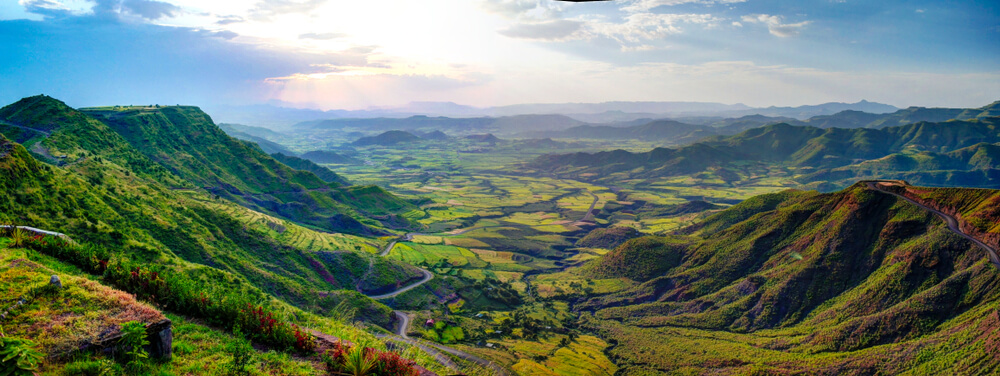
- Some more Ethiopian geography facts:The country partly lies on a high plateau with a central mountain range and is divided by the Great Rift Valley .
- Ethiopia's highest point is Mount Ras Dashen , with 4,533 m or 14,872 ft. Mount Dashen is also one of the highest mountains in Africa.
- The lowest point in Ethiopia is the Danakil Depression which is 125 m/ 410 ft below sea level. This is the hottest place on our planet, considering the average annual temperature!
- Ethiopia's longest river is the Blue Nile (which is called Abay in Ethiopia). Below you can see the mighty Blue Nile Falls.
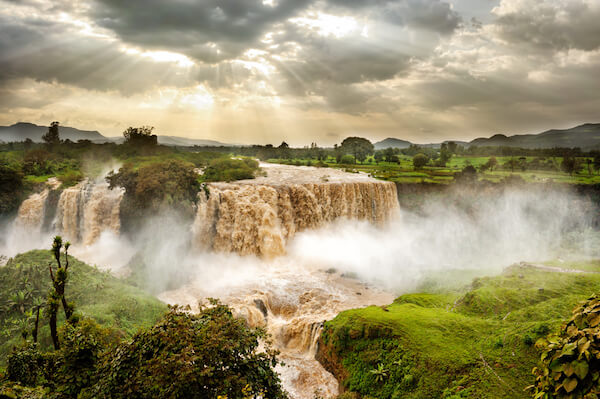
- The river has a length of 2,574 m or 8,444 ft and originates in Lake Tana.
- Ethiopia's largest inland lake is Lake Tana .
- Ethiopia is the second most populous country in Africa and also the most populous landlocked country in the world !
- There are eight UNESCO world heritage sites in Ethiopia with Simien National Park and the Lalibela rock-hewn churches the oldest acknowle dged heritage sites in the country. Read about the heritage sites here.
Ethiopia Facts Tourist Attractions in Ethiopia
- Lalibela : The rock-hewn churches are probably the best known attraction of Ethiopia. Here eleven medieval churches were cut and carved out of rock. It is said they were built under King Lalibela who called them 'New Jerusalem' as at that time in the 12th century the Muslims had stopped the Christians from their pilgrimage to the holy land.
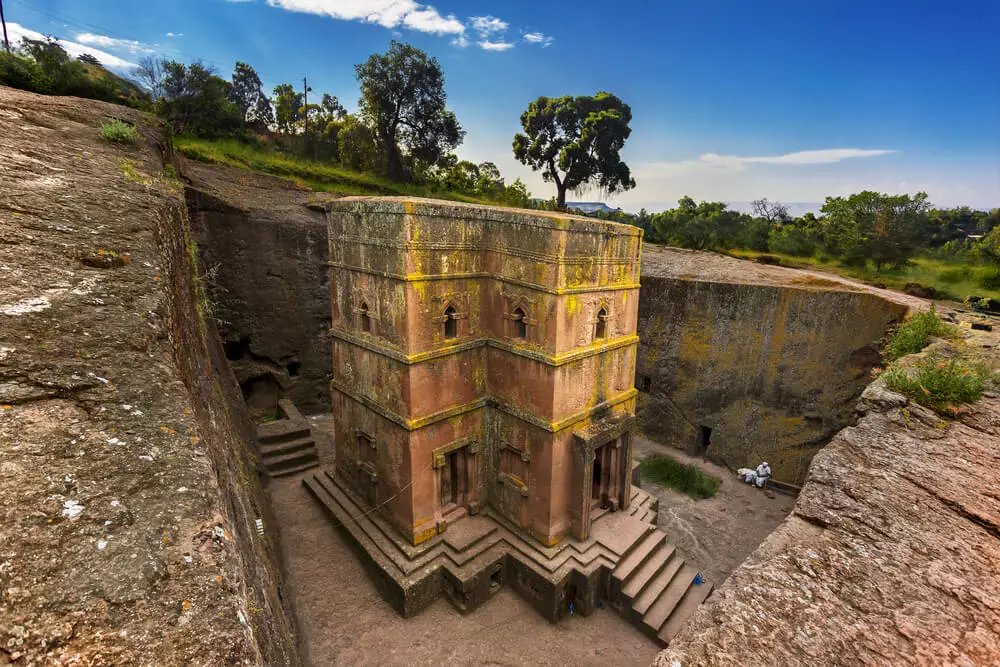
- Addis Ababa : Ethiopia's capital is a quickly growing city and the country's largest city and main commercial centre. The name in Amharic means 'new flower'. In Addis Ababa you find the world's largest market, as they say, it is called merkato . In the city you must also visit the National Museum, where there are the world's oldest fossils of a hominid: Lucy , in Amharic called Dinkinesh . The bones were discovered in Ethiopia in 1974 and are thought to be 3.2 million years old.
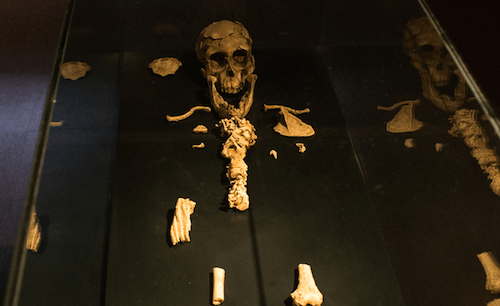
- Omo Valley is home to several indigenous groups where traditions are upheld. The Omo River basin is one of the UNESCO world heritage sites due to fossil and tool finds that date more than 2.4 million years!
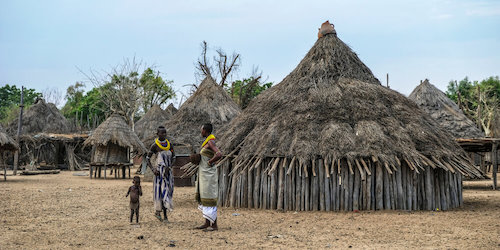
- Gondar Castle: This building is als o called Fasilides Castle as it was built by Emperor Fasilides in the 17th century. Gondar was then an important agricultural and trade centre in Ethiopia.
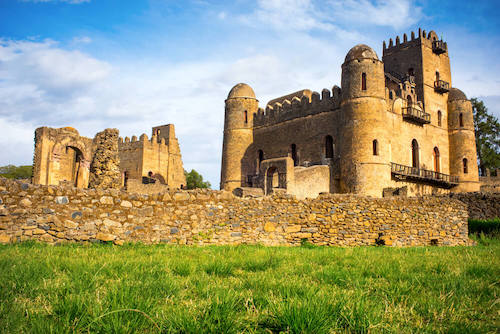
- The Blue Nile Falls is one of Ethiopia's big attractions and are a must visit when in Bahir Dar, one of Ethiopia's biggest cities.
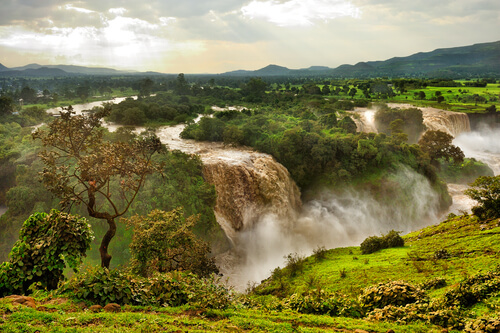
- Simien Mountain National Park : This national park in northern Ethiopia offers breathtaking views of the highland landscape. The plateau with mountain peaks up to 3,600 m/ 11,800 ft are quite a contrast to the much lower escarpment as there are steep cliffs and canyon-like gorges.
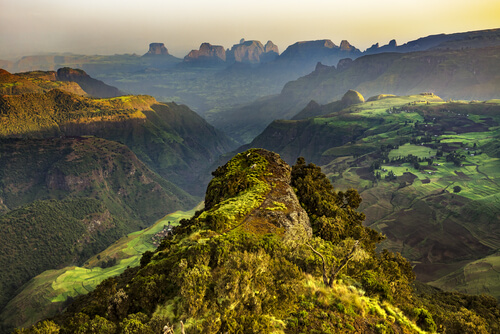
Ethiopia Economy | Ethiopia Facts
Ethiopia is one of the poorest countries in the world, but is also one of the promising countries due to changes in the country's leadership and efforts to combat poverty and increase the education levels in the country.
The economy in Ethiopia is mainly driven by agriculture and fisheries due to the favourable climate in many regions and the many rivers of the country.

Coffee is the biggest export product of Ethiopia. Other exports include oilseeds, vegetables and gold. The main export partners are Sudan, Switzerland and China.
Mining plays a role in Ethiopia as well. The main resources are gold and tantalum, a metal which is used in electronics. Rock salt is mined as well as is marble.
The energy used in Ethiopia is firewood and charcoal, but more and more also hydroelectric power stations are built which however also threaten the homes and traditional lifestyle of the rural people.
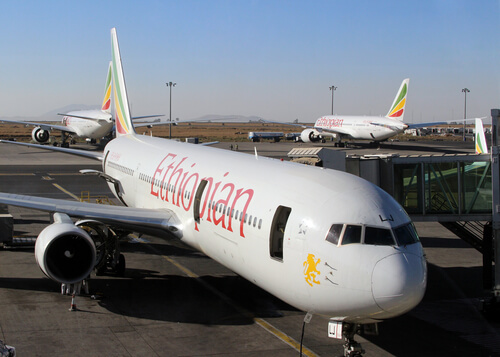
Did you know that Ethiopian airlines are the largest African airlines?
The major cities in Ethiopia are Addis Ababa, Dire Dawa, Mek'ele, Gondar and Bahir Dar.
Ethiopia Facts | Ethiopia People

Ethiopia is the second most populous country in Africa - after Nigeria. Most people live in the highlands in the northern and western parts of the country.
Ethiopia was affected severely by drought and famine in recent years. In 2016, Ethiopia experienced the worst drought in 30 years and many people fled from the affected areas.
Only one in five Ethiopians live in urban areas, such as the capital city or in larger towns. Most people live in rural areas and work in agriculture.
The eastern parts of the country are only sparsely populated. In rural areas many people live in traditional huts.
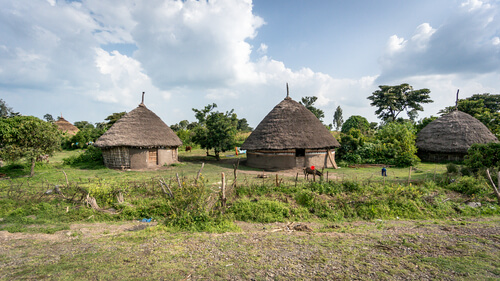
Ethiopians are very religious people and most of them practise their religion regularly. More than half of the population are Christians and mostly follow the Ethiopian Orthodox Church which is one of the oldest Christian churches in the world.
Although not as dominant in Ethiopia, more than a third of the population follows the Islam teachings. The vast majority of Muslims live in the eastern lowlands of the country while most Christians live in the northern highlands but their influence is more obvious countrywide.
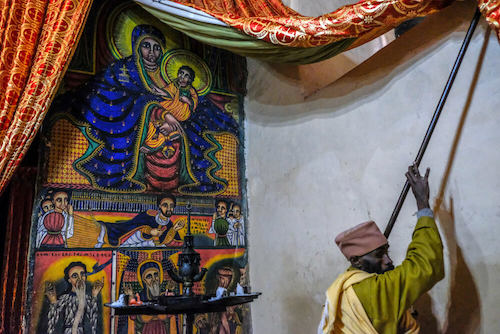
Ethiopia has one of the highest birth rates in the world. On average a woman gives birth to five children.
The country thus a very young population. More than 40% of all Ethiopians are under 15 years old. The average life expectancy is about 50 years and only one in 20 people of the population are older than 50 years!
Only 4 out of 10 children between 7 and 12 years attend school! When living in a bigger city, children usually get a much better education as there most children go to school. However, in rural areas children are less likely to go to school or even get a secondary education after primary school. In cities about 20% of all children aged 12 - 18 attend a secondary school, in rural areas only 2%.
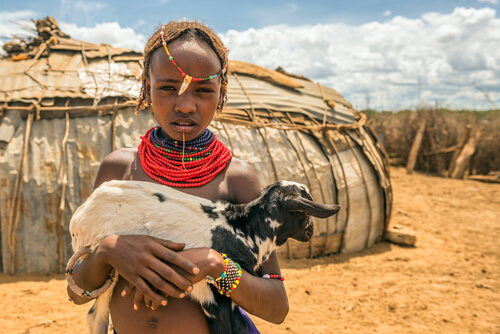
In fact, 28% of Ethiopian men and 41% of all Ethiopian women who are 15 - 19 years old, never went to school!
Only 52% of the population can read and write properly.
While one in 25 people in Ethiopia is overweight or obese, however, one in four children under the age of 5 years is underweight!
Healthcare is scarce in Ethiopia, as there are only eleven doctors for 100,000 people. In the USA and Europe, there are about 400 doctors for the same amount of people!
Languages in Ethiopia Ethiopia Facts
Amharic is the main working language in Ethiopia, as there is no official language. More than 80 languages are spoken in Ethiopia! Local languages are taught in schools and also used in official communications.
Amharic, Oromo and Somali are the most widely used local languages. English is taught as first foreign language in schools.
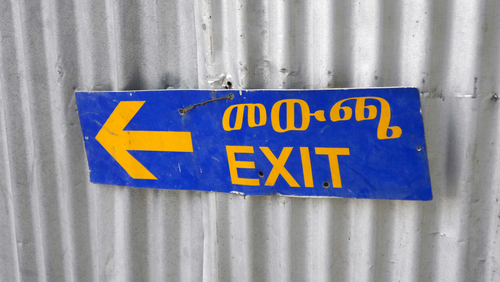
However, many people do not only speak their local language, but also English, French and Arabic are widely spoken.
Amharic is an ancient writing system. The smallest unit in the writing system is called Fidel and each character consists of a consonant and vowel sequence. The Amharic writing looks like this:

This is from Article 1 of the Universal Declaration of Human Rights. The example is from this site: Click here.
Food in Ethiopia | Ethiopian Facts
Coffee, beans, oilseeds, sugar cane, corn and cereals are the main agricultural products in the Ethiopia.
Ethiopian main dishes contain vegetables and spicy meat stews and sauces - and flatbread which is called injera.
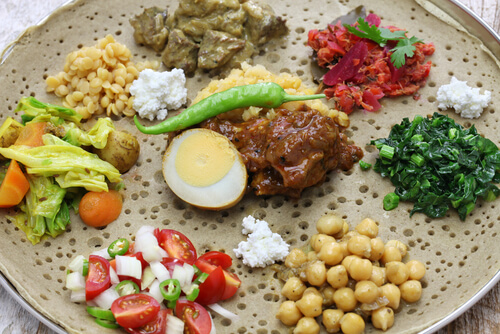
Pulses such as lentils or chickpeas, beans or corn are common in dishes as is beef, lamb and fish. For religious reasons, pork is not eaten in Ethiopia.
Here are some typical Ethiopian food and dishes:
- Injera : large sourdough flatbread - usually made with teff flour. Teff is a Ethiopian cereal or grass. Injera is usually served with any meals
- Tips : sautéed and fried meat and vegetables
- Kitfo : minced raw beef meat that has been marinated in spices
- Wat : sautéed onion and spices mixed with vegetables or meat
- Genfo : porridge usually made with wheat or barley and traditionally eaten for breakfast
Read some great Ethiopian food info here
Ethiopia Facts Ethiopia Animals
Ethiopia is home to many rare and endangered animals and plants. Unique to Ethiopia are the mountain nyala and the Simien jackal. The country is also known for its communities of black and white colobus monkeys and the gelada baboons.

In the lowlands many antelope species, wild pigs and monkeys roam freely. In Ethiopia there are more than 20 national parks and game reserves where animals are protected.
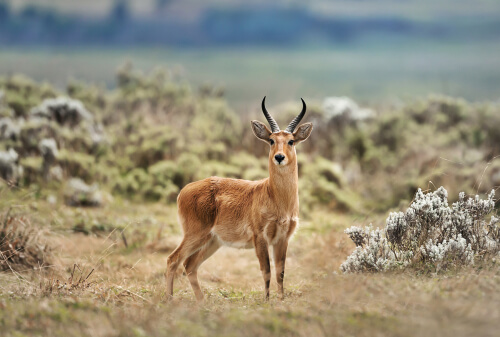
Ethiopia Facts: Did you know…?
Abiy Ahmed is the Prime Minister or Head of State of Ethiopia since April 2018. On 11 October 2019 he was awarded the Nobel Peace Prize.
The Chief of State or President of Ethiopia is Zewde Sahle-Work, who is the only female president in Africa! She was voted by parliament unanimously in October 2018.
The African Union has its headquarters in Addis Ababa.
More Facts about Ethiopia
Learn more about this fascinating African country. Read our 30 Top Facts about Ethiopia on a special page here.
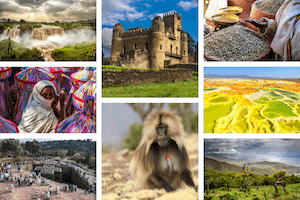
Ethiopia Facts: Resources
Source for Ethiopia Facts page:
- Central Intelligence Agency. "Ethiopia". World Factbook 11 October 2023. Last accessed 17 October 2023
- Ager, Simon. "Amharic". Omniglot . Last accessed 17 October 2023
- UNESCO World Heritage Convention. "Ethiopia" whc.unesco.org Last accessed 17 October 2023
- " Simien Mountain National Park ". simienpark.org Last accessed 17 October 2023
Image Credits on Ethiopia Facts: Oscar Espinosa/shutterstock.com and other photo stock from shutterstock and wikicommons, if not otherwise stated.
We hope you enjoyed reading our Ethiopia Facts . Please bookmark this page and spread the word. We will add more information in the near future as we still have to sort through our images and stories from our recent travels.
Popular Pages
Go from Ethiopia Facts to Africa Continent Facts
Back from Ethiopia Facts to Kids-World-Travel-Guide
Competition 2024 is open!

Would you prefer to share this page with others by linking to it?
- Click on the HTML link code below.
- Copy and paste it, adding a note of your own, into your blog, a Web page, forums, a blog comment, your Facebook account, or anywhere that someone would find this page valuable.

Events & Celebrations
Organisations, games & quizzes, travel tips, competition, recent articles.
Facts about Liberia for Kids | Africa Facts for Kids | Geography
Apr 25, 24 09:36 AM
UAE Facts for Kids | United Arab Emirates Facts | Geography | Travel
Apr 19, 24 04:33 AM
Argentina Facts for Kids | Geography | Attractions | People | Animals
Apr 12, 24 05:32 AM
More about Ethiopia

More about Africa
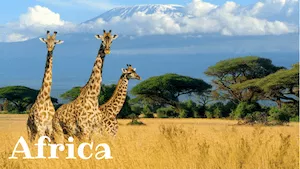
More Countries in Africa

Landlocked Countries
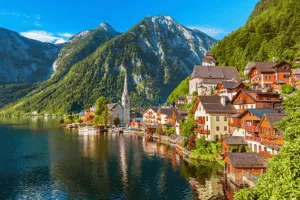
Temperature in Celsius
Temperature in fahrenheit.

More about other Countries

Like what you read?

Winning Essays 2021

Winning Essays 2022

Like us on Facebook
Kids World Travel Guide
Brilliantly
Content & links.
Verified by Sur.ly
©Kids-World-Travel-Guide.com 2010-2024 | Created by Regina Gräff and KidsWorldTravels
All rights reserved | Privacy Policy | Disclaimer


The Queen Zone
In Full Bloom: A Traveler's Guide to Must See Flower Festivals Around The World
Posted: April 29, 2024 | Last updated: April 29, 2024
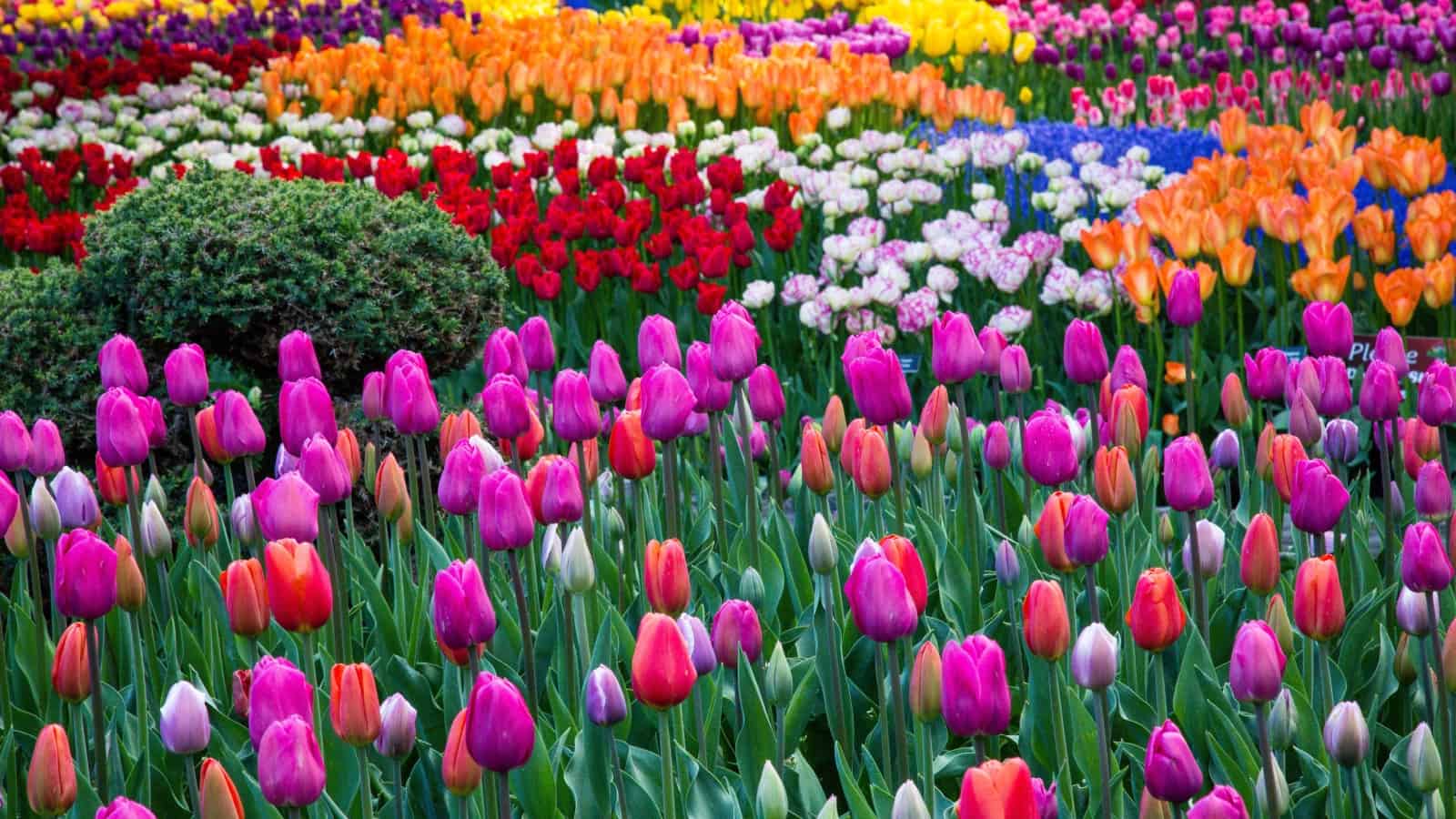
Flower festivals are celebrated around the world to admire the beauty of tulips, roses, cherry blossoms and all kinds of flowers in full bloom. These festivals often feature vibrant displays of varieties, as well as cultural events, music, food, and more. Here are some notable festivals from different parts of the world. Have you attended any? Time to go! Note that due to global warming, dates have been changing, and of course the height is always going to vary. Check with local organizations to plan your trip. We have organized the article roughly in calendar month order.

Cherry Blossoms
- Locations : Various cities worldwide, including Tokyo (Japan), Washington D.C. (USA), and Seoul (South Korea).
- Dates: Typically, in March or April, depending on the region.
- Reason to go : Cherry blossom festivals celebrate the blooming of cherry trees, symbolizing the arrival of spring. These festivals often feature cultural events, performances, food stalls, and illuminated evening displays under the blossoms.
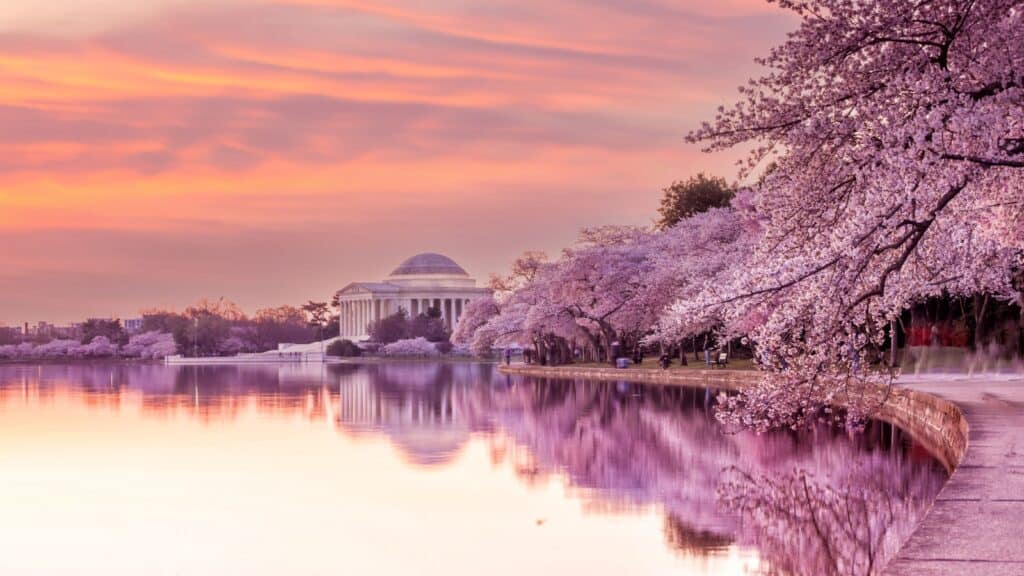
About Cherry Blossoms
Known for their delicate pink or white flowers that bloom in spring, they symbolize the fleeting beauty of life and the arrival of spring. Associated with Japanese culture and the tradition of hanami (flower viewing) picnics under blooming cherry trees.
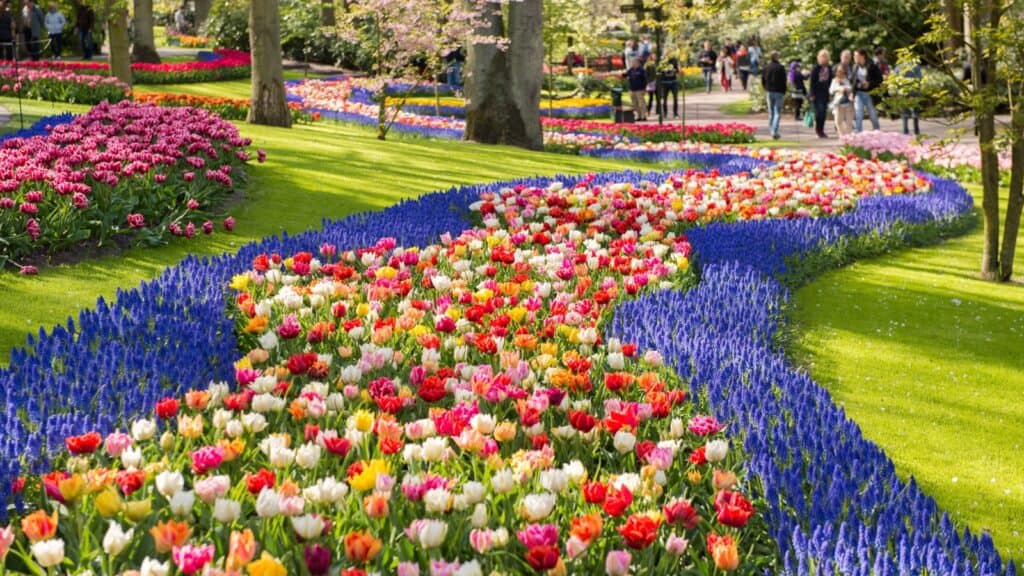
Tulips in the Netherlands
- Location : Keukenhof Gardens, Lisse, and various locations throughout the country.
- Dates : Typically, from late March to mid-May.
- Reason to go : The Netherlands is renowned for its tulip fields, and the Keukenhof Gardens showcase millions of tulips in different colors and varieties. It’s one of the largest flower gardens in the world and attracts thousands of visitors annually.
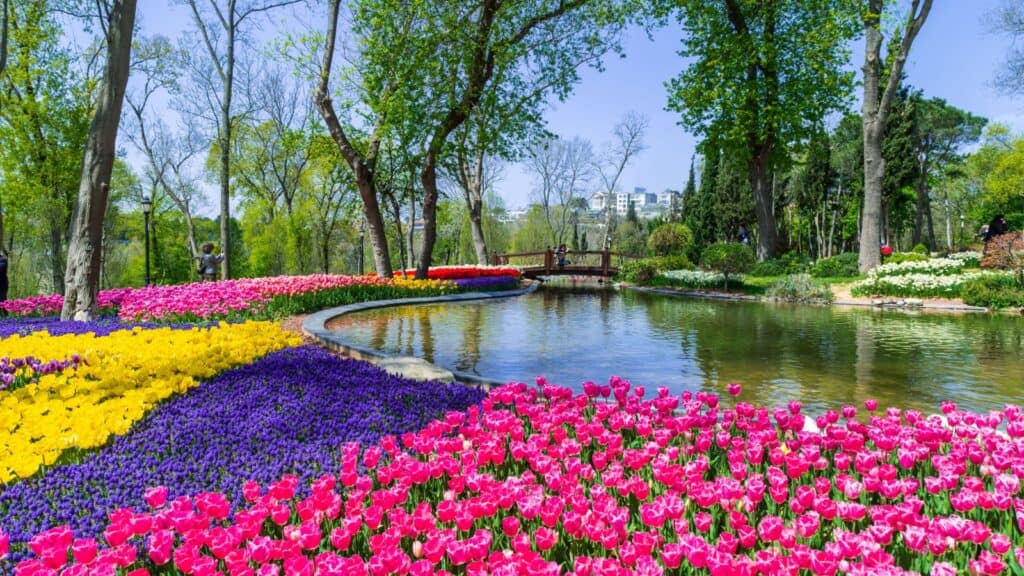
Tulips in Turkey
- Location : Istanbul, Turkey, Emirgan Park.
- Dates : Usually in April.
- Reason to go : The Istanbul Tulip Festival features over 100 different tulip varieties planted across the city’s parks, particularly Emirgan Park. It celebrates the historical significance of tulips in Turkish culture and their symbolism of beauty and abundance.
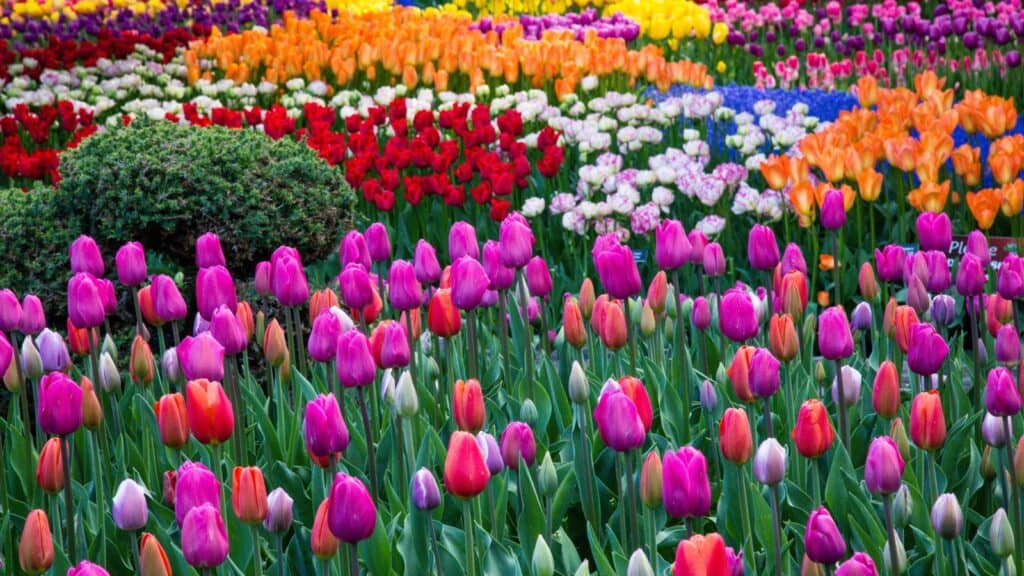
Tulips in the United States
- Location : Skagit Valley Tulip Festival, Mount Vernon, Washington.
- Dates : Typically, throughout the month of April.
- Reason to go : The Skagit Valley Tulip Festival showcases hundreds of acres of colorful tulip fields against the backdrop of the Cascade Mountains. Visitors can enjoy tulip displays, farm tours, art shows, and other related events.

About Tulips
Tulips are known for their vibrant colors, elegant shape, and variety of blooms, with estimates ranging from 3,000 to 7,000 different cultivars. These varieties come in a wide range of colors, shapes, sizes, and bloom times. Some common types include single early tulips, double late tulips, parrot tulips, fringed tulips, and lily-flowered tulips. They symbolize love, prosperity, and springtime renewal.

Bluebonnet Festivals
- Location : Texas Hill Country, USA.
- Dates : Typically, in April.
- Reason to go : Bluebonnet festivals celebrate the state flower of Texas, the bluebonnet, which blankets fields and roadsides in vibrant blue hues during spring. Festivities often include bluebonnet-themed photography contests, arts and crafts, live music, and opportunities for scenic drives through bluebonnet-covered landscapes.

About Bluebonnets
Known for their striking blue-purple color and distinctive shape, they symbolize the spirit of Texas and the beauty of the state’s natural landscape. Considered the state flower of Texas.
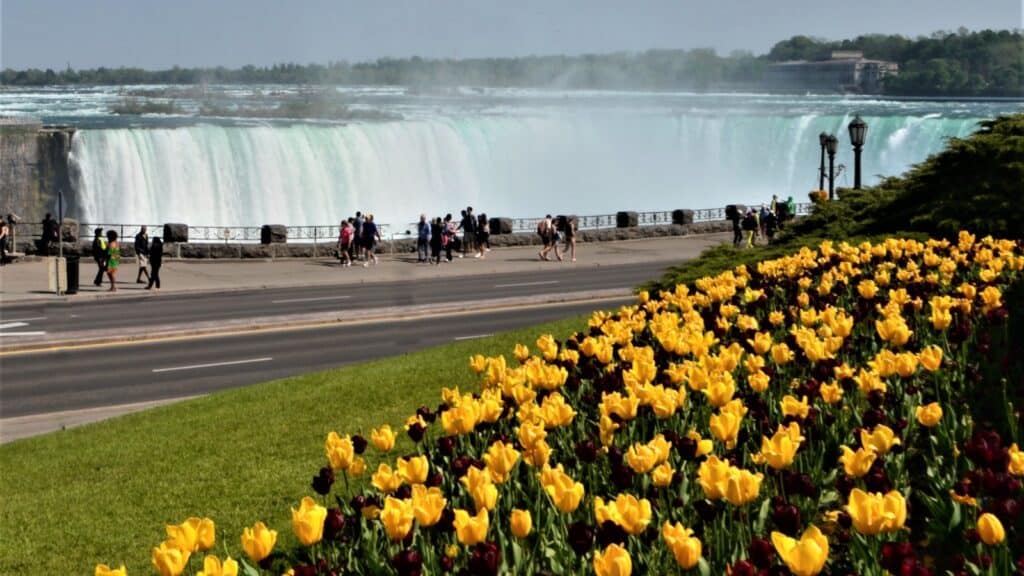
Tulips in Canada
- Location: Canadian Tulip Festival, Ottawa, Ontario.
- Dates: Usually in May.
- Reason to go : The Canadian Tulip Festival commemorates the gift of 100,000 tulip bulbs from the Dutch royal family to Canada during World War II. It features millions of tulips blooming across Ottawa, along with cultural performances, art exhibitions, and fireworks.
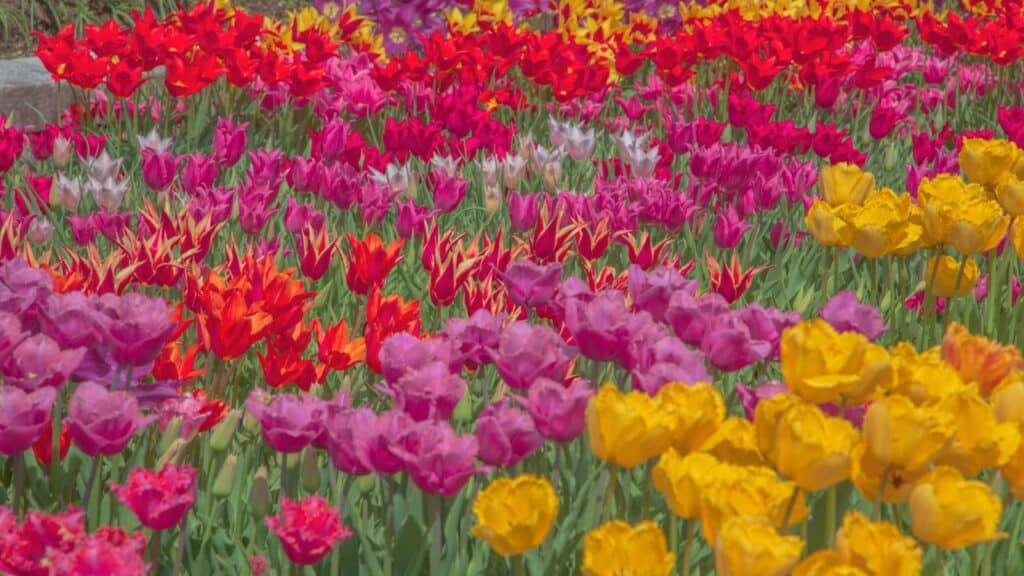
Tulips in Japan
- Location : Tonami Tulip Fair, Tonami City, Toyama Prefecture.
- Dates : Typically, in late April to early May.
- Reason to go : The Tonami Tulip Fair is one of Japan’s largest tulip festivals, featuring over 2 million tulips in various colors and patterns. Visitors can enjoy tulip displays, live music, traditional dance performances, and local food stalls.
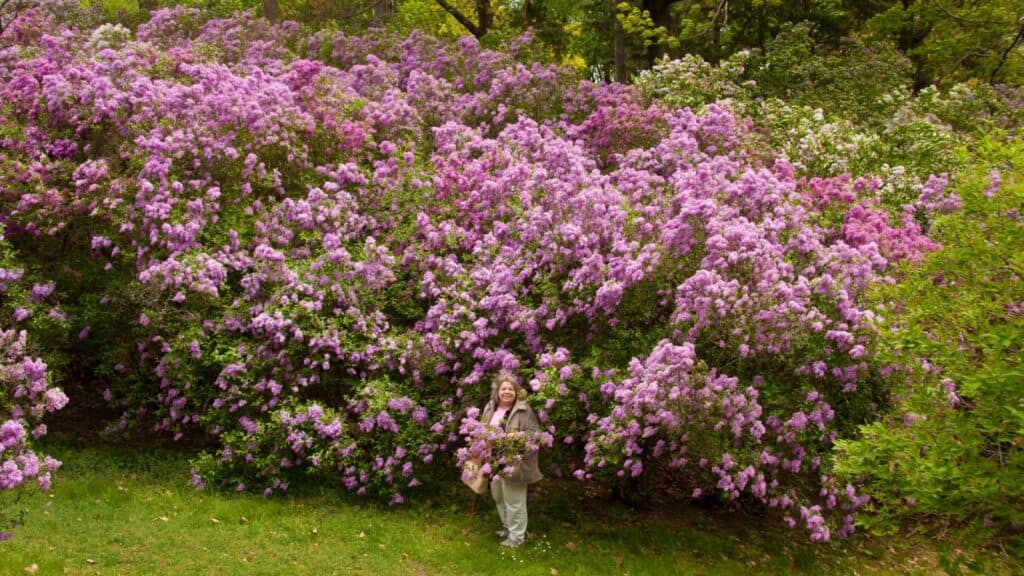
Lilac Festivals
- Location : Rochester, New York (USA); Niagara Region, Ontario (Canada); Mackinac Island, MI (USA).
- Dates : Typically, in May and June.
- Reason to go : Rochester features the famous Lilac Parade, which showcases floats, bands, and community groups. Visitors can also enjoy live music performances, art shows, craft vendors, food and drink vendors, garden tours, and family-friendly activities. In Niagara, you can look forward to lilac-themed garden tours, concerts, art shows, wine tastings, and culinary events; In MI The festival offers guided lilac walking tours, horse-drawn carriage tours, concerts, art shows, culinary events, and family-friendly activities.
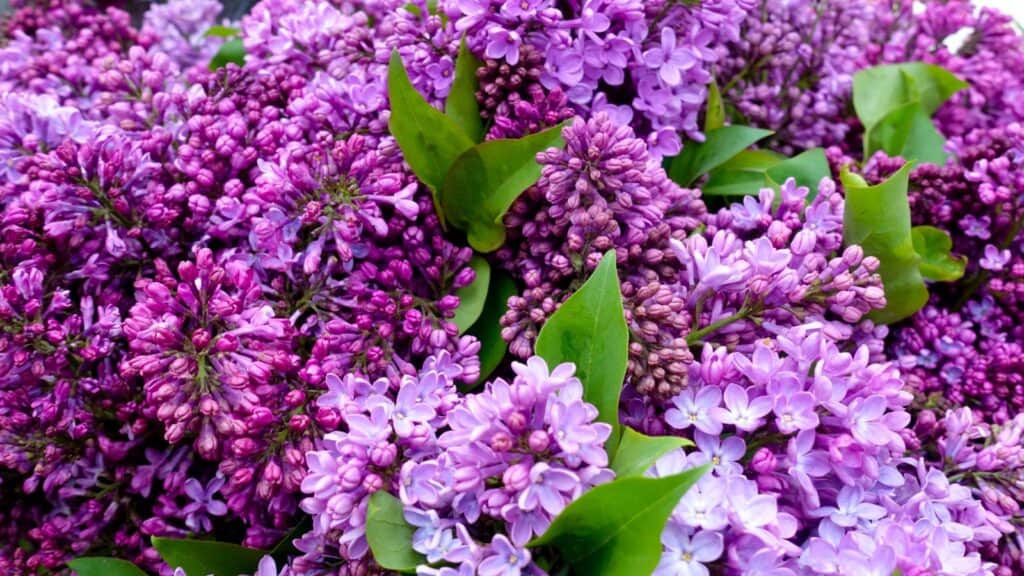
About Lilacs
There are over 1,000 varieties of lilacs (Syringa species) cultivated worldwide, offering a diverse range of colors, fragrances, and bloom times. These varieties include different species and hybrids, each with unique characteristics such as flower size, shape, and foliage. Colors range from white and yellow to many shades of purple and pink, as well as bicolor lilacs.
Locally here in Massachusetts we have Lilacland. A private property opens to the public during the season where you can stroll amongst over 300 different varieties.

Rose Festivals
- Locations : Portland (Oregon, USA), Istanbul (Turkey), and various cities worldwide.
- Dates : Vary depending on the region, typically in late spring or early summer.
- Reason to go : Rose festivals celebrate the beauty and diversity of roses, featuring thousands of rose varieties in bloom. Events may include rose garden tours, floral displays, parades, beauty contests, and educational programs about rose care and cultivation.

About Roses
Roses symbolize love, romance, and passion, and are known for their beauty, fragrance, and wide range of colors and varieties. Highly regarded in many cultures worldwide for their ornamental value and cultural significance. Estimates suggest there are over 30,000 different types of roses, including hybrid teas, floribundas, grandifloras, climbers, shrub roses, and miniature roses. Roses vary in color, fragrance, petal count, growth habit, and disease resistance, among other characteristics.
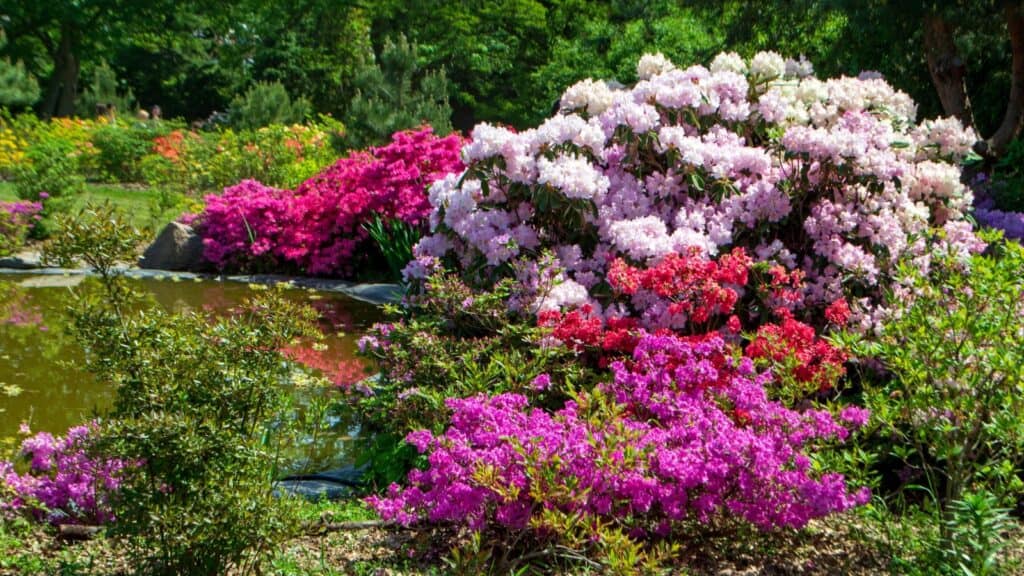
Rhododendron Festivals
- Locations : Various regions worldwide, including Ireland, Nepal, and the Pacific Northwest region of the USA.
- Dates : Typically, in late spring to early summer.
- Reason to go : Rhododendron festivals showcase the stunning blooms of rhododendron and azalea plants, which come in a wide array of colors and varieties. Visitors can explore rhododendron gardens, attend plant sales, participate in guided tours, and enjoy cultural events related to these beautiful flowering shrubs.
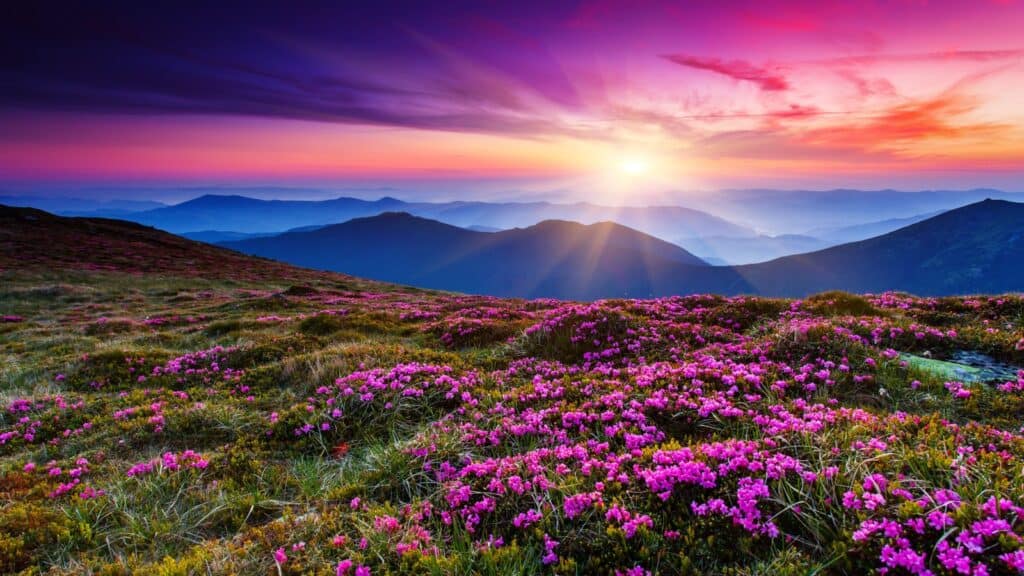
About Rhododendrons
Known for their large, showy clusters of flowers in various colors, symbolizing beauty, grace, and resilience. Found in gardens and landscapes worldwide, particularly in temperate regions, and appreciated for their ornamental value and ability to thrive in diverse environments. Rhododendrons come in various colors including pink, purple, white, red, yellow, orange, and blue, as well as bicolor and multicolor varieties.

Lavender Festivals
- Locations : Provence (France), Sequim (Washington, USA), and various other regions known for lavender cultivation.
- Dates : Usually in June and July.
- Reason to go : Lavender festivals highlight the beauty and fragrance of lavender fields in full bloom. Visitors can enjoy scenic views, pick their own lavender, learn about lavender cultivation and its uses, and indulge in lavender-themed products such as oils, soaps, and culinary treats.

About Lavender
Lavender comes in various types, with English, French, and Spanish being common. It’s prized for its fragrance and used in cooking, aromatherapy, and skincare. Medicinally, it’s known for promoting relaxation and soothing skin. In gardens, lavender adds beauty and attracts pollinators. It’s harvested for its flowers, which can be dried and used in potpourri or extracted for essential oil.
These spring and early summer flower festivals offer opportunities for people to connect with nature, enjoy outdoor activities, and celebrate the beauty of seasonal blooms in diverse regions around the world. Are you planning a trip?
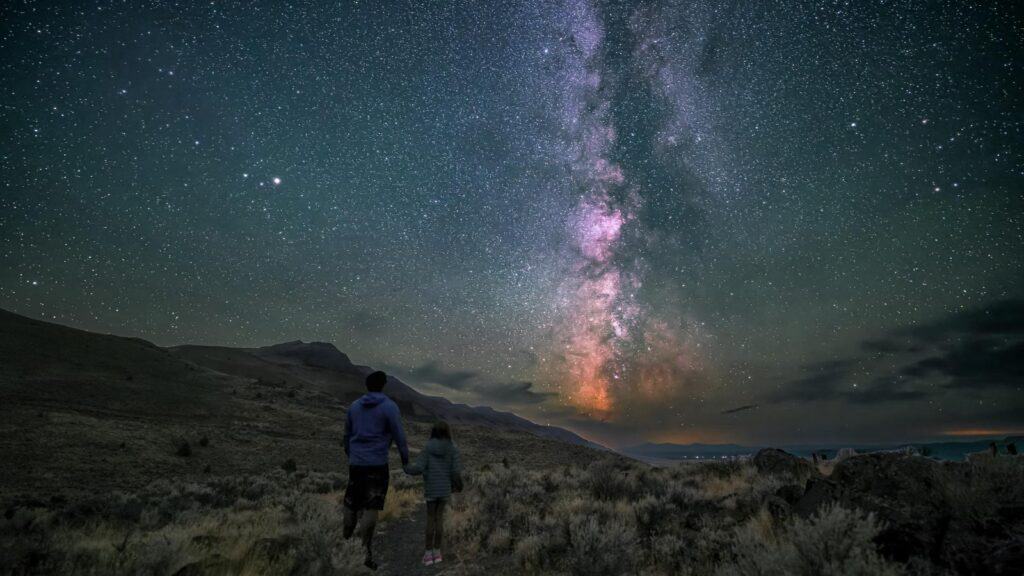
Bucket List Item: Oregon Outback International Dark Sky Sanctuary
Hopefully all of you have had the experience of gazing into the night sky in dark surroundings, so that you could take advantage of the stars, planets and cosmos. Unfortunately, manmade lights often interfere – it is called light pollution for a reason – but did you know that the U.S. can now claim the largest international dark sky sanctuary? You will have to travel to Oregon to take advantage, but it is worth the trip. READ: Bucket List Item: Oregon Outback International Dark Sky Sanctuary
The post In Full Bloom: A Traveler’s Guide to Must See Flower Festivals Around The World appeared first on The Queen Zone .
More for You
US buys 81 Soviet-era combat aircraft from Russia's ally costing on average less than $20,000 each, report says
The biggest song in country music history, according to data. Plus, see if your favorite is in the top 100.
Do I have to pay off my spouse's debts when they die? Here's what you're responsible for and what you aren't after a loved one's death
‘American Idol' Winner Just Sam Returned After Going Viral For Singing In NYC Subways: "This Is Way Better Than An iPhone From Home"
These Ford Models Won't Be Coming Back After 2024
We Tested 4 Copycat Samoas Against the Original Girl Scout Cookie
What Happens to Your Body When You Eat Peanut Butter Regularly
29 common human foods you may not realize are poisonous to your dog
A man who 'hopes he runs out of money' before he dies explains why you may not need as much cash to retire as you think
Map reveals best places to live in the US if nuclear war breaks out
So THAT'S Why Singers Lose Their Accent When They Sing
12 Secret Ingredients Grandma Used in Her Meatloaf
Check Out the Original Invoice on This 1928 Ford Model A
The first interracial kiss aired on TV more than 55 years ago—and more shows that broke racial barriers
Lindsey Graham Confronted on Enquirer's 'Catch and Kill' Plot to Help Trump
An apple a day really can help keep the doctor away. Here's how.
I’m a Bank Teller: 3 Times You Should Never Ask For $100 Bills at the Bank
I’m 55 with no kids. I was unhappy at work so I took early retirement. I’ve more than $2.7 million in stocks and $1.6 million in real estate. Is that enough?
Taylor Swift's 'Tortured Poets Department' debuts No. 1 on Billboard, hits largest streaming week ever
The Only Way You Should Store Hot Sauce, According to Tabasco
- Today's deals
- Search travel guides

Guide to the Royal Ploughing Ceremony in Bangkok 2024: A Deep Dive into Thailand’s Agricultural Heritage
Welcome to a journey through one of Thailand’s most cherished festivals—the Royal Ploughing Ceremony in Bangkok. Scheduled for May 2024, this event is a vibrant showcase of the country’s profound agricultural roots and a spectacular cultural experience for locals and travelers alike. As you plan your visit to the Land of Smiles, our guide delves into the heart of this ancient tradition, offering insights into its historical significance, festivities, and tips for the modern traveler.
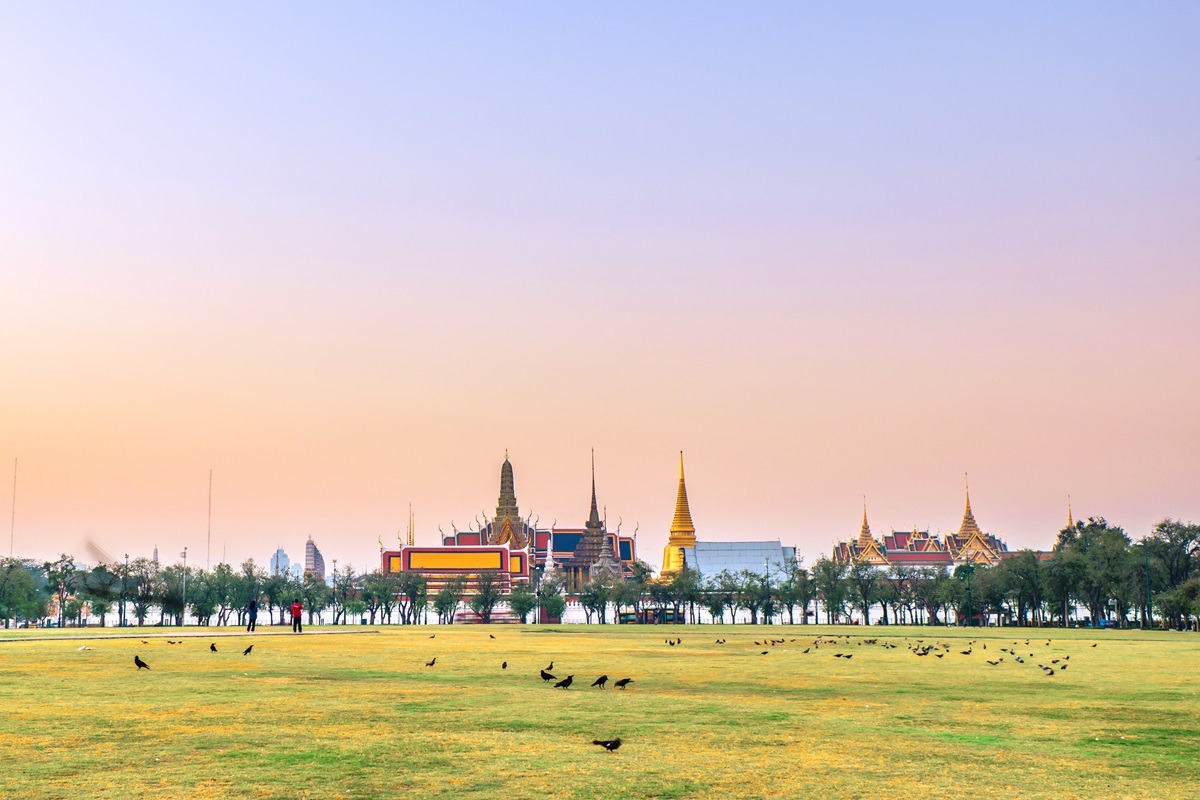
Understanding the Royal Ploughing Ceremony
The Royal Ploughing Ceremony, known in Thai as Phra Ratcha Phithi Charot Phra Nangkhan Raek Na Khwan , is a majestic event that marks the commencement of the rice planting season. Steeped in Brahman and Buddhist traditions, the ceremony symbolizes the government’s relationship with agriculture, ensuring prosperity and bounty for the country. The event’s roots can be traced back over a thousand years, making it a profound celebration of Thai culture and spirituality.
The Significance of the Ceremony
Held at Sanam Luang, a vast open field located in front of the grandiose Wat Phra Kaew and the Grand Palace, the ceremony is led by the King of Thailand or an appointed royal representative. It merges religious rituals with ancient agrarian practices, offering blessings for fertile lands and abundant harvests. The ceremony’s highlights include the ploughing of sacred plots by oxen, which are then followed by elaborate rituals predicting the year’s agricultural yields.
Experiencing the Festivities
Visitors to the Royal Ploughing Ceremony can expect an immersive experience, filled with the sights and sounds of traditional Thai culture. The event is not just about the rituals; it’s a colorful festival where spectators can witness traditional music and the wearing of vibrant historical attire. Street vendors line the surroundings of Sanam Luang, offering a plethora of Thai cuisines and handicrafts, making it a perfect opportunity for cultural immersion.
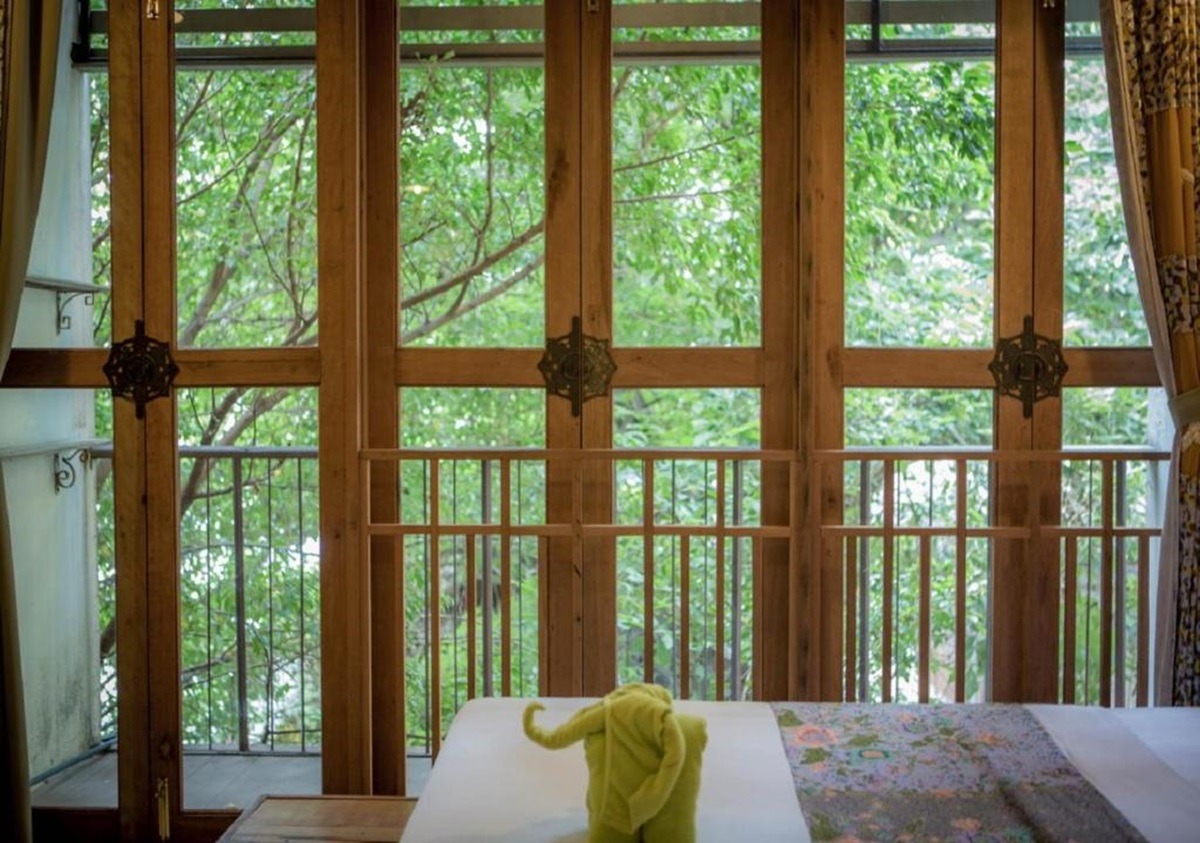
Travel Tips for the Royal Ploughing Ceremony
Planning your trip to Bangkok to experience the Royal Ploughing Ceremony requires some preparation. Here are essential tips to ensure a memorable visit:
- Dress Appropriately : As the ceremony takes place near royal grounds and involves religious elements, modest dress is recommended. Opt for polite attire covering shoulders and knees.
- Arrive Early : The ceremony attracts large crowds, including dignitaries, so arriving early will help secure a good viewing spot.
- Stay Hydrated : May in Bangkok can be hot and humid. Carry water and wear sun protection to stay comfortable throughout the event.
- Respect Local Customs : Remember to be respectful during the ceremony. It’s a significant cultural and religious event for Thais, so observe quietly and follow any local guidelines.
Where to Stay in Bangkok During the Royal Ploughing Ceremony
Whether you’re seeking the lap of luxury or the comfort of a budget-friendly hostel, Bangkok’s diverse accommodation offerings cater to all. The city’s vibrant districts offer various options, each providing unique experiences and amenities. Here’s a closer look at where to stay:
Luxury Accommodations
For those looking to indulge, Bangkok boasts some of the most exquisite luxury hotels in the world. The Pathumwan Princess Hotel and the Okura Prestige Bangkok offer unparalleled service, stunning city views, and world-class amenities. Experience Thai hospitality at its finest while enjoying easy access to shopping centers, restaurants, and historic sites.
Budget-Friendly Hostels
Bangkok is renowned for its affordable accommodation options, and the city’s hostels are no exception. Budget travelers can enjoy a comfortable and social environment at places like Here Hostel and BED STATION Hostel , located within walking distance to major attractions and transit points. Hostels are a great way to meet fellow travelers and get local tips on enjoying the city.
Boutique Hotels and Guesthouses
For a more personalized experience, consider staying in one of Bangkok’s charming boutique hotels or guesthouses. Properties like Loy La Long Hotel and Phranakorn-Nornlen Hotel provide a cozy atmosphere with unique décor, reflecting the local culture and history. These venues often feature onsite cafés or gardens where guests can unwind after a day of exploration.
Mid-Range Hotels
Mid-range hotels strike the perfect balance between comfort and value, offering well-appointed rooms and convenient services without the high price tag. Hotels such as Holiday Inn Express Bangkok Siam and ibis Bangkok Riverside are excellent choices for families and couples looking for reliable accommodations close to the city’s attractions.

Culinary Delights in Bangkok
Exploring Bangkok’s culinary landscape is an adventure in itself. Renowned globally for its vibrant street food scene as well as its high-end dining experiences, the city offers flavors and dishes to satisfy every palate. During the Royal Ploughing Ceremony, the streets come alive with special treats and traditional Thai dishes that celebrate the nation’s agricultural bounty.
Traditional Thai Dishes to Try
When visiting Bangkok for the Royal Ploughing Ceremony, immerse yourself in the local culture by trying these must-eat Thai dishes:
- Pad Thai : Thailand’s iconic stir-fried noodle dish that offers a perfect balance of sweet, sour, and salty flavors.
- Green Curry : Aromatic and spicy, Thai green curry can be enjoyed with chicken, beef, or tofu, served alongside steamed jasmine rice.
- Mango Sticky Rice : A beloved Thai dessert, made with ripe mangoes, sweet coconut milk, and sticky rice. It’s a seasonal treat, particularly delightful during the Royal Ploughing Ceremony period.
- Som Tam (Papaya Salad): A spicy salad made from shredded green papaya, tomatoes, green beans, and peanuts, offering a refreshing crunch.
Street Food and Market Delights
Bangkok’s street food is a key part of its identity. Areas near Sanam Luang and Khao San Road become bustling hubs of culinary activity during the ceremony. Here you can find vendors selling everything from grilled meats and seafood to fresh fruit and local sweets. Be sure to visit:
- Chatuchak Weekend Market : Beyond shopping, this market offers an extensive selection of street food stalls.
- Yaowarat Road (Chinatown): Famous for its nighttime street food, offering dishes like dim sum, noodle soups, and seafood.
Fine Dining Experiences
For those looking to experience Bangkok’s gourmet side, the city’s fine dining restaurants offer innovative Thai cuisine and international dishes, often with breathtaking views of the skyline. Notable mentions include:
- Lebua at State Tower : Home to several world-class restaurants and bars, including the renowned Sky Bar.
- Gaggan Anand : Known for its progressive Indian cuisine, Gaggan Anand has consistently been ranked as one of Asia’s best restaurants.
Whether indulging in the simplicity of street food or the sophistication of gourmet dining, Bangkok’s culinary scene promises an unforgettable experience during the Royal Ploughing Ceremony celebrations.
You may also like
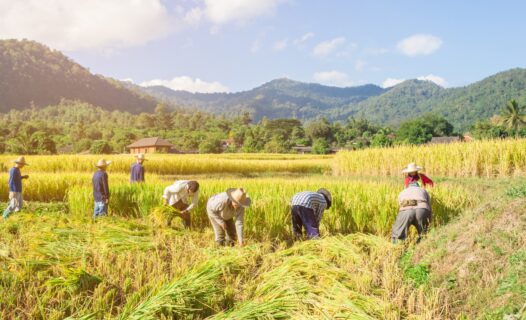
Unveiling the Cultural Heritage of the Royal Ploughing Ceremony in Thailand
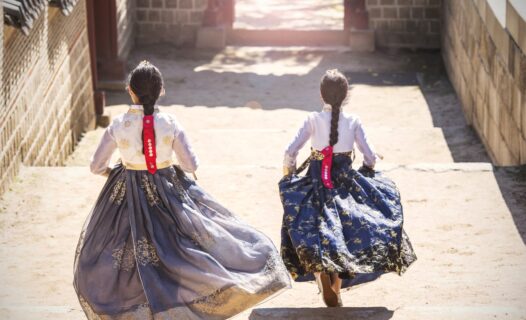
Ultimate Family Guide to Celebrating Children's Day 2024 in Seoul: Top Parks, Museums, and Attractions
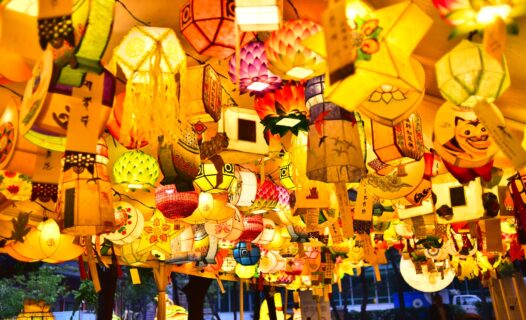
Unveiling Seoul's Glow: A Guide to the Lotus Lantern Festival 2024

Ultimate Guide to Memorial Day Weekend 2024: Coast-to-Coast Celebrations
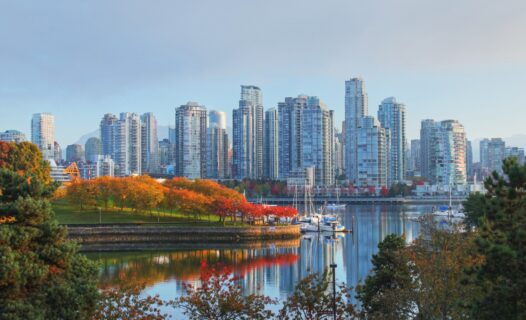
Celebrate Victoria Day 2024 in Vancouver: A Complete Guide to Fireworks and Festivities

The Ultimate Guide to Orlando's Food Scene: A Culinary Adventure
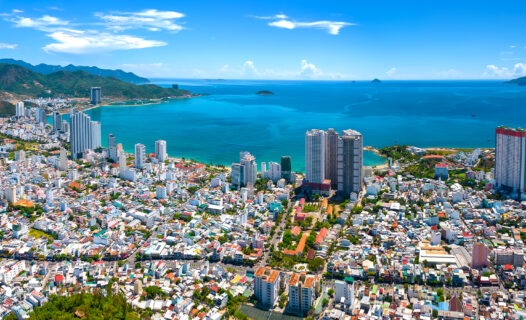
Unveiling Nha Trang: A Shopper's Paradise

The Ultimate Guide to Macanese Cuisine: A Blend of Portuguese and Chinese Flavors
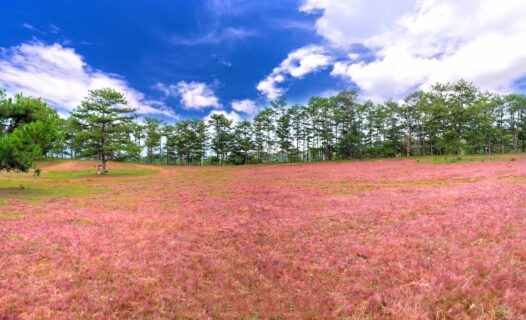
3 Days in Dalat Itinerary: Exploring the Heart of the Highlands
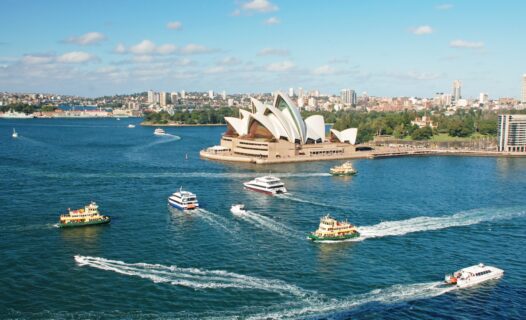
7 Days in Sydney Itinerary: Exploring the Harbour City's Best Attractions
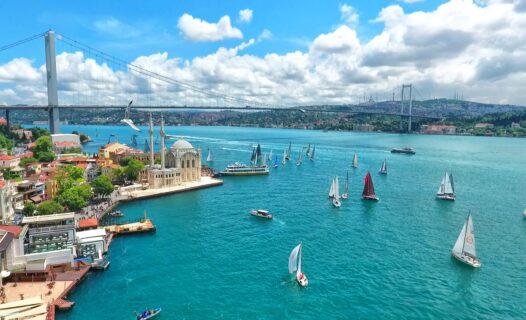
Welcome to Istanbul: Where East Meets West

A Culinary Journey Through Goa: Discovering Traditional Goan Cuisine
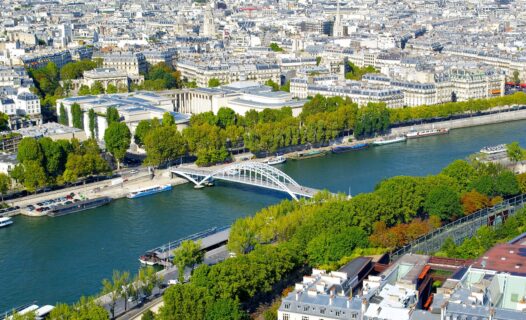
The Ultimate Guide to Paris' Arrondissements: Where to Stay for Every Traveler
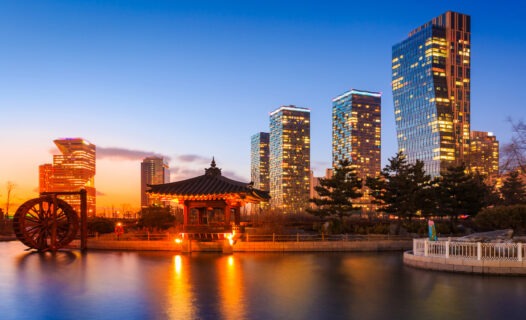
5 Days in Incheon Itinerary: From Historic Sites to Modern Wonders
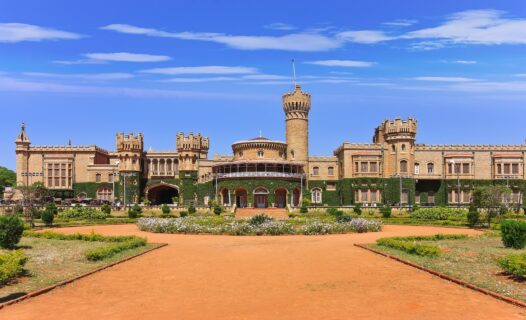
Welcome to Bangalore: The City of Gardens, Tech, and Culture
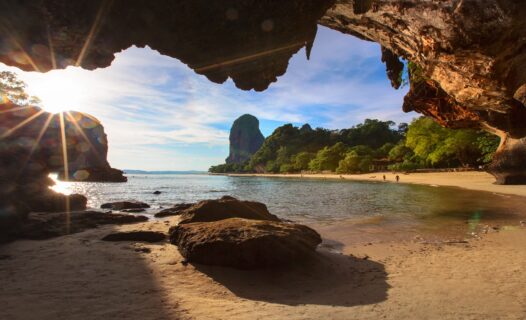
Welcome to Your 7-Day Dream Itinerary in Krabi
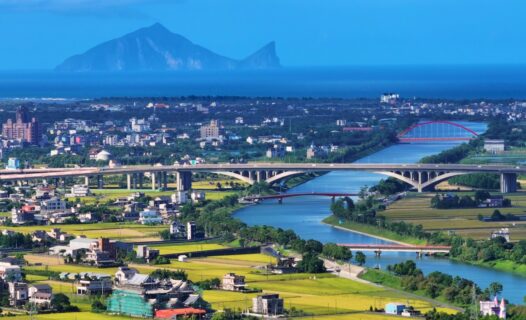
Embark on a Weekend Getaway to Yilan: A Quick Escape into Nature
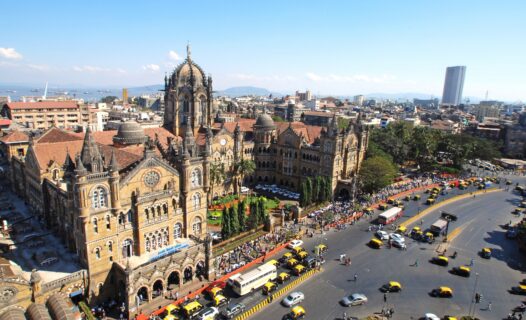
Welcome to the Vibrant City of Mumbai: A Cultural Melting Pot
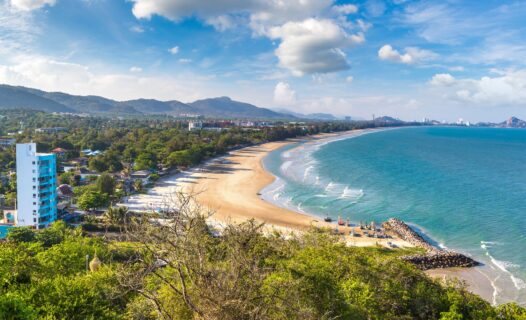
7 Days in Hua Hin/Cha-am Itinerary: Uncovering the Pristine Beaches and Royal Retreats
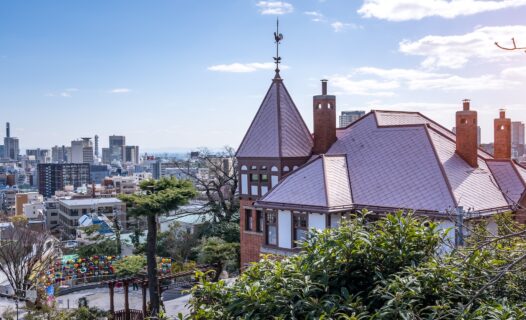
Welcome to Kobe: A Gateway to Discovery and Delight

Join us as we explore the Royal Ploughing Ceremony, a cornerstone of Thai culture symbolizing the start of the planting season. Experience the beauty and rituals that make this event a must-see for cultural enthusiasts and travelers alike.

Ultimate Family Guide to Celebrating Children's Day 2024 in Seoul: Top Parks, Museums, and Attractions
Dive into Seoul's Children's Day 2024 with our family guide! Discover interactive museums, lush parks, and rich cultural experiences perfect for creating lasting memories.

Unveiling Seoul's Glow: A Guide to the Lotus Lantern Festival 2024
Dive into Seoul's Lotus Lantern Festival 2024 with our guide. Discover hidden gems, culinary delights, and the spirit of this enchanting event.

Discover how to honor Memorial Day Weekend 2024 from coast to coast with parades, memorials, and community events across the United States.

Experience the splendor of Victoria Day 2024 in Vancouver with our comprehensive travel guide to the best fireworks, accommodations, and activities.

The Ultimate Guide to Orlando's Food Scene: A Culinary Adventure
Embark on a culinary adventure in Orlando! From exquisite fine dining and vibrant food trucks to sustainable eats and lively festivals, discover the flavors that make Orlando a foodie's paradise.

Unveiling Nha Trang: A Shopper's Paradise
Dive into the ultimate Nha Trang shopping adventure! Explore bustling markets, chic boutiques, eco-friendly finds, and seasonal events in our detailed guide.

Embark on a culinary journey through Macau with our ultimate guide to its fusion flavors. Discover traditional dishes, insider dining tips, and vibrant food festivals that celebrate the best of Macanese cuisine.

Dive into our captivating 3-Day Dalat Itinerary to uncover Vietnam's highlands gem. From serene lakes to historic sites, embrace adventure & relaxation in Dalat.

7 Days in Sydney Itinerary: Exploring the Harbour City's Best Attractions
Embark on a captivating 7-day journey through Sydney, Australia. From iconic landmarks like the Opera House to the serene Blue Mountains and vibrant Darling Harbour, discover the best attractions the Harbour City has to offer.

Embark on a captivating 5-day journey through Istanbul, exploring historic wonders and cultural gems. Discover itineraries filled with majestic palaces, vibrant bazaars, and scenic cruises.

Embark on a delectable journey through Goa's culinary landscape with our comprehensive guide. Discover traditional Goan cuisine's fusion of flavors, from spicy vindaloos to sweet bebinca, and dive into local culture through markets, cooking classes, and sustainable dining.

The Ultimate Guide to Paris' Arrondissements: Where to Stay for Every Traveler
Discover the charm of Paris' arrondissements with our ultimate travel guide. From the historic heart of the city to hidden gems, find the perfect stay for every traveler.

Uncover the best of Incheon in 5 days, from awe-inspiring historic sites to state-of-the-art modern marvels. Indulge in cultural tours, culinary delights, and breathtaking scenery.

Dive into our 3 Days in Bangalore Itinerary to uncover the best of the Garden City. From royal palaces to tech hubs, enjoy a blend of culture, history, and nature.

Dive into our exclusive 7-Day Krabi Itinerary on Agoda’s Travel Guide. Discover pristine beaches, lush jungles, and cultural treasures in Thailand's paradise.

Embark on an extraordinary weekend getaway in Yilan with our curated itinerary. Discover lush landscapes, soak in natural hot springs, and indulge in local culinary delights.

Dive into Mumbai's vibrant culture, history, and flavors with our detailed 3-day itinerary. Discover iconic landmarks, hidden gems, and culinary delights.

Embark on a 7-day journey through Hua Hin/Cha-am with our expertly crafted itinerary. Discover pristine beaches, royal palaces, and hidden gems.

Embark on a captivating 3-day journey through Kobe, Japan. From historical landmarks to scenic beauty, discover the best of Kobe.
Current language
All languages.

IMAGES
VIDEO
COMMENTS
Ethiopia travel guide. About Ethiopia. ... The World Travel Guide (WTG) is the flagship digital consumer brand within the Columbus Travel Media portfolio. A comprehensive guide to the world's best travel destinations, its print heritage stretches back more than 30 years, with the online portal reaching its 20-year anniversary in 2019. ...
The best time to visit Ethiopia is between October and March. The country experiences a rainy season from June to September, although travelling during these months is still possible. We've written an entire guide on when to visit Ethiopia . When to visit Ethiopia. A short walk takes you to the top of the falls.
Explore Ethiopia holidays and discover the best time and places to visit. Explore Ethiopia holidays and discover the best time and places to visit. Lonely Planet ... No matter how you look at it, the Unesco World Heritage-listed Simien Mountains National Park is one of Africa's most beautiful ranges. This massive…
From visiting the most epic Christian sites to meeting ancient tribes with animistic beliefs, and from roaming around the thickest jungle to crossing the most inhospitable desert; traveling in Ethiopia is the most diverse African experience and this travel guide contains everything you need to know about it I seriously thought that Ethiopia was a touristic, well-known country in the West but ...
This Ethiopia travel guide will help you plan your next vacation. Popular Guides. Safari; Cycle Ethiopia ; Isolated Places ; Places to Visit in Africa; Our Highlight. ... For all your day trip and city guide needs, we use Get Your Guide. It has the world's largest collection of things to do with more than 30,000 activities in 7500 destinations.
Read this post for everything you need to know before you travel to Ethiopia and get lots of useful tips to plan your trip. ... According to the World Bank, in 2018 more than 109 million people lived in Ethiopia. Ethiopia capital Addis Ababa counts more than 7 million, according to official data - though apparently the actual number is closer ...
Accommodations in Ethiopia. A clean and basic double room in Addis starts around 450 Birr ($20) up to 800 Birr ($36). Outside of Addis, rooms are considerably cheaper. Basic hotels include Wi-Fi and hot water, and cost around 300 Birr ($13) for a double room.
April 30, 2020. Last Updated on March 14, 2024. To most of the world, Ethiopia is practically synonymous to famine and drought. Granted, the famine that plagued Ethiopia between 1970s and 80s killed over a million people. It was one of the worst disasters in the world and millions of dollars were poured in from other countries in the form of ...
10. Churches of Lalibela. Situated at 2,630 m in the wild Lasta Mountains, the isolated town of Lalibela is known for its rock-hewn churches. This is certainly one of the most beautiful places in Ethiopia. These were built with the intention of becoming the "New Jerusalem" for Christians.
The Rough Guides to Ethiopia and related travel guides. In-depth, easy-to-use travel guides filled with expert advice. Buy US$34.99. Find even more inspiration here. 17 striking portraits of Ethiopia's Omo Valley tribes. 20 unforgettable things to do at night on your travels. A first-timer's guide to Ethiopia.
Ethiopia travel guide Ethiopia is one of the world's most misunderstood countries - one that we are used to seeing in the pages of newspapers, not brochures. But as this Ethiopia travel guide reveals, this is an enticing and magical destination, where you can step back in time seven years and explore a place with its own entirely unique food ...
Mosques, markets, khat, narrow streets, and hyenas, are the key elements that make Harar a unique place to visit in Ethiopia. 6. Experience the African "Middle Age" in Fasil Ghebbi. The castle compound of Fasil Ghebbi in the city of Gondar has nothing to envy to many of the castles' compounds located around Europe.
Obscured by the media-refracted glare of the surrounding deserts, Ethiopia feels like the archetypal forgotten land. Philip Briggs, author of Ethiopia: the Bradt Guide. Ethiopia is the most misunderstood of African countries, and also one of the world's most underrated travel destinations. Though not really suited to a conventional holiday ...
National Geographic's latest travel stories about Ethiopia. ... Subscribe. Menu. Travel; Ethiopia Travel Guide. Saba Alemayoh on Ethiopian food and identity ... 15 Christmas dishes from around ...
Indeed, Ethiopia's Travel & Tourism economy grew by 48.6 percent through the whole of 2018, the largest of any country in the world, according to the World Travel & Tourism Council's annual review of the economic impact and social importance of the sector. TOURISM INSIGHTS: ADDIS ABABA HOTEL OWNERS TRADE SECTORAL ASSOCIATION
Ethiopia Travel Guide. Situated in the Horn of Africa region, Ethiopia is bordered by Eritrea to the north, Djibouti to the northeast, Somaliland and Somalia to the east, Kenya to the south, and Sudan and South Sudan to the west. Ethiopia is the oldest independent country in Africa and the second-oldest official Christian nation in the world ...
Things To Do. Plan your sightseeing and activities with our recommendations. Explore attractions, book tours, and immerse yourself in the local culture. Discover Ethiopia's treasures with expert guides. Delve into the heart with locals' insights. Culinary hotspots off-the-beaten-path wonders await...
Embark on a thrilling adventure to Ethiopia's hidden gem - the captivating Omo Valley. Uncover the rich cultural tapestry of this remote region, where ancient traditions and breathtaking landscapes await. Our comprehensive travel guide will lead you through untamed villages and authentic experiences, unlocking the secrets of this lesser-explored destination.
A World Heritage Site, there are 70,000 square metres of castles, palaces and general antiquity to explore. Construction commenced in 1632 when King Fasilidas decided Gondar would become the Empire's new seat of authority. ... Africa, country guide, Eastern Africa, Ethiopia, guide, itinerary, solo travel, travel guide. About Ben. Ben ...
What are the best things to do in Ethiopia? This travel guide slash vlog will show you everything I did during my two weeks there! From Addis Ababa to Awassa...
The World Travel Guide (WTG) is the flagship digital consumer brand within the Columbus Travel Media portfolio. A comprehensive guide to the world's best travel destinations, its print heritage stretches back more than 30 years, with the online portal reaching its 20-year anniversary in 2019. Available in English, German and Spanish versions ...
Some more Ethiopian geography facts:The country partly lies on a high plateau with a central mountain range and is divided by the Great Rift Valley. Ethiopia's highest point is Mount Ras Dashen, with 4,533 m or 14,872 ft. Mount Dashen is also one of the highest mountains in Africa.; The lowest point in Ethiopia is the Danakil Depression which is 125 m/ 410 ft below sea level.
This comprehensive guide invites you to immerse yourself in the heart of South Korea as we explore the enchanting Lotus Lantern Festival set for 2024, offering a blend of the traditional and the innovative in a spectacle of light that honors the enduring spirit of Buddhism in Korea.
Locations: Various cities worldwide, including Tokyo (Japan), Washington D.C. (USA), and Seoul (South Korea).; Dates: Typically, in March or April, depending on the region. Reason to go: Cherry ...
For those looking to indulge, Bangkok boasts some of the most exquisite luxury hotels in the world. The Pathumwan Princess Hotel and the Okura Prestige Bangkok offer unparalleled service, stunning city views, and world-class amenities. Experience Thai hospitality at its finest while enjoying easy access to shopping centers, restaurants, and ...